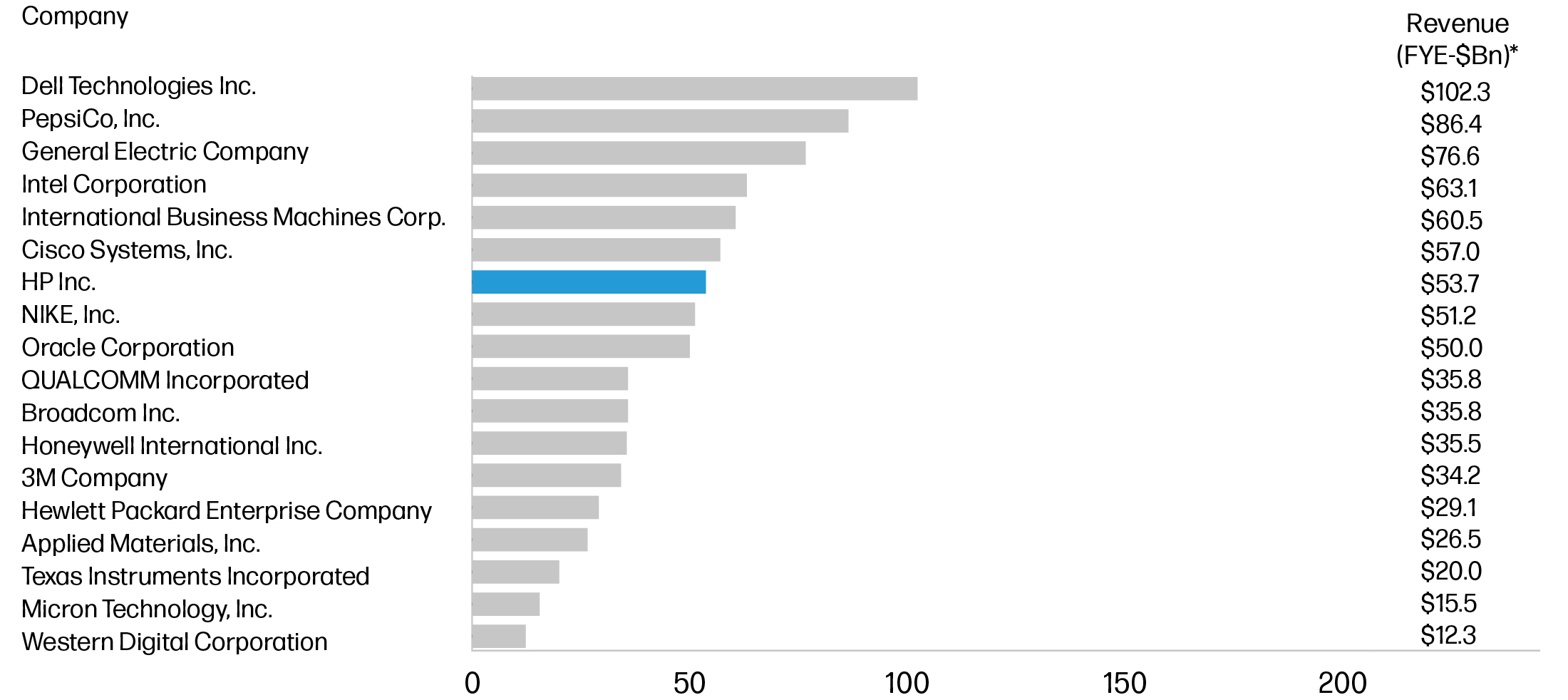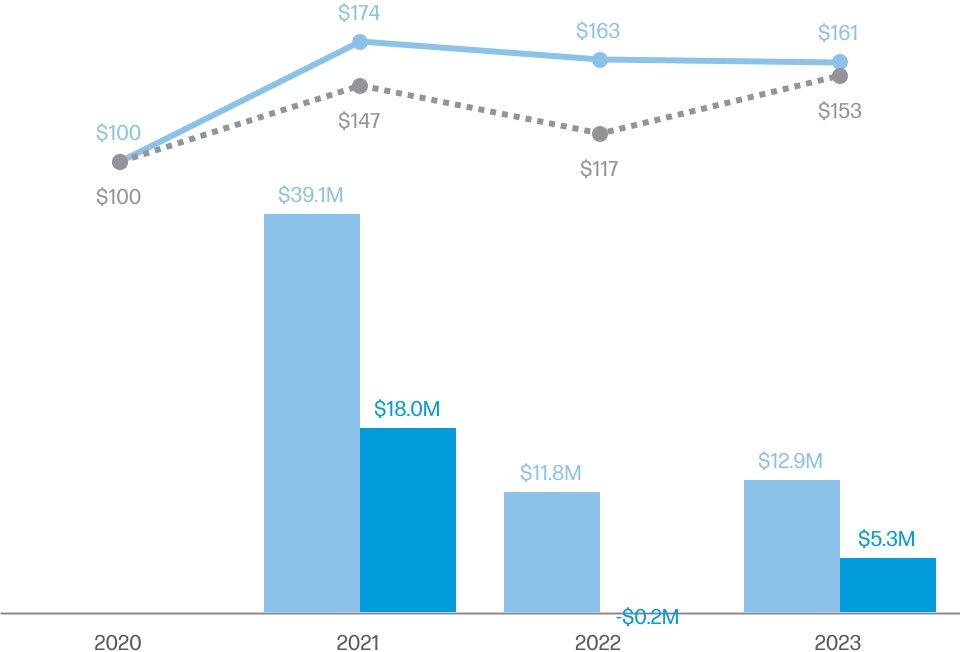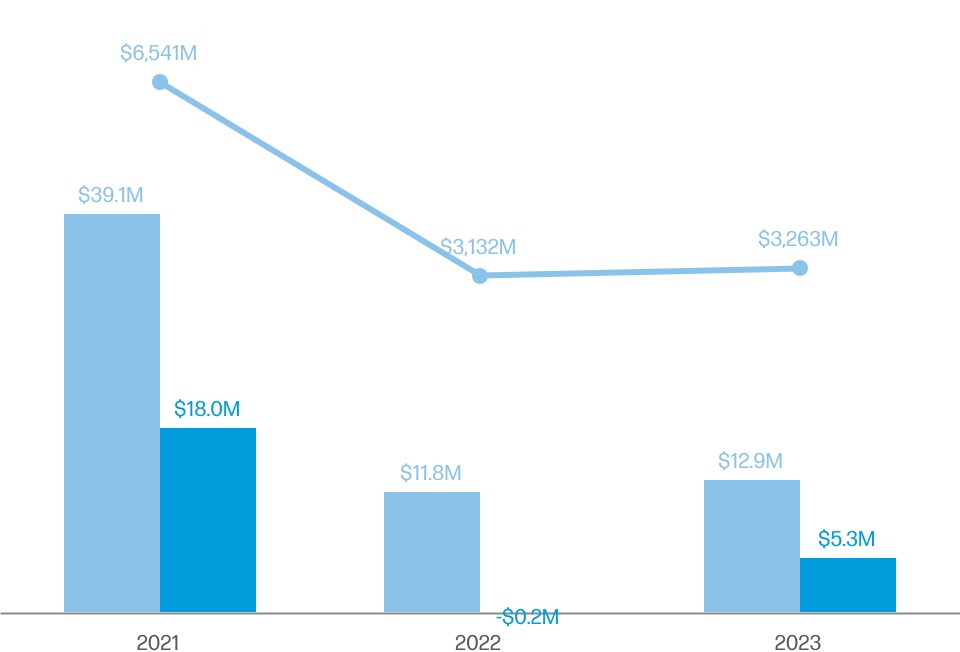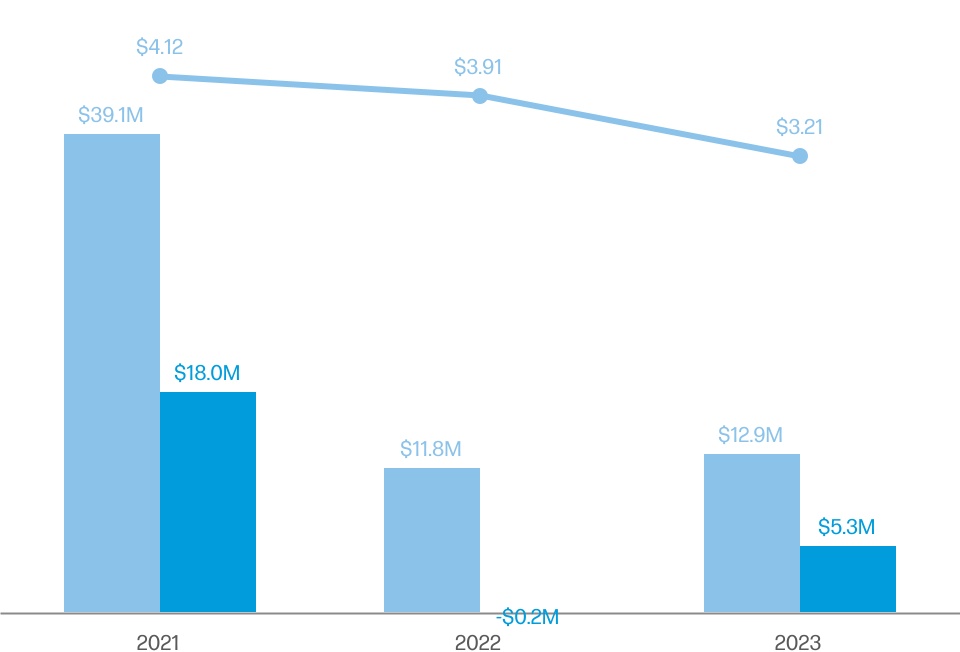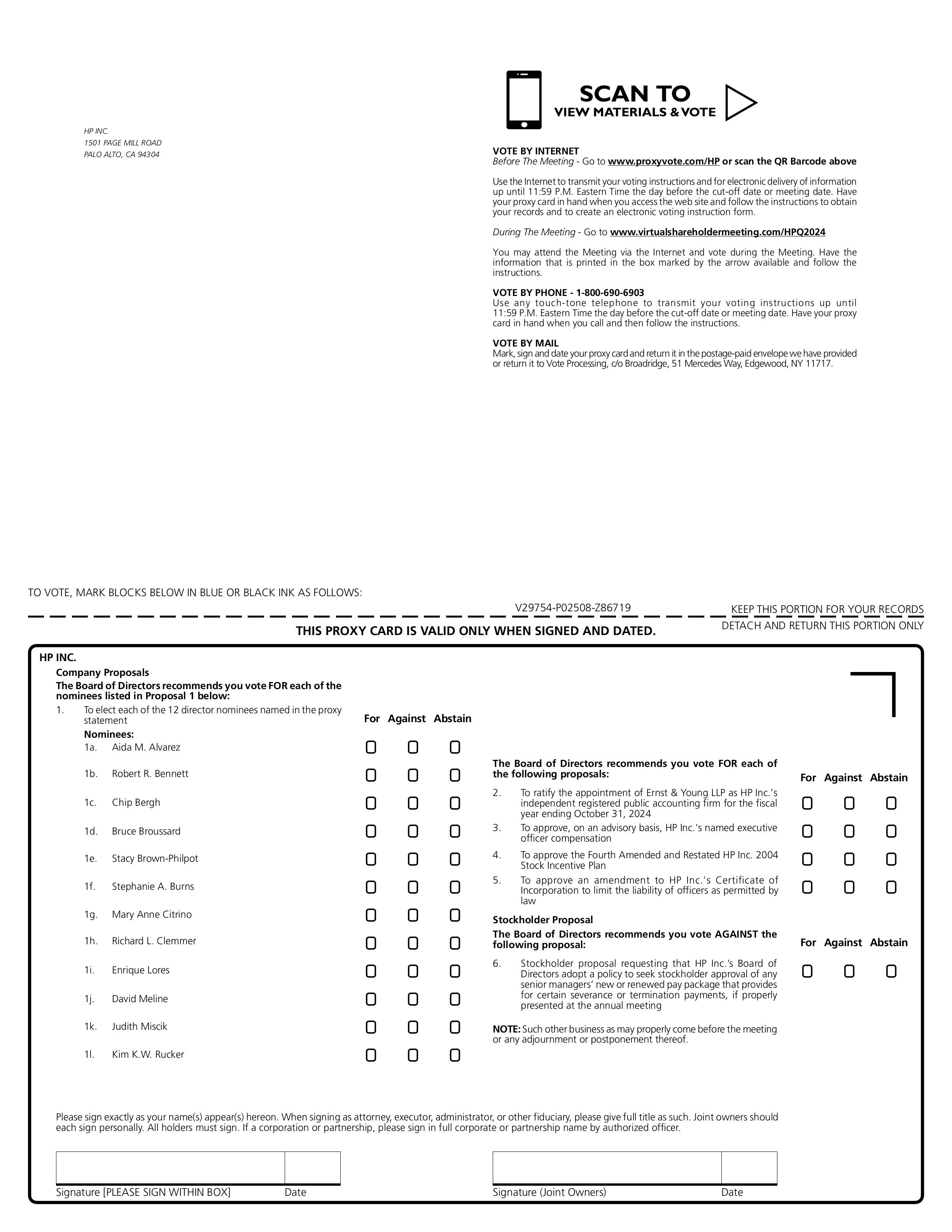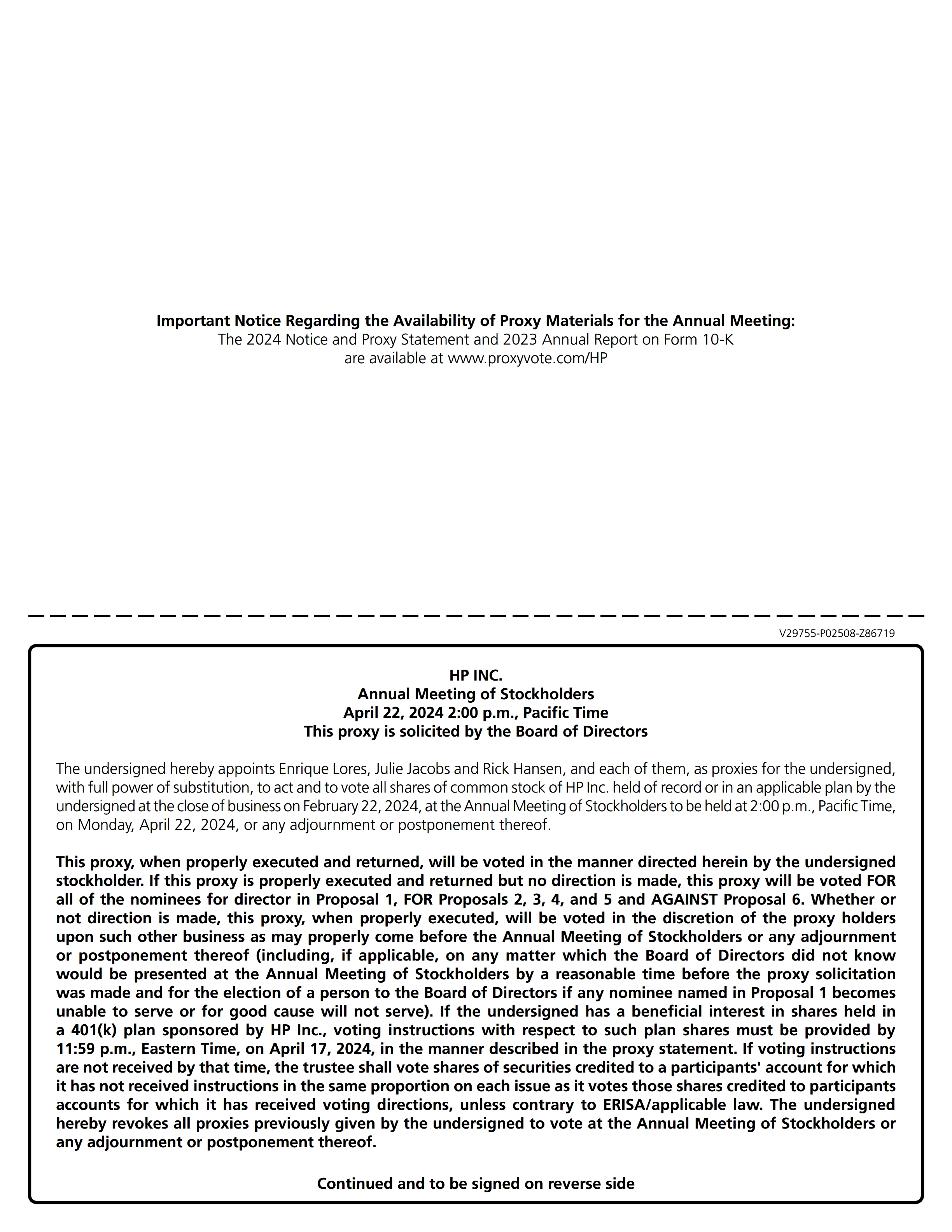0000047217DEF 14AFALSE00000472172022-11-012023-10-31iso4217:USDiso4217:USDxbrli:shares00000472172021-11-012022-10-3100000472172020-11-012021-10-310000047217hpq:EquityAwardsGrantedDuringTheYearMemberecd:PeoMember2022-11-012023-10-310000047217hpq:EquityAwardsGrantedDuringTheYearMemberecd:PeoMember2021-11-012022-10-310000047217hpq:EquityAwardsGrantedDuringTheYearMemberecd:PeoMember2020-11-012021-10-310000047217ecd:PeoMemberhpq:EquityAwardsGrantedDuringTheYearUnvestedMember2022-11-012023-10-310000047217ecd:PeoMemberhpq:EquityAwardsGrantedDuringTheYearUnvestedMember2021-11-012022-10-310000047217ecd:PeoMemberhpq:EquityAwardsGrantedDuringTheYearUnvestedMember2020-11-012021-10-310000047217hpq:EquityAwardsGrantedInPriorYearsUnvestedMemberecd:PeoMember2022-11-012023-10-310000047217hpq:EquityAwardsGrantedInPriorYearsUnvestedMemberecd:PeoMember2021-11-012022-10-310000047217hpq:EquityAwardsGrantedInPriorYearsUnvestedMemberecd:PeoMember2020-11-012021-10-310000047217hpq:EquityAwardsGrantedDuringTheYearVestedMemberecd:PeoMember2022-11-012023-10-310000047217hpq:EquityAwardsGrantedDuringTheYearVestedMemberecd:PeoMember2021-11-012022-10-310000047217hpq:EquityAwardsGrantedDuringTheYearVestedMemberecd:PeoMember2020-11-012021-10-310000047217hpq:EquityAwardsGrantedInPriorYearsVestedMemberecd:PeoMember2022-11-012023-10-310000047217hpq:EquityAwardsGrantedInPriorYearsVestedMemberecd:PeoMember2021-11-012022-10-310000047217hpq:EquityAwardsGrantedInPriorYearsVestedMemberecd:PeoMember2020-11-012021-10-310000047217hpq:EquityAwardsValueOfDividendsOrOtherEarningsPaidAdjustmentMemberecd:PeoMember2022-11-012023-10-310000047217hpq:EquityAwardsValueOfDividendsOrOtherEarningsPaidAdjustmentMemberecd:PeoMember2021-11-012022-10-310000047217hpq:EquityAwardsValueOfDividendsOrOtherEarningsPaidAdjustmentMemberecd:PeoMember2020-11-012021-10-310000047217hpq:EquityAwardsGrantedDuringTheYearMemberecd:NonPeoNeoMember2022-11-012023-10-310000047217hpq:EquityAwardsGrantedDuringTheYearMemberecd:NonPeoNeoMember2021-11-012022-10-310000047217hpq:EquityAwardsGrantedDuringTheYearMemberecd:NonPeoNeoMember2020-11-012021-10-310000047217ecd:NonPeoNeoMemberhpq:ChangeInPensionValueAndNonqualifiedDeferredCompensationEarningsMember2022-11-012023-10-310000047217ecd:NonPeoNeoMemberhpq:ChangeInPensionValueAndNonqualifiedDeferredCompensationEarningsMember2021-11-012022-10-310000047217ecd:NonPeoNeoMemberhpq:ChangeInPensionValueAndNonqualifiedDeferredCompensationEarningsMember2020-11-012021-10-310000047217ecd:NonPeoNeoMemberhpq:EquityAwardsGrantedDuringTheYearUnvestedMember2022-11-012023-10-310000047217ecd:NonPeoNeoMemberhpq:EquityAwardsGrantedDuringTheYearUnvestedMember2021-11-012022-10-310000047217ecd:NonPeoNeoMemberhpq:EquityAwardsGrantedDuringTheYearUnvestedMember2020-11-012021-10-310000047217hpq:EquityAwardsGrantedInPriorYearsUnvestedMemberecd:NonPeoNeoMember2022-11-012023-10-310000047217hpq:EquityAwardsGrantedInPriorYearsUnvestedMemberecd:NonPeoNeoMember2021-11-012022-10-310000047217hpq:EquityAwardsGrantedInPriorYearsUnvestedMemberecd:NonPeoNeoMember2020-11-012021-10-310000047217hpq:EquityAwardsGrantedDuringTheYearVestedMemberecd:NonPeoNeoMember2022-11-012023-10-310000047217hpq:EquityAwardsGrantedDuringTheYearVestedMemberecd:NonPeoNeoMember2021-11-012022-10-310000047217hpq:EquityAwardsGrantedDuringTheYearVestedMemberecd:NonPeoNeoMember2020-11-012021-10-310000047217hpq:EquityAwardsGrantedInPriorYearsVestedMemberecd:NonPeoNeoMember2022-11-012023-10-310000047217hpq:EquityAwardsGrantedInPriorYearsVestedMemberecd:NonPeoNeoMember2021-11-012022-10-310000047217hpq:EquityAwardsGrantedInPriorYearsVestedMemberecd:NonPeoNeoMember2020-11-012021-10-310000047217hpq:EquityAwardsThatFailedToMeetVestingConditionsMemberecd:NonPeoNeoMember2022-11-012023-10-310000047217hpq:EquityAwardsThatFailedToMeetVestingConditionsMemberecd:NonPeoNeoMember2021-11-012022-10-310000047217hpq:EquityAwardsThatFailedToMeetVestingConditionsMemberecd:NonPeoNeoMember2020-11-012021-10-310000047217hpq:EquityAwardsValueOfDividendsOrOtherEarningsPaidAdjustmentMemberecd:NonPeoNeoMember2022-11-012023-10-310000047217hpq:EquityAwardsValueOfDividendsOrOtherEarningsPaidAdjustmentMemberecd:NonPeoNeoMember2021-11-012022-10-310000047217hpq:EquityAwardsValueOfDividendsOrOtherEarningsPaidAdjustmentMemberecd:NonPeoNeoMember2020-11-012021-10-31000004721712022-11-012023-10-31000004721722022-11-012023-10-31000004721732022-11-012023-10-31000004721742022-11-012023-10-31
UNITED STATES
SECURITIES AND EXCHANGE COMMISSION
Washington, D.C. 20549
SCHEDULE 14A
Proxy Statement Pursuant to Section 14(a) of the
Securities Exchange Act of 1934 (Amendment No. )
| | | | | | | | | | | | | | |
| ☑ | Filed by the Registrant | ☐ | Filed by a Party other than the Registrant | |
| | | | | | | | |
| CHECK THE APPROPRIATE BOX: |
| ☐ | | Preliminary Proxy Statement |
| ☐ | | Confidential, For Use of the Commission Only (as permitted by Rule 14a-6(e)(2)) |
| ☑ | | Definitive Proxy Statement |
| ☐ | | Definitive Additional Materials |
| ☐ | | Soliciting Material Under Rule 14a-12 |
HP Inc.
(Name of Registrant as Specified In Its Charter)
(Name of Person(s) Filing Proxy Statement, if Other Than the Registrant)
| | | | | | | | | | | |
| PAYMENT OF FILING FEE (CHECK ALL BOXES THAT APPLY): |
| ☑ | | No fee required. |
| ☐ | | Fee paid previously with preliminary materials |
| ☐ | | Fee computed on table in exhibit required by Item 25(b) per Exchange Act Rules 14a-6(i)(1) and 0-11 |
| | | |
Message from the Chief Executive Officer
Dear Stockholders:
| | | | | |
Reflecting back on our 2023 fiscal year, there are many reasons to be optimistic about the future of our company. I realize that may sound a bit counter-intuitive, given the external challenges that constrained growth across the industry. We certainly were not immune to these dynamics, with net revenue down 15 percent to $53.7 billion. But when you take a closer look at the underlying health of our business and our progress against our long-term growth priorities, you see a company on the rise. And I’m incredibly proud of the way our team performed last year in a tough environment. We innovated across Personal Systems and Print to strengthen our portfolio. We delivered mid-single-digit growth in our key growth areas, which collectively drove approximately 20 percent of our total company revenue. We demonstrated operational excellence across the business and exceeded our gross annualized structural cost savings target for the year—the combination of which enabled us to deliver strong operating margins. Simply put, it was a year of steady progress. We grew our quarterly non-GAAP operating profit and non-GAAP diluted net earnings per share sequentially throughout our 2023 fiscal year. Our second half results were significantly stronger than the first. And our Future Ready plan is enabling us to better serve our customers while driving long-term sustainable growth and value creation. Innovating in the Age of AI Looking ahead, we see significant opportunities to accelerate innovation and growth in the age of AI. Few technologies have had such a significant impact in such short period of time. The convergence of highly accessible computing power with massive amounts of data and deep learning will create new growth opportunities in our core business, help to accelerate our growth in services and subscriptions, and drive internal productivity. Our biggest opportunity is within Personal Systems. The ability to run generative AI applications on a PC will enable more personalized experiences while offering key advantages versus cloud-based AI applications, including faster speed, better security and privacy protections, and lower cost of implementation. We’re excited to launch our first AI PCs later this year, and we believe the overall PC category growth rate can double over the next three years as we drive market adoption and penetration. Creating the Future of Work In addition to AI, another topic on the mind of many customers today is hybrid work. The truth is, a lot of companies are struggling to keep employees engaged, productive and secure in a post-pandemic world. As IT departments work to overcome these challenges, it is opening the door for us to meet a wider range of customer needs than ever before. This is an enormous opportunity for HP, and we are focused on architecting our portfolio to become the hybrid work solutions leader. HP’s portfolio across computing, printing and video conferencing is uniquely positioned to win in the market. We also have an installed base of more than 350 million end points leveraging data and telemetry—and our ability to run AI applications on top of this data will make us an indispensable partner to companies looking to simplify IT management, improve productivity and security, and create better employee experiences. | |
Our Future Ready plan is enabling us to better serve our customers while driving long-term sustainable growth and value creation.” |
|
| | | | | |
| Message from the Chief Executive Officer | |
| |
| | |
Earning the Trust of our Customers Underpinning all of this is our brand. It’s one of HP’s greatest strengths, and it has stood the test of time because it is trusted by customers and consumers around the world. This is something we will never take for granted, and our teams work hard to earn this trust every single day. This starts with security, as we are continuing to expand our endpoint security solutions to protect a growing number of devices across a growing number of locations. And it extends into our communities through the progress we are making against our Sustainable Impact agenda. More than 60 percent of our 2022 fiscal year revenue was derived from products and services that meet leading environmental standards and reduce our environmental impact―and we will share our latest progress when we release our sustainability report later this year. This work is driving innovation, helping to win deals and receiving widespread recognition—such as being named one of the “Most Sustainable Companies” by Barron’s, one of America’s “Most Just Companies” by JUST Capital and CNBC, and one of the “Best Employers for Diversity” by Forbes. Accelerating Growth Through our Future Ready Plan We are excited about the road ahead as we continue driving progress against our Future Ready plan. As you know, the plan has three key pillars. First and foremost, we are orienting our portfolio around profitable growth—both in our core businesses, as well as the attractive adjacencies we have identified. Throughout 2024, you will see us place a big emphasis on AI to unleash a new category of devices. We will launch new PC and print solutions that enable flexibility, simplicity, security, and sustainability for customers in a hybrid world. And we will shift more of our offerings to subscriptions, which will create greater value for customers and drive recurring revenue for our business. All of this supports our strategy to accelerate in our key growth areas. Collectively, we expect our Hybrid Systems, Gaming, Workforce Solutions, Consumer Subscriptions, Industrial Graphics and 3D businesses to grow to at least $15 billion in revenue by our 2026 fiscal year—with services, software and subscriptions accounting for at least 30% of this mix. Second, we are continuing to develop the operational capabilities needed to support our growth, including a more flexible and resilient supply chain. We are also driving the next phase of our digital transformation, which is being accelerated by AI to automate new processes and workflows. We are continuing to reduce our structural costs, well on our way to delivering $1.6 billion dollars in gross annual run-rate structural savings by the end of our 2025 fiscal year. And we are advancing our sustainability initiatives aligned with the targets we have set. The third pillar of our plan is focused on our people. We continue to strengthen our talent and culture to achieve our goals. We have added several strong executive leaders to support our strategy. We are investing in training and development across the company to ensure our teams have the skills needed to win in our markets. And all of this is rooted in our longtime culture of diversity, equity and inclusion―which helps us to attract and retain top talent from around the world and better understand the needs of the customers we serve. A Compelling Investment Our Future Ready plan supports a clear and compelling investment thesis. We have market-leading portfolios in the PC and Print categories. We have significant opportunities to accelerate in key growth areas where we are currently under-indexed, which will be accretive to our margins over time. We have world-class operational capabilities to deliver on our targets and drive structural cost reductions. And we are committed to a shareholder-friendly capital return strategy. All of this gives us confidence in our ability to deliver sustained revenue, non-GAAP operating profit, non-GAAP diluted net earnings per share, and free cash flow growth. While the external environment will remain volatile, and our progress may not always be linear, we are heading in the right direction and well-positioned for the future. I look forward to continuing to share our progress in the coming quarters. Thank you for the trust you have placed in HP with your investment. |
|
Saludos, Enrique Lores President and CEO |
Message from the Chair
To our Stockholders:
We are pleased to invite you to attend HP Inc.’s annual meeting of stockholders to be held on Monday, April 22, 2024 at 2:00 p.m., Pacific Time. This year’s annual meeting will be a virtual meeting of stockholders, conducted via live audio webcast.
| | | | | |
During fiscal 2023, HP delivered significant progress against our strategic priorities in the face of a challenging external environment. Our performance reinforced the Board’s confidence that our executive team will continue to execute on the initiatives we have set forth, allowing us to capitalize on opportunities when the market improves and new innovations, such as AI, come to the fore. With our market-leading PC and Print business, attractive portfolio of growth businesses and globally trusted brand, we believe HP is well positioned for the future. Importantly, not only have we executed against our business priorities, we have done so while staying true to our values. For example, we were recognized as one of the World’s Most Ethical Companies by Ethisphere for the fourth year in a row. Moreover, we continued our commitment to diversity, equity and inclusion, with women representing approximately 33% of HP’s full time executive positions globally and 45% of our U.S. hires in fiscal 2023 being ethnically diverse. This commitment is also reflected in our Board, with 58% of our Board nominees identifying as gender and/or ethnically diverse and three of our four committee chairs being women. Our Board brings a unique set of perspective, skills, and proven experience enabling us to provide effective oversight and strategic advice to HP’s management. This was most recently illustrated by the appointment of David Meline to our Board in November 2023. David brings significant experience in driving operational performance, scaling growth businesses and delivering strong financial performance across industries, which we believe will be invaluable to HP. Your vote is important. Regardless of whether you participate in the annual meeting, we hope you vote as soon as possible. You may vote by proxy online or by phone, or, if you received paper copies of the proxy materials by mail, you may also vote by mail by following the instructions on the proxy card or voting instruction card. Voting online or by phone, written proxy or voting instruction card ensures your representation at the annual meeting regardless of whether you attend the virtual meeting. For details about how to attend the meeting online, submit questions before or during the meeting, and information on the business to be conducted at the annual meeting, please refer to the accompanying Notice of Annual Meeting and Proxy Statement. Thank you for your ongoing support of, and continued interest in, HP Inc. Sincerely, Chip Bergh
Chair of the Board | |
With our market-leading PC and Print business, attractive portfolio of growth businesses and globally trusted brand, we believe HP is well positioned for the future.” |
|
Notice of Annual Meeting of Stockholders
This notice of annual meeting of HP’s stockholders (the “annual meeting”), proxy statement and form of proxy for HP Inc. (“HP” or the “Company”) are being distributed and made available on or about February 26, 2024.
| | | | | | | | | | | | | | | | | |
| Time and Date
2:00 p.m., Pacific Time, on
Monday, April 22, 2024 | | Place
Online at
www.virtualshareholdermeeting.com/HPQ2024 | | Record Date
February 22, 2024 |
Items of Business
| | | | | | | | | | | | | | |
Board Proposals | Board Recommendation | Page |
1 | To elect the 12 Directors named in this proxy statement | | FOR each
director nominee | |
2 | To ratify the appointment of Ernst & Young LLP as the Company’s independent registered public accounting firm for the fiscal year ending October 31, 2024 | | FOR | 47 |
3 | To approve, on an advisory basis, the Company’s named executive officer compensation (“say on pay” vote) | | FOR | 49 |
4 | To approve the Fourth Amended and Restated HP Inc. 2004 Stock Incentive Plan | | FOR | 83 |
5 | To approve an amendment to the Company’s Certificate of Incorporation to limit the liability of officers as permitted by law. | | FOR | 90 |
Stockholder Proposal | | | |
6 | To consider and vote on a stockholder proposal described in this proxy statement, if properly presented at the meeting | | AGAINST | 94 |
| | | | |
Such other business as may properly come before the meeting | | | |
| | | | | |
| Voting | Virtual Meeting Admission Stockholders of record as of February 22, 2024, will be able to participate in the annual meeting by visiting our annual meeting website at www.virtualshareholdermeeting.com/HPQ2024. To participate in the annual meeting, you will need the 16-digit control number included on your notice of Internet availability of the proxy materials, proxy card or on the instructions that accompanied your proxy materials. If you have any questions about your control number, please contact the bank, broker, or other nominee that holds your shares. The annual meeting will begin promptly at 2:00 p.m., Pacific Time. Online check-in will begin at 1:30 p.m., Pacific Time, and you should allow ample time for the online check-in procedures. Annual Meeting Website The online format used by HP Inc. for the annual meeting also allows us to communicate more effectively with you. Stockholders can submit questions in advance of the annual meeting, by visiting our annual meeting website at www.proxyvote.com/HP. Stockholders can also access copies of our proxy statement and annual report at the annual meeting website. Adjournments and Postponements Any action on the items of business described above may be considered at the annual meeting at the time and on the date specified above or at any time and date to which the annual meeting may be properly adjourned or postponed. By order of the Board of Directors, Rick Hansen
SVP, Deputy General Counsel, Corporate, and Corporate Secretary |
Internet
www.proxyvote.com/HP
prior to the meeting Telephone
1-800-690-6903 During the meeting please visit
www.virtualshareholdermeeting.com/
HPQ2024 Mail
You can vote by mail by requesting a paper copy of the materials, which will include a proxy card. Return the card to Vote Processing, c/o Broadridge, 51 Mercedes Way, Edgewood, NY 11717. |
|
|
Important Notice Regarding the Availability of Proxy Materials for the Annual Meeting of Stockholders to Be Held on April 22, 2024. The definitive proxy statement and HP Inc.’s 2023 Annual Report are available electronically at www.proxyvote.com/HP. |
|
| | | | | |
| Notice of Annual Meeting of Stockholders |
| |
Your vote is very important. Regardless of whether you plan to virtually attend the annual meeting, we hope you will vote as soon as possible. You may vote your shares over the Internet or via a toll-free telephone number. If you received a paper copy of a proxy or voting instruction card by mail, you may submit your proxy or voting instruction card for the annual meeting by completing, signing, dating and returning your proxy or voting instruction card in the pre-addressed envelope provided. Stockholders of record and beneficial owners will be able to vote their shares electronically at the annual meeting (other than shares held through the HP Inc. 401(k) Plan, which must be voted prior to the meeting). For specific instructions on how to vote your shares, please refer to the section entitled “Questions and Answers—Voting Information” beginning on page 99 of the proxy statement.
Proxy Statement Summary
The following is a summary of certain key disclosures in our proxy statement. This is only a summary, and it may not contain all the information that is important to you. For more complete information, please review the proxy statement as well as our 2023 Annual Report on Form 10-K. References to “HP,” “the Company,” “we,” “us” or “our” refer to HP Inc.
| | | | | | | | | | | |
| | | |
Item
1 | Election of Directors •11 of our 12 Director nominees are independent, including six women and four director nominees who identify as racially/ethnically diverse. •Our Board is led by an independent Chair. •Key information regarding all 12 of our Board nominees is summarized in the table below. | | The Board recommends a vote FOR each Director nominee |
| |
| Further information beginning on page 14. |
| | | |
| | | | | | | | | | | |
| | | |
Item
2 | Ratification of Independent Registered Public Accounting Firm •The Audit Committee of the Board has selected Ernst & Young LLP to act as HP’s independent registered public accounting firm for the fiscal year ending October 31, 2024 and seeks ratification of the selection. | | The Board recommends a vote FOR this Proposal |
| |
| Further information beginning on page 47. |
| | | |
| | | | | | | | | | | |
| | | |
Item
3 | Advisory Vote to Approve Named Executive Officer Compensation (“Say on Pay” Vote) •Our Board and the HR and Compensation (“HRC”) Committee are committed to an executive compensation program that aligns the interests of our executives with those of our stockholders. To fulfill this mission, we have a pay-for-performance philosophy that drives decisions regarding executive compensation. •Our compensation programs have been structured to balance near-term results with
long-term success, mitigate risks, and enable us to attract, retain, focus, and reward our executive team for delivering stockholder value. | | The Board recommends a vote FOR this Proposal |
| |
| Further information, including an overview of the compensation of our Named Executive Officers (“NEOs”), beginning on page 49. |
| | | |
| | | | | | | | | | | |
| | | |
Item
4 | Approval of Fourth Amended and Restated HP Inc. 2004 Stock Incentive Plan •The approval of the Amended 2004 Plan would make an additional 45,700,000 shares of common stock available for issuance pursuant to share-based compensation awards granted under the plan. •The Board is asking stockholders to approve the Amended 2004 Plan so that we may continue to use stock options, restricted stock, restricted stock units (“RSUs”) and other share-based compensation awards to attract and retain high-quality employees whose interests are aligned with those of our stockholders. | | The Board recommends a vote FOR this Proposal |
| |
| Further information beginning on page 83. |
| | | |
| | | | | | | | | | | |
| | | |
Item
5 | Approval of Amendment to Certificate of Incorporation to Limit the Liability of Officers as Permitted by Law •The approval of an amendment to our Certificate of Incorporation to limit the liability of officers as permitted by a recent amendment to the Delaware General Corporation Law. •The Board is asking stockholders to approve the amendment to our Certificate of Incorporation for the reasons described below under Proposal 5. | | The Board recommends a vote FOR this Proposal |
| |
| Further information beginning on page 90. |
| | | |
| | | | | | | | | | | |
| | | |
Item 6 | Stockholder Proposal: Stockholder Ratification of Termination Pay •This stockholder proposal requests that HP’s Board adopt a policy to seek stockholder approval of any senior managers’ new or renewed pay package that provides for severance or termination payments with an estimated value exceeding 2.99 times the sum of the executive’s base salary plus target short-term bonus. | | The Board recommends a vote AGAINST this Proposal |
| |
| Further information beginning on page 94. |
| | | |
Business Highlights
HP Inc. is a leading global provider of personal computing and other digital access devices, imaging and printing products, and related technologies, solutions, and services. We sell to individual consumers, small- and medium-sized businesses and large enterprises, including customers in the government, health, and education sectors. We have three reportable segments: Personal Systems, Printing and Corporate Investments. The Personal Systems segment offers commercial and consumer desktops and notebooks, workstations, thin clients, commercial mobility devices, retail point of sale systems, displays, hybrid systems (including video conferencing cameras and solutions, headsets, voice and related software capabilities), software, support and services. The Printing segment provides consumer and commercial printer hardware, supplies, solutions and services. Corporate Investments include certain business incubation and investment projects.
For our overall strategy, our priorities are strengthening the core, accelerating our growth businesses, driving digital transformation and driving long-term value creation. We are focused on advancing our leadership in our core personal systems and printing markets, while continuing to modernize these businesses to excel in the hybrid world. We plan to invest in additional growth areas where our brand and IP provide a competitive advantage to disrupt industries. We strive to transform how we work and to become a more digitally powered and data enabled company, and significantly reduce structural costs. We have an incredible channel network, passionate employees and a culture committed to being Future Ready.
| | | | | | | | | | | |
| | | |
| FY23 performance highlights | | |
| | | |
| | | |
| Net revenue | | $4.6 billion
non-GAAP operating profit1 |
| By key segment and business unit | |
| | |
| | |
| | $3.1 billion
non-GAAP free cash flow1 |
| | | | | |
(1)Non-GAAP operating profit and non-GAAP free cash flow are non-GAAP financial measures. Please refer to “Reconciliation of GAAP Measures to Non-GAAP Measures” on page 106 for a description and reconciliation of these non-GAAP financial measures relative to reported GAAP financial measures. (2)Based on CQ3’23 IDC Quarterly Tracker. (3)As of October 31, 2023. | |
|
Market leader
#1
In PCs (ex-China) and Print2 |
|
|
|
Innovation & IP
23k+
Patents |
|
|
|
Scale
170+/58k
Countries/Employees3 |
|
Key Growth Areas
| | | | | | | | | | | | | | |
| | | | |
| | | | |
| Gaming | | Hybrid Systems | | Consumer Subscriptions |
| | | | | | | | | | | | | | |
| | | | |
| | | | |
Industrial Graphics | | Workforce Solutions | | 3D & Personalization |
Future Ready
Enabling increased investment in our key growth areas to drive long term value creation by the end of fiscal 2025
| | |
|
Digital Transformation |
|
|
|
Portfolio Optimization |
|
|
|
Operational Excellence |
|
Sustainable Impact
At HP, we believe how we do things is just as important as what we do. Through our Sustainable Impact program, we incorporate efforts to tackle key issues in Climate, Human Rights, and Digital Equity.
Our strategy
| | | | | | | | |
| | |
| | |
Climate action Taking urgent and decisive action with an aim to achieve net zero carbon emissions across our entire value chain, give back more to forests than we take, and innovate our products and services for a more circular economy. | Human rights Building a culture of equity and empowerment within HP and beyond, where diversity is sought out and celebrated, and where universal human rights are understood and respected. | Digital equity Accelerating equitable access to education, healthcare, and economic opportunity for those who are traditionally excluded so they can participate and thrive in a digital economy. |
| | |
| | |
| | | | | | | | | | | | | | |
| | | | |
For more information about our Sustainable Impact agenda, and to reach our annual Sustainable Impact Report, please see the Sustainability section of our website at https://www.hp.com/us-en/hp-information/sustainable-impact.html. The content of our website is not incorporated by reference into this proxy statement or in any other report or document we file with the Securities and Exchange Commission (the “SEC”), and any references to our website are intended to be inactive textual references only. Our Sustainable Impact Report includes disclosures aligned with the following ESG frameworks: Sustainability Accounting Standards Board (SASB), Task Force on Climate-Related Financial Disclosure (TCFD), Global Reporting Initiative (GRI), and the World Economic Forum International Business Council (WEF IBC). The Board and its committees actively oversee HP’s Sustainable Impact, strategy and related risks. For information regarding the Board’s role in overseeing HP’s Sustainable Impact, please refer to “Spotlight on Board Oversight of ESG” on page 37. |
| | | | |
Recognition
| | | | | | | | |
| | |
Ranked 3rd in America for environmental, social and governance performance | “A List” designation for its score in Climate and Water and remains the only company in the technology sector to report on its forest rating | Named one of the 100 Most Sustainable Corporations in the World for the 8th year in a row |
| | |
| | |
Recognized as one of the World’s Most Ethical Companies for the 4th year in a row | Recognized for the 6th year in a row (3rd year for Sustained Excellence) | Member of the DJSI World and DJSI North America Indices in 2023, ranking 1st in the industry and listed on the world index for the 12th year in a row |
| | |
| | |
Received a score of 100% on the Human Rights Campaign 2022 Corporate Equality Index for LGBTQ Equality | Included in the top 10 companies by revenue for clean energy for the 5th year in a row | Included in the CNBC JUST 100 list for the sixth consecutive year, ranking first in the technology hardware category |
| | | | | |
| |
HP earned a Platinum Recognition level from EcoVadis for the 14th consecutive year that HP has been recognized for its sustainability practices | Named one of the Best Top Hispanic Employers |
* “World’s Most Ethical Companies” and “Ethisphere” names and marks are registered trademarks of Ethisphere LLC.
Participating in Our Annual Meeting
HP’s current virtual format allows stockholders to submit questions and comments in our stockholder forum both before and during the meeting. We respond to all stockholder submissions received through the forum in writing on our investor relations website.
The virtual meeting format allows our stockholders to engage with us no matter where they live in the world and is accessible and available on any internet-connected device, be it a phone, a tablet, or a computer. We are able to reach a base of stockholders that is broader than just those who can travel to an in-person meeting. The virtual meeting gives us the opportunity to respond in thoughtful detail to every question our stockholders may have, rather than just the limited number of questions stockholders are able to ask at in-person meetings, which are answered without an opportunity for further information gathering or meaningful reflection. All of these benefits of a virtual meeting allow all of our stockholders to engage with us.
Stockholders can submit questions in advance of the annual meeting by visiting our annual meeting website at www.proxyvote.com/HP. All questions received, both during and prior to the meeting, are presented as submitted, uncensored and unedited except for certain personal details for data protection purposes. If we receive substantially similar questions, we will group such questions together and provide a single response to avoid repetition. Please visit our HP investor events page at https://investor.hp.com to read previously answered questions.
| | | | | | | | |
| | |
Please join us for our Virtual Annual Meeting at www.virtualshareholder meeting.com/HPQ2024. | To participate in the annual meeting, you will need the 16-digit control number included on your notice of Internet availability of the proxy materials, on your proxy card or on the instructions that accompanied your proxy materials. | |
| | |
We will have technicians ready to assist you with any technical difficulties you may have accessing the virtual meeting. If you encounter any difficulties accessing the virtual meeting during the check-in or meeting time, please call:
| | | | | |
1-855-449-0991 (Toll-free)
1-720-378-5962 (Toll line) | |
Table of Contents
| | | | | | | | | | | | | | | | | | | | |
| | | | | |
| | | | | | 33 |
| | | | | | 41 |
| | | | | | 42 |
| | 26 | | | | 44 |
| | 28 | | | | |
| | | | | | |
| | | | | 47 |
| | 47 | | | | 48 |
| | 47 | | | | 48 |
| | 47 | | | | |
| | |
| | | | | 49 |
| | 49 | | | | 83 |
| | 49 | | | | 83 |
| | 50 | | | | |
| | 66 | | | | |
| | 67 | | | | |
| | | | | | |
| | | | | 90 |
| | | | | | 90 |
| 90 | | | | 91 |
| | 90 | | | | 91 |
| | | | | | |
| | | | | 92 |
| | 92 | | | | |
| | |
| | | | | 94 |
| | 94 | | | | 95 |
| | 94 | | | | 96 |
| | |
| | | 97 |
| | 97 | | | | |
| | | | | | |
| | | 105 |
| | | | | | |
| | 106 |
| | | | | | |
| 107 |
Corporate Governance and Board of Directors
| | | | | | | | | | | |
| | |
| Board proposal no. 1 | |
| | |
| | |
| Election of directors | |
| | |
| | | |
| | The board recommends a vote for each director nominee. | |
| | | |
The Board of Directors of HP Inc. (the “Board”) currently consists of 14 members (the “Directors”). On the recommendation of the Nominating, Governance and Social Responsibility (“NGSR”) Committee, the Board has nominated the 12 persons named below for election as Directors this year, each to serve for a one-year term and until the Director’s successor is elected and qualified or, if earlier, until his or her resignation or removal. Mr. Banerji and Dr. Suresh are not standing for re-election at this annual meeting. As a result, Mr. Banerji and Dr. Suresh will each step down from the Board and the size of the Board will be reduced to 12 directors, effective at the annual meeting.
Vote Required
Each Director nominee who receives more “FOR” votes than “AGAINST” votes representing shares of HP common stock present in person or represented by proxy and entitled to be voted at the annual meeting will be elected.
If you sign your proxy card but do not give instructions with respect to voting for Directors, your shares will be voted by Enrique Lores, Julie Jacobs and Rick Hansen (or any one of them), as proxy holders, FOR the election of all 12 Board nominees. If you wish to give specific instructions with respect to voting for Directors, you may do so by indicating your instructions when you vote via Internet or by telephone, or on your proxy card or voting instruction card.
Director Election Voting Standard and Resignation Policy
We have adopted a policy whereby any incumbent Director nominee who receives a greater number of votes “AGAINST” his or her election than votes “FOR” such election will tender his or her offer of resignation for consideration by the NGSR Committee. The NGSR Committee will then make a recommendation to the Board regarding the appropriate response to such an offer of resignation.
Who We Are
Overview
Our Directors bring a diverse mix of highly relevant and complementary skills, experiences and backgrounds, which facilitates strong oversight of HP’s management and HP’s strategy. In November 2023, David Meline, who has served as Chief Financial Officer at two global companies in the biotechnology and pharmaceutical industries, joined the Board. Mr. Meline brings to the Board significant experience driving operational performance, scaling growth businesses and delivering strong financial performance across industries, which the Board believes will be valuable as HP seeks to scale key growth areas of its business.
| | | | | |
| Corporate Governance and Board of Directors |
| |
Our Director Nominees
| | | | | | | | | | | | | | | | | |
| Name and principal occupation | Age | HP director
since | Committees | Other current public company/public registrant boards |
| | | | | |
| Aida M. Alvarez Independent
Consultant; Former Administrator, U.S. Small Business
Administration & Presidential Cabinet Member | 74 | 2016 | | Stride, Inc.
Fastly, Inc.
Bill.com Holdings, Inc. |
| | | | | |
| | | | | |
| Robert R. Bennett Independent
Managing Director, Hilltop Investments, LLC | 65 | 2013 | | Liberty Media Corporation |
| | | | | |
| | | | | |
| Chip Bergh  Independent Independent Former President and Chief Executive Officer, Levi Strauss & Co. | 66 | 2015 | | Levi Strauss & Co. |
| | | | | |
| | | | | |
| Bruce Broussard Independent
President and Chief Executive Officer, Humana Inc. | 61 | 2021 | | Humana Inc. |
| | | | | |
| | | | | |
| Stacy Brown-Philpot Independent
Founder and Managing Director, Cherryrock Capital | 48 | 2015 | | Nordstrom, Inc. |
| | | | | |
| | | | | |
| Stephanie A. Burns Independent
Former Chief Executive Officer and Chairman, Dow Corning | 69 | 2015 | | Corning Incorporated
Kellanova Company |
| | | | | |
| | | | | |
| Mary Anne Citrino Independent
Senior Advisor and former Senior Managing Director, Blackstone | 64 | 2015 | | Alcoa Corporation |
| | | | | |
| | | | | |
| Richard L. Clemmer Independent
Chairman, Privafy, Inc. | 72 | 2020 | | Aptiv PLC
Seagate Technology Holdings plc |
| | | | | |
| | | | | |
| Enrique Lores
President and Chief Executive Officer, HP Inc. | 58 | 2019 | | PayPal Holdings, Inc. |
| | | | | |
| | | | | |
| David Meline Independent
Former Chief Financial Officer, Moderna Inc. | 66 | 2023 | | ABB Ltd. Pacific Biosciences of California, Inc. |
| | | | | |
| | | | | |
| Judith “Jami” Miscik Independent
Senior Advisor, Lazard Ltd. | 65 | 2021 | | General Motors Company
Morgan Stanley |
| | | | | |
| | | | | |
| Kim K.W. Rucker Independent
Former Executive Vice President, General Counsel and Secretary of Andeavor | 57 | 2021 | | Celanese Corporation
Lennox International Inc.
Marathon Petroleum Corporation |
| | | | | |
Committees
| | | | | | | | | | | | | | | | | |
| Audit Committee | | HR and Compensation Committee | | Chair |
| Finance, Investment and Technology Committee | | Nominating, Governance and Social Responsibility Committee | | |
| | | | | |
| Corporate Governance and Board of Directors | |
| |
Snapshot of Director Nominees
| | | | | | | | | | | | | | | | | | | | | | | | | | | | | |
| Board Refreshment | | Gender | | Independence | |
| | | | | | | | | |
| 5 |
New directors since 2019 | | 3 out of 4 |
committee chairs are women | | 92% |
of the Board is Independent | |
| | | | | | | | | |
| | | | | | |
| | | | | | | | | |
| | | | | | | | | | | |
| | | |
| Tenure | | | |
| | | |
5.6 years is the average tenure | |
| |
0-3 years | | 4 | |
| 4-7 years | | 2 | |
| 8-12 years | | 6 | |
| | | |
| Age | | | |
| | | |
64 years old is the average age | | |
48-60 | | 3 | |
| 61-65 | | 4 | |
66-74 | | 5 | |
| | | | | | | | | | | |
| | | |
Skills and Qualification | | |
| Current or Former CEO | | Human Capital Management |
| Business and Management | | International Business and Affairs |
| Customer Experience | | Operations |
| Disruptive Innovation | | Risk Management |
| Environmental and Social Responsibility | | Strategic Transactions; M&A |
| Finance and Capital Allocation | | Strategy |
| Government and Government Affairs | | Technology, Cybersecurity and Science |
| | | |
| | | | | |
| Corporate Governance and Board of Directors |
| |
Skills, Experience and Attributes of Our Director Nominees
| | | | | | | | | | | | | | | | | | | | | | | | | | | | | | | | | | | | | | |
| | | | | | | | | | | | |
| Current or former CEO | | | | | | | | | | | | |
Business and management HP requires a Board well-versed in navigating complexity and capitalizing on business opportunities to further our innovation and growth. | | | | | | | | | | | | |
Customer experience HP’s customers are the foundation of our mission – we continually seek to better serve our customer base with products and solutions that inspire and innovate. | | | | | | | | | | | | |
Disruptive innovation We continually seek to reinvent the Print and PC industries to deliver amazing innovative experiences to our customers – having disruptive innovators on our Board helps inform our strategy. | | | | | | | | | | | | |
Environmental and social responsibility Experience in environmental and social responsibility related issues and topics strengthens the Board’s oversight of HP’s policies and programs relating to these issues and reinforces HP’s commitment to sustainability and social responsibility. | | | | | | | | | | | | |
Finance and capital allocation It is essential that we have Directors with strong financial acumen and experience to provide sound oversight and guide our investment strategies and capital allocation. | | | | | | | | | | | | |
Government and government affairs Government and government affairs experience offers us insight into the regulatory environment of the many jurisdictions in which we operate, their legislative and administrative priorities, and the potential implications for our business. | | | | | | | | | | | | |
Human capital management Experience in talent development, managing compensation, overseeing inclusion and diversity efforts, and establishing culture strengthens the Board’s oversight of HP’s key human capital management strategies and programs. | | | | | | | | | | | | |
International business and affairs HP operates in over 170 countries worldwide, making international business experience a vital perspective on our Board and enabling us to succeed in the many markets in which we operate. | | | | | | | | | | | | |
Operations HP operates one of the world’s largest supply chains – we benefit from Directors who have successfully led complex operations and can help us to optimize our business model. | | | | | | | | | | | | |
Risk management Experience identifying, assessing and managing a broad spectrum of risks enables directors to effectively oversee the most significant risks facing HP. | | | | | | | | | | | | |
Strategic transactions; M&A HP benefits from having Directors with experience leading organizations through significant strategic transactions, including mergers, acquisitions and divestitures. | | | | | | | | | | | | |
Strategy The dynamic and fast-moving markets in which HP operates globally require a Board with strong strategic insights gained through multi-faceted and challenging prior experiences. | | | | | | | | | | | | |
Technology, cybersecurity and science With our deep history of innovation and our reliance on cutting edge R&D, science and engineering, and the importance of cybersecurity to our business, we know that backgrounds in technology and user experience, cybersecurity policy, governance and risk management, and science and design, add valuable and vital components to our Board dialogue. | | | | | | | | | | | | |
| Independent | | | | | | | | | | | | |
| Women | | | | | | | | | | | | |
| Racially/Ethnically diverse | | | | | | | | | | | | |
| Tenure (including Hewlett-Packard Company) | 8 | 11 | 8 | 3 | 8 | 8 | 8 | 4 | 4 | 0 | 3 | 2 |
| | | | | |
| Corporate Governance and Board of Directors | |
| |
Biographies of Director Nominees
The biographies describe each Director nominee’s qualifications and relevant experience. The biographies include key qualifications, skills, and attributes most relevant to the decision to nominate candidates to serve on the Board.
| | | | | | | | |
Current role Consultant Current public company boards •HP •Stride, Inc. •Fastly, Inc. •Bill.com Holdings, Inc. Prior public
company boards •Wal-Mart Stores, Inc. •Opportun Financial Corporation •UnitedHealth Group Inc. | Aida M. Alvarez Independent |
| |
| Age: 74 | HP Board Committees: HR and Compensation, Nominating, Governance and Social Responsibility Committee |
| Director since: 2016 |
| |
| |
Qualifications: Prior Business and Other Experience •Founding Chair, Latino Community Foundation (since 2003) •Administrator, U.S. Small Business Administration (1997–2001) •Director, Office of Federal Housing Enterprise Oversight (1993–1997) •Vice President, First Boston Corporation and Bear Stearns & Co. (prior to 1993) Other key qualifications The Honorable Aida Alvarez brings to the Board a wealth of expertise in media, public affairs, finance, and government. She led important financial and government agencies and served in the Cabinet of U.S. President William J. Clinton as Administrator of the U.S. Small Business Administration. She has also been a public finance executive, has chaired a prominent philanthropic organization and was an award-winning journalist. The Board also benefits from Ms. Alvarez’s knowledge of investment banking and finance. Skills Business and Management, Environmental and Social Responsibility, Finance and Capital Allocation, Government and Government Affairs, Strategy |
| | |
| | | | | |
| Corporate Governance and Board of Directors |
| |
| | | | | | | | |
Current role Managing Director, Hilltop Investments, LLC, a private investment company (since 2005) Current public company boards •HP •Liberty Media Corporation Prior public
company boards •Warner Bros. Discovery, Inc. •Sprint Corporation •Demand Media, Inc. •Discovery Holding Company •Liberty Interactive Corporation •Sprint Nextel Corporation | Robert R. Bennett Independent |
| |
| Age: 65 | HP Board Committees: Audit, Finance, Investment and Technology Committee |
| Director since: 2013 |
| |
| |
Qualifications: Prior Business and Other Experience •President, Discovery Holding Company (2005–2008) •President and Chief Executive Officer, Liberty Media Corporation (1997–2005) •Served in a variety of other executive roles at Liberty Media between 1990 and 1997, including as its principal financial officer from 1991 until 1997 Other key qualifications Mr. Bennett brings to the Board in-depth knowledge of the media and telecommunications industry and his knowledge of the capital markets and other financial and operational matters. Additionally, as a result of his positions at Liberty Media, Mr. Bennett brings experience leading organizations through significant strategic transactions, including acquisitions, divestitures and integration. Mr. Bennett also has an in-depth understanding of finance and has held various financial management positions during his career including serving as CFO of a public company. Skills Business and Management, Finance and Capital Allocation, Human Capital Management, International Business and Affairs, Operations, Risk Management, Strategic Transactions; M&A, Strategy, Technology, Cybersecurity and Science |
| |
| | | | | | | | |
Current role Former President and Chief Executive Officer of Levi Strauss & Co., an apparel/retail company (September 2011 - January 2024) Current public company boards •HP •Levi Strauss & Co. Prior public
company boards •VF Corporation | Chip Bergh Chair, Independent |
| |
| Age: 66 | HP Board Committees: HR and Compensation, Nominating, Governance and Social Responsibility Committee |
Director since: 2015 Chair since: 2017 |
| |
| |
Qualifications: Prior Business and Other Experience •Group President, Global Male Grooming, Procter & Gamble Co. (2009–September 2011) •In 28 years at Procter & Gamble, Mr. Bergh served in a variety of executive roles, including managing business in multiple regions worldwide Other key qualifications Mr. Bergh brings to the Board extensive experience in executive leadership at large global companies and international business management. From his more than 40 years at Levi Strauss and Procter & Gamble, Mr. Bergh has a strong operational and strategic background with significant experience in brand management. He also brings public company governance experience as a board member and committee member of other public and private companies. Skills Business and Management, Customer Experience, Environmental and Social Responsibility, Finance and Capital Allocation, Human Capital Management, International Business and Affairs, Operations, Risk Management, Strategic Transactions; M&A, Strategy, Technology, Cybersecurity and Science |
| |
| | | | | |
| Corporate Governance and Board of Directors | |
| |
| | | | | | | | |
Current role President, Chief Executive Officer, and Director of Humana Inc., a healthcare company (CEO since 2013) Current public company boards •HP •Humana Inc. Prior public
company boards •KeyCorp | Bruce Broussard Independent |
| |
| Age: 61 | HP Board Committees: Nominating, Governance and Social Responsibility, HR and Compensation Committee |
| Director since: 2021 |
| |
| |
Qualifications: Prior Business and Other Experience •Chief Executive Officer, McKesson Specialty/US Oncology, Inc. (January 2008–December 2011) •In 11 years at US Oncology, Inc., which was acquired by McKesson in December 2010, served in a number of senior executive roles, including Chief Financial Officer, President, Chief Executive Officer and Chairman of the Board Other key qualifications Mr. Broussard brings to the Board extensive experience in executive leadership at large global companies and international business management. From his experience at Humana and US Oncology, Mr. Broussard has significant expertise in the healthcare and health technology sectors. He also brings public company governance experience as a board member and committee member of other public companies. Skills Business and Management, Customer Experience, Environmental and Social Responsibility, Finance and Capital Allocation, Government and Government Affairs, Human Capital Management, International Business and Affairs, Operations, Risk Management, Strategic Transactions; M&A, Strategy, Technology, Cybersecurity and Science |
| |
| | | | | | | | |
Current role Founder and Managing Director; Cherryrock Capital
(since 2023) Current public company boards •HP •Nordstrom, Inc. Prior public
company boards •None | Stacy Brown-Philpot Independent |
| |
Age: 48 | HP Board Committees: Audit, Nominating, Governance and Social Responsibility Committee |
Director since: 2015 |
| |
| |
Qualifications: Prior Business and Other Experience •Member of Investment Committee, Softbank Opportunity Fund (June 2020-June 2023) •Chief Executive Officer, TaskRabbit, an online labor interface company (April 2016–August 2020) •Chief Operating Officer, TaskRabbit (January 2013–April 2016) •Entrepreneur-in-Residence, Google Ventures, the venture capital investment arm of Google, Inc., a technology company (“Google”) (May 2012–December 2012) •Senior Director of Global Consumer Operations, Google (2010–May 2012) •Prior to 2010, Ms. Brown-Philpot served in a variety of Director-level positions at Google •Prior to joining Google in 2003, Ms. Brown-Philpot served as a senior analyst and senior associate at the financial firms Goldman Sachs and PwC Other key qualifications Ms. Brown-Philpot brings to the Board extensive operational, analytical, financial, and strategic experience. In addition to her role as CEO of TaskRabbit from 2016 to 2020, Ms. Brown-Philpot’s decade of experience leading various operations at Google and her prior financial experience from her roles at Goldman Sachs and PwC provide unique operational and financial expertise to the Board. Skills Business and Management, Customer Experience, Disruptive Innovation, Environmental and Social Responsibility, Finance and Capital Allocation, Human Capital Management, International Business and Affairs, Operations, Risk Management, Strategy, Technology, Cybersecurity and Science |
| |
| | | | | |
| Corporate Governance and Board of Directors |
| |
| | | | | | | | |
Current role Director Current public company boards •HP •Corning Incorporated •Kellanova Company Prior public
company boards •GlaxoSmithKline plc •Manpower, Inc. | Stephanie A. Burns Independent |
| |
Age: 69 | HP Board Committees: Finance, Investment and Technology, HR and Compensation Committee (Chair) |
Director since: 2015 |
| |
| |
Qualifications: Prior Business and Other Experience •Chief Executive Officer, Dow Corning Corp., a silicon-based manufacturing company (2004–May 2011) •President, Dow Corning (2003–November 2010) •Executive Vice President, Dow Corning (2000–2003) Other key qualifications Dr. Burns has more than 30 years of global innovation and business leadership experience and brings significant expertise in scientific research, product development, issues management, science and technology leadership, and business management to the Board. Her leadership experience includes growing Dow Corning Corporation through materials innovation, investing in solar applications and expanding into emerging markets. Dr. Burns also brings public company governance experience to the Board as a member of boards and board committees of other public companies. Skills Business and Management, Customer Experience, Environmental and Social Responsibility, Finance and Capital Allocation, Human Capital Management, International Business and Affairs, Operations, Risk Management, Strategic Transactions; M&A, Strategy, Technology, Cybersecurity and Science |
| |
| | | | | | | | |
Current role Senior Advisor and former Senior Managing Director, Blackstone, an investment firm
(since 2004) Current public company boards •HP •Alcoa Corporation Prior public
company boards •Health Net, Inc. •Dollar Tree Inc. •Barclays •Ahold Delhaize | Mary Anne Citrino Independent |
| |
Age: 64 | HP Board Committees: Audit (Chair), Finance, Investment and Technology Committee |
Director since: 2015 |
| |
| |
Qualifications: Prior Business and Other Experience •Managing Director, Global Head of Consumer Products Investment Banking Group, and Co-head of Health Care Services Investment Banking, Morgan Stanley (1986–2004) Other key qualifications The Board benefits from Ms. Citrino’s extensive experience advising a broad range of clients in the consumer products industry through her roles at Blackstone. In addition, Ms. Citrino’s more than 30-year career as an investment banker provides the Board with substantial knowledge regarding business operations and strategy, as well as valuable financial and investment expertise. She also brings public company governance experience as a member of boards and board committees of other public companies. Skills Business and Management, Finance and Capital Allocation, International Business and Affairs, Risk Management, Strategic Transactions; M&A, Strategy |
| |
| | | | | |
| Corporate Governance and Board of Directors | |
| |
| | | | | | | | |
Current role Chairman, Privafy, Inc. (since January 2019) Current public company boards •HP •Aptiv PLC •Seagate Technology Holdings plc Prior public
company boards •NCR Corporation •NXP Semiconductors N.V. •i2 Technologies, Inc. | Richard L. Clemmer Independent |
| |
Age: 72 | HP Board Committees: Audit, Finance, Investment and Technology Committee (Chair) |
Director since: 2020 |
| |
| |
Qualifications: Prior Business and Other Experience •Chief Executive Officer and Executive Director, NXP Semiconductors N.V., a semiconductor company (January 2009–May 2020) •Senior Advisor, Kohlberg Kravis Roberts & Co. (May 2007–December 2008) •President and Chief Executive Officer, Agere Systems Inc. (October 2005–April 2007) Other key qualifications Mr. Clemmer brings to the Board significant leadership experience in the high tech industry, including experience with semiconductor, storage, e-Commerce, and software companies, and brings valuable experience leading organizations through strategic transactions. In his roles at NXP Semiconductors and Agere Systems, Mr. Clemmer oversaw the successful execution of a number of key strategic transactions, including the acquisition and integration of several companies and business units. Skills Business and Management, Customer Experience, Disruptive Innovation, Finance and Capital Allocation, Human Capital Management, International Business and Affairs, Operations, Risk Management, Strategic Transactions; M&A, Strategy, Technology, Cybersecurity and Science |
| |
| | | | | | | | |
Current role President and Chief Executive Officer, HP (since November 2019) Current public company boards •HP •PayPal Holdings, Inc. Prior public
company boards •None | Enrique Lores President, Chief Executive Officer and Director |
| |
Age: 58 | HP Board Committees: N/A |
Director since: 2019 |
| |
| |
Qualifications: Prior Business and Other Experience •President, Imaging and Printing Solutions, HP Inc. (November 2015–October 2019) •Separation Leader, Hewlett-Packard Company (2014–October 2015) •Senior Vice President & General Manager, Business Personal Systems, Hewlett-Packard Company
(2013–2014) •Senior Vice President, Worldwide Customer Support & Services, Hewlett-Packard Company (2011–2013) •Senior Vice President, Worldwide Sales and Solutions Partner Organization, Hewlett-Packard Company (2008–2011) •Vice President & General Manager, Large Format Printing, Hewlett-Packard Company (2003–2008) •Vice President, Imaging & Printing Group, EMEA, Hewlett-Packard Company (2001–2003) •Experience in a variety of roles at Hewlett-Packard Company (1989–2001) Other key qualifications Mr. Lores’ international business and leadership experience, and his service in multiple facets of the HP business worldwide, provide the Board with an enhanced global perspective. Mr. Lores’ more than 30 years of experience in the information and technology industry with HP, and his position as HP’s Chief Executive Officer, provide the Board with valuable industry insight and expertise. Skills Business and Management, Customer Experience, Disruptive Innovation, Environmental and Social Responsibility, Finance and Capital Allocation, Government and Government Affairs, Human Capital Management, International Business and Affairs, Operations, Risk Management, Strategic Transactions; M&A, Strategy, Technology, Cybersecurity and Science |
| |
| | | | | |
| Corporate Governance and Board of Directors |
| |
| | | | | | | | |
Current role Director Current public company boards •HP •ABB Ltd. •Pacific Biosciences of California, Inc. Prior public company boards •None | David Meline Independent |
| |
Age: 66 | HP Board Committees: Audit, Finance, Investment and Technology Committee |
Director since: 2023 |
| |
| |
Qualifications: Prior Business and Other Experience •CFO, Moderna Inc., a biotechnology and pharmaceutical company (June 2020–September 2022) •CFO and Executive Vice President, Amgen Inc., a biotechnology company (July 2014– December 2019) •CFO and Senior Vice President (2011–2014) and Vice President, Corporate Controller and Chief Accounting Officer (2008–2011), 3M Company •In 20 years at General Motors, Mr. Meline served in a variety of finance and management roles Other key qualifications Mr. Meline brings to the Board deep background and breadth of experience in finance, capital allocation, manufacturing and technology. From his prior CFO roles at three major global companies, Mr. Meline has experience driving operational performance, scaling growth businesses and delivering strong financial performance across industries. Mr. Meline also provides the Board with substantial knowledge in the biotechnology and pharmaceutical sectors. Skills Business and Management, Customer Experience, Disruptive Innovation, Environmental and Social Responsibility, Finance and Capital Allocation, Government and Government Affairs, Human Capital Management, International Business and Affairs, Operations, Risk Management, Strategic Transactions; M&A, Strategy, Technology, Cybersecurity and Science |
| | |
| | | | | | | | |
Current role Senior Advisor, Lazard Geopolitical Advisory Group (since 2022) Current public company boards •HP •General Motors Company •Morgan Stanley Prior public
company boards •EMC Corporation •Pivotal Software, Inc. | Judith “Jami” Miscik Independent |
| |
Age: 65 | HP Board Committees: Audit, Nominating, Governance and Social Responsibility Committee |
Director since: 2021 |
| |
| |
Qualifications: Prior Business and Other Experience •CEO and Vice Chairman (2015-2022) and President (2009-2015), Kissinger Associates, Inc. •Global Head of Sovereign Risk, Lehman Brothers (2005–2008) •Distinguished 22-year career at the Central Intelligence Agency, including serving as the Deputy Director for Intelligence from 2002 to 2005 •Director for Intelligence Programs, National Security Council (1995–1996) Other key qualifications Ms. Miscik brings to the Board significant experience in international affairs, intelligence and risk assessment and a vast understanding of the geopolitical and macroeconomic landscapes gained from her roles in the public and private sectors. In her role as CEO of Kissinger Associates, an international geopolitical consulting firm, Ms. Miscik developed strategies for clients operating in overseas environments and advises on geopolitical and macroeconomic risks. Prior to entering the private sector, Ms. Miscik built a distinguished 22-year career in intelligence, ultimately serving as the Deputy Director for Intelligence at the Central Intelligence Agency. Skills Business and Management, Finance and Capital Allocation, Government and Government Affairs, International Business and Affairs, Operations, Risk Management, Strategy, Technology, Cybersecurity and Science |
| |
| | | | | |
| Corporate Governance and Board of Directors | |
| |
| | | | | | | | |
Current role Director Current public company boards •HP •Celanese Corporation •Lennox International Inc. (through February 29, 2024) •Marathon Petroleum Corporation Prior public
company boards •None | Kim K.W. Rucker Independent |
| |
Age: 57 | HP Board Committees: Audit, Nominating, Governance and Social Responsibility Committee (Chair) |
Director since: 2021 |
| |
| |
Qualifications: Prior Business and Other Experience •Executive Vice President, General Counsel and Secretary, Andeavor, an integrated marketing, logistics and refining company, and General Counsel of Andeavor Logistics LP, a midstream energy infrastructure and logistics company (2016-2018) •Executive Vice President, Corporate & Legal Affairs, General Counsel and Corporate Secretary, Kraft Foods Group, Inc., a food and beverage company (2012–2015) •Senior Vice President, General Counsel and Chief Compliance Officer (2008–2012) and Corporate Secretary (2009–2012), Avon Products, Inc. •Senior Vice President, Corporate Secretary and Chief Governance Officer, Energy Future Holdings Corp. (formerly TXU Corp.) (2004–2008) •Former Partner in the Corporate & Securities group at Sidley Austin LLP, a law firm Other key qualifications Ms. Rucker is a seasoned business executive who brings to the Board decades of leadership and corporate governance, strategic transactions, and human capital experience. Through her roles at Andeavor, Kraft Foods Group, Avon Products and Energy Future Holdings and as a board member of several large public companies, she has substantial experience in a wide array of business matters, including those facing customer-driven and marketing companies. Moreover, her experience as a former chief legal executive and partner at an international law firm provides the Board with valuable insight on issues relating to complex mergers and acquisitions, regulatory matters, law, corporate governance, internal and external communications, government affairs and community involvement activities. Skills Business and Management, Customer Experience, Environmental and Social Responsibility, Finance and Capital Allocation, Government and Government Affairs, Human Capital Management, International Business and Affairs, Risk Management, Strategic Transactions; M&A, Strategy |
| |
| | | | | |
| Corporate Governance and Board of Directors |
| |
Directors Not Standing for Reelection
| | | | | | | | |
Current role Co-founder and Partner of Condorcet, LP, an advisory and investment firm (since 2013) Current public company boards •HP •Reliance Industries Limited Prior public
company boards •Innocoll AG | Shumeet Banerji Independent |
| |
| Age: 64 | HP Board Committees: HR and Compensation, Nominating, Governance and Social Responsibility Committee |
| Director since: 2011 |
| |
| |
Qualifications: Prior Business and Other Experience •Senior Partner, Booz & Company, a consulting company (May 2012–March 2013) •Chief Executive Officer, Booz & Company (July 2008–May 2012) •President of the Worldwide Commercial Business, Booz Allen Hamilton (February 2008–July 2008) •Managing Director, Europe (2007–2008) and United Kingdom (2003–2007), Booz Allen Hamilton •Faculty, University of Chicago Graduate School of Business Other key qualifications Mr. Banerji brings to the Board a strong understanding of the issues facing companies and governments in both emerging and mature markets around the world as the founder of Condorcet, LP, an advisory and investment firm focused on early and development stage technology companies, and through his two decades of work with Booz & Company. In particular, Mr. Banerji has valuable experience in addressing a variety of complex issues ranging from corporate strategy, organizational structure, governance, transformational change, operational performance improvement, and merger integration. During his career at Booz Allen Hamilton and Booz & Company, he has advised numerous companies on restructuring and M&A, particularly in mature industries. Skills Business and Management, Environmental and Social Responsibility, Finance and Capital Allocation, Human Capital Management, International Business and Affairs, Risk Management, Strategic Transactions; M&A, Strategy |
| |
| | | | | | | | |
Current role Professor-at-Large, Brown University & Vannevar Bush Professor Emeritus, Massachusetts Institute of Technology Current public company boards •HP •Singapore Exchange Limited Prior public company boards •None | Subra Suresh Independent |
| |
Age: 67 | HP Board Committees: Audit, Finance, Investment and Technology Committee |
Director since: 2015 |
| |
| |
Qualifications: Prior Business and Other Experience •President Emeritus and Distinguished University Professor Emeritus, Nanyang Technological University (January 2018–December 2022) •Senior Advisor, Temasek International Private Ltd. (September 2017–December 2021) •President, Carnegie Mellon University, a global research university (July 2013–June 2017) •Independent Director, Battelle Memorial Institute, Ohio, an international nonprofit that develops and commercializes technology and manages laboratories for government customers (2014–2017) •Director, National Science Foundation, a federal agency charged with advancing science and engineering research and education (October 2010–March 2013) •Dean and the Vannevar Bush Professor of Engineering, School of Engineering (2007–2010), and Professor (1993–2013), Massachusetts Institute of Technology Other key qualifications Dr. Suresh was awarded the National Medal of Science, the highest honor given by the USA to a scientist, by President Biden in October 2023. He holds the distinction of having been elected to all three branches of the U.S. National Academies (Engineering, Sciences and Medicine) in recognition of his considerable scientific and technical accomplishments across engineering, science, and biomedicine. Dr. Suresh’s experience as the president of two prominent research universities and his experience leading new entrepreneurship and innovation bring the Board valuable insights with respect to strategic opportunities and a deep understanding of the organizational, scientific, and technological requirements of ongoing innovation. Skills Business and Management, Disruptive Innovation, Environmental and Social Responsibility, Finance and Capital Allocation, Government and Government Affairs, Human Capital Management, International Business and Affairs, Risk Management, Strategy, Technology, Cybersecurity and Science |
| | |
| | | | | |
| Corporate Governance and Board of Directors | |
| |
How We Are Selected
Identifying and Evaluating Candidates for Director The NGSR Committee uses a variety of methods for identifying and evaluating nominees for Director. The NGSR Committee, in consultation with the Chair, regularly assesses the appropriate size of the Board and candidates and whether any vacancies on the Board are expected due to retirement or otherwise. If vacancies are anticipated, or otherwise arise, the NGSR Committee considers various potential candidates for Director. Candidates may come to the attention of the NGSR Committee through current Board members, professional search firms, stockholders or other persons. As part of the search process for each new director, the NGSR Committee actively seeks out diverse candidates to include in the pool from which director candidates are chosen. Identified candidates are evaluated at regular or special meetings of the NGSR Committee and may be considered at any point during the year. In the case of Mr. Meline, a third-party professional search firm identified him as a potential director nominee.
Director Nominees and Director Nominees’ Experience and Qualifications
The Board annually reviews the desired skills and qualifications of Directors in the context of the current composition of the Board, our operating requirements and the long-term interests of our stockholders. The Board believes that its members should possess a variety of skills, professional experience, and backgrounds in order to effectively oversee our business. HP does not have formal refreshment mechanisms such as mandatory retirement age or term limits for directors; however, we actively monitor the tenure of our directors with a view that our average tenure should not exceed ten years and directors with greater than ten years of service should be closely evaluated. The Board believes that each Director should possess certain attributes, as reflected in the Board membership criteria described below.
Our Corporate Governance Guidelines contain the current Board membership criteria that apply to nominees recommended for a position on the Board. Under those criteria, Directors should:
•have the highest professional and personal ethics and values, consistent with our long-standing values and standards;
•have broad experience at the policy-making level in business, government, education, technology or public service;
•be committed to enhancing stockholder value and represent the interests of all of our stockholders; and
•have sufficient time to carry out their duties and to provide insight and practical wisdom based on experience (which means that Directors’ service on other boards of public companies should be limited to a number that permits them, given their individual circumstances, to responsibly perform all Director duties).
In addition, the NGSR Committee takes into account a potential Director’s ability to contribute to the diversity of background (such as race, gender, age and cultural background) and experience represented on the Board, and it reviews its effectiveness in balancing these considerations when assessing the composition of the Board. Although the Board uses these and other criteria as appropriate to evaluate potential nominees, it has no stated minimum criteria for nominees. Our Corporate Governance Guidelines can be found on our website at https://investor.hp.com/governance/governance-documents/default.aspx. In addition, our Bylaws require that to be qualified to serve as a Director and to be eligible to be a Director nominee, each Director and Director nominee:
•must not have been an officer or director of a company that is a competitor of HP within the prior three years; and
•must not be a named subject of a criminal proceeding (excluding traffic violations and other minor offenses) pending as of the date HP first mails the proxy materials that include the name of the nominee and, within the ten years preceding such date, must not have been convicted in such a criminal proceeding.
The Board believes that all the nominees named above are highly qualified and have the skills and experience required for effective service on the Board. All the nominees named above have indicated to us that they will be available to serve as Directors. In the event that any nominee should become unavailable, the proxy holders, Enrique Lores, Julie Jacobs and Rick Hansen, will vote for a substitute nominee or nominees designated by the Board, if it decides to do so. If any substitute nominees are so designated, we will file an amended proxy statement or additional soliciting material that, as applicable, identifies the substitute nominees, discloses that such nominees have consented to being named in the amended proxy statement or additional soliciting material and to serve as directors if elected, and includes certain biographical and other information about such nominees required by the applicable SEC rules.
There are no family relationships among our executive officers and Directors.
| | | | | |
| Corporate Governance and Board of Directors |
| |
Annual Self-Evaluation
Annually, the Board and each Committee conduct a self-evaluation, overseen by the NGSR Committee.
| | | | | |
| |
Evaluation Process and Assessment |
| |
| |
The NGSR Committee, working with the independent Chair, determines the process, scope and contents of the Board’s annual self-evaluation. As part of this process, tailored questionnaires for the Board and each Committee are reviewed and approved by the independent Chair and the Chair of the NGSR Committee prior to the distribution to each of the Directors. Topics include: •Board and Committee roles, effectiveness, and topical focus •Board and Committee composition and size •Board oversight of strategic priorities and risk matters •Access to management, experts and internal and external resources |
| |
| |
| |
Review and Discussion |
| |
| |
Following completion of the questionnaires, the Chair of the NGSR Committee and independent Chair meet individually with each director to solicit individual feedback. The results of the Committee evaluations are shared with the Chairs of each Committee on an anonymized basis. The Chair of the NGSR Committee then provides the NGSR Committee and the Board with a summary of responses to the questionnaires. Separately, each Committee Chair additionally reviews the applicable Committee self-evaluation results with members of the relevant Committee. |
| |
| |
| |
Feedback Incorporated |
| |
| |
Policies and practices are enhanced as a result of the self-evaluation results. Examples include enhancements to the Board’s oversight of enterprise risk topics, enhancing Board engagement with top-talent, and enhancements to governance practices and procedures. |
| |
Stockholder Recommendations and Nominations
The policy of the NGSR Committee is to consider properly submitted stockholder recommendations of candidates for the Board. Following verification of the stockholder status of individuals proposing candidates, recommendations are considered collectively by the NGSR Committee at a regularly scheduled meeting. If any materials are provided by a stockholder in connection with the nomination of a Director candidate, such materials are forwarded to the NGSR Committee. In evaluating such nominations, the NGSR Committee seeks to achieve a balance of diverse knowledge, experience and capability on the Board. The NGSR Committee evaluates nominees recommended by stockholders using the same criteria it uses to evaluate all other candidates. Any stockholder recommendations submitted for consideration by the NGSR Committee should include verification of the stockholder status of the person submitting the recommendation and the recommended candidate’s name and qualifications for Board membership and should be addressed to our Corporate Secretary at HP Inc., 1501 Page Mill Road, Palo Alto, California 94304.
In addition, our Bylaws permit stockholders to nominate Directors for consideration at an annual stockholder meeting and, under certain circumstances, to include their nominees in the HP proxy statement. For a description of the process for nominating Directors in accordance with our Bylaws, see “Questions and Answers—Voting Information.”
| | | | | |
| Corporate Governance and Board of Directors | |
| |
How We Are Organized
Current Committee Memberships
| | | | | | | | | | | | | | | | | |
| Member | | Chair | | Audit committee “financial expert” |
* Mr. Banerji and Dr. Suresh are not standing for re-election at this annual meeting. As a result, Mr. Banerji and Dr. Suresh will each step down from the Board and the size of the Board will be reduced to 12 directors, effective at the annual meeting.
| | | | | |
| Corporate Governance and Board of Directors |
| |
| | | | | |
Chair: Mary Anne Citrino Other members: Robert R. Bennett
Stacy Brown-Philpot
Richard L. Clemmer
David Meline
Judith “Jami” Miscik
Kim K.W. Rucker
Subra Suresh* Number of
meetings: 11 We have an Audit Committee established in accordance with the requirements of the Securities Exchange Act of 1934, as amended (the “Exchange Act”). The Audit Committee represents and assists the Board in fulfilling its responsibilities for overseeing our financial reporting processes and the audit of our financial statements. * Dr. Suresh is not standing for re-election at the annual meeting and will step down from the Board, effective at the annual meeting. | |
| Audit Committee |
Specific duties and responsibilities of the Audit Committee include, among other things: Independent registered public accounting firm •overseeing the appointment, compensation, retention, and performance of the independent registered public accounting firm and discussing with the independent registered public accounting firm its relationships with HP and its independence; and •periodically considering whether there should be a regular rotation of the accounting firm in order to assure continuing independence. Audit & non-audit services; financial statements; audit report •reviewing and approving the scope of the independent registered public accounting firm’s audit, audit-related services and related fees; and •overseeing and reviewing our financial reporting processes and the audit of our financial statements, including the effectiveness of our financial reporting processes and functions. Disclosure controls; internal controls & procedures; legal compliance •overseeing and reviewing our disclosure controls and procedures, internal controls, internal audit function, and corporate policies with respect to financial information and earnings guidance; •overseeing and reviewing the adequacy and effectiveness of HP’s cybersecurity, information and technology security, and data protection programs, procedures, and policies; and •overseeing compliance with legal and regulatory requirements. Risk oversight and assessment •overseeing and reviewing our significant strategic, enterprise and other risks (including significant risks or exposures relating to litigation and other proceedings and regulatory matters that may have a significant impact on our financial statements) and management’s establishment of effective governance, programs, and processes to identify, assess, and mitigate such risks; •reviewing key functional and business risk areas, including specific critical risks identified by our enterprise risk management program; and •reviewing other risks relating to the matters described above and management’s approach to addressing these risks. |
The Board determined that Ms. Citrino, Chair of the Audit Committee, and each of the other Audit Committee members (Mr. Bennett, Ms. Brown-Philpot, Mr. Clemmer, Mr. Meline, Ms. Miscik, Ms. Rucker and Dr. Suresh) are independent within the meaning of the New York Stock Exchange (“NYSE”) and SEC standards of independence for directors and audit committee members and have satisfied the NYSE financial literacy requirements.
Audit Committee Financial Experts
The Board also determined that each of Mr. Bennett, Ms. Brown-Philpot, Ms. Citrino, Mr. Clemmer, Mr. Meline and Dr. Suresh is an “audit committee financial expert” as defined by SEC rules.
The report of the Audit Committee is included on pages 47-48.
| | | | | |
| Corporate Governance and Board of Directors | |
| |
| | | | | |
Chair: Richard L. Clemmer Other members: Robert R. Bennett Stephanie A. Burns Mary Anne Citrino David Meline Subra Suresh* Number of meetings: 6 The FIT Committee provides oversight of the finance and investment functions of HP. * Dr. Suresh is not standing for re-election at the annual meeting and will step down from the Board, effective at the annual meeting. | |
| Finance, Investment and Technology Committee |
The Finance, Investment and Technology (“FIT”) Committee’s responsibilities and duties include, among other things: Treasury matters •reviewing or overseeing significant treasury matters such as capital structure and capital allocation strategy, derivative policy, global liquidity, fixed income investments, borrowings and credit facilities, debt issuances and redemptions, currency exposure, dividend policy, share issuances and repurchases, employee benefit fund matters and plan performance, and capital spending. M&A transactions & strategic alliances •overseeing and periodically reviewing with management, significant mergers, acquisitions, divestitures, joint ventures, strategic equity investments or other minority investments, strategic alliances, or similar transactions (“Strategic Transactions”); and •overseeing our integration planning and execution and the financial results of such transactions after integration. Capital allocation •reviewing and overseeing capital investing decisions, capital structure, and the allocation of free cash flow; and •reviewing and overseeing the execution of HP’s strategic plans and capital allocation strategies. Technology strategies & guidance •overseeing and periodically reviewing with management, the scope, direction, quality, incubation of, and investment levels in, our technology, and execution of our technology strategies; and •overseeing and periodically reviewing with management, technology management related to Strategic Transactions and other transactions, including HP’s or a third-party’s technology or intellectual property as it may pertain to, among other things, Strategic Transactions, market entry and exit, new business divisions and spin-offs, R&D investments, and key competitor and partnership strategies. Risk oversight and assessment •overseeing the execution of derivatives and financial risk hedging strategy; •assessing risk and return of financial investments and managing risk levels in the deployment of capital; •reviewing acquisition and integration risks associated with M&A transactions and strategic alliances; and •reviewing other risks relating to the matters described above and management’s approach to addressing these risks. |
| | | | | |
| Corporate Governance and Board of Directors |
| |
| | | | | |
Chair: Kim K.W. Rucker Other members: Aida M. Alvarez Shumeet Banerji* Chip Bergh Bruce Broussard Stacy Brown-Philpot Judith “Jami” Miscik Number of meetings: 5 The NGSR Committee oversees and represents and assists the Board (and management, as applicable) in fulfilling its responsibilities relating to our corporate governance, Director nominations and elections, HP’s policies and programs relating to global citizenship and other legal, regulatory and compliance matters relating to current and emerging political, environmental, global citizenship and public policy trends. * Mr. Banerji is not standing for re-election at the annual meeting and will step down from the Board, effective at the annual meeting. | |
| Nominating, Governance and Social Responsibility Committee |
Specific duties and responsibilities of the NGSR Committee include, among other things: Board matters •establishing criteria for Board membership, identifying individuals qualified to serve as directors, and recommending to the Board candidates to be elected or nominated for election as directors, as well as director succession planning; •overseeing and reviewing the size, composition, operation, and calendar of the Board and recommending assignments of Directors to Board committees and chairs of Board committees; and •periodically reviewing the Board’s leadership structure, recommending changes to the Board as appropriate. HP governing documents & corporate governance guidelines & other policies •overseeing and reviewing our governance practices, including our Certificate of Incorporation, Bylaws, Corporate Governance Guidelines and related policies, governance structures, and director-led engagements with HP’s stakeholders concerning such matters. ESG matters •overseeing significant strategies, policies, positions, and goals relating to global citizenship, sustainability, climate change, human rights, and digital equity, as well as the impact of HP’s operations on employees, customers, suppliers, partners, and communities worldwide; •reviewing HP’s annual “Sustainable Impact Report,” which addresses HP’s supply chain and environment and sustainability performance; and •overseeing the policies and programs relating to, and the way HP conducts, its government relations activities. Risk oversight and assessment •identifying, evaluating, and monitoring social, political, and environmental trends, issues, concerns, and risks; •monitoring legislative proposals and regulatory developments that could significantly affect the public affairs of HP; and •reviewing other risks relating to the matters described above and management’s approach to addressing these risks. |
The Board determined that Ms. Rucker, who serves as Chair of the NGSR Committee, and each of the other NGSR Committee members (Ms. Alvarez, Mr. Banerji, Mr. Bergh, Mr. Broussard, Ms. Brown-Philpot and Ms. Miscik) are independent within the meaning of the NYSE director independence standards.
| | | | | |
| Corporate Governance and Board of Directors | |
| |
| | | | | |
Chair: Stephanie A. Burns Other members: Aida M. Alvarez Shumeet Banerji* Chip Bergh Bruce Broussard Number of meetings: 5 The HRC Committee discharges the Board’s responsibilities related to the compensation of our executives and Directors and provides general oversight of our compensation structure, including our equity compensation plans and benefits programs. * Mr. Banerji is not standing for re-election at the annual meeting and will step down from the Board, effective at the annual meeting. | |
| HR and Compensation Committee |
Specific duties and responsibilities of the HRC Committee include, among other things: Executive compensation philosophy, peer group, design, & performance reviews •reviewing the overall compensation philosophy and strategy with respect to HP’s executive officers and reviewing and approving short-term and long-term incentive plan design, structure and goals; •conducting annual performance evaluation of the CEO and recommending all elements of the CEO’s compensation to the independent members of the Board for their review and approval; and •reviewing and approving goals and objectives relevant to other executive officer compensation, evaluating performance based on evaluations undertaken by the CEO and reviewed by the HRC Committee and determining their compensation in accordance with those goals and objectives. Other compensation & employee benefit plans •overseeing and monitoring the effectiveness of non-equity-based benefit plan offerings, including but not limited to non-qualified deferred compensation, fringe benefits, and perquisites and approving any material new employee benefit plan or change to an existing plan. Director compensation •overseeing compensation policies and practices for service on the Board and its committees and recommending to the Board any changes to director compensation. Executive succession planning & leadership development •reviewing senior management selection, recommending the appointment of corporate officers to the Board for approval, overseeing succession planning and leadership development, including guiding the CEO succession planning process in partnership with the Chairman and full Board. People processes and culture, including diversity, equity and inclusion •reviewing employee engagement and cultural initiatives including key training and development programs, Diversity, Equity and Inclusion (DEI) programs and results of the annual employee engagement survey; and •monitoring the key health metrics to evaluate the workforce including workforce diversity, equity and inclusion, pay equity, attrition and retention, talent and learning, employee engagement, key hires, and restructuring. Risk oversight and assessment •assessing whether HP’s overall human resources and compensation structures, policies, programs, and practices establish appropriate incentives and leadership development opportunities for management and other employees, and confirming they do not encourage improper risk taking. |
| |
The Board determined that Dr. Burns, who serves as Chair of the HRC Committee, and each of the other HRC Committee members (Ms. Alvarez, Mr. Banerji, Mr. Bergh and Mr. Broussard) are independent within the meaning of the NYSE standards of independence for directors and compensation committee members.
| | | | | |
| Corporate Governance and Board of Directors |
| |
About our Corporate Governance
Governance Practices
HP has a history of strong corporate governance and we have always led by example, adopting changes in line with our commitment to the highest standards of governance. The following examples highlight some of the key features of our corporate governance policies and practices, including updates we have recently made to strengthen our policies and practices:
| | | | | |
| |
•Independent Board Chair •Supermajority of independent directors •Reasonable average director tenure •Annual election of directors •Majority vote for directors in uncontested elections •Committee memberships limited to independent directors •Executive sessions of non-employee directors | •Annual Board and committee self-evaluations •Strong Director and officer stock ownership guidelines •Director-shareholder engagement program •One share, one vote •Stockholder right to call a special meeting (15% threshold) •Stockholder right to proxy access (3% threshold for 3 years) •No poison pill |
| |
Board Leadership Structure
The Board periodically evaluates its leadership structure, taking into account the evolving needs of the business and the interests of HP’s stockholders. The Board believes that it is in the best interests of the Company and its stockholders to currently separate the Chair of the Board and Chief Executive Officer roles and for our Chair to be independent. Mr. Bergh serves as our independent Chair of the Board. The Board believes that Mr. Bergh is well suited to serve as Chair and provide constructive, independent and informed guidance and oversight to management given his significant managerial, operational and global experience. Our Board believes that our current structure, with an independent Chair who is well-versed in the needs of a complex business and has strong, well-defined governance duties, gives our Board a strong leadership and corporate governance structure that best serves the needs of HP and its stockholders. The Board also believes that this structure enables Mr. Lores to focus his attention on our business strategy and operations. The Board will continue to evaluate its leadership structure on an ongoing basis and may make changes as appropriate to HP and its future needs.
| | | | | |
| |
The independent Chair has the following responsibilities: •oversees the planning of the annual Board calendar; •in consultation with the CEO and the other Directors, schedules, approves and sets the agenda for meetings of the Board and chairs and leads the discussion at such meetings; •chairs HP’s annual meeting of stockholders; •is available in appropriate circumstances to speak on behalf of the Board and for consultation and direct communication with stockholders; •provides guidance and oversight to management; •helps with the formulation and implementation of HP’s strategic plan; •serves as the Board liaison to management; •has the authority to call meetings of the independent Directors and schedules, sets the agenda for, and presides at executive sessions of the independent Directors; •approves information sent to the Board; •reviews/is consulted in preparing agendas for committee meetings; •works with the HRC Committee to coordinate the annual performance evaluation of the CEO; •works with the NGSR Committee to oversee the Board and committee evaluations; and •performs such other functions and responsibilities as set forth in the Corporate Governance Guidelines or as requested by the Board from time to time. |
|
Chip Bergh Independent Chair |
| | | | | |
| Corporate Governance and Board of Directors | |
| |
Executive Sessions
During fiscal 2023, the Directors regularly met in executive session, including executive sessions of only the independent Directors. Throughout fiscal 2023, Mr. Bergh served as independent Chair. As such, Mr. Bergh scheduled and chaired each executive session held during fiscal 2023. Any independent Director may request that an additional executive session be scheduled. Board Committees also have regular executive sessions without management present.
Meeting Attendance
During fiscal 2023, the Board held seven meetings, all of which included executive sessions. During fiscal 2023, we had the following four standing committees, which held the number of meetings indicated in parentheses during fiscal 2023: Audit Committee (11); FIT Committee (6); HRC Committee (5); and NGSR Committee (5). All the committee charters are available on our investor relations website at https://investor.hp.com/governance/governance-documents/default.aspx. Each incumbent Director serving during fiscal 2023 attended at least 75% of the aggregate of all Board and applicable committee meetings held during the period that he or she served as a Director.
Directors are encouraged to participate in our annual meeting of stockholders. Nine of our thirteen then-serving Directors attended our last annual meeting, held on April 24, 2023.
Director Independence
Our Corporate Governance Guidelines, which are available on our website at https://investor.hp.com/governance/governance-documents/ default.aspx, provide that a substantial majority of the Board will consist of independent Directors and that the Board can include no more than three Directors who are not independent Directors. The independence standards can be found as Exhibit A to our Corporate Governance Guidelines. Our Director independence standards are consistent with, and in some respects more stringent than, the NYSE director independence standards. In addition, each member of the Audit Committee meets the heightened independence standards required for audit committee members under the applicable listing and SEC standards and each member of the HRC Committee meets the heightened independence standards required for compensation committee members under the applicable listing and SEC standards.
Under our Corporate Governance Guidelines, a Director will not be considered independent in the following circumstances:
•The Director is, or has been within the last three years, an employee of HP, or an immediate family member of the Director is, or has been within the last three years, an executive officer of HP.
•The Director has been employed as an executive officer of HP or affiliates within the last five years.
•The Director has received, or has an immediate family member who has received, during any twelve-month period within the last three years, more than $120,000 in direct compensation from HP, other than compensation for Board service, compensation received by a Director’s immediate family member for service as a non-executive employee of HP, and pension or other forms of deferred compensation for prior service with HP that is not contingent on continued service.
•(A) The Director or an immediate family member is a current partner of the firm that is HP’s internal or external auditor; (B) the Director is a current employee of such a firm; (C) the Director has an immediate family member who is a current employee of such a firm and who personally worked on HP’s audit; or (D) the Director or an immediate family member was within the last three years (but is no longer) a partner or employee of such a firm and personally worked on HP’s audit within that time.
•The Director or an immediate family member is, or has been in the past three years, employed as an executive officer of another company where any of HP’s present executive officers at the same time serves or has served on that company’s compensation committee.
•The Director is a current employee, or an immediate family member is a current executive officer, of a company that has made payments to, or received payments from, HP for property or services in an amount which, in any of the last three fiscal years, exceeds the greater of $1 million, or 2% of such other company’s consolidated gross revenues for such company’s last completed fiscal year.
•The Director is affiliated with a charitable organization that receives significant contributions from HP.
•The Director has a personal services contract with HP or an executive officer of HP.
For these purposes, an “immediate family” member includes a person’s spouse, parents, stepparents, children, stepchildren, siblings, mothers and fathers-in-law, sons and daughters-in-law, brothers- and sisters-in-law, and anyone (other than domestic employees) who shares the Director’s home.
In determining independence, the Board reviews whether Directors have any material relationship with HP. An independent Director must not have any material relationship with HP, either directly or as a partner, stockholder or officer of an organization that has a relationship with HP, nor any relationship that would interfere with the exercise of independent judgment in carrying out the responsibilities of a Director. In assessing the materiality of a Director’s relationship to HP, the Board considers all relevant facts and circumstances, including consideration of the issues from the Director’s standpoint and from the perspective of the persons or organizations with which the Director has an affiliation, and is guided by the standards set forth above.
| | | | | |
| Corporate Governance and Board of Directors |
| |
In making its independence determinations, the Board considered transactions occurring since the beginning of fiscal 2021 between HP and entities associated with the independent Directors or their immediate family members. The Board considered that Mr. Bergh and Mr. Broussard are employed by organizations that did business with HP at some time during the last three fiscal years. The amount received by HP or such other organization in each of the last three fiscal years did not exceed the greater of $1 million or 2% of either HP’s or such organization’s consolidated gross revenues. Additionally, the Board also considered that Mr. Banerji, Mr. Bennett, Ms. Brown-Philpot, Dr. Burns, Ms. Citrino, Mr. Clemmer, Mr. Meline, Ms. Miscik and Ms. Rucker, or one of their immediate family members, is a non-employee director, trustee or advisory board member of another organization that did business with HP at some time during the last three fiscal years. These business relationships were as a supplier or purchaser of goods or services in the ordinary course of business.
As a result of this review, the Board has determined the transactions described above would not interfere with the Director’s exercise of independent judgment in carrying out the responsibilities of a Director. The Board has also determined that, with the exception of Mr. Lores, (i) each of HP’s remaining Directors, including Ms. Alvarez, Mr. Banerji, Mr. Bennett, Mr. Bergh, Mr. Broussard, Ms. Brown-Philpot, Dr. Burns, Ms. Citrino, Mr. Clemmer, Mr. Meline, Ms. Miscik, Ms. Rucker and Dr. Suresh, and (ii) each of the members of the Audit Committee, the HRC Committee and the NGSR Committee, has (or had) no material relationship with HP (either directly or as a partner, stockholder or officer of an organization that has a relationship with HP) and is (or was) independent within the meaning of the NYSE and our Director independence standards. The Board has determined that Mr. Lores is not independent because of his status as our current President and CEO.
Our Corporate Governance Guidelines provide that a Director’s service on other boards of public companies should be limited to a number that permits the Director, given his or her individual circumstances, to perform responsibly all director duties. Further, our Bylaws provide that this service may not exceed five public company boards in total, including HP. To help the Board monitor compliance with these requirements set forth in our Corporate Governance Guidelines and Bylaws, Directors are required to obtain approval from the NGSR Committee prior to agreeing to stand for election to outside, for-profit boards. Throughout the year, we also monitor our Directors’ time commitments and in considering whether to nominate each Director nominee for election at the annual meeting, the NGSR Committee and the Board took into account each Director’s public company leadership positions and other outside commitments and determined that all of our Director nominees are able to perform responsibly all director duties. We review our overboarding policy as part of our annual review of our Corporate Governance Guidelines. We also review the overboarding policies of our institutional investors on an ongoing basis and discuss such policies during investor engagements.
| | | | | |
| Corporate Governance and Board of Directors | |
| |
Board Operations
Board Leadership
| | | | | | | | | | | | | | | | | | | | | | | |
| Chair | | | Committee Chairs |
| | | | | | | |
| | | | 2023 areas of focus •Corporate strategy, including mergers and acquisitions •Core and growth businesses •Enterprise risk management •Artificial intelligence •Macroeconomic, geopolitical and regulatory landscape •Supply chain resiliency •Cybersecurity •Diversity, equity and inclusion •Sustainable Impact and ESG goals and performance •Capital allocation, the Future Ready Transformation Plan, restructuring and long-term financial plan •Talent review, succession planning, and human capital management •Board refreshment |
Chip Bergh | | | Mary Anne Citrino Audit | | Richard L. Clemmer Finance, Investment and Technology | |
Other members: Aida M. Alvarez Shumeet Banerji* Robert R. Bennett Bruce Broussard Stacy Brown-Philpot Stephanie A. Burns Mary Anne Citrino Richard L. Clemmer Enrique Lores David Meline Judith “Jami” Miscik Kim K.W. Rucker Subra Suresh* Seven meetings in fiscal 2023 | | | | | | |
| | | | | |
| | Stephanie A. Burns HR and Compensation | | Kim K.W. Rucker Nominating, Governance and Social Responsibility | |
| | | | | | | |
* Mr. Banerji and Dr. Suresh are not standing for re-election at the annual meeting and each will step down from the Board, effective at the annual meeting.
Board Oversight of Strategy
One of the Board’s primary responsibilities is overseeing management’s establishment and execution of HP’s strategy and the associated risks. The full Board oversees strategy and strategic risk through constructive engagement with management. The diverse mix of highly relevant and complementary skills, experiences and backgrounds our directors possess helps facilitate strong oversight of HP’s management and HP’s strategy to advance, disrupt and transform. At least annually, management reviews with the Board HP’s overall corporate strategy and key commercial and strategic risks and the Board provides input to management. Throughout the year, the Board reviews HP’s progress against its strategic plan. In addition, throughout the year, the Board reviews specific strategic initiatives and provides additional oversight.
Board Oversight of Risk
The Board, with the assistance of its committees, reviews and oversees our enterprise risk management (“ERM”) program, which is designed to enable effective and efficient identification of, and management’s visibility into, critical enterprise risks. It also facilitates the incorporation of risk considerations into decision making. The ERM program was established to clearly define risk management roles and responsibilities, bring together senior management to discuss risk, promote visibility and constructive dialogue around risk at the senior management and Board levels and facilitate appropriate risk response strategies. Under the ERM program, management develops a holistic portfolio of our enterprise risks by facilitating business and function risk assessments, performing targeted risk assessments and incorporating information regarding specific categories of risk gathered from various internal HP organizations. Management then develops risk response plans for risks categorized as needing management focus and response and monitors other identified risk focus areas.
| | | | | |
| Corporate Governance and Board of Directors |
| |
Management provides regular reports on the risk portfolio and risk response efforts to senior management, and to the Board and its committees as appropriate. The Board and the committees of the Board may also receive reports from external advisors such as outside counsel and industry experts to further understand critical risk areas.
The Board also considers specific risk topics in connection with this process. For example, information and technology security is a critical part of our risk management program. HP has a dedicated Chief Information Security Officer (“CISO”), whose team is responsible for leading HP’s information and technology security policies, standards, and processes. Additionally, HP employees and contractors are required to complete trainings that cover security and privacy best practices and company policies. The Board regularly receives updates from management regarding our information and technology security program and the CISO regularly provides reports directly to the Board or the Audit Committee on these matters.
The Board oversees management’s implementation of the ERM program, including reviewing our enterprise risks and evaluating management’s approach to addressing identified risks. The Audit Committee has general oversight and the other Board committees contribute to the oversight and management of risks, and supplement the ERM program, within their respective areas of responsibility, as follows:
| | | | | | | | | | | |
| | | |
Board • Stays informed of risk profile and provides overall oversight and governance •Considers risk in connection with strategic planning and other matters |
| | | |
| | | |
Audit •Financial reporting and processes •Selection and performance of independent auditor •Audit and non-audit services •Internal and disclosure controls and procedures •Internal audit staffing and performance •Cybersecurity, information and technology security, and data protection •Risk assessment and management | Finance, Investment and Technology •Treasury policy and operations •Liquidity •Capital allocation, investment, and shareholder return •Mergers and acquisitions •Growth and technology strategies •Risk assessment and management | HR and Compensation •HR policy •Executive and director compensation •CEO and executive succession planning •Talent and leadership development •Diversity, equity and inclusion •Risk assessment and management | Nominating, Governance and Social Responsibility •Governance policies and practices •Board composition and tenure •Director recruiting •Public policy and government relations •Sustainability impact and social responsibility •Risk assessment and management |
|
HP Management HP Management advises the Board and its Committees of key risks and the status of ongoing efforts to address these risks |
| | | |
| | | | | | | | | | | | | | | | | |
|
Spotlight on Board Oversight of ESG The Board and its committees actively oversee HP’s Sustainable Impact strategy and related risks. Below we have included an update on our Board’s involvement in our Environmental, Social and Governance (“ESG”) efforts. In many cases, committees will be the first level of oversight, although certain matters may be handled by the Board directly, or following initial review by a committee. The Board has ultimate oversight of ESG and Sustainable Impact strategy, risks and opportunities. |
|
| | | | | |
| Climate Action The NGSR Committee oversees HP’s progress on ESG policies and programs as well as risk and opportunities (shared with Audit Committee), especially for climate and environment. The Board receives regular updates on our progress toward our sustainable impact targets. | | Human Rights The NGSR Committee is responsible for oversight of human rights as well as the impact of HP’s operations on employees, customers, suppliers, partners and communities worldwide. The HRC Committee monitors policies and programs with respect to human capital management, workforce diversity, equity, and inclusion, equal employment opportunity, and pay equity. | | Digital Equity The Board and its committees provide input on broad-based strategies to accelerate digital equity and for corporate giving, including financial funding and employee engagement. |
| | | | | |
| | | | | |
| Corporate Governance and Board of Directors | |
| |
Our Approach to ESG
| | | | | | | | |
| Climate Action | | |
| | |
| Addressing Our Footprint With a focus on carbon emissions, circularity, and forests, HP is taking a holistic approach to addressing climate change. We are working to reduce climate impacts across our entire value chain, which includes our supply chain, our own operations, and customer use of our products and services. For example, with respect to carbon emissions, our goal is to achieve net zero greenhouse gas (GHG) emissions by 2040, with an interim goal to reduce our absolute value chain emissions 50%, compared to 2019 levels, by 2030. This target is in line with the latest climate science and the 1.5°C reduction pathways called for by the Paris Agreement. | Our goal is to achieve net zero greenhouse gas (GHG) emissions by 2040 |
| | | | | | | | |
| Human Rights | | |
| | |
| Driving Impact Through Our Supply Chain We work to improve labor conditions within supplier factories, tackle industry-wide challenges such as forced labor and conflict minerals, and build essential worker and management skills and capabilities. We engage with suppliers in a wide range of ways to promote responsibility, including social and environmental assessments and on-site audits. We are aiming to reach one million workers by 2030 through worker empowerment programs that will go above and beyond the typical risk management approach to seek positive changes through training and personal development. In addition, for information about diversity, equity and inclusion at HP, please refer to “Our Approach to Human Capital Management.” | We are aiming to reach one million workers by 2030 through worker empowerment programs |
| | | | | | | | |
| Digital Equity | | |
| | |
| Accelerating Digital Equity The digital divide is the economic, educational and social inequalities that exist between those that have access to the hardware, connectivity, quality and relevant content, and digital literacy—and those who do not. Digital equity is the path for everyone, everywhere to have equal access to education, healthcare and economic opportunity. We believe digital equity will be achieved when every person has equitable and inclusive access to skills and knowledge, services and opportunities in the digital economy. Our goal is to accelerate digital equity for 150 million people by 2030 through one or more of these key elements: hardware (e.g., laptop or printer), connectivity (e.g., access to the Internet), quality, relevant content (e.g., learning materials), and digital literacy (e.g., skills to use the technology). Our work contributes to the UN Sustainable Development Goals and focuses on four communities that are most likely to experience the digital divide: women and girls, people with disabilities (including aging populations), historically excluded and marginalized communities, and educators and practitioners. | Our goal is to accelerate digital equity for 150 million people by 2030 |
For more information on our sustainability goals, programs, and performance, we refer you to our annual Sustainable Impact Report, available on our website (which is not incorporated by reference herein).
| | | | | |
| Corporate Governance and Board of Directors |
| |
Our Approach to Human Capital Management
We employ about 58,000 employees in 59 countries. Together, they power our innovation by applying their diverse skills and perspectives to create transformative solutions for our partners and customers worldwide. Our aim is to attract and retain exceptional talent by providing engaging work experiences that help our employees thrive. We promote ongoing learning and development, offer comprehensive compensation and benefits, and focus on health, safety, and well-being to set employees up to do their best work and achieve their career aspirations. To deliver on these priorities, our senior leaders are accountable for meeting management by objective (“MBO”) goals for employee engagement, diversity and inclusion, and leadership development.
The Board’s Role in Human Capital Management
Our Board, through the HRC Committee, oversees HP’s key human capital management strategies and programs and is responsible for, among other things:
•reviewing employee engagement, talent, and cultural initiatives including key training and development programs, diversity, equity and inclusion programs, leadership succession, and results of the annual employee engagement survey; and
•monitoring key workforce health metrics including workforce diversity, key hires, turnover and retention and restructuring.
Management regularly updates the Board and the HRC Committee on the status of such initiatives and programs.
Employee Engagement
We regularly collect feedback from employees to better understand and improve their workplace experiences and to identify ways to strengthen our culture. In fiscal year 2023, 91% of employees participated in our annual survey, and we continued to see strong overall engagement, exceeding top quartile benchmarks for most of the external comparisons we track. We saw similar strength on our internal inclusion index, and employees demonstrated their engagement by providing a high volume of written comments in this year’s survey. Beyond the annual survey, we regularly seek out employee feedback through a variety of pulse polls and take action to address their ideas, suggestions, and concerns.
Talent and Learning
We have a multi-faceted talent, learning, and skill-development strategy. First, we emphasize diversity of backgrounds, experience, and perspectives in our senior talent pipeline, and invest in targeted approaches such as leadership assessments, external education opportunities, coaching, job rotations, and immersive, experiential learning to ensure our executives are equipped to lead HP, both now and in the future. We also support emerging, technical, and underrepresented talent through an extensive portfolio of internal and external development programs designed to accelerate their career growth. Additionally, we prepare new people managers with a development experience designed, among other things, to build coaching skills and champion inclusion.
We are also committed to the continuous growth of employees. We provide enterprise-wide skill development solutions and resources that focus on the critical skills all employees need to perform at their best in their jobs today and in the future. In partnership with industry thought partners and internal experts, HP offers learning opportunities in key areas such as software development, artificial intelligence, data science, product management, communications, change agility, and strategic thinking. HP prioritizes skill development experiences that accommodate employee-specific needs and demanding schedules, with an emphasis on learning that drives immediate application and measurable behavior change.
In addition to skill development resources, HP also offers formal education assistance through our Degree Assistance Program which provides employees with the opportunity to participate in higher academic education.
In fiscal year 2023, 99% of employees participated in learning and development sponsored by HP, completing an estimated average of 32 hours per person. The 2023 annual employee engagement survey revealed that 83% of employees felt HP actively supported their learning and development, with 82% believing that they are given a real opportunity to improve their skills at HP. Finally, HP encourages ongoing collaboration between people managers and employees to create personalized plans that accelerate skill development and prepare employees for additional opportunities. Our data show that 80% of employees have specific development actions they are working on in collaboration with their managers.
| | | | | |
| Corporate Governance and Board of Directors | |
| |
| | | | | |
Diversity, Equity and Inclusion (DEI) We strive to create an inclusive, equitable workplace where everyone can bring their authentic selves to work and reach their full potential. This commitment is at the heart of our innovation model, where people with diverse perspectives, backgrounds, knowledge, and experiences collaborate to create breakthrough technologies and deliver valued solutions to our customers. Our commitment to DEI starts at the top with a highly knowledgeable, skilled, and diverse Board. We are also among the top technology companies for women in executive positions. Globally, women hold 32.7% of HP’s full-time leadership positions. We are committed to improving representation of women at HP overall, with a focus on leadership and technical roles worldwide. We also strive to ensure equal opportunities and access for employees from underrepresented groups. For example in fiscal year 2023, 45% of our external U.S. hires were racially or ethnically diverse. We continue to work on removing barriers for underrepresented employees, providing internal programs and development opportunities as well as training for managers on inclusive leadership. For more information on DEI at HP, including a link to our EEO-1 Report, please visit https://www.hp.com/us-en/hp-information/about-hp/diversity.html (which is not incorporated by reference herein). | |
Pay Equity
People should be paid equitably for what they do and how they do it, regardless of their gender, race, or other protected characteristics. We benchmark and set pay ranges based on relevant market data and consider factors such as an employee’s role, experience, skills, and performance. We also regularly review our compensation practices, both in terms of our overall workforce and individual employees, to make sure our pay is fair and equitable.
For the past seven years, we have reviewed employees’ compensation with the support of independent third-party experts to ensure consistent pay practices. In fiscal year 2023, we expanded our annual pay equity assessment to include 17 countries with our largest employee populations, representing approximately 85% of our global workforce. The independent analysis did not reveal any systemic issues and we addressed areas of potential concern as part of our off-cycle compensation process.
Health, Safety and Wellness
The holistic wellbeing of our employees is vital to HP’s success. Our environmental, health, and safety leadership team uses our global injury and illness reporting system to assess worldwide and regional trends as a part of quarterly reviews. We continue to focus on reducing and effectively managing risks at HP-owned and partner-owned manufacturing facilities, and injury rates continue to be low.
We sponsor a global wellness program designed to enhance wellbeing for all HP employees. Throughout the year, we encourage healthy behaviors across our five pillars of wellness—physical, financial, emotional, life balance, and social/community—through regular communications, educational sessions, voluntary progress tracking, wellness challenges, and other incentives. In addition to our regular annual wellbeing programs, we provide specialized programs and campaigns in line with employee needs at the time. Our campaign this year, “Better Me in ’23,” encouraged employees to prioritize themselves and their wellbeing by using mindfulness apps, targeted mental health support, individual assessments, physical and expanded financial wellbeing programs.
Hybrid Work Strategy
We continue to embrace hybrid ways of working, consistent with flexible working guidelines we adopted in July 2021. At HP, hybrid work balances workplace flexibility with time working together to collaborate and connect in person at our sites. Our goal is to provide the ability to work seamlessly across a diverse ecosystem of workplaces, enabled by enhanced tools and technology designed to optimize productivity and collaboration.
We are testing different approaches to making hybrid work effective at multiple pilot sites globally, seeking feedback from HP employees on how best to support them in new ways of working. Overall, we aim to preserve the flexibility offered by hybrid work arrangements while offering our employees a healthy, supportive, and inclusive environment that supports their development, provides connection, and propels team and individual performance.
| | | | | |
| Corporate Governance and Board of Directors |
| |
Compensation Risk Assessment
Semler Brossy Consulting Group (“Semler Brossy”), independent compensation consultant to the HRC Committee, conducted an annual risk assessment of our fiscal 2023 executive compensation program as well as incentive and commission arrangements below the executive level. In addition, management separately reviewed the administration and controls for incentive plans below the executive level.
Based on these reviews, the HRC Committee concluded that our compensation program does not create risks that are reasonably likely to have a material adverse effect on HP, and that our program reflects a balance in design, policies, management controls, and HRC Committee oversight that is consistent with market “best-practice” for mitigating potential compensation-related risk.
Code of Conduct
We maintain a code of business conduct and ethics for Directors, officers and employees known as Integrity at HP, which is available on our website at https://investor.hp.com/governance/integrity-at-hp/default.aspx. If the Board grants any waivers from Integrity at HP to any of our Directors or executive officers, or if we amend Integrity at HP, we will, if required, disclose these matters via updates to our website on a timely basis. In June 2023, the Board received its annual ethics training.
Stockholder Engagement
We believe that effective corporate governance should include regular, constructive conversations with our stockholders. Over the past year, the Board engaged with stockholders, including seeking and encouraging feedback from stockholders about our corporate governance practices by conducting stockholder outreach and engagement throughout the year.
| | | | | | | | |
| | |
Engagement |
| | |
| | |
Our annual director stockholder outreach program In fiscal 2024, prior to the filing of the proxy statement, we conducted our annual outreach regarding our governance profile. | Other ways we engage •Quarterly earnings calls •Industry presentations and conference •Company-hosted events and presentations •Securities analyst meeting |
|
| |
Who participated •Chair of the Board •Chair of the HRC Committee •Chair of the NGSR Committee •Other members of the Board •Senior Management •Investor Relations •Subject Matter Experts | How we engage •One-on-one meetings •Written and electronic communications |
| | |
| | | | | | | | | | | | | | |
| | | | |
Who we engaged
Fiscal 2023 - Annual Outreach ~40% of our outstanding stock during
fiscal 2023, as well as with proxy advisor firms. Fiscal 2024 - Governance
Profile Outreach ~30% of our outstanding stock. | | Topics discussed |
| | Strategy and Business Performance | Our strategic focus on strengthening the core, accelerating our growth businesses, driving digital transformation, and driving long-term value creation |
| | Governance Practices | Board composition, diversity and oversight and governance practices |
| | Executive Compensation | Structure of executive compensation programs and focus on diversity, inclusion, talent development and culture |
| | ESG & Sustainable Impact | Sustainable Impact strategy, human capital management, pay equity and diversity and inclusion |
| | | | |
| | | | | |
| Corporate Governance and Board of Directors | |
| |
Other Ways HP Communicates with Stockholders
Communications with the Board
Stockholders and other interested parties can contact the Board by email at bod@hp.com or by mail at the HP Board of Directors, 1501 Page Mill Road, Palo Alto, California 94304.
All Directors have access to this correspondence. In accordance with instructions from the Board, the Secretary to the Board reviews all correspondence, organizes the communications for review by the Board and posts communications to the full Board or to individual Directors, as appropriate. Our independent Directors have requested that certain items that are unrelated to the Board’s duties, such as spam, junk mail, mass mailings, solicitations, resumes and job inquiries, not be posted. Communications that are intended specifically for the Chair of the Board, other independent Directors, or the non-employee Directors should be sent to the e-mail address or street address noted above, to the attention of the Chair of the Board.
Related-Person Transactions Policies and Procedures
Related-person Transactions Policy
We have adopted a written policy for approval of transactions between us and our non-employee Directors, Director nominees, executive officers, beneficial owners of more than 5% of HP’s stock, and their respective immediate family members where (i) the amount involved in the transaction exceeds or is expected to exceed $120,000 in a single calendar year and (ii) such related person has, or will have, a direct or indirect material interest in such transaction.
The policy provides that the NGSR Committee reviews transactions subject to the policy and decides whether to approve those transactions, subject to the standing pre-approvals discussed below. In doing so, the NGSR Committee determines whether the transaction is not inconsistent with the interests of HP and its stockholders. In making that determination, the NGSR Committee considers, among other factors it deems appropriate:
•the extent of the related-person’s interest in the transaction;
•whether the transaction is on terms generally available to an unaffiliated third party under the same or similar circumstances;
•the benefits to HP;
•the impact or potential impact on a Director’s independence in the event the related-person is a Director, an immediate family member of a Director or an entity in which a Director is a partner, 10% stockholder or executive officer;
•the availability of other sources for comparable products or services; and
•the terms of the transaction.
The NGSR Committee has delegated authority to the Chair of the NGSR Committee to pre-approve transactions where the aggregate amount involved is expected to be less than $1 million.
A summary of any new transactions pre-approved by the Chair is provided to the full NGSR Committee for its review at each of the NGSR Committee’s regularly scheduled meetings.
| | | | | |
| Corporate Governance and Board of Directors |
| |
The NGSR Committee has adopted standing pre-approvals under the policy for limited transactions with related-persons. Pre-approved transactions include:
•compensation of executive officers that is excluded from reporting under SEC rules where the HRC Committee approved (or recommended that the Board approve) such compensation;
•non-employee Director compensation;
•transactions with another company with a value that does not exceed the greater of $1 million or 2% of the other company’s annual revenues, where the related-person has an interest only as an employee (other than executive officer), Director or beneficial holder of less than 10% of the other company’s shares;
•contributions to a charity in an amount that does not exceed the greater of $1 million or 2% of the charity’s annual receipts, where the related person has an interest only as an employee (other than executive officer) or non-employee Director;
•transactions where all stockholders receive proportional benefits; and
•transactions with another publicly traded company where the related person’s interest arises solely from beneficial ownership of more than 5% of HP’s common stock and ownership of a non-controlling interest in the other publicly traded company.
A summary of new transactions covered by the standing pre-approvals relating to other companies (as described above) is provided to the NGSR Committee for its review in connection with that committee’s regularly scheduled meetings.
Fiscal 2023 Related-Person Transactions
We enter into commercial transactions in the ordinary course of our business with organizations for which our executive officers or non-employee Directors, or one of their respective immediate family members, serve as non-employee Directors and/or employees, as well as with entities affiliated with beneficial owners of more than 5% of HP’s stock. We do not believe that any of our executive officers, directors, or 5% beneficial owners (or any of their respective immediate family members) had a direct or indirect material interest in such commercial transactions.
| | | | | |
| Corporate Governance and Board of Directors | |
| |
How We Are Compensated
Director Compensation and Stock Ownership Guidelines
Non-employee Director compensation is determined annually by the independent members of the Board acting on the recommendation of the HRC Committee. In formulating its recommendation, the HRC Committee considers market data for our peer group and input from the independent compensation consultant retained by the HRC Committee. Our non-employee Director compensation program was reviewed in 2023 for changes and the HRC Committee determined that it was competitive with similar programs maintained by our peers and decided not to make any additional changes. Mr. Lores, as an employee of the Company, does not receive any separate compensation for his HP Board service.
| | | | | | | | | | | | | | |
| | | | |
Each non-employee Director receives an annual cash retainer that begins on or around the date of the annual meeting, when non-employee Directors stand for election, and ends on or around the day prior to the next annual meeting (each a “Board Year”). For the 2023 Board Year, which began March 1, 2023, each non-employee Director was initially entitled to receive an annual cash retainer of $105,000. Each non-employee Director also received an annual equity retainer of $220,000 for service during the 2023 Board Year, with grants occurring the date of the annual meeting. Equity grants to non-employee Directors are intended to strengthen alignment with stockholder interests and to reinforce a long-term ownership view of the Company and its value. Retention is not the focus of equity grants for non-employee Directors, which is why such equity grants are not subject to service-related vesting. The Chair receives an additional $200,000 annual cash retainer in recognition of the greater duties that the position requires. In addition to the regular annual cash and equity retainers, and the Chair retainer described above, the non-employee Directors who served as chairs of standing committees during fiscal 2023 received additional cash retainers for such service. | | Annual director compensation | |
| | |
| | |
| Additional cash compensation* | |
| | |
| Chair of the Board | $200,000 | |
| Committee Chair Fees | | |
| Audit Committee | $35,000 | |
| HRC | $25,000 | |
* Each non-employee Director also receives $2,000 for each Board meeting attended in excess of ten meetings per Board Year, and $2,000 for each committee meeting attended in excess of a total of ten meetings of each committee per Board Year. | | NGSR | $20,000 | |
| Other Board standing Committees | $20,000 | |
| | | | |
Non-employee Directors may elect to defer receipt of up to 100% of their annual cash retainer and 100% of their excess meeting fees and/or chair fees, as applicable. For fiscal 2023, four non-employee Directors elected to defer receipt of a portion of their annual cash retainer, excess meeting fees and/or chair fees. In addition, in lieu of the annual cash retainer, non-employee Directors may elect to receive an equivalent value of equity in fully vested RSUs. For fiscal 2023, five non-employee Directors elected to receive equity in lieu of cash for all or a portion of their annual cash retainers. Non-employee Directors may elect to defer the settlement of the RSUs received as part of the program until either (a) the first to occur of the non-employee Director’s death, “disability” (as defined in Section 409A of the Internal Revenue Code of 1986, as amended (the “Code”)) or such time when the non-employee Director no longer serves as a member of the Board (a “separation from service” as defined in Section 409A of the Code) or (b) April 1 of a given year.
Non-employee Directors are reimbursed for their business expenses in connection with attending Board meetings, and they may use the Company aircraft for travel to and from Board meetings and other Company events.
| | | | | |
| Corporate Governance and Board of Directors |
| |
Fiscal 2023 Non-Employee Director Compensation
| | | | | | | | | | | |
Name(1) | Fees Earned or Paid in Cash(2) ($) | Stock Awards(3) ($) | Total Compensation ($) |
| Aida Alvarez | 105,000 | | 220,023 | | 325,023 | |
| Shumeet Banerji | 1,648 | | 325,025 | | 326,673 | |
| Robert R. Bennett | 108,648 | | 220,023 | | 328,671 | |
Chip Bergh | 200,000 | | 325,025 | | 525,025 | |
| Bruce Broussard | 34,904 | | 325,025 | | 359,929 | |
| Stacy Brown-Philpot | 111,000 | | 220,023 | | 331,023 | |
| Stephanie A. Burns | 130,000 | | 220,023 | | 350,023 | |
| Mary Anne Citrino | 41,000 | | 325,025 | | 366,025 | |
| Richard L. Clemmer | 20,352 | | 325,025 | | 345,377 | |
| Judith “Jami” Miscik | 111,000 | | 220,023 | | 331,023 | |
Kim K.W. Rucker | 129,352 | | 220,023 | | 349,375 | |
| Subra Suresh | 111,000 | | 220,023 | | 331,023 | |
Enrique Lores(4) | — | | — | | — | |
(1)Mr. Meline was appointed to our Board during fiscal 2024. Accordingly, he did not receive any compensation during fiscal 2023.
(2)The determination of Director compensation is based on the Board Year, which does not coincide with our November through October fiscal year. Cash amounts included in the table above represent the portion of the regular annual retainers and committee chair retainers earned with respect to service during fiscal 2023, as well as any additional meeting fees paid during fiscal 2023. This also includes cash earned in the period described that a Director elected to defer under the 2005 Executive Deferred Compensation Plan, which governs a Director’s deferral of his or her cash annual retainer. See “Additional Information about Fees Earned or Paid in Cash in Fiscal 2023” below. Any amounts elected to be received as RSUs in lieu of cash are reflected in the Stock Awards column. Mr. Banerji, Mr. Bergh, Mr. Broussard, Mr. Clemmer, and Ms. Citrino elected to receive RSUs in lieu of cash for all or a portion of their annual cash retainers earned in fiscal 2023.
(3)Represents the grant date fair value of stock awards granted in fiscal 2023 calculated in accordance with applicable accounting standards relating to share-based payment awards, excluding the effect of estimated forfeitures. For Director stock awards, the number is calculated by multiplying the closing price of HP’s stock on the date of grant by the number of shares awarded. For information on the assumptions used to calculate the value of HP’s stock-based compensation, refer to Note 5 to our Consolidated Financial Statements in our Annual Report on Form 10-K for the fiscal year ended October 31, 2023, as filed with the SEC on December 18, 2023. See “Additional Information about Non-Employee Director Equity Awards” below.
(4)Mr. Lores has been serving as President and CEO of HP since November 1, 2019. He does not receive compensation for his Board service.
Additional Information About Fees Earned or Paid in Cash in Fiscal 2023
| | | | | | | | | | | | | | |
| Name | Annual Retainers(a) ($) | Committee Chair and Chair Fees(b) ($) | Additional Meeting Fees ($) | Total ($) |
| Aida Alvarez | 105,000 | | — | | — | | 105,000 | |
| Shumeet Banerji | — | | 1,648 | | — | | 1,648 | |
| Robert R. Bennett | 105,000 | | 1,648 | | 2,000 | | 108,648 | |
Chip Bergh | — | | 200,000 | | — | | 200,000 | |
| Bruce Broussard | 34,904 | | — | | — | | 34,904 | |
| Stacy Brown-Philpot | 105,000 | | — | | 6,000 | | 111,000 | |
| Stephanie A. Burns | 105,000 | | 25,000 | | — | | 130,000 | |
| Mary Anne Citrino | — | | 35,000 | | 6,000 | | 41,000 | |
Richard L. Clemmer(c) | — | | 18,352 | | 2,000 | | 20,352 | |
| Judith “Jami” Miscik | 105,000 | | — | | 6,000 | | 111,000 | |
Kim K.W. Rucker | 105,000 | | 18,352 | | 6,000 | | 129,352 | |
| Subra Suresh | 105,000 | | — | | 6,000 | | 111,000 | |
(a)The Board Year does not coincide with HP’s November through October fiscal year. The dollar amounts shown include cash annual retainers earned for service during fiscal 2023 (i.e., the last four months of the 2022 Board Year and the first eight months of the 2023 Board Year). This also includes cash earned in the period described, receipt of which was deferred by Director election under the 2005 Executive Deferred Compensation Plan. Directors may not receive their deferred cash annual retainer earlier than January 2026. In the case of a termination of service, Directors will receive the deferred retainer either the earlier of the January following termination of service or specified distribution year in the form of a lump sum payment or installment payments as elected in advance by the Director.
| | | | | |
| Corporate Governance and Board of Directors | |
| |
(b)Committee chair fees are calculated based on service during each Board Year. The dollar amounts shown include such fees earned for service during fiscal 2023, rather than the 2023 Board Year. Committee chair fees were prorated to reflect committee chair changes that occurred in November 2022.
(c)Mr. Clemmer elected to waive and donate his FIT Committee chair fee for Q4 of the 2022 Board Year and fiscal 2023 additional meeting payments and donate them to the HP Foundation.
Additional Information About Non-Employee Director Equity Awards
The following table provides additional information about equity awards made to non-employee Directors during fiscal 2023, the grant date fair value of each of those awards and the number of stock awards and option awards outstanding as of the end of fiscal 2023:
| | | | | | | | | | | | | | |
| Name | Stock Awards Granted During Fiscal 2023 (#) | Grant Date Fair Value of Stock Awards Granted During Fiscal 2023(a) ($) | Stock Awards Outstanding at Fiscal Year End(b) (#) | Option Awards
Outstanding at
Fiscal Year End
(#) |
| Aida Alvarez | 7,466 | | 220,023 | | 28,961 | | — | |
| Shumeet Banerji | 11,029 | | 325,025 | | — | | — | |
| Robert R. Bennett | 7,466 | | 220,023 | | 49,246 | | — | |
| Chip Bergh | 11,029 | | 325,025 | | 71,063 | | 146,148 | |
Bruce Broussard | 11,029 | | 325,025 | | — | | — | |
| Stacy Brown-Philpot | 7,466 | | 220,023 | | 95,142 | | — | |
| Stephanie A. Burns | 7,466 | | 220,023 | | 60,644 | | — | |
| Mary Anne Citrino | 11,029 | | 325,025 | | 81,149 | | 159,671 | |
| Richard L. Clemmer | 11,029 | | 325,025 | | 46,852 | | — | |
Judith “Jami” Miscik | 7,466 | | 220,023 | | — | | — | |
Kim K.W. Rucker | 7,466 | | 220,023 | | 15,769 | | — | |
| Subra Suresh | 7,466 | | 220,023 | | 21,656 | | — | |
(a)Represents the grant date fair value of stock awards granted in fiscal 2023 calculated in accordance with applicable accounting standards. For Director stock awards, the number is calculated by multiplying the closing price of HP’s stock on the date of grant by the number of shares awarded. For information on the assumptions used to calculate the value of HP’s stock-based compensation, refer to Note 5 to our Consolidated Financial Statements in our Annual Report on Form 10-K for the fiscal year ended October 31, 2023, as filed with the SEC on December 18, 2023.
(b)Includes the grant date fair value of dividend equivalent units accrued with respect to share awards granted in fiscal 2023 and RSUs granted in previous years that have been deferred at the election of the Director.
Non-Employee Director Stock Ownership Guidelines
Under our stock ownership guidelines, non-employee Directors are required to accumulate, within five years of election to the Board, shares of HP’s stock equal in value to at least five times the amount of the regular annual cash Board retainer. Shares counted toward these guidelines include any shares held by the Director directly or indirectly, including deferred stock awards.
At the end of fiscal 2023, all non-employee Directors with more than five years of service have met our stock ownership guidelines and all non-employee Directors with less than five years of service have either met or are on track to meet our stock ownership guidelines within the required time based on current trading prices of HP’s stock.
Audit Matters
| | | | | | | | | | | |
| | |
| Board proposal no. 2 | |
| | |
| | |
| Ratification of independent registered public accounting firm | |
| | |
| | | |
| | Our Board recommends a vote for the ratification of the appointment of Ernst & Young LLP as our independent registered public accounting firm for the 2024 fiscal year. | |
| | | |
The Audit Committee has appointed and is requesting ratification by the stockholders of the committee’s appointment of Ernst & Young LLP as the independent registered public accounting firm to audit our consolidated financial statements for the fiscal year ending October 31, 2024. During fiscal 2023, Ernst & Young LLP served as our independent registered public accounting firm and provided certain other audit-related and tax services. See “Report of the Audit Committee of the Board of Directors” and “Principal Accountant Fees and Services” below. Representatives of Ernst & Young LLP are expected to participate in the annual meeting, where they will be available to respond to appropriate questions and, if they desire, to make a statement.
Vote Required
Ratification of the appointment of Ernst & Young LLP as our independent registered public accounting firm for the 2024 fiscal year requires the affirmative vote of a majority of the shares of HP common stock present in person or represented by proxy and entitled to be voted on the proposal at the annual meeting. If the appointment is not ratified, the Board will consider whether it should select another independent registered public accounting firm. The members of the Audit Committee and the Board believe that the continued retention of Ernst & Young LLP to serve as HP’s independent registered public accounting firm is in the best interests of HP and its investors.
Report of the Audit Committee of the Board of Directors
The Audit Committee represents and assists the Board in fulfilling its responsibilities for general oversight of the integrity of HP’s financial statements, HP’s compliance with legal and regulatory requirements, the independent registered public accounting firm’s qualifications and independence, the performance of HP’s internal audit function and independent registered public accounting firm, and risk assessment and risk management. The Audit Committee manages HP’s relationship with its independent registered public accounting firm (which reports directly to the Audit Committee) and is responsible for the audit fee negotiations associated with HP’s retention of the independent registered public accounting firm. The Audit Committee has the authority to obtain advice and assistance from outside legal, accounting or other advisors as the Audit Committee deems necessary to carry out its duties and receives appropriate funding, as determined by the Audit Committee, from HP for such advice and assistance.
HP’s management is primarily responsible for HP’s internal control and financial reporting process. HP’s independent registered public accounting firm, Ernst & Young LLP, is responsible for performing an independent audit of HP’s consolidated financial statements and issuing opinions on the conformity of those audited financial statements with United States generally accepted accounting principles and the effectiveness of HP’s internal control over financial reporting. The Audit Committee monitors HP’s financial reporting process and reports to the Board on its findings.
In this context, the Audit Committee hereby reports as follows:
1.The Audit Committee has reviewed and discussed the audited financial statements with HP’s management.
2.The Audit Committee has discussed with the independent registered public accounting firm the matters required to be discussed by the applicable requirements of the Public Company Accounting Oversight Board (“PCAOB”) and the SEC.
3.The Audit Committee has received from the independent registered public accounting firm the written disclosures and the letter required by the applicable requirements of the PCAOB regarding the independent registered public accounting firm’s communications with the Audit Committee concerning independence and has discussed with the independent registered public accounting firm its independence.
4.Based on the review and discussions referred to in paragraphs (1) through (3) above, the Audit Committee recommended to the Board, and the Board has approved, that the audited financial statements be included in HP’s Annual Report on Form 10-K for the fiscal year ended October 31, 2023, for filing with the SEC.
The undersigned members of the Audit Committee have submitted this Report to the Board of Directors.
AUDIT COMMITTEE
Mary Anne Citrino, Chair
Robert R. Bennett
Stacy Brown-Philpot
Richard L. Clemmer
David Meline
Jami Miscik
Kim K. W. Rucker
Subra Suresh
Principal Accountant Fees and Services
Fees incurred by HP for Ernst & Young LLP
The following table shows the fees paid or accrued by HP for audit and other services provided by Ernst & Young LLP for fiscal 2023 and 2022. All fees paid to Ernst & Young LLP were pre-approved in accordance with the pre-approval policy, as discussed below.
| | | | | | | | | | | | | | |
| | 2023 | | 2022 |
| | In Millions |
Audit Fees(1) | | $ | 19.5 | | | $ | 16.9 | |
Audit-Related Fees(2) | | $ | 6.9 | | | $ | 4.6 | |
Tax Fees(3) | | $ | 2.9 | | | $ | 3.8 | |
All Other Fees(4) | | $ | 0.9 | | | $ | 0.4 | |
| Total | | $ | 30.2 | | | $ | 25.7 | |
(1)Audit fees represent fees for professional services provided in connection with the audit of our financial statements and review of our quarterly financial statements and audit services provided in connection with other statutory or regulatory filings.
(2)Audit-related fees for fiscal 2023 and fiscal 2022 consisted primarily of accounting consultations and employee benefit plan audits.
(3)For fiscal 2023 and fiscal 2022, tax fees consisted primarily of tax advice, tax planning and tax compliance fees.
(4)For fiscal 2023 and fiscal 2022, all other fees consisted primarily of ESG assurance services.
Pre-Approval of Audit and Non-Audit Services Policy
The Audit Committee has delegated to the Chair of the Audit Committee the authority to pre-approve audit-related and non-audit services not prohibited by law to be performed by our independent registered public accounting firm and associated fees up to a maximum for any one service of $250,000, provided that the chair shall report any decisions to pre-approve services and fees to the full Audit Committee at its next regular meeting.
Executive Compensation
| | | | | | | | | | | |
| | |
| Board proposal no. 3 | |
| | |
| | |
| Advisory Vote to Approve Named Executive Officer Compensation | |
| | |
| | | |
| | Our Board recommends a vote for the approval of the compensation of our NEOs, as described in the following compensation discussion and analysis, compensation tables and narrative discussion accompanying such compensation tables, and the other related disclosures in this proxy statement. | |
| | | |
In accordance with SEC rules, your Board recommends that stockholders approve, on a non-binding advisory basis, the compensation of our NEOs as disclosed in this proxy statement pursuant to Item 402 of Regulation S-K. A detailed description of our compensation program is available in the “Compensation Discussion and Analysis.”
Your Board and the HRC Committee believe that the HRC Committee has established a compensation program that is tied to performance, aligns with stockholder interests and merits stockholder support. Accordingly, we are asking for stockholder approval of the compensation of our NEOs as disclosed in this proxy statement in the Compensation Discussion and Analysis, compensation tables and narrative discussion following the compensation tables.
Although this vote is non-binding, our Board and the HRC Committee value the views of our stockholders and will thoroughly review the voting results. If there are significant negative votes, we will take steps to understand those concerns that influenced the vote and consider them in making future decisions about executive compensation. We currently conduct annual advisory votes on executive compensation and expect to conduct the next advisory vote at our next annual meeting in 2025.
Vote Required
The affirmative vote of a majority of the shares of HP common stock present in person or represented by proxy and entitled to be voted on the proposal at the annual meeting is required for advisory approval of this proposal.
Compensation Discussion and Analysis
Introduction
This Compensation Discussion and Analysis describes our executive compensation philosophy and program, the compensation decisions the HRC Committee has made under the program, and the considerations in making those decisions in fiscal 2023.
Named Executive Officers (NEOs)
Our NEOs for fiscal 2023 are:
| | | | | | | | | | | | | | |
| | | | |
Enrique J. Lores
President and CEO | Marie Myers
Chief Financial
Officer* | Tuan Tran
President,
Imaging Printing &
Solutions | Alex Cho
President,
Personal Systems | Julie Jacobs
Chief Legal Officer &
General Counsel |
* Ms. Myers voluntarily resigned as Chief Financial Officer, effective December 31, 2023, and left the Company on January 12, 2024.
Fiscal 2023 Compensation Highlights
For fiscal 2023, the HRC Committee revised our executive compensation programs to better align with our strategic growth agenda and market practice, making the following changes to our short-term incentive and long-term incentive plans, including:
•Reducing the cap on payouts to 200% of target (versus a maximum of 250% of target in prior years) for each individual metric in the short-term incentive plan. This change will ensure no single metric’s influence on payouts is larger than intended and is consistent with peer practice; and
•For Performance Contingent Stock Options (“PCSOs”), increasing the stock price hurdle to 15% growth over a three-year period while maintaining a one-year time-based vesting requirement for the first tranche of PCSOs.
•Previously, vesting of the first tranche of PCSOs required 10% stock price growth in two years.
•A longer performance period will allow for more time for the market to observe and respond to the execution of HP’s strategy.
We continue to provide competitive target compensation opportunities, with the amounts and mix of pay consistent with peers.
Target Total Direct Compensation (“TDC”) was set within a competitive range of the market with variations based on each executive’s experience, individual performance, advancement potential and consideration of internal equity. TDC consists of base salary, target annual incentives expressed as a percentage of base salary, and the grant-date value of long-term incentives.
Our short-term incentive plan continued to align with core financial metrics and MBOs, which are critical value drivers of commitments made to stockholders.
For fiscal 2023, NEOs earned annual incentives averaging 77.5% of target. Individual bonuses varied from 76.5% to 81.5% of target with HP’s President & CEO’s bonus equal to 76.5% of target. The Company achieved close to target result with respect to adjusted non-GAAP operating profit. The Company achieved above target results with respect to GAAP net revenue and non-GAAP free cash flow. The HRC Committee exercised its discretion to reduce the financial performance factor in order to create parity with the bonus plan for the broader group of employees within the Company. Twenty-five percent of target annual incentives are contingent upon the achievement of qualitative objectives that we believe will contribute to HP’s long-term success including Growth, People and Sustainable Impact. NEOs successfully delivered progress against their MBOs as detailed on pages 57-58. Our long-term incentive plan continued to align actual pay with performance by putting a significant portion of variable compensation at risk to support our growth-oriented strategy.
For fiscal 2023, the performance-based equity weighting for HP’s President & CEO remained at 70% with 35% allocated to Performance Adjusted Restricted Stock Units (“PARSUs”) and 35% allocated to PCSOs. Performance-based equity weightings for the rest of the NEOs remained at 60%, with 30% weighting each for PARSUs and PCSOs.
The remaining 30% to 40%, as applicable, of long-term incentive grant value was delivered in the form of RSUs primarily intended to increase stock ownership among our NEOs, while also supporting retention and incentivizing NEOs to maximize value for our stockholders. The value of RSUs is tied to stock price and reinvested dividend equivalents.
In fiscal 2023, NEOs received payouts for fiscal 2021 PARSUs (measurement period ending in fiscal 2023) of 125.3%. The average PARSU EPS payout was above target at 125.3%, while the fiscal 2021-2023 TSR modifier approximated the 71st percentile of the S&P 500, resulting in no additional payout.
We continued our strong compensation governance practices.
We periodically review our executive compensation program for peer group alignment and strategic relevance as part of a long-standing compensation governance process that includes stockholder engagement. At the annual meeting in 2023, our say-on-pay proposal was approved by over 95% of the voted shares, indicating significant stockholder support and reinforcing our decision to make only limited changes to the program.
Components of Compensation
Our executive compensation program consists primarily of performance-based components. The table below identifies each major pay component, its role and applicable factors for determining the amount. Percentages are the averages of pay components at target for the NEOs, including the CEO.
| | | | | | | | |
Pay Component | Role | Determination Factors |
| | |
| | |
Base Salary | •Provides a fixed portion of annual cash income | •Value of role in competitive marketplace •Value of role to the Company •Skills, experience and performance of individual compared to the market as well as others in the Company |
| | |
| | |
Annual Incentive Payments to executives for annual incentive purposes, made under the HP Inc. 2004 Stock Incentive Plan, as amended and restated (the “2004 Stock Incentive Plan”) | •Provides a variable and performance-based portion of annual cash income •Focuses executives on annual objectives that support our long-term strategy and the creation of value | •Target awards based on competitive marketplace, level of position, skills and performance of executive •75% of actual awards based on achievement against annual corporate and business unit financial metrics and individual goals as set and approved by the HRC Committee. Financial metrics are: •GAAP net revenue •Adjusted non-GAAP operating profit •Non-GAAP free cash flow •25% of actual awards based on achievement against individualized MBOs relating to Growth, People and Sustainable Impact |
| | |
| | |
Long-term Incentive •PARSUs •PCSOs •RSUs | •Supports long-term sustained performance and growth-oriented strategy •Aligns interests of executives and stockholders, reflecting the time-horizon and risk to investors •Focuses executives on critical long-term performance goals •Encourages equity ownership and stockholder alignment •Retains key employees | •Target awards based on competitive marketplace, level of position, skills and performance of the executive •Actual earned values based on performance against corporate EPS goals, relative TSR performance and stock price performance |
| | |
| | |
All Others •Benefits •Limited perquisites •Severance protection | •Supports the health and security of our executives and their ability to save on a tax-deferred basis •Enhances executive productivity | •Competitive market practices for similar roles •Level of executive •Standards of best-in-class compensation governance |
| | |
2023 NEO TDC (based on target) at a glance
Alignment with Stockholders and Compensation Best Practices
| | | | | | | | | | | | | | |
| | | | |
| Pay-for-Performance | | | Compensation Governance |
| | | | |
| | | | |
 The majority of target total direct compensation for executives is performance-based as well as equity-based to align executives’ rewards with sustained stockholder value creation. The majority of target total direct compensation for executives is performance-based as well as equity-based to align executives’ rewards with sustained stockholder value creation.  Total direct compensation is set within a competitive range of our peer group to ensure that it is appropriate and is aligned with the level of position, experience, skills and performance of the executive. Total direct compensation is set within a competitive range of our peer group to ensure that it is appropriate and is aligned with the level of position, experience, skills and performance of the executive.  Actual realized total direct compensation and pay positioning are designed to fluctuate with, and be commensurate with, actual annual and long-term performance, recognizing company-wide and individual results. Actual realized total direct compensation and pay positioning are designed to fluctuate with, and be commensurate with, actual annual and long-term performance, recognizing company-wide and individual results.  Incentive awards are heavily dependent upon our stock performance and are measured against objective financial metrics that we believe link either directly or indirectly to the creation of value for our stockholders. In addition, 25% of our target annual incentives are contingent upon the achievement of qualitative objectives that we believe will contribute to our long-term success, including Growth, People and Sustainable Impact. Incentive awards are heavily dependent upon our stock performance and are measured against objective financial metrics that we believe link either directly or indirectly to the creation of value for our stockholders. In addition, 25% of our target annual incentives are contingent upon the achievement of qualitative objectives that we believe will contribute to our long-term success, including Growth, People and Sustainable Impact.  We balance cash flow, revenue and profit objectives, as well as short- and long-term objectives to reward for overall performance that does not over-emphasize a singular focus on a particular metric or time period. Also, we have payout governors on key financial metric outcomes designed to avoid significantly overachieving based on one metric without taking into consideration our performance on other plan metrics (as explained in more detail starting on page 55). We balance cash flow, revenue and profit objectives, as well as short- and long-term objectives to reward for overall performance that does not over-emphasize a singular focus on a particular metric or time period. Also, we have payout governors on key financial metric outcomes designed to avoid significantly overachieving based on one metric without taking into consideration our performance on other plan metrics (as explained in more detail starting on page 55).  A significant portion of our long-term incentives are delivered in the form of performance-contingent stock options, referred to as “PCSOs”, which vest only if sustained stock price appreciation is achieved, and performance-adjusted restricted stock units, referred to as “PARSUs”, which vest upon the achievement of EPS objectives and which can be modified by relative total shareholder return (“TSR”) performance. A significant portion of our long-term incentives are delivered in the form of performance-contingent stock options, referred to as “PCSOs”, which vest only if sustained stock price appreciation is achieved, and performance-adjusted restricted stock units, referred to as “PARSUs”, which vest upon the achievement of EPS objectives and which can be modified by relative total shareholder return (“TSR”) performance.  For fiscal 2023, the payouts under annual incentive awards and under PARSUs are capped at 200% of bonus target and 3x target shares, respectively. For fiscal 2023, the payouts under annual incentive awards and under PARSUs are capped at 200% of bonus target and 3x target shares, respectively.  We validate the pay-for-performance relationship on an annual basis and our HRC Committee reviews and approves performance goals under our incentive plans. We validate the pay-for-performance relationship on an annual basis and our HRC Committee reviews and approves performance goals under our incentive plans. The compensation of objectively identified peer companies based on industry and size criteria is considered to ensure that pay levels and program design for the NEOs are appropriate and competitive. The compensation of objectively identified peer companies based on industry and size criteria is considered to ensure that pay levels and program design for the NEOs are appropriate and competitive. | |  We conduct an ongoing, proactive stockholder outreach program throughout the year and use that input to inform our program decisions and pay practices. We conduct an ongoing, proactive stockholder outreach program throughout the year and use that input to inform our program decisions and pay practices.  We disclose our corporate performance goals and achievements relative to these goals. We disclose our corporate performance goals and achievements relative to these goals.  We do not utilize fixed-term executive employment contracts for senior executives. We do not utilize fixed-term executive employment contracts for senior executives.  We devote significant time to management succession planning and leadership development efforts. We devote significant time to management succession planning and leadership development efforts.  We maintain a consistent market-aligned severance policy for executives and a conservative change in control policy which requires a double trigger for execution. We maintain a consistent market-aligned severance policy for executives and a conservative change in control policy which requires a double trigger for execution.  The HRC Committee engages an independent compensation consultant. The HRC Committee engages an independent compensation consultant.  We have clawback policies that enable the Board to recoup compensation in the event of a financial restatement or misconduct, which mitigates compensation-related risk and complies with applicable SEC rules and NYSE listing standards. Details are provided in the “Policies for Recoupment of Compensation” section on page 64. We have clawback policies that enable the Board to recoup compensation in the event of a financial restatement or misconduct, which mitigates compensation-related risk and complies with applicable SEC rules and NYSE listing standards. Details are provided in the “Policies for Recoupment of Compensation” section on page 64.  We maintain strong stock ownership guidelines for executive officers and non-employee Directors. We maintain strong stock ownership guidelines for executive officers and non-employee Directors.  We prohibit all employees, including our executive officers, and also non-employee Directors, from engaging in any form of hedging transaction involving HP securities, holding HP securities in margin accounts and pledging stock as collateral for loans in a manner that could create compensation-related risk for the Company. We prohibit all employees, including our executive officers, and also non-employee Directors, from engaging in any form of hedging transaction involving HP securities, holding HP securities in margin accounts and pledging stock as collateral for loans in a manner that could create compensation-related risk for the Company.  We do not provide excessive perquisites to our executive officers. We do not provide excessive perquisites to our executive officers.  We do not allow our executives to participate in the determination of their own compensation. We do not allow our executives to participate in the determination of their own compensation.  We do not provide 280G tax gross ups in the event of a change in control. We do not provide 280G tax gross ups in the event of a change in control. We do not reprice underwater stock options without prior stockholder approval. We do not reprice underwater stock options without prior stockholder approval. |
| | |
Executive Compensation Program Oversight and Authority
Role of the HRC Committee and its Advisor
The HRC Committee makes recommendations regarding the CEO’s compensation to the independent members of the Board for approval, and reviews and approves the compensation of the remaining Section 16 officers, including our NEOs. Each HRC Committee member is an independent non-employee Director with significant expertise in executive compensation matters. The HRC Committee retained Semler Brossy as its independent consultant during fiscal 2023, and worked with them and management on all aspects of our pay program for senior executives.
Semler Brossy provides analyses and recommendations that inform the HRC Committee’s decisions; identifies peer group companies for competitive market comparisons; evaluates market pay data and competitive-position benchmarking; provides analyses and inputs on program structure, performance measures, and goals; provides updates on market trends and the regulatory environment as it relates to executive compensation; advises the HRC Committee on best practices in governance and oversight of human capital management topics; reviews various management proposals presented to the HRC Committee related to executive and Director compensation; and works with the HRC Committee to validate and strengthen the pay-for-performance relationship and alignment with stockholder interests. Semler Brossy does not perform other services for HP and will not do so without the prior consent of the HRC Committee chair. Semler Brossy meets with the HRC Committee chair and the HRC Committee outside the presence of management while in executive session.
The HRC Committee met five times in fiscal 2023, and all of these meetings included an executive session. Semler Brossy participated in all of the meetings and, when requested by the HRC Committee chair, in the preparatory meetings and executive sessions.
Role of Management and the CEO in Setting Executive Compensation
The CEO recommends compensation for non-CEO Section 16 officers for approval by the HRC Committee. The HRC Committee considered market competitiveness, business results, experience, and individual performance when evaluating fiscal 2023 NEO compensation and the overall compensation structure. The Chief People Officer and other members of our executive compensation team, together with members of our finance and legal organizations and the input of the HRC Committee’s independent consultant, work with the CEO to design and develop the compensation program, recommend changes to existing program provisions applicable to NEOs and other senior executives, develop financial and other targets to be achieved under those programs, prepare analyses of financial data, peer comparisons and other briefing materials to assist the HRC Committee in making its decisions, and implement the decisions of the HRC Committee.
During fiscal 2023, Mr. Lores provided input to the HRC Committee regarding performance metrics and the setting of appropriate performance targets for his direct reports. Mr. Lores also recommended MBOs for the NEOs and the other senior executives who report directly to him. Mr. Lores is subject to the same financial performance goals as the executives who lead global functions and the businesses, and Mr. Lores’ MBOs and compensation are established by the HRC Committee and recommended to the independent members of the Board for approval. Mr. Lores is not present at the portion of any Board meeting during which his own compensation is discussed and considered.
Use of Comparative Compensation Data and Compensation Philosophy
The HRC Committee reviews the compensation of our Section 16 officers in comparison to that of executives in similar positions at our peer group companies. Our peer group includes companies we compete with for executive talent due to our geographical proximity and technology industry overlap. The HRC Committee uses this information to evaluate how our pay levels and practices compare to market practices.
When determining the peer group, the following characteristics were considered with exceptions made at the HRC Committee’s determination for labor-market relevance:
•Direct talent market peers.
•U.S.-based companies in the technology sector (excluding distributors, contract manufacturers and outsourced services/IT consulting) with revenues or market cap between 20% and 500% that of HP.
•Select general industry companies (industrials, consumer products and telecom) generally meeting size and business criteria that are top-brands and considering continuity.
•Review of the peer companies chosen by companies within our proposed peer group and peer business similarity, to evaluate relevance.
We believe the resulting peer group provides HP and the HRC Committee with a valid comparison and benchmark for the Company’s executive compensation program and governance practices. For fiscal 2023, the HRC Committee removed Seagate from the peer group due to market cap, revenue and operational differences between Seagate and HP. The HRC Committee added Applied Materials and 3M given each company’s overall size, valuation characteristics, global footprints and comparability to the other companies included in HP’s peer group. The HP peer group for fiscal 2023, as approved by the HRC Committee, consisted of the following companies:
* Represents fiscal 2023 reported revenue, except fiscal 2022 reported revenue is provided for 3M, General Electric, Honeywell, IBM, Intel, PepsiCo and Texas Instruments.
Process for Setting and Awarding Executive Compensation
The factors considered when determining pay opportunities for our NEOs are market competitiveness, experience, individual performance, advancement potential and internal equitability. The weight given to each factor is not formulaic and may differ from year to year or by individual NEO.
The HRC Committee spends significant time determining the appropriate goals for our annual and long-term incentive plans, which make up the majority of NEO compensation. Management makes an initial recommendation of the goals, which is then assessed by the HRC Committee’s independent compensation consultant and discussed and approved by the HRC Committee. Major factors considered in setting financial goals for each fiscal year are business results from the most recently completed fiscal year, budgets and strategic plans, macroeconomic factors, guidance and analyst expectations, industry performance and trends and strategic initiatives. MBOs address a range of important topics, including focus areas on Growth, People and Sustainable Impact.
Following the close of the fiscal year, the HRC Committee reviews actual financial results and MBO performance against the goals that it had set for the applicable plans for that year, with payouts under the plans determined based on performance against the established goals. The HRC Committee meets in executive session to review the MBO performance of the CEO and to determine a recommendation for his annual incentive award to be approved by the independent members of the Board. See “2023 Annual Incentives” below for a further description of our results and corresponding incentive payouts.
Determination of Fiscal 2023 Executive Compensation
Under our Total Rewards Program, executive compensation consists of base salary, annual incentives, long-term incentives, benefits, and perquisites.
The HRC Committee regularly considers ways to improve our executive compensation program by considering stockholder feedback, our current business needs and strategy, and peer group practices.
2023 Base Salary
Our executives receive a small percentage of their overall compensation in the form of base salary, which is consistent with our philosophy of tying the majority of executive pay to performance. The NEOs are paid an amount in the form of base salary sufficient to attract qualified executive talent and maintain a stable management team.
The HRC Committee aims to set executive base salaries within a competitive range of the market for comparable positions. In fiscal 2023, salaries generally comprise on average 10% of our NEOs’ overall compensation, consistent with our peers. In making its recommendation to the Board regarding the CEO’s salary, the HRC Committee reviews analyses and recommendations provided by Semler Brossy.
For fiscal 2023, the HRC Committee approved changes to the base salaries of Ms. Myers, Mr. Cho, and Mr. Tran, and recommended that the Board approve a change in the base salary of Mr. Lores, in each case, as described in the table below. Mr. Lores’, Ms. Myers’, Mr. Tran’s and Mr. Cho’s salary increases were to reflect better alignment to market, peers and performance. Ms. Jacobs joined the Company on October 3, 2022, shortly before the start of fiscal year 2023, and therefore Ms. Jacobs’ salary was not adjusted during fiscal 2023.
Changes in Base Salary
| | | | | | | | | | | | | | | | | |
| Executive | Fiscal Year-end
2022 Base
Salary | Fiscal Year-end
2023 Base
Salary | Percentage
Change |
| Enrique Lores | | $ | 1,250,000 | | | $ | 1,300,000 | | 4 | % |
| Marie Myers | | $ | 780,000 | | | $ | 820,000 | | 5 | % |
| Tuan Tran | | $ | 780,000 | | | $ | 820,000 | | 5 | % |
| Alex Cho | | $ | 780,000 | | | $ | 803,500 | | 3 | % |
| Julie Jacobs | | $ | 700,000 | | | $ | 700,000 | | No Change |
2023 Annual Incentives
The Fiscal 2023 Annual Incentive Plan for the Executive Leadership Team (including the NEOs) consisted of the following three core financial metrics: GAAP net revenue, adjusted non-GAAP operating profit, and non-GAAP free cash flow. Revenue, operating profit and free cash flow are critical value drivers of the long-term commitment that we have made to stockholders to maximize the value of their investments.
Beginning in fiscal 2023, each individual metric may fund up to 200% of target; and the maximum annual incentive for each executive is also capped at 200% of target.
A fourth component, MBOs, was used to further drive individual performance and achievement of key strategic goals. Each financial metric and the MBOs were weighted at 25% of the target award value.
The target annual incentive awards for fiscal 2023 were set at 200% of salary for the CEO and 135% of salary for the CFO, President Personal Systems, and President Imaging Printing & Solutions. The target annual incentive award for the Chief Legal Officer & General Counsel was set at 100% of salary.
In addition, payment under the annual incentive plan is contingent on an NEO’s continued service through the end of the fiscal year.
Fiscal 2023 Annual Incentive Plan
| | | | | | | | | | | | | | | | | |
| Corporate Goals | | |
| Key Design Elements | GAAP Net
Revenue
($ in billions) | Adjusted
Non-GAAP
Operating Profit
($ in billions) |
Non-GAAP Free
Cash Flow(1)
($ in billions)
| MBOs | % Payout
Metric(2)
(%) |
| Weight | 25 | % | 25 | % | 25 | % | 25 | % | |
| Linkage | Corporate | Corporate | Corporate | Individual | |
| Corporate Performance Goals | | | | | |
| Maximum | — | | — | | — | | Various | 200 | |
| Target | $52.0 | | $4.9 | | $2.6 | | Various | 100 | |
| Threshold | — | | — | | — | | Various | 0 | |
(1)Maximum funding for non-GAAP free cash flow is capped at 150% of target if adjusted non-GAAP operating profit achievement was below target and is capped at 100% of target if adjusted non-GAAP operating profit achievement was below threshold. If adjusted non-GAAP operating profit achievement was above target, the maximum funding level is 200% for this metric. Maximum and threshold information are not disclosed because such disclosure would result in competitive harm. However, goals are set at levels we believe to be achievable in connection with strong performance.
(2)Interpolated for performance between discrete points. Each individual metric may fund up to 200% of target, and the maximum annual incentive for each executive is capped at 200% of target.
The specific metrics, their linkage to corporate results, and the weighting that was placed on each were chosen because the HRC Committee believed that:
•Performance against these metrics, in combination, enhances value for stockholders, capturing both the top and bottom line, as well as cash and capital efficiency.
•A balanced weighting of metrics limits the likelihood of rewarding executives for excessive risk-taking.
•Different measures avoid paying for the same performance twice.
•MBOs address a range of important topics, including focus areas on Growth, People and Sustainable Impact, which are important to the long-term success of the Company.
The following chart sets forth the definition of and rationale for each of the financial performance metrics that was used for the Fiscal 2023 Annual Incentive Plan:
| | | | | | | | |
Financial
Performance Metrics | Definition(1) | Rationale for Metric |
| GAAP Net Revenue | Net revenue as reported in our Annual Report on Form 10-K for fiscal 2023 | Reflects top line financial performance, which is a strong indicator of our long-term ability to drive stockholder value |
Adjusted Non-GAAP
Operating Profit(2) | Non-GAAP operating profit, as defined and reported in our fourth quarter fiscal 2023 earnings press release (of $4.6 billion in fiscal 2023) and summarized in footnote (2) below, further adjusted by excluding bonus | Reflects operational financial performance, which is directly tied to stockholder value on a short-term basis. Provides stronger alignment with our long-term strategic and financial plans |
Non-GAAP Free Cash Flow(3) | Net cash provided by operating activities adjusted for net investments in leases and net investments in property, plant and equipment, as reported in our fourth quarter fiscal 2023 earnings press release and summarized in footnote (3) below | Reflects cash management practices, including working capital and capital expenditures, enabling the Company to pursue opportunities that contribute to long-term stockholder value |
(1)For purposes of establishing financial performance results under the Fiscal 2023 Annual Incentive Plan, our financial results, whether reported in accordance with GAAP or a non-GAAP measure, may be further adjusted as permitted by guidelines approved by the HRC Committee at the time of establishing the fiscal 2023 financial goals.
(2)As summarized above, adjusted non-GAAP operating profit is a non-GAAP measure that is defined as GAAP operating profit (of $3.5 billion in fiscal 2023) adjusted to exclude (i) costs of $1.1 billion related to restructuring and other charges, acquisition and divestiture charges and amortization of intangible assets and (ii) bonus. This additional non-GAAP information is not intended to be considered in isolation or as a substitute for GAAP operating profit.
(3)As summarized above, non-GAAP free cash flow is a non-GAAP measure that is defined as net cash provided by operating activities ($3.6 billion in fiscal 2023) adjusted to exclude the impact of net investments in leases ($110 million in fiscal 2023) and net investments in property, plant and equipment ($593 million in fiscal 2023). This additional non-GAAP information is not intended to be considered in isolation or as a substitute for net cash provided by operating activities.
Following fiscal 2023, the HRC Committee reviewed performance against the financial metrics and certified the results as follows:
Fiscal 2023 annual incentive performance against financial metrics(1)
| | | | | | | | | | | | | | | | | | | | |
Metric(1) | Weight(2) | Target
($ in billions) | Result(3)
($ in billions) | Percentage of Target
Annual Incentive Funded |
| GAAP Net Revenue | 25.0 | % | | $ | 52.0 | | | $ | 53.7 | | 29.1% |
| Adjusted Non-GAAP Operating Profit | 25.0 | % | | $ | 4.9 | | | $ | 4.9 | | 25.4% |
| Non-GAAP Free Cash Flow | 25.0 | % | | $ | 2.6 | | | $ | 3.1 | | 40.6% |
| Total | 75.0 | % | | | | | 95.1% (Adjusted to 54%(3)) |
(1)Payout governors include that HP adjusted non-GAAP operating profit will need to be achieved at minimum to be eligible for any award related to the HP GAAP net revenue component. Also, non-GAAP free cash flow is capped at 150% of target if HP adjusted non-GAAP operating profit achievement is below target. Non-GAAP free cash flow is capped at 100% of target if HP adjusted non-GAAP operating profit is below minimum.
(2)The financial metrics were equally weighted to account for 75% of the target annual incentive.
(3)The HRC Committee exercised its discretion to reduce the financial performance funding to 54% in order to create parity with the bonus plan for the broader group of employees within the Company.
Fiscal 2023 annual incentive performance against non-financial component (MBOs)
Mr. Lores. The HRC Committee determined that Mr. Lores met or exceeded most MBOs but did not achieve certain key growth area targets for the year as the Company navigated a challenging external environment. However, Mr. Lores’ leadership enabled the Company to deliver strong accomplishments for the year while making consistent progress against long-term growth priorities and developing the operational capabilities needed to support our growth. Key accomplishments included the following:
•Continued to invest in our Growth Businesses for long term growth. In fiscal 2023, revenue for the Growth Businesses grew mid-single digits year-over-year despite the challenging macro-economic environment.
•Made significant progress in People priorities, advancing diversity, employee experience, and leadership pipeline.
•Exceeded our goal for fiscal 2023 in improving workforce diversity and inclusion.
•Integrated high performing, diverse leaders into the Executive Leadership Team. Also strengthened the broader executive bench.
•Continued to focus on improving employee experience and engagement.
•Exceeded our Sustainable Impact goals for acceleration of digital equity and reduction of value chain Greenhouse Gas (“GHG”) emissions.
•Achieved digital equity for around 15 million people in fiscal 2023.
•Reduced overall value chain absolute GHG emissions by around 10% year-over-year.
Ms. Myers. The HRC Committee determined that Ms. Myers met or exceeded most MBOs but did not achieve certain key growth area targets for the year as the Company navigated a challenging external environment. However, Ms. Myers demonstrated leadership, personal accountability, and tireless commitment to HP during another challenging year. The success of our Future Ready plan is a significant example of her leadership impact, resulting in structural savings that are already ahead of plan. Ms. Myers continued to represent HP with credibility among our stockholders and analysts.
Mr. Tran. The HRC Committee determined that Mr. Tran met or exceeded most MBOs but did not achieve certain key growth area targets for the year as the Company navigated a challenging external environment. However, Mr. Tran demonstrated leadership in navigating a difficult year for HP and the Print business, showing decisiveness in adjusting to challenging business conditions. Mr. Tran’s leadership also led to continued innovation in our Print portfolio, and he made progress on executing on our business model shifts while rebalancing profitability between Hardware and Supplies. Mr. Tran is a strong and proactive leader with the credibility needed both internally and with external stakeholders to help drive HP’s enterprise goals.
Mr. Cho. The HRC Committee determined that Mr. Cho met or exceeded most MBOs but did not achieve certain key growth area targets for the year as the Company navigated a challenging external environment. However, Mr. Cho made significant progress in several important areas, including share gains, implementation of the Personal Systems transformation plan and the successful integration of Poly from an organizational, systems, and process perspective. Mr. Cho continues to be a well-respected and well-regarded leader recognized for his ongoing attention to growth opportunities, his leadership in AI-enabled offerings, and his strong engagement with our external ecosystem. Mr. Cho’s contributions and tireless commitment to HP will continue to help drive the business forward.
Ms. Jacobs. The HRC Committee determined that Ms. Jacobs’ MBO performance result was achieved above target. Ms. Jacobs worked closely with HP’s business leaders and provided exceptionally strong leadership support. Ms. Jacobs also made significant progress on building her leadership bench, including rotations of internal talent and critical external hires. Ms. Jacobs’ experience and skillsets allowed her to be a strong partner and advisor in legal and governance matters, while leading the Legal organization through a dynamic environment.
Based on the findings of these performance evaluations, the HRC Committee (and, in the case of the CEO, the independent members of the Board) determined performance against MBO metrics for the NEOs as follows:
| | | | | | | | |
| Named Executive Officer | Target
MBO
(%) | MBO
Funded
(%) |
| Enrique J. Lores | 25.0 | | 22.5 | |
| Marie Myers | 25.0 | | 22.5 | |
| Tuan Tran | 25.0 | | 22.5 | |
| Alex Cho | 25.0 | | 22.5 | |
| Julie Jacobs | 25.0 | | 27.5 | |
Fiscal 2023 Annual Incentive Payout
Based on the level of performance described above on both the financial metrics and MBOs for fiscal 2023, the payouts to the NEOs under the annual incentive plan are listed in the chart below. Total payouts were determined by adding the weighted performance against financial metrics to the weighted performance against the non-financial metrics to determine a total payout as a percentage of the target opportunity for each executive:
| | | | | | | | | | | | | | |
| Percentage of Target
Annual Incentive Funded | Total Annual
Incentive Payout |
Named Executive Officer(1) | Financial
Metrics
(%) | Non-Financial
Metrics / MBOs
(%) | As % of Target
Annual Incentive
(%) | Payout
($) |
| Enrique J. Lores | 54.0 | | 22.5 | | 76.5 | | 1,989,000 | |
| Marie Myers | 54.0 | | 22.5 | | 76.5 | | 846,855 | |
| Tuan Tran | 54.0 | | 22.5 | | 76.5 | | 846,855 | |
| Alex Cho | 54.0 | | 22.5 | | 76.5 | | 829,815 | |
| Julie Jacobs | 54.0 | | 27.5 | | 81.5 | | 570,500 | |
Long-term Incentive Compensation – Fiscal 2023 Awards
In order to motivate and reward our NEOs for their contributions towards achieving our business objectives, long-term incentives comprise the majority of each NEO’s total target compensation opportunity with a total long-term incentive target value for each NEO established by the HRC Committee in early fiscal 2023. The long-term incentives consist of a mix of 35% PARSUs, 35% PCSOs and 30% time-based RSUs for our CEO and a mix of 30% PARSUs, 30% PCSOs and 40% time-based RSUs for our other NEOs, and are linked to EPS, relative TSR and stock price performance. The high proportion of performance-based awards (70% and 60%, respectively) reflects our pay-for-performance philosophy. The time-based awards support retention and are linked to stockholder value and ownership, which are important goals of our executive compensation program.
2023 PARSUs
The fiscal 2023 PARSUs cliff-vest following the end of a three-year performance period in fiscal 2025. Vesting of the PARSUs is based on achievement of an adjusted non-GAAP EPS goal with a relative TSR “payout modifier.” The EPS goal consists of three annual goals that roll up into our three-year annual average EPS. A relative TSR “payout modifier” is then applied to the EPS average payout at the end of year three to ensure alignment with our stockholders’ experience and stockholder value creation. Relative TSR is measured over the full three-year period based on performance against the S&P 500. The relative TSR modifier is a market-based payout modifier that adjusts payout (-50%, 0% or +50%) so there is alignment with stockholder results. Final payout is subject to an overall maximum of 300% of the target number of shares. This structure is summarized in the charts below:
| | | | | | | | | | | |
| PARSU Measures | •Adjusted Non-GAAP EPS(1) – 100% of the units •Relative TSR vs. S&P 500 – “Payout Modifier” |
| PARSU Measurement Periods | •Earnout and vesting at the end of 3 years, subject to continued service •EPS based on three 1-year goals, set at the beginning of each year(2) •TSR measured over the full 3-years from FY23-25 |
PARSU Goal Scoring | •EPS funds payout from zero to 300% of target units according to threshold-target-maximum(3) |
•Max •Above target •Target •Threshold •Below Threshold | 300% 200% 100% 50% 0% | |
•TSR adds 50% if in the top quartile and subtracts 50% if in the bottom quartile (no adjustment from 25th percentile to 75th percentile). |
•Relative 3-year TSR > S&P 500 75th percentile | +50% |
•Relative 3-year TSR is equal to or between S&P 500 25th and 75th percentile | No change |
•Relative 3-year TSR < S&P 500 25th percentile | -50% |
•Subject to overall 300% of target shares max | |
| | |
(1)Adjusted non-GAAP EPS for PARSU measurement is calculated using non-GAAP net earnings (as defined and reported in our fourth quarter fiscal 2023 earnings press release (of $3.3 billion in fiscal 2023)) further adjusted to include bonus at target (net of income tax). As summarized in the preceding sentence, adjusted non-GAAP net earnings is a non-GAAP measure that is defined as GAAP net earnings (of $3.3 billion in fiscal 2023) and (i) excluding costs of $908 million related to restructuring and other charges, acquisition and divestiture charges and amortization of intangible assets and gains of $894 million associated with debt extinguishment benefit, tax adjustments, and non-operating retirement-related (credits) and (ii) further adjusted to include bonus at target (net of income tax). This non-GAAP information is not intended to be considered in isolation or as a substitute for GAAP net earnings.
(2)Performance measurement occurs at the end of the year one, year two, and year three performance periods.
(3)Interpolate for performance between discrete points.
In November of 2023, the HRC Committee determined that fiscal 2023 EPS for fiscal 2023 PARSUs was achieved at 76% based on actual PARSU EPS performance of $3.21 (target of $3.33). The final payout will also depend on performance in fiscal 2024 and 2025 along with the three-year relative TSR performance.
| | | | | | | | | | | | | | | | | | | | | | | |
| Metric PARSU EPS(1) – 100% | | Results |
| Fiscal 2023 EPS Target: $3.33 | Fiscal 2024 EPS | Fiscal 2025 EPS | | Average EPS Performance | 3-year TSR Payout Modifier | Total Payout |
| Fiscal 2023 PARSUs | 76% | — | — | | TBD | TBD | TBD |
| | | | |
(1)EPS for PARSU measurement is calculated on an adjusted non-GAAP basis. See footnote (1) of the immediately preceding table for additional information.
2023 PCSOs
PCSOs support our growth-oriented portfolio and strategy and align the interests of our executives with our stockholders by driving long-term sustained stock price growth and reflecting the time-horizon and risk to investors. The fiscal 2023 PCSO awards will vest in three tranches provided certain stock price requirements are met as follows:
•one-third of the PCSO award will vest upon continued service of one year and achievement of a closing stock price that is at least 15% over the grant date stock price for at least 20 consecutive trading days within three years from the date of grant;
•one-third of the PCSO award will vest upon continued service for two years and achievement of a closing stock price that is at least 20% over the grant date stock price for at least 20 consecutive trading days within four years from the date of grant; and
•one-third of the PCSO award will vest upon continued service of three years and achievement of a closing stock price that is at least 30% over the grant date stock price for at least 20 consecutive trading days within five years from the date of grant.
As of the end of fiscal 2023, stock price appreciation conditions had not been met for any of the tranches.
| | | | | | | | | | | | | | |
| Stock Price Hurdle (Grant Price: $28.48) | Time to Achieve Hurdle | Service Condition | Status as of 10/31/23 |
| First Tranche | 115% of grant price ($32.75) | 3 years | 1 year | Stock price hurdle has not been met |
| Second Tranche | 120% of grant price ($34.18) | 4 years | 2 years | Stock price hurdle has not been met |
| Third Tranche | 130% of grant price ($37.02) | 5 years | 3 years | Stock price hurdle has not been met |
2023 RSUs
2023 RSUs and related dividend equivalent units vest ratably on an annual basis over three years from the grant date. Three-year vesting is common in our industry and supports executive retention and alignment with stockholder value.
Fiscal 2023 Long-term Incentive Compensation at Target
The following table shows combined total target grant values for annual grants attributable to fiscal 2023. These values represent target opportunities to earn future value-based compensation and are not actual earned amounts, which for PCSOs and PARSUs will be determined after the end of the applicable performance period based on continued employment, stock price growth and performance against pre-established performance goals.
| | | | | | | | | | | | | | | | | | | | | | | | | | |
| Named Executive Officer | PARSUs | PCSOs | RSUs | Total Fiscal 2023 Long-term Incentive Grant |
| Enrique J. Lores | | $ | 5,985,000 | | | $ | 5,985,000 | | | $ | 5,130,000 | | | $ | 17,100,000 | |
| Marie Myers | | $ | 1,800,000 | | | $ | 1,800,000 | | | $ | 2,400,000 | | | $ | 6,000,000 | |
| Tuan Tran | | $ | 1,815,000 | | | $ | 1,815,000 | | | $ | 2,420,000 | | | $ | 6,050,000 | |
| Alex Cho | | $ | 1,776,900 | | | $ | 1,776,900 | | | $ | 2,369,200 | | | $ | 5,923,000 | |
| Julie Jacobs | | $ | 1,050,000 | | | $ | 1,050,000 | | | $ | 1,400,000 | | | $ | 3,500,000 | |
Values in the Summary Compensation Table are different than the target values described in the table above. In the Summary Compensation Table, amounts reflect the grant date fair value for the EPS component for Year 1 (2023), for which goals were approved in January 2023, and the grant date fair value for the TSR modifier, consistent with accounting standards. Grant date fair values for the EPS component for Year 2 (2024) and Year 3 (2025) are not included in the Summary Compensation Table since EPS goals for those years are approved in their respective fiscal years.
The Summary Compensation Table for fiscal 2023 also includes a portion of the fiscal 2022 PARSUs Year 2 EPS (2023) and 2021 PARSUs Year 3 EPS (2023) for which goals were approved in January 2023.
For more information on grants to the NEOs during fiscal 2023, see “Executive Compensation—Grants of Plan-Based Awards in Fiscal 2023.”
Long-term Incentive Compensation – Continuing Performance Awards from Prior Fiscal Years
2022 PARSUs
The design of the fiscal 2022 PARSUs is consistent with that of the fiscal 2023 PARSUs.
In November of 2022, the HRC Committee determined that fiscal 2022 EPS for fiscal 2022 PARSUs was achieved at 0% based on actual PARSU EPS performance of $3.91 (target of $4.38). In November of 2023, the HRC Committee determined that fiscal 2023 EPS for fiscal 2022 PARSUs was achieved at 76% based on actual PARSU EPS performance of $3.21 (target of $3.33). The final payout for fiscal 2022 PARSUs will also depend on performance in fiscal 2024 along with the three-year relative TSR performance.
| | | | | | | | | | | | | | | | | | | | | | | |
| Metric PARSU EPS(1) – 100% | | Results |
| Fiscal 2022 EPS(2) Target: $4.38 | Fiscal 2023 EPS Target: $3.33 | Fiscal 2024 EPS | | Average EPS Performance | 3-year TSR Payout Modifier | Total Payout |
| Fiscal 2022 PARSUs | 0% | 76% | — | | TBD | TBD | TBD |
| | | | |
(1)EPS for PARSU measurement is calculated using non-GAAP net earnings adjusted to include bonus at target.
(2)The actual EPS performance achievement results were adjusted from $4.01 to $3.91 for fiscal 2022 in connection with the revision of financial statements described in the Form 10-Q for the quarter ended July 31, 2023. The adjustment did not impact the payout amount of the fiscal 2022 EPS, which remained at 0%.
2021 PARSUs
The design of the fiscal 2021 PARSUs is consistent with those of the fiscal 2023 and 2022 PARSUs.
The EPS performance target for fiscal 2023 is the same for the fiscal 2021, 2022 and 2023 PARSU awards. As a result, the Year 3 performance level was 76% based on PARSU EPS performance of $3.21 in fiscal 2023 (target of $3.33), as determined by the HRC Committee in November of 2023.
The 3-year TSR performance for fiscal 2021-2023 was at the 71st percentile relative to the TSR performance of other S&P 500 companies during this period, resulting in no modifier to the 3-year average EPS performance result.
The actual performance achievement for the three-year performance period (i.e., fiscal 2021-2023) for the 2021 PARSUs as of October 31, 2023 is summarized in the table below:
| | | | | | | | | | | | | | | | | | | | | | | |
| Metric PARSU EPS(1) – 100% | | Results |
| Fiscal 2021 EPS(2) Target: $2.74 | Fiscal 2022 EPS(2) Target: $4.38 | Fiscal 2023 EPS Target: $3.33 | | Average EPS Performance | 3-year TSR Payout Modifier | Total Payout |
| Fiscal 2021 PARSUs | 300% | 0% | 76% | | 125.3% | 0% | 125.3% |
| | | | |
(1)EPS for PARSU measurement is calculated using non-GAAP net earnings adjusted to include bonus at target.
(2)The actual EPS performance achievement results were adjusted from $4.08 to $4.12 for fiscal 2021 and $4.01 to $3.91 in fiscal 2022 in connection with the revision of financial statements described in the Form 10-Q for the quarter ended July 31, 2023. The adjustment did not impact the payout amount of the fiscal 2021 EPS and fiscal 2022 EPS, which remained at 300% and 0%, respectively.
Fiscal 2024 Compensation Program
The HRC Committee regularly evaluates ways to improve our executive compensation program. We believe that our current compensation structure effectively aligns real pay delivery with critical financial and strategic non-financial goals, reinforces year-over-year improvement and our growth-oriented strategy, offers a stable and consistent message to both stockholders and participants, and provides an attractive pay-for-performance incentive opportunity to encourage retention and leadership engagement. Our ongoing review of executive compensation programs and engagement with stockholders indicate that our fiscal 2023 incentive designs continue to support the Company’s business strategy and compensation philosophy. However, we also see opportunities to increase our performance focus while simplifying our design and aligning more closely to the market. Changes for fiscal 2024 include the following:
•Increasing the weighting of PARSUs to 70% of total long-term incentive award value for the CEO and 60% for other NEOs;
•Adjusting our PARSU performance metrics to include a new growth metric that will be weighted at 20% of the overall PARSU award, with the remaining 80% continuing to be based on EPS performance, subject to the relative TSR modifier; and
•Discontinuing PCSOs as a component of the executive incentive program.
These changes will simplify the long-term incentive program, which will now have one less component, while improving our ability to drive and reward performance, including achievement of our growth strategy and driving value for our stockholders over time. The increased focus on PARSUs and elimination of a stock option component also better aligns our practices with those of other large technology peers with whom we compete for talent.
Benefits
We do not provide our executives, including the NEOs, with special or supplemental defined benefit pension or health benefits. Our NEOs receive health and welfare benefits (including retiree medical benefits, if eligibility conditions are met) under the same programs and subject to the same eligibility requirements that apply to our employees generally.
Benefits under all U.S. pension plans were frozen effective December 31, 2007. Benefits under the Electronic Data Systems (“EDS”) Pension Plan ceased upon HP’s acquisition of EDS in 2008. As a result, no NEO or any other HP employee accrued a benefit under any HP U.S. defined benefit pension plan during fiscal 2023. After the U.S. pension plans and the EDS were frozen, any amounts reported in previous years as an increase in pension benefits in the Summary Compensation Table are for those NEOs who previously accrued a benefit in a defined benefit pension plan prior to the cessation of accruals and reflect changes in actuarial values only, not additional benefit accruals.
The NEOs, along with other executives who earn base pay or an annual incentive in excess of certain limits of the Code or greater than $180,000, are eligible to participate in the 2005 Executive Deferred Compensation Plan (the “EDCP”). This plan is maintained to permit executives to defer some of their compensation in order to also defer taxation on such amounts. This is a standard benefit plan also offered by most of our peer group companies. The EDCP permits deferral of base pay in excess of the amount allowed under the qualified HP 401(k) Plan (the “HP 401(k) Plan”) (the 401(k) deferral limit for calendar 2023 was $22,500) and up to 95% of the annual incentive payable under the 2004 Stock Incentive Plan, the Pay for Results Plan and other eligible plans. In addition, we make a 4% matching contribution to the EDCP on base pay contributions in excess of IRS limits up to a maximum of two times that limit (maximum of $13,200 in calendar 2023). This is the same percentage of matching contributions those executives are eligible to receive under the HP 401(k) Plan. In effect, the EDCP permits these executives and all eligible employees to receive a 401(k)-type matching contribution on a portion of base-pay deferrals in excess of IRS limits. Amounts deferred or matched under the EDCP are credited with hypothetical investment earnings based on investment options selected by the participant from among nearly all the proprietary funds available to employees under the HP 401(k) Plan. No amounts earn above-market returns. Benefits payable under the EDCP are unfunded and unsecured.
Executives are also eligible to have a yearly HP-paid medical exam as part of the HP U.S. executive physical program. This includes a comprehensive exam, thorough health assessment and personalized health advice. This benefit is also offered by our peer group companies.
Consistent with its practice of not providing any special or supplemental executive defined benefit programs, including arrangements that would otherwise provide special benefits to the family of a deceased executive, in 2011 the HRC Committee adopted a policy that, unless approved by our stockholders pursuant to an advisory vote, we will not enter into a new plan, program or agreement or modify an existing plan, program or agreement with a Section 16 officer (including the NEOs) that provides for payments, grants or awards following the death of the officer in the form of unearned salary or unearned annual incentives, accelerated vesting or the continuation in force of unvested equity grants, perquisites, and other payments or awards made in lieu of compensation, except to the extent that such payments, grants or awards are provided or made available to our employees generally.
Limited Perquisites
We provide a small number of perquisites to our senior executives, including the NEOs. For a list of all perquisites provided to our NEOs for fiscal 2023, please refer to “Fiscal 2023 All Other Compensation Table” on page 69.
HP maintains one corporate aircraft due to our global presence. For security, safety, effectiveness and efficiency purposes, the Company allows executives to use the corporate aircraft for personal reasons. The CEO is required by the Board to use corporate aircraft for all travel, including personal travel. For any such personal use, the NEO is taxed on the value of this usage according to the relevant rules of the Internal Revenue Code, including, in the event an NEO is accompanied on business travel by a guest or family member on the aircraft for personal reasons (if approved by the CEO or CLO), the value of the guest’s or family member’s usage. We do not provide tax gross-ups for the imputed income attributable to personal use. Among our NEOs, Mr. Lores is the only executive who used the corporate aircraft for personal travel during fiscal 2023.
In addition, we cover the costs of financial counseling, tax preparation and estate planning services for certain of our executives. These services provide these executives with a better understanding of their compensation and benefits and allow them to focus their attention on our future success.
We consider specific personal security measures (for example, security personnel or the installation and maintenance of security measures in and around an executive’s residence) to be appropriate expenses that arise out of the executive’s employment responsibilities and that are necessary to his or her job performance and to ensure the safety of the covered executive and his or her family. The Board and the HRC Committee periodically review and approve the amount and nature of executive officers’ security expenses.
Termination and Change in Control Protections
The HRC Committee is focused on ensuring that the severance and change of control protections available to our executives are consistent with market practice, provide clarity to prospective and current executives, and will help attract and retain talent. Consistent with this approach, our Section 16 officers (including all of the NEOs) are covered by the Amended and Restated Severance and Long-Term Incentive Change in Control Plan for Executive Officers (the “SPEO”), as subsequently amended. The SPEO is intended to protect our executives and our stockholders and provide a level of transition assistance in the event of an involuntary termination of employment. We have not entered into individual employment agreements or any severance or change in control agreements with our current NEOs.
Severance and Long-Term Incentive Change in Control Plan for Executive Officers
Under the SPEO, participants who incur an involuntary termination (i.e., a termination not for Cause, as defined in the SPEO), and who execute a full and effective release of claims following such termination, are eligible to receive severance benefits in an amount determined as a multiple of base pay, plus the average of either the actual annual incentives paid for the preceding three years or target bonus if the executive has received less than three full fiscal year annual cash bonuses at his or her seniority level as of immediately prior to such termination. In the case of the NEOs other than the CEO, the multiplier is 1.5. In the case of the CEO, the multiplier is 2.0. In all cases, this benefit will not exceed 2.99 times the sum of the executive’s base pay plus target annual incentive as in effect immediately prior to the termination of employment.
Although most of the compensation for our executives is performance-based and largely contingent upon the achievement of financial goals, the HRC Committee continues to believe that the SPEO is appropriate for the attraction and retention of executive talent. In addition, we find it more equitable to offer severance benefits based on a standard formula for the Section 16 officers (including all of the NEOs) because severance often serves as a bridge when employment is involuntarily terminated and should therefore not be affected by other longer-term accumulations. As a result, and consistent with the practice of our peer group companies, other compensation decisions are not generally tied to the existence of this severance protection.
In addition to the cash benefit, SPEO participants are eligible to receive (1) a pro-rata annual incentive for the year of termination based on actual performance results, at the discretion of the HRC Committee, (2) pro-rata vesting of unvested equity awards (and for performance-based equity awards, only if any applicable performance conditions have been satisfied as of the end of the applicable performance period), and (3) payment of a lump-sum health-benefit stipend in an amount equal to 18 months’ COBRA premiums for continued group medical coverage for the executive and his or her eligible dependents.
Severance Benefits in the Event of a Change in Control Under the SPEO
The SPEO also includes change in control terms for participants (including our NEOs). The benefits provided for involuntary terminations under the SPEO are also provided in connection with a voluntary termination for Good Reason (as defined in the SPEO) that occurs within 24 months after a change in control (“double trigger”). In addition, the SPEO provides for full vesting of outstanding stock options, RSUs, PCSOs and PARSUs upon involuntary termination not for Cause or voluntary termination for Good Reason within 24 months after a change in control, and in situations where equity awards are not assumed by the surviving corporation (a “modified double trigger”). The SPEO further provides that under either a double trigger or modified double trigger, PARSUs and PCSOs will vest based on actual performance with respect to the awards for which the applicable performance period has ended or target performance with respect to the awards for which the applicable performance period has not ended (with vested PCSOs remaining exercisable for one year following the termination date). In addition, in the event of any dispute under the SPEO relating to a participant’s termination of employment within 24 months following a change in control, the Company will reimburse all related legal fees and expenses reasonably incurred by the participant if claims are brought in good faith. We do not provide tax gross ups in connection with terminations, including terminations in the event of a change in control.
Other Compensation-Related Matters
Succession Planning
Among the HRC Committee’s responsibilities described in its charter is to oversee succession planning and leadership development. In addition, the full Board plans for succession of the CEO and annually reviews senior management selection, development and succession planning. As part of this process, the independent Directors annually review candidates for senior management positions to see that qualified candidates are available for all positions and that development plans are being utilized to strengthen the skills and qualifications of the candidates.
The criteria used when assessing the qualifications of potential CEO successors include, among others, strategic vision and leadership, operational excellence, financial management, executive officer leadership development, ability to motivate employees, and an ability to develop an effective working relationship with the Board. We also host a Board Buddy program through which each executive officer is aligned to a board member as a mentor to aid the executive’s development while giving Board members a deeper understanding of the day-to-day operations of the Company.
In fiscal 2023, an executive talent review was conducted along with succession plans for each of the executive leaders. Successors having the necessary skill sets, performance, potential, and diversity were identified. Development plans for successors were also established to ensure readiness and those will be managed throughout the coming year. In addition to the annual succession planning process, the HRC Committee participates in an in-depth performance discussion of each executive officer at the time of the annual compensation review. Further, the HRC Committee receives regular People Updates at HRC Committee meetings throughout the year, which includes a review of key people processes and developments for that quarter.
In addition, the executive team participated in team and individual development discussions throughout the year. New external executive team members also completed an assessment and onboarding process to ensure their full integration into the team and maximize their effectiveness.
Stock Ownership Guidelines and Prohibition on Hedging and Pledging
Our stock ownership guidelines are designed to align executives’ interests with those of our stockholders and mitigate compensation-related risk. The current guidelines provide that, within five years of assuming a designated position, the CEO should attain an investment position in our stock equal to seven times his base salary and all other Section 16 officers reporting directly to the CEO should attain an investment position equal to five times their base salaries. Our NEOs who have been in their current position for more than five years have met our stock ownership guidelines and our NEOs who have been in their current position for less than five years are on pace to meet the stock ownership guidelines within the allotted time frame.
Shares counted toward these guidelines include any shares held by the executive directly or through a broker, shares held through the HP 401(k) Plan, shares held as restricted stock and shares underlying time-vested RSUs. Beginning in fiscal 2021, we no longer count stock options toward stock ownership guidelines. We also do not include shares in ongoing PARSU cycles.
The HRC Committee has adopted a policy prohibiting all employees, including executive officers, and Directors from engaging in any form of hedging transaction (derivatives, equity swaps, forwards, etc.) involving Company securities, including, among other things, short sales and transactions involving publicly traded options. In addition, with limited exceptions, our executive officers are prohibited from holding our securities in margin accounts and from pledging our securities as collateral for loans. We believe that these policies further align our executives’ interests with those of our stockholders.
Policies for Recoupment of Compensation
Effective October 2, 2023, HP implemented the “Mandatory Recovery Policy” and the “Clawback Policy”.
Mandatory Covered Compensation Recovery Policy
The Mandatory Covered Compensation Recovery Policy (the “Mandatory Recovery Policy”) applies to current and former Section 16 officers (“Covered Executives”). The policy was adopted in compliance with the rules implemented by the SEC under Dodd-Frank and corresponding NYSE listing standards.
If HP is required to prepare an accounting restatement (including a “Big R” or a “little r” restatement) due to material noncompliance with any federal securities laws, any Erroneously Awarded Compensation Received by a Covered Executive during the applicable three-year lookback period must be forfeited or paid back to HP reasonably promptly.
•“Erroneously Awarded Compensation” is limited to certain Section 16 officer compensation that is granted, earned or vested based wholly or in part upon the attainment of a financial reporting measure, such as PARSUs, PSCOs and annual incentive plan pay outs.
•Compensation must be “Received” (as defined by the NYSE listing standards) on or after the effective date of the applicable NYSE listing standards to be subject to recovery, among other limitations. Compensation is deemed “Received” in HP’s fiscal period during which the financial reporting measure specified in or otherwise relating to the applicable award is attained.
•Amounts of Erroneously Awarded Compensation are recoverable to the extent they exceed the amount that otherwise would have been granted, vested or paid had such amount been determined based on the applicable restatement, computed on a pre-tax basis.
•The HRC Committee (the “Administrator” of the Mandatory Recovery Policy) is generally required to pursue (and does not have discretion to waive) recovery in the event of an accounting restatement, except if it determines that recovery is impracticable in accordance with narrow exceptions described in the Mandatory Recovery Policy in accordance with the SEC clawback rule and corresponding NYSE listing standards. Accordingly, whether recovery is sought under the Mandatory Recovery Policy is not dependent on a Covered Executive’s commission of fraud or misconduct or consideration of any other mitigating circumstances, including the relative culpability, if any, of any Covered Executive in the events that gave rise to the triggering accounting restatement.
Applicable Compensation Clawback Policy
The Applicable Compensation Clawback Policy (the “Clawback Policy”) applies to current and former Section 16 officers and Executive Leadership Team members (collectively, “Covered Persons”). This policy is in addition to the Mandatory Recovery Policy and allows for the clawback of compensation for a Covered Person’s misconduct, regardless of whether a financial restatement has occurred.
If the HRC Committee (the “Administrator” of the Clawback Policy) determines that any Covered Person committed Misconduct (as defined below), the Administrator has discretion to seek recovery and forfeiture of all or a portion of any Applicable Compensation (as defined below) awarded to the Covered Person in, for, or in respect of the fiscal year or performance period in which the act, or failure to act, constituting Misconduct occurred, to the extent such Applicable Compensation vested or was paid or settled in the three years preceding the Administrator’s initial efforts to seek such recovery or to the extent such Applicable Compensation remained unpaid or unvested, regardless of whether the Misconduct resulted in an award or payment greater than what would have been awarded absent Misconduct.
•The Misconduct definition is based on the Cause definition in the 2004 Stock Incentive Plan.
•“Applicable Compensation” means compensation received by a Covered Person, whether cash- or equity-based, which may be discretionary, time-based or performance-based, including, without limitation, any cash bonuses or equity-based compensation awarded under the 2004 Stock Incentive Plan, incentive-based compensation, amounts paid or payable under the SPEO, and amounts paid or payable under any other cash bonus or incentive compensation plans determined by the Administrator to be covered by the Clawback Policy, but not including salary or employee retirement or welfare benefits.
Accounting and Tax Effects
The HRC Committee considers all factors that may have an impact on our financial performance when approving our compensation programs, including tax (including Section 162(m) of the Code) and accounting rules and regulations. Section 162(m) generally limits our ability to deduct compensation paid to “covered employees” (as defined in the Code) to the extent such compensation exceeds $1 million to such employee in any fiscal year. Although our compensation programs may take into consideration Section 162(m) as a factor, these considerations will not necessarily limit compensation to only amounts that are deductible by us under Section 162(m).
HR and Compensation Committee Report on Executive Compensation
The HRC Committee of the Board of HP has reviewed and discussed with management this Compensation Discussion and Analysis. Based on this review and discussion, it has recommended to the Board that this Compensation Discussion and Analysis be included in this proxy statement and in the Annual Report on Form 10-K of HP filed for the fiscal year ended October 31, 2023.
HR and Compensation Committee of the Board of Directors
Stephanie A. Burns, Chair
Aida Alvarez
Shumeet Banerji
Chip Bergh
Bruce Broussard
Executive Compensation Tables
Fiscal 2023 Summary Compensation Table
The following table sets forth information concerning the compensation of our NEOs for fiscal 2023, 2022, and 2021, as applicable. Per SEC reporting guidelines, our NEOs for fiscal 2023 include our CEO (Mr. Lores), our CFO (Ms. Myers), and the next three most highly compensated individuals serving as executive officers as of the last day of the fiscal year, October 31, 2023 (Mr. Tran, Mr. Cho and Ms. Jacobs).
| | | | | | | | | | | | | | | | | | | | | | | | | | | | | |
Name and Principal
Position | Year | Salary(2)
($) | Bonus(3)
($) | Stock
Awards(4)
($) | Option
Awards(5)
($) | Non-Equity
Incentive Plan
Compensation(6)
($) | Change in Pension
Value and Nonqualified
Deferred
Compensation
Earnings(7)
($) | All Other
Compensation(8)
($) | Total
($) |
Enrique J. Lores President and CEO | 2023 | 1,300,000 | | — | | 10,148,835 | | 5,714,757 | | 1,989,000 | | — | | 305,839 | | 19,458,431 | |
2022 | 1,250,000 | | — | | 12,844,359 | | 5,341,057 | | 1,445,564 | | — | | 198,946 | | 21,079,926 | |
2021 | 1,200,000 | | — | | 10,558,022 | | 4,107,368 | | 4,440,000 | | — | | 428,416 | | 20,733,806 | |
Marie Myers Chief Financial Officer | 2023 | 820,000 | | — | | 3,929,488 | | 1,718,724 | | 846,855 | | — | | 70,575 | | 7,385,642 | |
2022 | 780,000 | | | 3,670,097 | | 1,739,653 | | 608,871 | | — | | 90,256 | | 6,888,877 | |
2021 | 664,445 | | 250,000 | | 3,185,034 | | 1,216,998 | | 1,794,000 | | — | | 111,091 | | 7,221,568 | |
Tuan Tran President, Imaging, Printing & Solutions | 2023 | 820,000 | | — | | 4,113,779 | | 1,733,045 | | 846,855 | | — | | 50,536 | | 7,564,215 | |
| 2022 | 780,000 | | — | | 5,503,615 | | 1,754,919 | | 608,871 | | — | | 44,153 | | 8,691,558 | |
| 2021 | 715,000 | | — | | 4,066,688 | | 1,673,373 | | 1,785,712 | | 5,418 | | 78,876 | | 8,325,067 | |
Alex Cho President, Personal
Systems | 2023 | 803,500 | | — | | 4,046,599 | | 1,696,667 | | 829,815 | | — | | 41,820 | | 7,418,401 | |
2022 | 780,000 | | — | | 5,610,175 | | 1,754,919 | | 582,546 | | — | | 42,670 | | 8,770,310 | |
2021 | 740,000 | | — | | 4,552,967 | | 1,673,373 | | 1,998,002 | | 15 | | 43,426 | | 9,007,783 | |
Julie Jacobs(1) Chief Legal Officer &
General Counsel | 2023 | 700,000 | | 2,000,000 | 1,851,494 | | 1,002,586 | | 570,500 | | — | | 28,496 | | 6,153,076 | |
2022 | 58,333 | | — | | 9,000,011 | | — | | 32,271 | | — | | — | | 9,090,615 | |
| | | | | | | | |
(1)Ms. Jacobs was hired on October 3, 2022 as the Company’s Chief Legal Officer & General Counsel.
(2)Amounts shown represent base salary earned or paid during the applicable fiscal year, as described under the heading “Executive Compensation—Compensation Discussion and Analysis—Determination of Fiscal 2023 Executive Compensation—2023 Base Salary.”
(3)In fiscal 2021 Ms. Myers received a one-time lump sum cash payment of $250,000 in connection with her appointment as Acting Chief Financial Officer, while continuing to lead our Transformation and IT organization. Ms. Jacobs received a one-time $2,000,000 payment in fiscal 2023 in recognition of foregone compensation at her previous employer.
(4)The grant date fair value of all stock awards has been calculated in accordance with applicable accounting standards, excluding the effect of estimated forfeitures. In the case of RSUs, the value is determined by multiplying the number of units granted by the closing price of our stock on the grant date. For PARSUs awarded in fiscal 2023, they include both internal (EPS) goals and the market-related (TSR) performance modifier as described under the heading “Executive Compensation—Compensation Discussion and Analysis—Determination of Fiscal 2023 Executive Compensation—Long-Term Incentive Compensation—Fiscal Awards 2023.” Amounts shown reflect the grant date fair value of the first tranche of the 2023 PARSUs for which the EPS goal has been established (i.e., for fiscal 2023) based on the probable outcome of performance conditions related to these PARSUs at the grant date. Consistent with the applicable accounting standards, the grant date fair value of the market-related TSR modifier has been determined using a Monte Carlo simulation model. Further, consistent with accounting standards, grant date fair value reflects the EPS portion of the award for Year 1 only, for which goals were approved in January 2023. This value also reflects the grant date fair value of the EPS portion of the 2022 PARSU award for Year 2 (fiscal 2023 EPS) and the EPS portion of the 2021 PARSU award for Year 3 (fiscal 2023 EPS), for which goals were approved in January 2023. The table below sets forth the grant date fair value for the fiscal 2023 EPS portion of the 2023 PARSUs granted on December 8, 2022, the fiscal 2023 EPS portion of the 2022 PARSUs granted on December 7, 2021, and the fiscal 2023 EPS portion of the 2021 PARSUs granted on December 7, 2020:
| | | | | | | | | | | | | | |
| Name | Date of
Original
PARSU
Grant | Probable
Outcome of
Performance
Conditions
Grant Date
Fair Value
($)* | Maximum
Outcome of
Performance
Conditions
Grant Date Fair
Value
($)* | Market-related
Component Grant
Date Fair Value
($)** |
| Enrique J. Lores | 12/8/2022 | 1,738,215 | | 5,214,644 | | 835,356 | |
| 12/7/2021 | 1,051,516 | | 3,154,549 | | |
| 12/7/2020 | 1,393,760 | | 4,181,280 | | |
| Marie Myers | 12/8/2022 | 522,776 | | 1,568,329 | | 251,235 | |
| 12/7/2021 | 342,506 | | 1,027,517 | | |
| 12/7/2020 | 412,961 | | 1,238,883 | | |
| Tuan Tran | 12/8/2022 | 527,110 | | 1,581,330 | | 253,327 | |
| 12/7/2021 | 345,502 | | 1,036,506 | | |
| 12/7/2020 | 567,837 | | 1,703,510 | | |
| Alex Cho | 12/8/2022 | 516,057 | | 1,548,170 | | 248,010 | |
| 12/7/2021 | 345,502 | | 1,036,506 | | |
| 12/7/2020 | 567,837 | | 1,703,510 | | |
| Julie Jacobs | 12/8/2022 | 304,950 | | 914,851 | | 146,552 | |
* Amounts shown represent the grant date fair value of the PARSUs subject to the internal EPS performance goal (i) based on the probable outcome as of the date the goals were set and (ii) based on achieving the maximum level of performance for the performance period beginning in fiscal 2023. The grant date fair value of the 2023 PARSUs Year 1 EPS units awarded on December 8, 2022, 2022 PARSUs Year 2 EPS units awarded on December 7, 2021 and 2021 PARSUs Year 3 EPS units awarded on December 7, 2020 was $29.09 per unit, which was the closing share price of our common stock on January 10, 2023 when the EPS goal was approved. The values of the 2023 PARSUs Year 2 and Year 3 EPS units will not be available until January 2024 and January 2025, respectively, and therefore are not included for fiscal 2023, but will be included for their respective fiscal years.
** Amounts shown represent the grant date fair value of PARSUs subject to the market-related TSR modifier of the PARSUs, for which expense recognition is not subject to probable or maximum outcome assumptions. The grant date fair value of the market-related TSR modifier of the PARSUs granted December 8, 2022 was $4.66 per unit, which was determined using a Monte Carlo simulation model. The significant assumptions used in this simulation model were a volatility rate of 44.43%, a risk-free interest rate of 3.97%, and a simulation period of 2.9 years. For information on the assumptions used to calculate the grant date fair value of the awards, refer to Note 5 to our consolidated financial statements in our Annual Report on Form 10-K for the fiscal year ended October 31, 2023, as filed with the SEC on December 18, 2023.
(5) The grant date fair value of PCSO awards has been calculated in accordance with applicable accounting standards, excluding the effect of estimated forfeitures, using a combination of a Monte Carlo simulation model and a lattice model, as these awards contain market conditions. For information on the assumptions used to calculate the grant date fair value of the awards, refer to Note 5 of our consolidated financial statements in our Annual Report on Form 10-K for the fiscal year ended October 31, 2023, as filed with the SEC on December 18, 2023.
(6)Amounts shown represent payouts under the annual incentive plan (amounts earned during the applicable fiscal year but paid after the end of that fiscal year), as described under the heading “Executive Compensation—Compensation, Discussion and Analysis-Determination of Fiscal 2023 Executive Compensation—2023 Annual Incentives.”
(7)Amounts shown represent the increase in the actuarial present value of NEO pension benefits during the applicable fiscal year. The values are reflected as “$0” for Mr. Tran and Mr. Cho for 2022 and 2023 because of the declines in pension values of $123,602 and $264,237 from 2021 to 2022, and $6,341 and $13,938 from 2022 to 2023, respectively, due to the significant increases in discount rates from 2021 to 2022 and the lesser increases in discount rates from 2022 to 2023. As described in more detail under the heading “Narrative to the Fiscal 2023 Pension Benefits Table” below, pension accruals have generally ceased for all NEOs, and NEOs hired after the dates that pension accruals ceased are not eligible to participate in any U.S. defined benefit pension plan. The only exception for the NEOs listed above is Mr. Cho who participates in the International Retirement Guarantee (IRG), which is provided to a small, closed group of employees who have transferred between countries with pension/retirement indemnity plans. Mr. Cho will not accrue additional benefits under the IRG unless he transfers outside of the U.S. with HP for an extended period of time. Accordingly, the amounts reported for the NEOs do not reflect additional accruals but reflect the passage of one more year from the prior present value calculation, Deferred Profit-Sharing Plan returns, and changes in other actuarial assumptions. The assumptions used in calculating the changes in pension benefits are described in footnote (2) to the “Fiscal 2023 Pension Benefits Table.” No HP plan provides for above-market earnings on deferred compensation amounts, so the amounts reported in this column do not reflect any such earnings.
(8)The amounts shown are detailed in the “Fiscal 2023 All Other Compensation Table” below.
Fiscal 2023 All Other Compensation Table
The following table provides additional information about the amounts that appear in the “All Other Compensation” column in the “Summary Compensation Table” above.
| | | | | | | | | | | | | | | | | | | | | | | |
| Name | 401(k) Company
Match(1)
($) | NQDC Company
Match(2)
($) | Mobility
Program(3)
($) | Security Services/
Systems(4)
($) | Personal Aircraft
Usage(5)
($) | Miscellaneous(6)
($) | Total
AOC
($) |
| Enrique J. Lores | 13,200 | | 12,200 | | 19,315 | | 31,356 | | 182,299 | | 47,469 | | 305,839 | |
| Marie Myers | 13,200 | | 12,200 | | — | | 27,175 | | — | | 18,000 | | 70,575 | |
| Tuan Tran | 13,200 | | 10,925 | | 8,411 | | — | | — | | 18,000 | | 50,536 | |
| Alex Cho | 13,200 | | 12,200 | | — | | — | | — | | 16,420 | | 41,820 | |
| Julie Jacobs | 13,200 | | — | | — | | 945 | | — | | 14,351 | | 28,496 | |
(1)Represents matching contributions made under the HP 401(k) Plan that were earned for 2023.
(2)Represents matching contributions credited during fiscal 2023 under the HP Executive Deferred Compensation Plan with respect to the 2022 calendar year of that plan.
(3)For Mr. Lores and Mr. Tran, represents tax preparation, filing, equalization and compliance services paid under HP’s tax assistance due to business travel in Korea. Due to the taxation impact on US taxpayers who travel to Korea on business and the increase in business travel to Korea due to our acquisition of Samsung’s Print business, the HRC Committee approved a Tax Assistance Program during its July 2017 meeting that covers our Section 16 officers. The program has the same characteristics as the existing tax equalization program for all other employees. Both programs together ensure a tax neutral scenario for all HP employees who must comply with Korean tax requirements due to business travel to Korea.
(4)Represents home security services provided to the NEOs and, consistent with SEC guidance, the aggregate incremental cost associated with these services is reported here as a perquisite. For the CEO and CFO, we provided a home security evaluation and residential security systems. At times, we may provide security for the NEOs as needed to address security concerns arising out of our business, which during fiscal 2023 included personal security services provided during business-related travel and at business facilities. We consider personal security measures to be appropriate expenses that arise out of the executive’s employment responsibilities and that are necessary to his or her job performance and to ensure the safety of the covered executive and his or her family. We believe that all Company-incurred security costs are reasonable and necessary and for the Company’s benefit. The Board and the HRC Committee periodically review and approve the amount and nature of executive officers’ security expenses.
(5)Represents the value of personal usage of HP corporate aircraft. For purposes of reporting the aggregate incremental cost to HP of such personal usage in this table, we use data provided by an outside firm to calculate the hourly cost of operating the Company’s aircraft. These costs include the cost of fuel, maintenance, landing and parking fees, crew, security for crew, as needed, catering and supplies. For trips by NEOs that involve mixed personal and business usage, we include the aggregate incremental cost of such personal usage (i.e., the excess of the cost of the actual trip over the cost of a hypothetical trip without the personal usage). For income tax purposes, the amounts included in NEO income are calculated based on the standard industry fare level valuation method. No tax gross ups are provided for this imputed income.
(6)Includes other amounts paid either directly to the executives or on their behalf, including financial counseling, tax preparation and estate planning services, as discussed further in “Compensation Discussion and Analysis.” For Mr. Lores, the amount includes $27,697 for personal ground transportation expenses incurred while on business trips, $18,000 for financial counseling services, and $1,772 in respect of a tax equalization payment and corresponding gross up, under HP’s Tax Assistance Program for Korea business travel. For Ms. Myers, the amount includes $18,000 for financial counseling services. For Mr. Tran, the amount includes $18,000 for financial counseling services. For Mr. Cho, the amount includes $16,400 for financial counseling services and a $20 wellness incentive. All U.S. employees are eligible to receive the wellness incentive. For Ms. Jacobs, the amount includes $14,351 for financial counseling services.
Grants of Plan-Based Awards in Fiscal 2023
The following table provides information on annual incentive awards for fiscal 2023 and awards of RSUs, PCSOs and PARSUs granted during fiscal 2023 as a part of our long-term incentive program:
| | | | | | | | | | | | | | | | | | | | | | | | | | | | | | | | | | | | | | |
| Name | Grant
Date | Estimated Future Payouts
Under Non-Equity
Incentive Plan Awards(1) | | Estimated Future Payouts
Under Equity
Incentive Plan Awards(2) | All Other
Stock
Awards:
Number of
Shares of Stock or
Units(3)
(#) | All Other
Option
Awards:
Number of
Securities
Underlying
Options(4)
(#) | Exercise
or Base
Price of
Option
Awards
($/Sh) | Grant-
Date Fair
Value of
Stock
and Option
Awards(2)
($) |
Threshold
($) | Target
($) | Maximum
($) | | Threshold
(#) | Target
(#) | Maximum
(#) |
| Enrique J. Lores | | | | | | | | | | | | |
| Annual Incentive | | 26,000 | | 2,600,000 | | 5,200,000 | | | | | | | | | |
| RSU | 12/8/2022 | | | | | | | | 180,126 | | | | 5,129,988 | |
| PCSO | 12/8/2022 | | | | | | | | | 634,503 | | 28.48 | 5,714,757 | |
| PARSU | 12/8/2022 | | | | | 29,877 | | 59,753 | | 179,259 | | | | | 2,573,571 | |
| PARSU | 12/7/2021 | | | | | 18,074 | | 36,147 | | 108,441 | | | | | 1,051,516 | |
| PARSU | 12/7/2020 | | | | | 23,956 | | 47,912 | | 143,736 | | | | | 1,393,760 | |
| Marie Myers | | | | | | | | | | | | |
| Annual Incentive | | 11,070 | | 1,107,000 | | 2,214,000 | | | | | | | | | |
| RSU | 12/8/2022 | | | | | | | | 84,270 | | | | 2,400,010 | |
| PCSO | 12/8/2022 | | | | | | | | | 190,828 | | 28.48 | 1,718,724 | |
| PARSU | 12/8/2022 | | | | | 8,986 | | 17,971 | | 53,913 | | | | | 774,011 | |
| PARSU | 12/7/2021 | | | | | 5,887 | | 11,774 | | 35,322 | | | | | 342,506 | |
| PARSU | 12/7/2020 | | | | | 7,098 | | 14,196 | | 42,588 | | | | | 412,961 | |
| Tuan Tran | | | | | | | | | | | | |
| Annual Incentive | | 11,070 | | 1,107,000 | | 2,214,000 | | | | | | | | | |
| RSU | 12/8/2022 | | | | | | | | 84,972 | | | | 2,420,003 | |
| PCSO | 12/8/2022 | | | | | | | | | 192,418 | | 28.48 | 1,733,045 | |
| PARSU | 12/8/2022 | | | | | 9,060 | | 18,120 | | 54,360 | | | | | 780,437 | |
| PARSU | 12/7/2021 | | | | | 5,939 | | 11,877 | | 35,631 | | | | | 345,502 | |
| PARSU | 12/7/2020 | | | | | 9,760 | | 19,520 | | 58,560 | | | | | 567,837 | |
| Alex Cho | | | | | | | | | | | | |
| Annual Incentive | | 10,847 | | 1,084,725 | | 2,169,450 | | | | | | | | | |
| RSU | 12/8/2022 | | | | | | | | 83,188 | | | | 2,369,194 | |
| PCSO | 12/8/2022 | | | | | | | | | 188,379 | | 28.48 | 1,696,667 | |
| PARSU | 12/8/2022 | | | | | 8,870 | | 17,740 | | 53,220 | | | | | 764,066 | |
| PARSU | 12/7/2021 | | | | | 5,939 | | 11,877 | | 35,631 | | | | | 345,502 | |
| PARSU | 12/7/2020 | | | | | 9,760 | | 19,520 | | 58,560 | | | | | 567,837 | |
| Julie Jacobs | | | | | | | | | | | | |
| Annual Incentive | | 7,000 | | 700,000 | | 1,400,000 | | | | | | | | | |
| RSU | 12/8/2022 | | | | | | | | 49,157 | | | | 1,399,991 | |
| PCSO | 12/8/2022 | | | | | | | | | 111,316 | | 28.48 | 1,002,586 | |
| PARSU | 12/8/2022 | | | | | 5,242 | | 10,483 | | 31,449 | | | | | 451,503 | |
(1)Amounts represent the range of possible cash payouts for fiscal 2023 annual incentive awards under the 2004 Stock Incentive Plan based upon annual salary, as described under the heading “Executive Compensation—Compensation Discussion and Analysis-Determination of Fiscal 2023 Executive Compensation—2023 Annual Incentives.”
(2)For the fiscal 2021, 2022 and 2023 PARSUs, amounts represent the range of shares that may be released at the end of the three-year vesting period applicable to the PARSUs assuming achievement of threshold, target, or maximum performance. For the 2023 PARSUs year 1, 2022 PARSUs year 2, and 2021 PARSUs year 3, fiscal 2023 EPS units are reflected in this table, including the grant date fair value of the market-related TSR goal modifier of the 2023 PARSUs, for which expense recognition is not subject to probable or maximum outcome assumptions. If our average three-year performance for EPS, modified by relative TSR performance, as applicable, is below threshold for the performance period, no shares will be released based on the terms of the program. For additional details, see the discussion of PARSUs under the heading “Executive Compensation—Compensation Discussion and Analysis—Determination of Fiscal 2023 Executive Compensation—Long-Term Incentive Compensation—Fiscal 2023 Awards—2023 PARSUs.”
(3)RSUs vest as to one-third of the units on each of the first three anniversaries of the grant date, subject to continued service through the applicable vesting date.
(4)PCSOs will vest as follows: (i) one-third of the PCSO award will vest upon continued service of one year and achievement of a closing stock price that is at least 15% over the grant date stock price for at least 20 consecutive trading days within three years from the date of grant; (ii) one-third of the PCSO award will vest upon continued service for two years and achievement of a closing stock price that is at least 20% over the grant date stock price for at least 20 consecutive trading days within four years from the date of grant; and (iii) one-third of the PCSO award will vest upon continued service of three years and achievement of a closing stock price that is at least 30% over the grant date stock price for at least 20 consecutive trading days within five years from the date of grant. For additional details, see the discussion of PCSOs under the heading “Executive Compensation—Compensation Discussion and Analysis—Determination of Fiscal 2023 Executive Compensation—Long-Term Incentive Compensation—Fiscal 2023 Awards—2023 PCSOs.”
Outstanding Equity Awards at 2023 Fiscal Year-End
The following table provides information on stock and option awards held by the NEOs as of October 31, 2023:
| | | | | | | | | | | | | | | | | | | | | | | | | | | | | | | | | | | |
| Option Awards | | | | Stock Awards |
| Name | Number of
Securities
Underlying
Unexercised
Options (#)
Exercisable | Number of
Securities
Underlying
Unexercised
Options (#)
Unexercisable | Equity Incentive Plan Awards: Number of
Securities
Underlying
Unexercised Unearned
Options (#) | Option
Exercise
Price(3)
($) | Option
Expiration
Date(4) | | Number of
Shares or
Units of Stock
That Have Not
Vested(5)
(#) | Market Value
of Shares or
Units of Stock
That Have
Not Vested(6)
($) | Equity Incentive
Plan Awards:
Number of
Unearned Shares,
Units or Other
Rights That Have
Not Vested(7)
(#) | Equity Incentive
Plan Awards:
Market or Payout
Value of Unearned
Shares, Units or
Other Rights That
Have Not Vested(6)
($) |
Enrique J.
Lores | 424,973 | | 212,487 | | (1) | | 23.68 | 12/6/2030 | | 356,019 | | 9,373,986 | | 95,900 | | 2,525,047 | |
| | | | 498,543 | | 37.29 | 12/6/2031 | | | | | |
| | | | 634,503 | | 28.48 | 12/7/2032 | | | | | |
| Marie Myers | 125,918 | | 62,959 | | (1) | | 23.68 | 12/6/2030 | | 169,408 | | 4,460,501 | | 29,745 | | 783,186 | |
| | | | 162,382 | | 37.29 | 12/6/2031 | | | | | |
| | | | 190,828 | | 28.48 | | 12/7/2032 | | | | | |
Tuan Tran | 173,137 | | 86,569 | | (1) | | 23.68 | 12/6/2030 | | 165,975 | | 4,370,112 | | 29,997 | | 789,821 | |
| | | | 163,807 | | 37.29 | 12/6/2031 | | | | | |
| | | | 192,418 | | 28.48 | 12/7/2032 | | | | | |
| Alex Cho | 173,137 | | 86,569 | | (2) | | 23.68 | 12/6/2030 | | 164,124 | | 4,321,392 | | 29,617 | | 779,816 | |
| | | | 163,807 | | 37.29 | 12/6/2031 | | | | | |
| | | | 188,379 | | 28.48 | 12/7/2032 | | | | | |
| Julie Jacobs | | | | 111,316 | | 28.48 | | 12/7/2032 | | 291,358 | | 7,671,460 | | 10,483 | | 276,017 | |
(1)The option awards vest in three tranches, provided: (i) the performance hurdle for the first tranche has been met within two years from the grant date, (ii) the performance hurdle for the second tranche has been met within four years from the grant date, and (iii) the performance hurdle for the third tranche has been met within five years from the grant date. The option awards held by Mr. Lores, Ms. Myers and Mr. Tran fully vested as to the remaining one-third of the options on the third anniversary of December 7, 2020, the date of grant. The option award would continue to vest in accordance with this schedule in the event Mr. Lores, Ms. Myers or Mr. Tran retired from HP. Mr. Lores, Ms. Myers and Mr. Tran are retirement eligible.
(2)The option awards vest in three tranches, provided: (i) the performance hurdle for the first tranche has been met within two years from the grant date, (ii) the performance hurdle for the second tranche has been met within four years from the grant date, and (iii) the performance hurdle for the third tranche has been met within five years from the grant date. The performance hurdles applicable to this option award were achieved by the end of fiscal 2023. Such option award vested as to the remaining one-third of the options on the third anniversary of December 7, 2020, the date of grant.
(3)Option exercise prices are the fair market value of our stock on the grant date.
(4)All options have a ten-year term.
(5)The amounts in this column include shares underlying dividend equivalent units credited with respect to outstanding stock awards through October 31, 2023. The release dates and release amounts for all unvested stock awards are as follows, assuming continued service and satisfaction of any applicable financial performance conditions:
•Mr. Lores: December 7, 2023 (176,281 shares plus accrued dividend equivalent shares); December 7, 2024 (100,268 shares plus accrued dividend equivalent shares); December 7, 2025 (60,042 shares plus accrued dividend equivalent shares).
•Ms. Myers: December 7, 2023 (70,994 shares plus accrued dividend equivalent shares); February 17, 2024 (12,684 shares plus accrued dividend equivalent shares); December 7, 2024 (48,471 shares plus accrued dividend equivalent shares); December 7, 2025 (28,090 shares plus accrued dividend equivalent shares).
•Mr. Tran: December 7, 2023 (79,853) shares plus accrued dividend equivalent shares); December 7, 2024 (48,884 shares plus accrued dividend equivalent shares); December 7, 2025 (28,324 shares plus accrued dividend equivalent shares).
•Mr. Cho: December 7, 2023 (79,258 shares plus accrued dividend equivalent shares); December 7, 2024 (48,289 shares plus accrued dividend equivalent shares); December 7, 2025 (27,730 shares plus accrued dividend equivalent shares).
•Ms. Jacobs: December 7, 2023 (16,385 shares plus accrued dividend equivalent shares); October 3, 2024 (115,875 shares plus accrued dividend equivalent shares); December 7, 2024 (16,386 shares plus accrued dividend equivalent shares); October 3, 2025 (115,875 shares plus accrued dividend equivalent shares); December 7, 2025 (16,386 shares plus accrued dividend equivalent shares).
(6)Value calculated based on the $26.33 closing price of our stock on October 31, 2023.
(7)The amounts in this column include the amounts of PARSUs granted in fiscal 2022 (Year 1 and Year 2 EPS units) and fiscal 2023 (Year 1 EPS units). The EPS units for PARSUs granted in fiscal 2022 and 2023 are reported based on threshold (50%) and target (100%) performance, respectively. Actual payout will be based on achievement of performance goals at the end of the three-year vesting period. For additional details, see the discussion of PARSUs under the heading “Executive Compensation—Compensation Discussion and Analysis—Determination of Fiscal 2023 Executive Compensation—Long-Term Incentive Compensation—Fiscal 2023 Awards—2023 PARSUs.”
Option Exercises and Stock Vested in Fiscal 2023
The following table provides information about options exercised and stock awards vested for the NEOs during the fiscal year ended October 31, 2023:
| | | | | | | | | | | | | | | | | |
| Option Awards | | Stock Awards(1) |
| Name | Number of
Shares
Acquired
on Exercise
(#) | Value
Realized on
Exercise(2)
($) | | Number of
Shares Acquired
on Vesting
(#) | Value
Realized on
Vesting(3)
($) |
| Enrique J. Lores | 156,976 | | 2,860,667 | | | 397,722 | 10,772,705 |
| Marie Myers | — | | — | | | 152,289 | 4,219,896 |
| Tuan Tran | — | | — | | | 166,468 | 4,512,252 |
| Alex Cho | — | | — | | | 168,611 | | 4,571,892 | |
| Julie Jacobs | — | | — | | | 119,019 | 3,109,966 |
(1)Includes PARSUs, RSUs, and accrued dividend equivalent shares.
(2)Represents the amounts realized based on the difference between the market price of HP common stock on the date of exercise and the exercise price.
(3)Represents the amounts realized based on the fair market value of our stock on the performance period end date for PARSUs (October 31, 2023) and on the vesting date for RSUs and accrued dividend equivalent shares. Fair market value is determined based on the closing price of our stock on the applicable performance period end/ vesting date.
Fiscal 2023 Pension Benefits Table
The following table provides information about the present value of accumulated pension benefits payable to each NEO:
| | | | | | | | | | | | | | |
| Name | Plan
Name(1) | Number
of Years of
Credited
Service
(#) | Present Value
of Accumulated
Benefit(2)
($) | Payments
During
Last
Fiscal
Year
($) |
Enrique J. Lores(3) | — | — | — | — |
Marie Myers(4) | — | — | — | — |
| Tuan Tran | RP | 14.6 | 225,552 | — |
| EBP | 14.6 | 136,258 | — |
| Alex Cho | RP | 7.6 | 53,288 | — |
| EBP | 7.6 | 6 | — |
| IRG | 28.3 | 96,209 | — |
Julie Jacobs(3) | — | — | — | — |
(1)The “RP” and the “EBP” are the qualified HP Retirement Plan and the non-qualified HP Excess Benefit Plan, respectively. All benefits are frozen under these plans. The RP has been merged into the HP Inc. Pension Plan (formerly known as the Hewlett-Packard Company Retirement Plan). The “IRG” is the International Retirement Guarantee which is a nonqualified plan covering certain highly compensated international transfers.
(2)The present value of accumulated benefits is shown at the age 65 unreduced retirement age for the RP, the EBP and the IRG using the assumptions under Accounting Standards Codification (ASC) Topic 715-30 Defined Benefit Plans—Pension for the fiscal 2023 year-end measurement (as of October 31, 2023) (“ASC Topic 715-30”). The present value is based on a discount rate of 6.18% for the RP, 5.80% for the EBP and 5.79% for the IRG, lump sum interest rates of 5.80% for the first five years, 6.30% for the next 15 years and 6.25% thereafter, and applicable mortality for lump sums with the respective mortality improvement scale applied for future years. As of October 31, 2022 (the prior measurement date), the ASC Topic 715-30 assumptions included a discount rate of 5.70% for the RP, 5.35% for the EBP, and 5.32% for the IRG, lump sum interest rates of 5.25% for the first five years, 5.85% for the next 15 years and 5.85% thereafter, and applicable mortality for lump sums with the respective mortality improvement scale applied for future years.
(3)Mr. Lores and Ms. Jacobs are not eligible to receive benefits under any defined benefit pension plan because we ceased benefit accruals under all of our U.S.-qualified defined benefit pension plans prior to the commencement of their employment with HP in the U.S.
(4)Ms. Myers was a participant in the RP and EBP, but when she previously left the Company, she was paid her RP and EBP benefits in fiscal 2019.
Narrative to the Fiscal 2023 Pension Benefits Table
No NEO currently accrues a benefit under any qualified or non-qualified defined benefit pension plan because we ceased benefit accruals in all our U.S.-qualified defined benefit pension plans (and their non-qualified plan counterparts) in prior years. In the case of Mr. Cho, his IRG benefit is based on the U.S. retirement program and since the U.S. pension plans are frozen there is no accrual under that plan. Benefits previously accrued by Mr. Cho under the RP, EBP and IRG and by Mr. Tran under the RP and EBP are payable to them following termination of employment, subject to the terms of the applicable plans.
Terms of the HP Retirement Plan (RP) and HP Excess Benefit Plan (EBP)
Mr. Cho and Mr. Tran earned benefits under the RP and the EBP based on pay and service prior to 2006. The RP is a traditional defined benefit plan that provided a benefit based on years of service and the participant’s “highest average pay rate,” reduced by a portion of Social Security earnings. “Highest average pay rate” was determined based on the 20 consecutive fiscal quarters when pay was the highest. Pay for this purpose included base pay and bonus, subject to applicable IRS limits. Benefits under the RP may be taken in one of several different annuity forms or in an actuarially equivalent lump sum. Mr. Tran was a participant in the RP before November 1, 1993 so he has an HP Deferred Profit Sharing Plan (“DPSP”) balance which is integrated with the RP. Benefits calculated under the RP are offset by the value of benefits earned under the DPSP before November 1, 1993. Together, the RP and the DPSP constitute a “floor-offset” arrangement for periods before November 1, 1993. Benefits not payable from the RP and the DPSP due to IRS limits are paid from the EBP under which benefits are unfunded and unsecured. When an EBP participant terminates employment, the benefit liability is transferred to the EDCP, where an account is established for the participant. That account is then credited with hypothetical investment earnings (gains or losses) based upon the investment election made by participants from among investment options similar to those offered under the HP 401(k) Plan. There is no formula that would result in above-market earnings or payment of a preferential interest rate on this benefit. At the time of distribution, amounts representing EBP benefits are paid from the EDCP in a lump sum or installment form, according to pre-existing elections made by those participants, except that participants with a small benefit or who have not qualified for retirement status (generally, age 55 or older with at least 15 years of continuous service since the last hire date; but for deferrals made during 2023 and in future years, age 55 or older with attainment of at least 70 points (with “points” generally defined as the sum of the participant’s age plus total years of service)) are paid their EBP benefit in January of the year following their termination, subject to any delay required by Section 409A of the Code.
Since Mr. Cho became a participant in the RP after November 1, 1993, he has no DPSP balance to be integrated with the RP.
Terms of the International Retirement Guarantee (IRG)
Employees who transferred internationally at the Company’s request prior to 2000 were put into an international umbrella plan. This plan determines the country of guarantee which is generally the country in which an employee has spent the longest portion of his HP career. For Mr. Cho, the country of guarantee is currently the U.S. The IRG determines the present value of a full career benefit for Mr. Cho under the HP sponsored retirement benefit plans that applied to employees working in the U.S., and U.S. Social Security (since the U.S. is his country of guarantee) then offsets the present value of the retirement benefits from plans and social insurance systems in the countries in which he earned retirement benefits (France and the U.S.) for his total period of HP employment. The net benefit value is payable as a single lump sum amount as soon as practicable after termination or retirement, subject to any delay required by Section 409A of the Code. This is a nonqualified retirement plan.
Fiscal 2023 Non-Qualified Deferred Compensation Table
The following table provides information about contributions, earnings, withdrawals, distributions, and balances under the EDCP:
| | | | | | | | | | | | | | | | | |
| Name | Executive
Contributions
in Last FY(1)
($) | Registrant
Contributions
in Last FY(1)(2)
($) | Aggregate
Earnings
in Last FY
($) | Aggregate
Withdrawals/
Distributions(3)
($) | Aggregate
Balance at
Last FYE(4)
($) |
| Enrique J. Lores | 601,391 | | 12,200 | | 408,054 | | 47,318 | | 5,964,147 | |
| Marie Myers | 115,331 | | 12,200 | | 7,912 | | — | | 477,378 | |
| Tuan Tran | 544,251 | | 10,925 | | 240,029 | | — | | 3,977,832 | |
| Alex Cho | 13,100 | | 12,200 | | (623) | | — | | 119,139 | |
| Julie Jacobs | 11,000 | | — | | (88) | | — | | 10,912 | |
(1)The amounts reported here as “Executive Contributions” are reported as compensation to such NEO in the “Salary” and “Non-Equity Incentive Plan Compensation” columns in the “Summary Compensation Table” above.
(2)The amounts reported here as “Registrant Contributions” are reported as compensation to such NEO in the “All Other Compensation” column in the “Summary Compensation Table.” The contributions reported here as “Registrant Contributions” were made in fiscal 2023 with respect to calendar year 2022 participant base pay deferrals. During fiscal 2023, the NEOs were eligible to receive a 4% matching contribution on base pay deferrals that exceeded the IRS limit that applies to the qualified HP 401(k) Plan up to a maximum of two times that limit.
(3)The distributions reported here were made pursuant to participant elections made prior to the time that the amounts were deferred in accordance with plan rules.
(4)Of these balances, the following amount was reported as compensation to such NEO in the Summary Compensation Table in prior proxy statements: Mr. Lores $4,190,260, Ms. Myers $323,001, Mr. Tran $2,493,900, Mr. Cho $85,240, and Ms. Jacobs $0. The information reported in this footnote is provided to clarify the extent to which amounts payable as deferred compensation represent compensation reported in our prior proxy statements, rather than additional earned compensation.
Narrative to the Fiscal 2023 Non-Qualified Deferred Compensation Table
HP sponsors the EDCP, a non-qualified deferred compensation plan that permits eligible U.S. employees to defer base pay in excess of the amount taken into account under the qualified HP 401(k) Plan and bonus amounts of up to 95% of the annual incentive bonus payable under the annual incentive plan. In addition, a matching contribution is available under the plan to eligible employees. The matching contribution applies to base pay deferrals of compensation above the IRS limit that applies to the qualified HP 401(k) Plan, up to a maximum of two times that compensation limit (matching contributions made in fiscal 2023 pertained to base pay from $305,000 to $610,000 during calendar year 2022). During fiscal 2023, participants in the EDCP, including the NEOs, were eligible for a matching contribution of up to 4% on base pay contributions in excess of the IRS limit, up to a maximum of two times that limit as noted above.
Upon becoming eligible for participation or during the annual enrollment period, employees must specify the amount of base pay and/or the percentage of bonus to be deferred, as well as the time and form of payment. If termination of employment occurs before retirement (defined as at least age 55 and 15 years of continuous service for deferral elections made prior to the January 2023 plan year, or defined as at least age 55 with the attainment of at least 70 points (with “points” generally defined as the sum of the participant’s age plus total years of service), for deferral elections made during the January 2023 plan year and thereafter), distribution is made in the form of a lump sum in January of the year following the year of termination, subject to any delay required under Section 409A of the Code. At retirement (or earlier, if properly elected), benefits are paid according to the distribution election made by the participant at the time of the deferral election, subject to any delay required under Section 409A of the Code. As of the end of fiscal 2023, Mr. Lores, Ms. Myers and Mr. Tran were the only NEOs who were retirement eligible. In the event of death, the remaining vested EDCP account balance will be paid to the designated beneficiary, or otherwise in accordance with the EDCP provisions, in a single lump-sum payment in the month following the month of death.
Amounts deferred or credited under the EDCP are credited with hypothetical investment earnings based on participant investment elections made from among the investment options available under the HP 401(k) Plan. Accounts maintained for participants under the EDCP are not held in trust, and all such accounts are subject to the claims of general creditors of HP. No amounts are credited with above-market earnings.
Potential Payments Upon Termination or Change in Control
The amounts in the following table estimate potential payments due if a NEO had terminated employment with HP effective October 31, 2023 under each of the circumstances specified below. These amounts are in addition to benefits generally available to U.S. employees upon termination of employment, such as distributions from the retirement plans and the HP 401(k) Plan and payment of accrued vacation where required. Ms. Myers voluntarily resigned as Chief Financial Officer, effective December 31, 2023, and left the Company on January 12, 2024. Ms. Myers did not receive any cash severance in connection with her voluntary resignation and, because she was retirement eligible at the time of her resignation, her outstanding equity became vested consistent with the retirement treatment described in the table below.
| | | | | | | | | | | | | | | | | | | | | | | | | | | | | | | | | | | | | | |
| | | | | | | Long Term Incentive Programs(3) |
Name | | Termination
Scenario | | Total(1) | Severance(2) | Stock
Options | Restricted
Stock Units | PARSU |
Enrique J. Lores | | Voluntary | | $ | 12,779,480 | | | $ | — | | | $ | 563,091 | | | $ | 9,373,986 | | | $ | 2,842,403 | |
| Disability | | $ | 16,560,625 | | | $ | — | | | $ | 563,091 | | | $ | 9,373,986 | | | $ | 6,623,548 | |
| Retirement | | $ | 12,779,480 | | | $ | — | | | $ | 563,091 | | | $ | 9,373,986 | | | $ | 2,842,403 | |
| Death | | $ | 16,560,625 | | | $ | — | | | $ | 563,091 | | | $ | 9,373,986 | | | $ | 6,623,548 | |
| Not for Cause | | $ | 20,660,258 | | | $ | 7,880,778 | | | $ | 563,091 | | | $ | 9,373,986 | | | $ | 2,842,403 | |
| Change in Control | | $ | 24,441,403 | | | $ | 7,880,778 | | | $ | 563,091 | | | $ | 9,373,986 | | | $ | 6,623,548 | |
| Marie Myers | | Voluntary | | $ | 5,150,713 | | | $ | — | | | $ | 166,841 | | | $ | 4,097,315 | | | $ | 886,557 | |
| Disability | | $ | 6,666,916 | | | $ | — | | | $ | 166,841 | | | $ | 4,460,501 | | | $ | 2,039,574 | |
| Retirement | | $ | 5,150,713 | | | $ | — | | | $ | 166,841 | | | $ | 4,097,315 | | | $ | 886,557 | |
| Death | | $ | 6,666,916 | | | $ | — | | | $ | 166,841 | | | $ | 4,460,501 | | | $ | 2,039,574 | |
| Not for Cause | | $ | 8,309,881 | | | $ | 2,884,282 | | | $ | 166,841 | | | $ | 4,372,201 | | | $ | 886,557 | |
| Change in Control | | $ | 9,551,198 | | | $ | 2,884,282 | | | $ | 166,841 | | | $ | 4,460,501 | | | $ | 2,039,574 | |
Tuan Tran | | Voluntary | | $ | 5,493,634 | | | $ | — | | | $ | 229,408 | | | $ | 4,370,112 | | | $ | 894,114 | |
| Disability | | $ | 6,656,341 | | | $ | — | | | $ | 229,408 | | | $ | 4,370,112 | | | $ | 2,056,821 | |
| Retirement | | $ | 5,493,634 | | | $ | — | | | $ | 229,408 | | | $ | 4,370,112 | | | $ | 894,114 | |
| Death | | $ | 6,656,341 | | | $ | — | | | $ | 229,408 | | | $ | 4,370,112 | | | $ | 2,056,821 | |
| Not for Cause | | $ | 8,375,835 | | | $ | 2,882,201 | | | $ | 229,408 | | | $ | 4,370,112 | | | $ | 894,114 | |
| Change in Control | | $ | 9,538,542 | | | $ | 2,882,201 | | | $ | 229,408 | | | $ | 4,370,112 | | | $ | 2,056,821 | |
| Alex Cho | | Voluntary/For Cause | | $ | — | | | $ | — | | | $ | — | | | $ | — | | | $ | — | |
| Disability | | $ | 6,577,578 | | | $ | — | | | $ | 229,408 | | | $ | 4,321,392 | | | $ | 2,026,778 | |
| Retirement | | $ | — | | | $ | — | | | $ | — | | | $ | — | | | $ | — | |
| Death | | $ | 6,577,578 | | | $ | — | | | $ | 229,408 | | | $ | 4,321,392 | | | $ | 2,026,778 | |
| Not for Cause | | $ | 6,088,740 | | | $ | 2,941,702 | | | $ | 210,291 | | | $ | 2,052,638 | | | $ | 884,109 | |
| Change in Control | | $ | 9,519,280 | | | $ | 2,941,702 | | | $ | 229,408 | | | $ | 4,321,392 | | | $ | 2,026,778 | |
| Julie Jacobs | | Voluntary/For Cause | | $ | — | | | $ | — | | | $ | — | | | $ | — | | | $ | — | |
| Disability | | $ | 8,499,512 | | | $ | — | | | $ | — | | | $ | 7,671,460 | | | $ | 828,052 | |
| Retirement | | $ | — | | | $ | — | | | $ | — | | | $ | — | | | |
| Death | | $ | 8,499,512 | | | $ | — | | | $ | — | | | $ | 7,671,460 | | | $ | 828,052 | |
| Not for Cause | | $ | 3,100,671 | | | $ | 2,131,069 | | | $ | — | | | $ | 693,585 | | | $ | 276,017 | |
| Change in Control | | $ | 10,630,581 | | | $ | 2,131,069 | | | $ | — | | | $ | 7,671,460 | | | $ | 828,052 | |
(1)Total does not include amounts earned or benefits accumulated due to continued service by the NEO through October 31, 2023, including vested stock options, PCSOs, RSUs, PARSUs, accrued retirement benefits, and vested balances in the EDCP, as those amounts are detailed in the preceding tables.
(2)The amounts reported are the cash benefits payable in the event of a qualifying termination under the SPEO: for the CEO, 2x multiple of base pay plus either the average of the actual annual incentives paid for the preceding three years, or target bonus if the CEO has received an annual incentive for less than three full years at the CEO level by the end of the fiscal year; for other NEOs, 1.5x multiple of base pay plus either the average of the actual annual incentives paid for the preceding three years, or target bonus if the NEO has received an annual incentive for less than three full years at his or her current seniority level by the end of the fiscal year; and includes 18 months’ COBRA premiums for continued group medical coverage for the NEOs and their eligible dependents, based on the cost of premiums under our group health plans as of October 31, 2023. In addition, each NEO would be eligible to receive a pro-rata cash bonus based on actual performance (in the event of a qualifying termination outside of the context of a change in control) or based on target performance (in the event of a qualifying termination within 24 months of a change in control); such amounts have not been included in this column.
(3)Upon an involuntary termination not for cause, covered executives receive pro-rata vesting on unvested equity awards as discussed under the heading “Executive Compensation—Compensation Discussion and Analysis—Termination and Change in Control Protections—Severance and Long-term Incentive Change in Control Plan for Executive Officers.” Full vesting of PARSUs based on performance at target levels (to the extent that the actual performance period has not been completed) applies in the event of a termination due to death or disability for all grant recipients. Pro-rata vesting of PARSUs based on actual performance applies in the event of a termination due to retirement for all grant recipients. To calculate the value of unvested PARSUs for purposes of this table, target performance is used unless the performance period has been completed and the results have been recorded as of October 31, 2023. No TSR modifier was applied to such values. Full vesting of
unvested PCSOs applies in the event of a termination due to death or disability for all grant recipients. With respect to the treatment of equity in the event of a change in control of HP, the information reported reflects the SPEO-approved change in control terms. As of the end of fiscal 2023, only Mr. Lores, Ms. Myers and Mr. Tran are retirement eligible. Since Mr. Lores, Ms. Myers and Mr. Tran are retirement eligible, amounts included in the event of their voluntary termination include the values of equity awards they would receive on retirement. Values are calculated based on the $26.33 closing price of our stock on October 31, 2023, and for stock options, amounts are based on the difference between such closing price and the exercise price.
Narrative to the Potential Payments Upon Termination or Change in Control Table
HP Severance Plan for Executive Officers
An executive will be deemed to have incurred a qualifying termination for purposes of the SPEO if he or she is involuntarily terminated without Cause and executes a full release of claims in a form satisfactory to HP promptly following termination. For purposes of the SPEO, “Cause” means an executive’s: (1) conviction of, or plea of guilty or nolo contendere to, a felony under federal law or the law of the state in which such action occurred; (2) willful and deliberate failure in the performance of the executive’s duties in any material respect; (3) willful misconduct that results in material harm to HP; or (4) material violation of HP’s ethics and compliance program, code of conduct or other material policy of HP. The material terms of the SPEO are described under the heading “Executive Compensation—Compensation Discussion and Analysis—Termination and Change in Control Protections—Severance and Long-term Incentive Change in Control Plan for Executive Officers.” We have not entered into individual fixed-term employment agreements or any severance or change in control agreements with our current NEOs.
Voluntary or “For Cause” Termination
In general, an NEO who remained employed through October 31, 2023 (the last day of the fiscal year) but voluntarily terminated employment immediately thereafter, or was terminated immediately thereafter in a “for Cause” termination, would be eligible to (1) receive his or her annual incentive amount earned for fiscal 2023 under the annual incentive plan (subject to any discretionary downward adjustment or elimination by the HRC Committee prior to actual payment, and to any applicable clawback policy), (2) exercise his or her vested stock options up to three months following a voluntary termination, and up to the date of termination in the case of termination “for cause,” (3) receive a distribution of vested amounts deferred or credited under the EDCP, and (4) receive a distribution of his or her vested benefits, if any, under the HP 401(k) and pension plans. An NEO who terminated employment before October 31, 2023, either voluntarily or in a “for cause” termination, would generally not have been eligible to receive any amount under the annual incentive plan with respect to the fiscal year in which the termination occurred, except that the HRC Committee has the discretion to pay prorated bonus amounts to individuals on leave of absence or in non-pay status, as well as in connection with certain voluntary severance incentives, workforce reductions, and similar programs.
“Not for Cause” Termination
A “not for Cause” termination of an NEO who remained employed through October 31, 2023 and was terminated immediately thereafter would qualify the NEO for the amounts described above under a “voluntary” termination in addition to benefits under the SPEO if the NEO signs the required release of claims in favor of HP.
In addition to the cash severance benefits and pro-rata equity awards vesting under the SPEO, the NEO would be eligible to exercise vested stock options up to one year after termination and receive distributions of vested, accrued benefits from HP deferred compensation and pension plans.
Termination Following a Change in Control
In the event of a change in control of HP, RSUs, PARSUs, stock options, and PCSOs will vest in full if the successor does not assume such awards or if an individual is terminated without Cause or terminates with Good Reason within 24 months of a change in control. Under each scenario, outstanding PARSUs and PCSOs will vest in full with vesting based on actual performance with respect to awards for which the performance period has ended and target performance level with respect to awards for which the performance period has not ended (with vested PCSOs remaining exercisable for one year from the termination date), as determined by the HRC Committee within 30 days of a change in control.
Death or Disability Terminations
An NEO who continued in employment through October 31, 2023 whose employment is terminated immediately thereafter due to death or disability would be eligible to receive (1) his or her full annual incentive amount earned for fiscal 2023 under the annual incentive plan as determined by HP in its sole discretion, (2) a distribution of vested amounts deferred or credited under the EDCP, and (3) a distribution of his or her vested benefits under the HP 401(k) and pension plans.
Upon termination due to death or disability, equity awards held by the NEO may vest in full. If termination is due to disability, RSUs, stock options, and PCSOs will vest in full, subject to satisfaction of applicable performance conditions, and, in the case of stock options and PCSOs, must be exercised within three years of termination or by the original expiration date, if earlier; all unvested portions of the PARSUs, including any amounts for dividend equivalent payments, shall vest based on performance at target levels. If termination is due to the NEO’s death, RSUs, stock options, and PCSOs will vest in full and, in the case of stock options and PCSOs, must be exercised within one year of termination or by the original expiration date, if earlier; all unvested portions of the PARSUs, including any amounts for dividend equivalent payments, shall vest based on performance at target levels.
HP Severance Policy for Senior Executives
Under the HP Severance Policy for Senior Executives adopted by the Board in July 2003 (the “HP Severance Policy”), HP will seek stockholder approval for future severance agreements, if any, with certain senior executives that provide specified benefits in an amount exceeding 2.99 times the sum of the executive’s current annual base salary plus annual target cash bonus, in each case as in effect immediately prior to the time of such executive’s termination. Individuals subject to this policy consist of the Section 16 officers designated by the Board. In implementing this policy, the Board may elect to seek stockholder approval after the material terms of the relevant severance agreement are agreed upon.
For purposes of determining the amounts subject to the HP Severance Policy, benefits subject to the limit generally include cash separation payments that directly relate to extraordinary benefits that are not available to groups of employees other than the Section 16 officers upon termination of employment. Benefits that have been earned or accrued, as well as prorated bonuses, accelerated stock or option vesting, and other benefits that are consistent with our practices applicable to employees other than the Section 16 officers, are not counted against the limit. Specifically, benefits subject to the HP Severance Policy include: (1) separation payments based on a multiplier of salary plus target bonus, or cash amounts payable for the uncompleted portion of employment agreements; (2) the value of any service period credited to a Section 16 officer in excess of the period of service actually provided by such Section 16 officer for purposes of any employee benefit plan; (3) the value of benefits and perquisites that are inconsistent with our practices applicable to one or more groups of employees in addition to, or other than, the Section 16 officers (“Company Practices”); and (4) the value of any accelerated vesting of any stock options, stock appreciation rights, restricted stock, RSUs, or long-term cash incentives that is inconsistent with Company Practices. The following benefits are not subject to the HP Severance Policy, either because they have been previously earned or accrued by the employee or because they are consistent with Company Practices: (i) compensation and benefits earned, accrued, deferred or otherwise provided for employment services rendered on or prior to the date of termination of employment pursuant to bonus, retirement, deferred compensation, or other benefit plans (e.g., HP 401(k) Plan distributions, payments pursuant to retirement plans, distributions under deferred compensation plans or payments for accrued benefits such as unused vacation days), and any amounts earned with respect to such compensation and benefits in accordance with the terms of the applicable plan; (ii) payments of prorated portions of bonuses or prorated long-term incentive payments that are consistent with Company Practices; (iii) acceleration of the vesting of stock options, stock appreciation rights, restricted stock, RSUs or long-term cash incentives that is consistent with Company Practices; (iv) payments or benefits required to be provided by law; and (v) benefits and perquisites provided in accordance with the terms of any benefit plan, program, or arrangement sponsored by HP or its affiliates that are consistent with Company Practices.
For purposes of the HP Severance Policy, future severance agreements include any severance agreements or employment agreements containing severance provisions that we may enter into after the adoption of the HP Severance Policy by the Board, as well as agreements renewing, modifying, or extending such agreements. Future severance agreements do not include retirement plans, deferred compensation plans, early retirement plans, workforce restructuring plans, retention plans in connection with extraordinary transactions, or similar plans or agreements entered into in connection with any of the foregoing, provided that such plans or agreements are applicable to one or more groups of employees in addition to the Section 16 officers.
HP Retirement Arrangements
Upon retirement immediately after October 31, 2023 with a minimum age of 55 and years of combined age and service equal to or greater than 70, HP employees in the U.S. receive full vesting of time-based options (other than options granted under a retention agreement on or after June 25, 2019) granted under our stock plans with a post-termination exercise period of up to three years or the original expiration date, whichever comes first, as well as full vesting of RSUs (other than RSUs granted under a retention agreement on or after June 25, 2019).
Awards under the PCSO program, if any, will continue to vest and become exercisable once the share price and time component have been satisfied. Such an individual will vest at the same time as other participants with a post-termination exercise period of up to five years or the original expiration date, whichever comes first. Awards under the PARSU program, if any, are paid on a prorated basis to participants at the end of the performance period based on actual results. Bonuses, if any, under the annual incentive plan may be paid in prorated amounts at the discretion of management based on actual results and at the same time as other participants.
In accordance with Section 409A of the Code, certain amounts payable upon retirement (or other termination) of the NEOs and other key employees will not be paid out for at least six months following termination of employment. As of the end of fiscal 2023, Mr. Lores, Ms. Myers, and Mr. Tran were the only NEOs who were retirement eligible.
We sponsor two retiree medical programs in the U.S., one of which provides subsidized coverage for eligible participants based on years of service. Eligibility for this program requires that participants meet specific continuous employment, age and service requirements. None of the NEOs are eligible for this program.
The other U.S. retiree medical program we sponsor provides eligible retirees with access to coverage at group rates only, with no direct subsidy provided by HP. All the NEOs could be eligible for this program if they retire from HP on or after age 55 with at least ten years of qualifying service or if they retire at any age with combined age plus service equal to 80 or more years. In addition, beginning at age 45, eligible U.S. employees may participate in the HP Retirement Medical Savings Account Plan (the “RMSA”), under which certain participants are eligible to receive HP matching credits of up to $1,200 per year, up to a lifetime maximum of $12,000, which can be used to cover the cost of such retiree medical coverage (or other qualifying medical expenses) if the employee meets the eligibility requirements for HP retiree medical benefits. None of the NEOs are currently receiving the HP matching credits under the RMSA.
Equity Compensation Plan Information
The following table summarizes our equity compensation plan information as of October 31, 2023.
| | | | | | | | | | | | | | | | | | | | |
| Plan Category | Common shares to be issued upon exercise of outstanding options, warrants and rights(1) (a) | Weighted-average exercise price of outstanding options, warrants and rights(2) (b) | Common shares
available for future
issuance under equity
compensation plans
(excluding securities
reflected in column (a))
(c) |
| Equity compensation plans approved by HP stockholders | 35,299,466 | (3) | | $ | 26.5805 | | 131,874,229 | (4) |
| Equity compensation plans not approved by HP stockholders | 986,726 | | | — | | 1,158,377 | |
| Total | 36,286,192 | (3) | | $ | 26.5805 | | 133,032,606 | (4) |
(1)This column does not reflect awards of options and RSUs assumed in acquisitions where the plans governing the awards were not available for future awards as of October 31, 2023.
(2)This column does not reflect the purchase price of shares to be purchased pursuant to the HP Inc. 2021 Employee Stock Purchase Plan (the “2021 ESPP”) or the legacy HP Employee Stock Purchase Plan (the “Legacy ESPP”). In addition, the weighted-average exercise price does not take into account the shares issuable upon vesting of outstanding awards of RSUs and PARSUs, which have no exercise price.
(3)Includes awards of options and RSUs outstanding under the 2004 Stock Incentive Plan and the 2021 ESPP. Also includes awards of PARSUs representing 1,331,662 shares that may be issued under the 2004 Stock Incentive Plan. Each PARSU award reflects a target number of shares that may be issued to the award recipient. HP determines the actual number of shares the recipient receives at the end of a three-year performance period based on results achieved compared with Company performance goals and stockholder return relative to the market. The actual number of shares that a grant recipient receives at the end of the period may range from 0% to 300% of the target number of shares.
(4)Includes (i) 80,669,438 shares available for future issuance under the 2004 Stock Incentive Plan; (ii) 47,082,800 shares available for future issuance under the 2021 ESPP; (iii) 2,725,611 shares available for future issuance under the Legacy ESPP, a plan under which employee stock purchases are no longer made; (iv) 1,366,380 shares reserved for issuance under our Service Anniversary Stock Plan, a plan under which awards are no longer granted; and (v) 1,158,377 shares reserved for issuance under the Plantronics, Inc. 2003 Stock Plan. Taking into account the enumerated unavailable shares from the Legacy ESPP and the Service Anniversary Stock Plan, a total of 133,002,606 shares were available for future grants as of October 31, 2023.
CEO Pay Ratio Disclosure
As set forth in the Summary Compensation Table, our CEO’s annual total compensation for fiscal 2023 was $19,458,431. Our median employee’s annual total compensation was $67,816, resulting in a CEO pay ratio of 287:1.
In calculating the CEO pay ratio, SEC rules allow companies to adopt a variety of methodologies, apply certain exclusions, and make reasonable estimates and assumptions reflecting their unique employee populations. Therefore, our reported CEO pay ratio may not be comparable to CEO pay ratios reported by other companies due to differences in industries and geographical dispersion, as well as the different estimates, assumptions, and methodologies applied by other companies in calculating their CEO pay ratios.
Our CEO pay ratio is based on the following methodology:
•We used a measurement date that is as close as possible to the end of our fiscal year and identified our employee population as of September 1, 2023, including employees who joined HP as part of acquisitions and excluding employees on furlough or a leave of absence, consistent with SEC rules.
•We utilized annualized base salary as the consistently applied compensation measure as of September 1, 2023 to identify the median employee.
•We calculated the median employee’s actual annual total compensation for fiscal 2023 using the same methodology that was used for our named executive officers, as set forth in the Summary Compensation Table.
Pay Versus Performance
This disclosure has been prepared in accordance with the SEC’s pay versus performance rules in Item 402(v) of Regulation S-K under the Securities Exchange Act of 1934, as amended, and does not necessarily reflect the value of compensation realized by our NEOs or how the HRC Committee evaluates compensation decisions. Amounts included as “compensation actually paid”, or “CAP”, do not represent the value of cash compensation and equity awards received by our NEOs, but rather are amounts calculated under SEC rules. For discussion of how the HRC Committee seeks to align pay with performance when making compensation decisions, please review the Compensation Discussion and Analysis beginning on page 50.
The following table shows the information for the past three fiscal years of: (i) the Summary Compensation Table total compensation (see page 67) for our principal executive officer (“PEO”) and, on an average basis, our NEOs other than the PEO (“Non-PEO NEOs”), (ii) the “compensation actually paid” to our PEO and, on an average basis, our Non-PEO NEOs (in each case, as determined in accordance with SEC rules), (iii) our total shareholder return, (iv) our peer group total shareholder return, (v) our net income, and (vi) our company selected measure, PARSU EPS (as defined below).
| | | | | | | | | | | | | | | | | | | | | | | | | | |
| | | | | Value of initial fixed $100 investment based on: | | |
| Fiscal Year | Summary Compensation Total for PEO1,2 | Compensation Actually Paid to PEO 1,3 | Average Summary Compensation Table Total for Non-PEO NEOs1,4 | Average Compensation Actually Paid to Non-PEO NEOs1,3 | Total Shareholder Return5 | Peer Group Total Shareholder Return6 | Net Income ($ millions)7 | PARSU EPS (Non-GAAP)8,9 |
| 2023 | $ | 19,458,431 | | $ | 12,858,597 | | $ | 7,130,334 | | $ | 5,326,216 | | $ | 160.80 | | $ | 153.29 | | $ | 3,263 | | $ | 3.21 | |
| 2022 | $ | 21,079,926 | | $ | 11,845,017 | | $ | 8,502,188 | | $ | (177,698) | | $ | 162.73 | | $ | 117.16 | | $ | 3,132 | | $ | 3.91 | |
| 2021 | $ | 20,733,806 | | $ | 39,088,555 | | $ | 8,703,097 | | $ | 17,988,299 | | $ | 173.59 | | $ | 146.93 | | $ | 6,541 | | $ | 4.12 | |
(1)NEOs included in these columns reflect the following individuals:
| | | | | | | | |
Fiscal Year | PEO | Non-PEO NEOs |
| 2023 | Enrique Lores | Marie Myers, Tuan Tran, Alex Cho, Julie Jacobs |
| 2022 | Enrique Lores | Marie Myers, Christoph Schell, Tuan Tran, Alex Cho, Julie Jacobs |
| 2021 | Enrique Lores | Marie Myers, Christoph Schell, Tuan Tran, Alex Cho |
(2)Amounts in this column reflect the Summary Compensation Table total compensation for our PEO for each corresponding fiscal year.
(3)The following tables illustrate the adjustments to the Summary Compensation Table total compensation for our PEO, as well as the average as a group for our Non-PEO NEOs, to determine compensation actually paid, as computed in accordance with Item 402(v). Amounts do not reflect actual compensation earned by or paid to our NEOs during the applicable fiscal year.
| | | | | | | | | | | |
| Reconciliation of Summary Compensation Table Total to Compensation Actually Paid for PEO | Fiscal Year 2023 ($) | Fiscal Year 2022 ($) | Fiscal Year 2021 ($) |
| Summary Compensation Table Total | $ | 19,458,431 | | $ | 21,079,926 | | $ | 20,733,806 | |
Minus: Grant Date Fair Value Amounts of “Option Awards” and “Stock Awards” Granted in Fiscal Year as Reported in the Summary Compensation Table | $ | (15,863,592) | | $ | (18,185,416) | | $ | (14,665,390) | |
Plus: Fair Value at Fiscal Year-End of Outstanding and Unvested Option and Stock Awards Granted in Fiscal Year | $ | 10,888,050 | | $ | 6,312,993 | | $ | 25,242,448 | |
Plus: Change in Fair Value from Prior Fiscal Year-End to Fiscal Year-End of Outstanding and Unvested Option and Stock Awards Granted in Prior Fiscal Years | $ | (2,250,588) | | $ | (1,010,176) | | $ | 3,749,546 | |
Plus: Fair Value at Vesting of Option and Stock Awards Granted in Fiscal Year That Vested During Fiscal Year | $ | 958,757 | | $ | 692,033 | | $ | 1,373,949 | |
Plus: Change in Fair Value From Prior Fiscal Year-End to Vesting Date of Option and Stock Awards Granted in Prior Fiscal Years For Which Applicable Vesting Conditions Were Satisfied During Fiscal Year | $ | (948,316) | | $ | 2,100,033 | | $ | 1,255,124 | |
Plus: Value of Dividends or other Earnings Paid on Option or Stock Awards not Otherwise Reflected in Fair Value or Total Compensation | $ | 615,855 | | $ | 855,624 | | $ | 1,399,072 | |
| Compensation Actually Paid | $ | 12,858,597 | | $ | 11,845,017 | | $ | 39,088,555 | |
| | | | | | | | | | | |
| Reconciliation of Average Summary Compensation Table Total to Average Compensation Actually Paid for Non-PEO NEOs | Fiscal Year 2023 ($) | Fiscal Year 2022 ($) | Fiscal Year 2021 ($) |
Average Summary Compensation Table Total | $ | 7,130,334 | | $8,502,188 | $ | 8,703,097 | |
Minus: Average Grant Date Fair Value of “Option Awards” and “Stock Awards” Granted in Fiscal Year as reported in the Summary Compensation Table | $ | (5,023,096) | | $ | (7,553,788) | | $ | (5,943,351) | |
Minus: Average Amount in the “Change in Pension Value and Nonqualified Deferred Compensation Earnings” Column of Summary Compensation Table | $ | — | | $ | — | | $ | (1,358) | |
Plus: Average Fair Value at Fiscal Year-End of Outstanding and Unvested Option and Stock Awards Granted in Fiscal Year | $ | 3,618,979 | | $ | 3,534,097 | | $ | 9,975,013 | |
Plus: Average Change in Fair Value from Prior Fiscal Year-End to Fiscal Year-End of Outstanding and Unvested Option and Stock Awards Granted in Prior Fiscal Years | $ | (664,130) | | $ | (245,654) | | $ | 2,997,885 | |
Plus: Average Fair Value at Vesting of Option and Stock Awards Granted in Fiscal Year That Vested During Fiscal Year | $ | 266,324 | | $ | 117,016 | | $ | 547,138 | |
| | | | | | | | | | | |
Plus: Average Change in Fair Value from Prior Fiscal Year-End to Vesting Date of Option and Stock Awards Granted in Prior Fiscal Years For Which Applicable Vesting Conditions Were Satisfied During Fiscal Year | $ | (288,182) | | $ | 773,224 | | $ | 957,362 | |
Minus: Average Fair Value as of Prior Fiscal Year-End of Option and Stock Awards Granted in Prior Fiscal Years That Failed to Meet Applicable Vesting Conditions During Fiscal Year | $ | — | | $ | (5,464,664) | | $ | — | |
Plus: Average Value of Dividends or other Earnings Paid on Option or Stock Awards not Otherwise Reflected in Fair Value or Total Compensation | $ | 285,989 | | $ | 159,883 | | $ | 752,513 | |
Average Compensation Actually Paid | $ | 5,326,216 | | $ | (177,698) | | $ | 17,988,299 | |
For purposes of the above adjustments, the fair values of equity awards on the applicable date were determined in accordance with FASB’s ASC Topic 718, using valuation methodologies that are generally consistent with those used to determine the grant date fair value for accounting purposes and valuation assumptions that did not materially differ from those disclosed as of the grant date. For more information, please see Note 5 to our financial statements in our Annual Report on Form 10-K and the footnotes to the Summary Compensation Table of this proxy statement.
(4)Amounts in this column reflect the average as a group of the Summary Compensation Table total compensation for our Non-PEO NEOs for each corresponding fiscal year.
(5) Total Shareholder Return (“TSR”) represents the cumulative return on a fixed investment of $100 in the common stock of HP Inc., for the period beginning on the last trading day of the fiscal year ending October 31, 2020 and ending on October 31 of the applicable fiscal year, assuming reinvestment of dividends.
(6)Peer Group TSR represents the cumulative return on a fixed investment of $100 in the S&P 500 Information Technology Sector index for the period beginning on the last trading day of the fiscal year ending October 31, 2020 and ending on October 31 of the applicable fiscal year, assuming reinvestment of dividends.
(7)The dollar amounts reported in this column represent the net income reflected in the Company’s audited financial statements for the applicable fiscal year.
(8)The Company has determined that the EPS the Company uses for PARSU measurement, which we refer to as “PARSU EPS”, is the financial performance measure that, in the Company’s assessment, represents the most important performance measure (that is not otherwise required to be disclosed in the table) used by the Company to link compensation actually paid to the Company’s NEOs for the most recently completed fiscal year to Company performance. PARSU EPS is a non-GAAP financial measure, which is calculated as described in “Compensation Discussion and Analysis—Determination of Fiscal 2023 Executive Compensation—Long-Term Incentive Compensation—Fiscal 2023 Awards.”
(9)The actual EPS performance achievement results were adjusted from $4.08 to $4.12 for fiscal 2021 and $4.01 to $3.91 in fiscal 2022 in connection with the revision of financial statements described in HP’s Form 10-Q for the quarter ended July 31, 2023.
Relationship between CAP vs. Cumulative TSR of Company and the Peer Group
The following chart illustrates the relationship between CAP for our PEO and the average CAP for our Non-PEO NEOs against our TSR, as well as the relationship between our TSR and the TSR of our peer group:
CAP vs. Company and Peer TSR
| | | | | | | | | | | |
| Compensation Actually Paid (PEO) | | Avg. Compensation Actually Paid (Non-PEO NEOs) |
| Company TSR | | Peer Group TSR |
Relationship between CAP vs. Net Income
The following chart illustrates the relationship between CAP for our PEO and the average CAP for our Non-PEO NEOs against our net income:
CAP vs. Net Income
| | | | | | | | | | | | | | | | | |
| Compensation Actually Paid (PEO) | | Avg. Compensation Actually Paid (Non-PEO NEOs) | | Net Income (millions) |
Relationship between CAP vs. PARSU EPS
The following chart illustrates the relationship between CAP for our PEO and the average CAP for our Non-PEO NEOs against our PARSU EPS.
CAP vs. Company-Selected Measure (PARSU EPS)
| | | | | | | | | | | |
| Compensation Actually Paid (PEO) | | Avg. Compensation Actually Paid (Non-PEO NEOs) |
| Company Selected Measure (PARSU EPS) | | |
Most Important Performance Measures
The following is an unranked list of the financial performance measures we consider most important in linking company performance and CAP for our NEOs for the most recently completed fiscal year:
•PARSU EPS
•Revenue
•Operating Profit
•Free Cash Flow
| | | | | | | | | | | |
| | |
| Board proposal no. 4 | |
| | |
| | |
| Approval of the Fourth Amended and Restated HP Inc. 2004 Stock Incentive Plan | |
| | |
| | | |
| | The Board recommends a vote for the approval of the Fourth Amended and Restated HP Inc. 2004 Stock Incentive Plan. | |
| | | |
On February 6, 2024, the Board approved the adoption of the Fourth Amended and Restated HP Inc. 2004 Stock Incentive Plan (the “Amended 2004 Plan”), which amends and restates our Third Amended and Restated HP Inc. 2004 Stock Incentive Plan (the “Existing 2004 Plan”), subject to approval by our stockholders. We are asking stockholders to consider and vote upon a proposal to approve the Amended 2004 Plan. HP anticipates that its equity incentive compensation needs will soon exceed the remaining shares available under the Existing 2004 Plan. Therefore, upon the recommendation of the HRC Committee, the Board on February 6, 2024 approved the Amended 2004 Plan, subject to the receipt of stockholder approval at our annual meeting.
Vote Required
The affirmative vote of a majority of the shares of HP common stock present in person or represented by proxy and entitled to be voted on the proposal at the annual meeting is required for approval of this proposal.
Summary of Fourth Amended and Restated HP Inc. Stock Incentive Plan
The Amended 2004 Plan provides for the grant of shares, stock units, stock appreciation rights, stock options and cash awards. The primary change to the Amended 2004 Plan is to increase the share reserve under the Amended 2004 Plan by 45,700,000 shares of our common stock. In addition to this amendment, the Amended 2004 Plan includes a handful of housekeeping amendments intended to facilitate administration of the Amended 2004 Plan and to implement best practice changes. The following summary highlights the proposed material changes and other key changes reflected in the Amended 2004 Plan:
•Increase to the Share Reserve. The maximum aggregate number of shares that may be issued under the Amended 2004 Plan has been increased by 45,700,000 shares to a maximum aggregate number of 668,811,733 shares authorized for issuance, subject to adjustment for certain changes in capitalization. This change is intended to accommodate our equity-based compensation needs and is anticipated to provide a pool of shares adequate to cover, based on our historical and projected grant practices, the next two years, subject to currently unknown factors, such as the number of grant recipients, future grant practices and HP’s share price.
•Broadening of Administrator’s Delegation Authority to Reflect Changes in Corporate Law. The authority vested in the Administrator (as defined under the Amended 2004 Plan Summary, and as described in the Amended 2004 Plan Summary below) to delegate its administrative authority under the Amended 2004 Plan has been broadened to provide administrative flexibility to the Administrator in light of the expanded scope of delegation permitted under Delaware corporate law.
•Clarification of Incentive Stock Option Granting Period. The provision governing the grants of incentive stock options under the Amended 2004 Plan has been updated to clarify that incentive stock options may not be granted following the date that is more than 10 years after the date that is the later of the date the Board or the stockholders approve the Amended 2004 Plan, consistent with the requirements under applicable tax laws.
•Elimination of Default Stock Option and Stock Appreciation Right Leave of Absence Treatment. The provisions governing the treatment of outstanding stock options and stock appreciation rights held by participants taking a leave of absence have been revised to provide more flexibility for the Administrator by eliminating the default rules prohibiting exercises during a leave of absence and requiring continued vesting during an authorized leave of absence in favor of allowing the Administrator to determine at the time of grant the treatment that applies to these awards when a participant takes a leave of absence.
•Elimination of Default Repurchase Price. The provision specifying the repurchase price that applies to the repurchase of unvested restricted stock in connection with the restricted stock award recipient’s termination of employment has been amended to remove the requirement that such repurchase price be the original price paid by the restricted stock award recipient in favor of providing the Administrator with the flexibility to set the repurchase price.
•Elimination of Minimum Performance Period for Cash Awards. The one-year minimum performance period requirement that applies to cash awards has been eliminated to provide the Administrator with award-design flexibility.
The following table sets forth certain information about the Amended 2004 Plan, as well as HP’s Existing 2004 Plan:
| | | | | |
| Number of new shares being authorized under the Amended 2004 Plan | 45,700,000 |
| Number of shares available for future awards under the Existing 2004 Plan at December 31, 2023 | 54,036,648 |
Number of shares available for future awards under the Plantronics, Inc. 2003 Stock Plan at December 31, 2023(1) | 277,248 |
| Number of shares relating to outstanding stock options at December 31, 2023 | 6,420,066 |
Number of shares outstanding at December 31, 2023 relating to awards of restricted stock and RSUs | 31,384,345 |
Number of shares outstanding at December 31, 2023 relating to awards of PARSUs | 2,083,578 |
| Maximum option term | 10 years |
| Minimum exercise price (relative to the market value on date of grant) | 100 | % |
| Weighted average remaining term of outstanding options as of December 31, 2023 | 7.24 years |
| Weighted average exercise price of outstanding options as of December 31, 2023 | $26.12 |
| Total number of shares available for future awards after December 31, 2023 if this proposal is approved | 100,013,896 |
(1)The Plantronics, Inc. 2003 Stock Plan does not have a fungible pool.
If the Amended 2004 Plan is approved, HP’s total potential dilution from the shares available for issuance under its equity incentive plans would increase from 9.5% as of December 31, 2023, to 14.1%(1). Total potential dilution is the number of shares subject to equity awards outstanding but not exercised or settled plus the number of shares available to be granted, divided by the sum of the total number of shares of HP common stock outstanding as of the end of the year. The HRC Committee considered this potential dilution level in the context of competitive data from our peer group. The HRC Committee concluded that the resulting dilution levels would be within normal competitive ranges.
(1)This does not include the shares available for issuance under the HP Inc. 2021 Employee Stock Purchase Plan. It includes shares available for issuance under the Amended 2004 Plan and the Plantronics, Inc. 2003 Stock Plan. Total number of shares of HP common stock outstanding as of the end of the year (December 31, 2023) is 993,727,365.
HP manages its long-term dilution goal by monitoring the number of shares subject to equity awards that it grants annually, commonly referred to as its “burn rate”. The burn rate shows how rapidly a company is depleting its shares reserved for equity compensation plans, and is defined as the number of shares granted under HP’s equity incentive plans divided by the weighted average number of common shares outstanding at the end of the fiscal year, as calculated below. HP has calculated the burn rate under the Existing 2004 Plan for the past three years, as set forth in the following table:
| | | | | | | | | | | | | | | | | | | | | | | | | | | | | |
| Options Granted | | Full-Value Awards | | |
| Time-Based Granted | Performance- Based Granted | Performance- Based Earned(1) | | Time-Based Granted | Performance- Based Granted | Performance- Based Earned | Weighted Average Number of Common Shares Outstanding | Burn Rate |
Fiscal 2021 | — | | 2,691,497 | — | | | 14,828,449 | 688,325 | 751,061 | 1,208,043,806 | 1.5 | % |
Fiscal 2022 | — | | 1,866,542 | | 794,854 | | | 14,735,500 | | 601,512 | | 636,068 | | 1,038,281,760 | | 1.7 | % |
Fiscal 2023 | — | | 2,180,305 | | 628,936 | | | 17,570,951 | | 929,013 | | 1,247,157 | | 991,708,334 | | 2.1 | % |
(1)None of the performance-contingent stock options vested in fiscal 2021.
The three-year average burn rate is 1.7%.
Based on a review of our historical and projected grant practices, we believe that the shares reserved for grant under the Amended 2004 Plan will meet HP’s equity grant needs for approximately two years. The shares reserved may, however, last for more or less than two years depending on currently unknown factors, such as the number of grant recipients, future grant practices and HP’s share price.
Why You Should Vote to Approve the Amended 2004 Plan
The Board recommends that our stockholders approve the Amended 2004 Plan because it believes that the Amended 2004 Plan promotes the success and enhances the value of HP by linking the individual interests of key personnel of HP to those of HP’s stockholders and provides such individuals with an incentive for outstanding performance to generate superior returns to HP’s stockholders. The Amended 2004 Plan is further intended to provide flexibility to HP in its ability to motivate, attract, and retain the services of such individuals upon whose judgment, interest, and special effort the successful conduct of HP’s operation is largely dependent. The approval of the Amended 2004 Plan will enable us to continue to provide such incentives.
Highlights of the Amended 2004 Plan. Specific features of the Amended 2004 Plan that are consistent with good corporate governance practices include, but are not limited to:
•There is no “evergreen” feature pursuant to which the shares authorized for issuance under the Amended 2004 Plan can be automatically replenished without stockholder approval.
•There can be no repricing of options or stock appreciation rights without stockholder approval, either by canceling the award in exchange for a replacement award at a lower price or by reducing the exercise price of the award (other than in connection with a change in our capitalization).
•The Amended 2004 Plan includes a $550,000 value limit to the annual equity retainer that can be granted to non-employee Directors in any Board Year.
•No liberal share recycling of stock options or full-value awards.
•The aggregate number of shares that can be granted in any calendar year to any one participant under the Amended 2004 Plan will be 4,000,000, except that the same participant may be granted up to 4,000,000 additional shares in connection with his or her initial service.
•The Amended 2004 Plan prohibits the current payment of dividends or dividend equivalent rights on unvested awards. The Amended 2004 Plan also prohibits the payment of dividends or dividend equivalents on options and SARs.
•If awards granted under the Amended 2004 Plan are assumed by the successor entity in connection with a change of control of the Company, such awards will not automatically vest and pay out upon the change of control.
Amended 2004 Plan Summary
The principal features of the Amended 2004 Plan are summarized below. The following summary of the Amended 2004 Plan does not purport to be a complete description of all of the provisions of the Amended 2004 Plan. It is qualified in its entirety by reference to the complete text of the Amended 2004 Plan, which has been filed as Annex A to this proxy statement. Any HP stockholder who wishes to obtain a copy of the Amended 2004 Plan may do so upon written request to HP’s Corporate Secretary at HP's principal executive offices.
General. The purpose of the Amended 2004 Plan is to encourage ownership in HP by key personnel whose long-term service is considered essential to HP's continued progress and thereby align participants' and stockholders' interests. Stock options, stock appreciation rights, stock awards (including stock units), and cash awards may be granted under the Amended 2004 Plan. Stock options granted under the Amended 2004 Plan may be either "incentive stock options," as defined in Section 422 of the Code, or non-statutory stock options.
Administration. The Amended 2004 Plan may be administered by the Board, a committee of members of the Board appointed by the Board or its delegate (as applicable, the "Administrator"). The Administrator is also specifically authorized to adopt sub-plans to facilitate compliance with non-US laws authorizing the grant of tax-favorable Awards to participants outside the United States.
Share Reserve. If the Amended 2004 Plan is approved, the maximum number of shares authorized for issuance under the Amended 2004 Plan is 668,811,733 shares (which includes shares that have already been issued or that are issuable pursuant to outstanding awards under the Existing 2004 Plan), subject to adjustments in the event of certain capitalization events. Of this maximum number (based on the approval of the Amended 2004 Plan), 99,736,648 shares would be available for the grant of new awards under the Amended 2004 Plan, determined as of December 31, 2023. The shares may be either shares reacquired by HP, including shares purchased on the open market, or authorized but unissued shares of common stock. Shares issued in respect of any full-value award granted under the Plan after March 20, 2013 are counted against the share limit set forth in the foregoing sentence as 2.32 shares for every single share actually issued in connection with such award.
If any shares subject to an award are forfeited or such award is settled in cash or otherwise terminates without the delivery of such shares, the shares subject to such award will again be available for grant under the Amended 2004 Plan. Any shares that become available for the grant of awards pursuant to the foregoing sentence will be added back in accordance with the following: (i) if the shares were subject to stock options or stock appreciation rights, shares will be added back as one (1) share for every share subject to such awards; (ii) if the shares were subject to full-value awards, shares will be added back as 2.32 shares for every single share subject to such award. Notwithstanding the foregoing, shares subject to an award may not again be made available for issuance under the Amended 2004 Plan if such shares are: (i) shares delivered to or withheld by the Company to pay the exercise price of an option, (ii) shares delivered to or withheld by the Company to pay the withholding taxes, or (iii) shares repurchased by the Company on the open market with the proceeds of an award paid to the Company by or on behalf of the participant. For the avoidance of doubt, when stock appreciation rights are exercised and settled in shares, the full number of shares exercised will no longer be available for issuance under the Amended 2004 Plan.
Eligibility. Awards may be granted under the Amended 2004 Plan to employees of HP and its affiliates and to non-employee Directors. Incentive stock options may be granted only to employees of HP or its subsidiaries. As of December 31, 2023, there were approximately 58,000 employees and thirteen non-employee Directors eligible to receive awards under the Amended 2004 Plan. The Administrator, in its discretion, selects the participants to whom awards may be granted, the time or times at which such awards are granted, and the terms of such awards.
Share Limitations. The Amended 2004 Plan provides that no participants may be granted more than 4,000,000 shares in any calendar year, except that a participant may be granted awards covering up to an additional 4,000,000 shares in connection with his or her initial employment with HP. The maximum number of shares that may be subject to incentive stock options granted under the Amended 2004 Plan may not exceed 668,811,733.
Terms and Conditions of Stock Options and Stock Appreciation Rights. Each stock option or stock appreciation right is evidenced by an award agreement between HP and the participant and is subject to the following additional terms and conditions:
•Exercise Price. The Administrator determines the exercise price of stock options and stock appreciation rights at the time the award is granted. The exercise price of a stock option or stock appreciation right may not be less than 100% of the fair market value of the common stock on the date such award is granted, although certain replacement awards with lower exercise prices may be granted to service providers of entities acquired by HP. Unless the Administrator determines otherwise, the fair market value of the common stock is determined as the closing sales price for the common stock on the date the award is granted (or if no sales were reported that day, the last preceding day a sale occurred). No stock option or stock appreciation right may be repriced to reduce the exercise price of such award without stockholder approval (except in connection with a change in HP's capitalization).
•Exercise of Stock Options and Stock Appreciation Rights; Form of Consideration. The Administrator determines when stock options or stock appreciation rights become exercisable and in its discretion may accelerate the vesting of any outstanding award. The means of payment for shares issued upon exercise of a stock option are determined by the Administrator, as specified in each option award agreement or at the time of exercise. The Amended 2004 Plan permits payment to be made by cash, check, wire transfer, the withholding of shares deliverable upon exercise (with some restrictions), broker assisted cashless exercises, any other form of consideration permitted by applicable law, or any combination thereof.
•Term of Stock Option or Stock Appreciation Right. The term of a stock option or stock appreciation right may be no more than ten years from the date of grant.
•Termination of Employment. If a participant’s employment terminates for any reason, then all stock options and stock appreciation rights held by the participant under the Amended 2004 Plan generally will terminate immediately upon the participant’s termination unless determined otherwise by the Administrator.
•Other Provisions. The award agreement may contain other terms, provisions and conditions not inconsistent with the Amended 2004 Plan, as may be determined by the Administrator.
Terms and Conditions of Stock Awards.
•Each stock award agreement will contain provisions regarding (1) the number of shares subject to such stock award or a formula for determining such number, (2) the purchase price of the shares, if any, and the means of payment for the shares, (3) the performance criteria, if any, and level of achievement versus these criteria that will determine the number of shares granted, issued, retainable and vested, as applicable, (4) such terms and conditions on the grant, issuance, vesting and forfeiture of the shares, as applicable, as may be determined from time to time by the Administrator, (5) restrictions on the transferability of the stock award, and (6) such further terms and conditions, in each case not inconsistent with the Amended 2004 Plan, as may be determined from time to time by the Administrator.
•Termination of Employment. In the case of stock awards, including stock units, unless the Administrator determines otherwise, the restricted stock or restricted stock unit award agreement will provide that the unvested stock or stock units will be forfeited upon the participant's termination of employment for any reason, provided that to the extent the participant purchased any shares, HP will have a right to repurchase the unvested shares.
•Vesting. The vesting of a stock award may be subject to performance criteria, continued service of the participant, or both.
Non-Employee Director Awards. Non-employee Directors are eligible only for annual retainer awards and are not eligible for any other type of award that is authorized under the Amended 2004 Plan. Annual retainer awards paid in the form of equity are granted in the form of non-statutory stock options or RSUs. The non-employee Directors can elect to receive the annual equity retainer in the form of stock options or RSUs, and the annual cash retainer in the form of RSUs, and may elect to defer the RSUs provided that such deferral election is made by December 31st of the calendar year immediately preceding the annual meeting at which they are elected. Individuals who become non-employee directors after the start of a calendar year generally are also permitted to elect to receive their annual equity retainer and annual cash retainer in the form of RSUs if the election is made during certain periods set forth in the Amended 2004 Plan and only with respect to compensation related to future services. The awards are granted automatically on the date of the annual meeting of stockholders. The exercise price of director stock options cannot be less than 100% of the fair market value of HP common stock on the grant date. The value of the annual equity retainer (not including cash compensation that may be payable in shares at the election of the non-employee Director) granted to a non-employee Director for any Board Year is limited to $550,000.
The number of shares subject to non-statutory stock option awards granted to non-employee Directors is determined as follows:
| | | | | |
| Amount of annual retainer to be paid as options | × Multiplier (defined below) = Number of Shares |
| Fair market value of a share of HP common stock on the grant date |
The Administrator determines the Multiplier prior to the grant date using a modified Black-Scholes option valuation method that takes into account the following factors: (1) the fair market value of HP common stock on the date the Multiplier is determined; (2) the average length of time that HP stock options are held by optionees prior to exercise; (3) the risk-free rate of return based on the term determined in clause (2) of this sentence and U.S. government securities rates; (4) the annual dividend yield for HP common stock; and (5) the volatility of HP common stock over the previous ten-year period.
The number of shares subject to restricted stock unit awards granted to non-employee directors is determined as follows:
| | | | | |
Amount of annual retainer to be paid as RSUs | (Equals) Number of Shares (rounded up to the largest number of whole shares) |
| Fair market value of a share of HP common stock on the grant date |
Cash Awards. Each cash award agreement will contain provisions regarding (1) the target and maximum amount payable to the participant as a cash award, (2) the performance criteria and level of achievement versus the criteria that will determine the amount of such payment, (3) the period as to which performance will be measured for establishing the amount of any payment, (4) the timing of any payment earned by virtue of performance, (5) restrictions on the alienation or transfer of the cash award prior to actual payment, (6) forfeiture provisions, and (7) such further terms and conditions, in each case not inconsistent with the Amended 2004 Plan, as may be determined from time to time by the Administrator. The maximum amount payable as a cash award that is settled for cash may be a multiple of the target amount payable.
Nontransferability. Unless otherwise determined by the Administrator, awards granted under the Amended 2004 Plan are not transferable other than beneficiary designation (excluding with respect to options), by will or the laws of descent and distribution and, as applicable, may be exercised during the optionee's lifetime only by the optionee. The Administrator will have the sole discretion to permit the transfer of an award.
Performance Criteria. Performance criteria for purposes of awards granted under the Amended 2004 Plan means any performance criteria selected by the Administrator, including, but not limited to, one or more of the performance criteria listed below, either individually, alternatively or in combination, applied to either HP as a whole or to a business unit, affiliate or business segment, either individually, alternatively or in any combination, and measured either annually or cumulatively over a period of years, on an absolute basis, or relative to a pre-established target, to previous years' results or to a designated comparison group, in each case as specified by the Administrator in the award agreement. The performance criteria may be: (1) cash flow (including operating cash flow or free cash flow) or cash conversion cycle; (2) earnings (including gross margin, earnings before interest and taxes, earnings before taxes, and net earnings); (3) earnings per share; (4) growth in earnings or earnings per share, cash flow, revenue, gross margin, operating expense or operating expense as a percentage of revenue; (5) stock price; (6) return on equity or average stockholder equity; (7) total stockholder return; (8) return on capital; (9) return on assets or net assets; (10) return on investment; (11) revenue (on an absolute basis or adjusted for currency effects); (12) net profit or net profit before annual bonus; (13) income or net income; (14) operating income or net operating income; (15) operating profit, net operating profit or controllable operating profit; (16) operating margin, operating expense or operating expense as a percentage of revenue; (17) return on operating revenue; (18) market share or customer indicators; (19) contract awards or backlog; (20) overhead or other expense reduction; (21) growth in stockholder value relative to the moving average of the S&P 500 Index, a peer group index or another index; (22) credit rating; (23) strategic plan development and implementation, attainment of research and development milestones or new product invention or innovation; (24) succession plan development and implementation; (25) improvement in productivity or workforce diversity; (26) attainment of objective operating goals and employee metrics; (27) economic value added; and (28) any other environmental, social, and corporate governance goals and objectives.
Adjustments Upon Changes in Capitalization, Merger or Sale of Assets. Subject to any required action by HP's stockholders, (1) the number and kind of shares covered by each outstanding award, (2) the price per share subject to each outstanding award, and (3) the share limitations set forth in Section 3 of the Amended 2004 Plan will be proportionately adjusted for any increase or decrease in the number or kind of issued shares resulting from a stock split, reverse stock split, stock dividend, combination or reclassification of HP's stock, or any other increase or decrease in the number of issued shares of HP's stock effected without receipt of consideration by HP.
In the event of a liquidation or dissolution, any awards not previously exercised will terminate. The Administrator, in its discretion, may provide that any restrictions on an award will lapse prior to the transaction, provided that the proposed liquidation or dissolution takes place at the time and in the manner contemplated. Additionally, the Administrator may provide at any time for a stock option to be fully vested and exercisable until the date ten days prior to the consummation of the liquidation or dissolution.
In the event of a “change of control” of HP, as defined in the Amended 2004 Plan and determined by the Board or a committee of the Board, the treatment of the award will depend on whether the awards are assumed, substituted or otherwise continued. Generally, in the event the awards are assumed, substituted or otherwise continued by the successor corporation, and the participant’s employment is terminated without cause (as defined in the Amended 2004 Plan or as otherwise defined in the applicable award) within 24 months following the change in control, awards that are not subject to performance-based vesting will fully vest and become fully exercisable, as applicable, and for awards that are subject to performance-based vesting, the awards will vest either at 100% of target level (if the termination occurs prior to the completion of the performance period) or based on actual attainment (if the termination occurs after the completion of the performance period). The vesting, settlement and exercise of such awards, as applicable, will occur in accordance with the timing provided in the Amended 2004 Plan. If the awards are not assumed, awards will vest as follows and will generally be replaced with a right to receive a cash payment (or other property) equal to the amount the participants would have received had the awards been exercised or settled, as applicable: awards that are not based on performance-based vesting will fully vest and become fully exercisable, as applicable, and for awards that are subject to performance-based vesting, the awards will vest either at 100% of target level (if the change in control occurs prior to the completion of the performance period) or based on actual attainment (if the change in control occurs after the completion of the performance period).
Clawback/Recovery. All awards granted under the Amended 2004 Plan will be subject to recoupment in accordance with any recovery, recoupment, clawback or similar policy adopted by HP providing for forfeiture, repayment or recovery of awards, shares, proceeds, or payments to participants in the event of fraud, misconduct, wrongdoing or violation of law or as required by applicable law, including, without limitation, pursuant to Rule 10D-1 promulgated under Section 10D of the Exchange Act and Section 303A.14 of the NYSE Listed Company Manual or for governance considerations or in other similar circumstances.
Amendment and Termination of the Plan. The Administrator may amend, alter, suspend or terminate the Amended 2004 Plan, or any part thereof, at any time and for any reason. However, HP will obtain stockholder approval for any amendment to the Amended 2004 Plan to the extent required by applicable laws or stock exchange rules. In addition, without limiting the foregoing, unless approved by HP stockholders, no such amendment will be made that would: (1) increase the maximum number of shares for which awards may be granted under the Amended 2004 Plan, other than an increase pursuant to a change in HP's capitalization; (2) reduce the minimum exercise price for options or stock appreciation rights granted under the Amended 2004 Plan; (3) reduce the exercise price of outstanding options or stock appreciation rights; or (4) materially expand the class of persons eligible to receive awards under the Amended 2004 Plan. No such action by the Board or stockholders may alter or impair any award previously granted under the Amended 2004 Plan without the written consent of the holder of the award, unless such amendments are necessary or desirable to facilitate compliance with applicable law. Unless terminated earlier, the Amended 2004 Plan will terminate ten years from the date of its approval by the stockholders; provided that no incentive stock options may be granted more than ten years after the later of the date the Board or the stockholders approved any amendment to add shares to the Amended 2004 Plan.
Federal Income Tax Consequences
The following summarizes the U.S. federal income tax consequences of awards that may be granted under the Amended 2004 Plan.
Incentive Stock Options. An option holder will not realize taxable income upon the grant of an incentive stock option under the Amended 2004 Plan. In addition, an option holder generally will not realize taxable income upon the exercise of an incentive stock option. An option holder’s alternative minimum taxable income, however, will be increased by the amount by which the aggregate fair market value of the shares underlying the option, which is generally determined as of the date of exercise, exceeds the aggregate exercise price of the option. Further, except in the case of an option holder’s death or disability, if an option is exercised more than three months after the option holder’s termination of employment, the option will cease to be treated as an incentive stock option and will be subject to taxation under the rules applicable to non-qualified stock options, as summarized below.
If an option holder sells the option shares acquired upon exercise of an incentive stock option, the tax consequences of the disposition will depend upon whether the disposition is “qualifying” or “disqualifying.” The disposition of the option shares will be a qualifying deposition if it is made at least two years after the date on which the incentive stock option was granted and at least one year after the date on which the incentive stock option was exercised. If the disposition of the option shares is qualifying, any excess of the sale price of the option shares over the exercise price of the option will be treated as long-term capital gain taxable to the option holder at the time of the sale. If the disposition is a disqualifying disposition, the excess of the fair market value of the option shares on the date of disposition over the exercise price will be taxable income to the option holder at the time of the disposition. Of that income, the amount up to the excess of the fair market value of the shares at the time the option was exercised over the exercise price will be ordinary income for income tax purposes and the balance, if any, will be long-term or short-term capital gain, depending upon whether or not the shares were sold more than one year after the option was exercised.
Unless an option holder engages in a disqualifying disposition, HP will not be entitled to a deduction with respect to an incentive stock option. If an option holder engages in a disqualifying disposition, HP will be entitled to a deduction equal to the amount of compensation income taxable to the option holder.
If an option holder pays the exercise price of an incentive stock option by tendering shares with a fair market value equal to part or all of the exercise price, the exchange of shares will be treated as a nontaxable exchange, except that this treatment will not apply if the option holder acquired the shares being tendered pursuant to the exercise of an incentive stock option and has not satisfied the special holding period requirements summarized above. The tax basis of the shares tendered to pay the exercise price will be treated as the substituted tax basis for an equivalent number of shares received, and the new shares will be treated as having been held for the same holding period as the holding period that expired with respect to the tendered shares.
Non-Qualified Stock Options. An option holder will not realize taxable income upon the grant of a non-qualified stock option. When an option holder exercises the option, however, the difference between the exercise price of the option and the fair market value of the shares subject to the option on the date of exercise will constitute compensation income taxable to the option holder. The Company will be entitled to a deduction equal to the amount of compensation income taxable to the option holder. If an option holder tenders shares in payment of part or all of the exercise price of a non-qualified stock option, no gain or loss will be recognized with respect to the shares tendered, even if the shares were acquired pursuant to the exercise of an incentive stock option. In such an event, the option holder will be treated as receiving an equivalent number of shares pursuant to the exercise of the option in a nontaxable exchange. The tax basis of the shares tendered will be treated as the substituted tax basis for an equivalent number of shares received, and the shares received will be treated as having been held for the same holding period as the holding period that expired with respect to the tendered shares. The difference between the aggregate exercise price and the aggregate fair market value of the shares received pursuant to the exercise of the option will be taxed as ordinary income, just as if the option holder had paid the exercise price in cash.
Restricted Stock. A grantee of restricted stock will not recognize any taxable income for federal income tax purposes in the year of the award if the common stock is subject to restrictions (that is, the restricted stock is nontransferable and subject to a substantial risk of forfeiture). The grantee, however, may elect under Section 83(b) of the Code to recognize compensation income in the year of the award in an amount equal to the fair market value of the shares on the date of the award, determined without regard to the restrictions. If the grantee does not make such a Section 83(b) election, the fair market value of the shares on the date on which the restrictions lapse will be treated as compensation income to the grantee and will be taxable in the year in which the restrictions lapse. The Company generally will be entitled to a deduction for compensation paid equal to the amount treated as compensation income to the grantee in the year in which the grantee is taxed on the income, if HP complies with applicable reporting requirements.
RSUs. A grantee of RSUs does not recognize any taxable income for federal income tax purposes in the year of the award if the award is subject to restrictions. However, when the RSUs vest, the grantee generally recognizes ordinary income in an amount equal to the fair market value of the shares that are issued upon settlement of the RSUs. The Company generally will be entitled to a deduction for compensation paid equal to the amount treated as compensation income to the grantee in the year in which the grantee is taxed on the income, if HP complies with applicable reporting requirements.
Performance Awards. A distribution of common stock or a payment of cash in satisfaction performance awards will be taxable as ordinary income when the distribution or payment is actually or constructively received by the recipient. The amount taxable as ordinary income is the aggregate fair market value of the common stock determined as of the date it is received or the amount of the cash payment. The Company will be entitled to deduct the amount of such payments when such payments are taxable as compensation to the recipient if HP complies with applicable reporting requirements.
Stock Appreciation Rights. The grant of stock appreciation rights will not result in taxable income to the participant or a deduction to HP. Upon exercise of a stock appreciation right, the holder will recognize ordinary income in an amount equal to the cash or the fair market value of the common stock received by the holder. The Company will be entitled to a deduction equal to the amount of any compensation income taxable to the grantee, and, as to stock appreciation rights that are settled in shares of common stock, if HP complies with applicable reporting requirements.
Plan Benefits
The following table sets forth information on stock options, restricted stock, RSUs and PARSUs granted under the Existing 2004 Plan since inception and includes awards subsequently forfeited, if any, as of December 31, 2023. Note that no stock appreciation rights are outstanding under the Existing 2004 Plan as of December 31, 2023.
| | | | | | | | | | | | | | | | | |
| Name and Position | Stock Options(1) | Restricted Stock(2) | RSUs(3) | PARSUs | Total |
Enrique J. Lores President and CEO | 2,876,513 | | — | | 4,731,399 | | 4,843,752 | | 12,451,664 | |
Marie Myers Chief Financial Officer | 670,790 | | 43,239 | | 1,383,561 | | 385,769 | | 2,483,359 | |
Julie Jacobs Chief Legal Officer | 111,316 | | — | | 1,067,922 | | 249,447 | | 1,428,685 | |
Alex Cho President, Personal Systems | 755,772 | | — | | 1,771,617 | | 1,554,244 | | 4,081,633 | |
Tuan Tran President, Print | 838,749 | | 9,728 | | 1,756,503 | | 1,146,581 | | 3,751,561 | |
All Current Executive Officers as a Group | 5,782,233 | | 52,967 | | 13,881,468 | | 8,785,730 | | 28,502,398 | |
Non-Employee Directors as a Group | 305,819 | | — | | 2,309,417 | | — | | 2,615,236 | |
All Current and Former Employees (excluding Executive Officers as a Group) | 408,228,871 | | 16,663,579 | | 643,444,597 | | 103,042,672 | | 1,171,379,719 | |
(1)Includes all time-based and performance-contingent stock options granted under the Existing 2004 Plan and prior versions of the plan.
(2)Includes all restricted stock granted under the Existing 2004 Plan and prior versions of the plan.
(3)Includes all RSUs and deferred stock units granted under the Existing 2004 Plan and prior versions of the plan.
New Plan Benefits
Grants of awards under the Amended 2004 Plan will be in the discretion of the Administrator. Accordingly, it is not possible as of the date of this proxy statement to determine the nature or amount of any awards under the Amended 2004 Plan that may be subject to future grants to employees, consultants, and non-employee Directors of HP and its affiliates.
Amendment to Certificate of Incorporation
| | | | | | | | | | | |
| | |
| Board proposal no. 5 | |
| | |
| | |
| Approval of Amendment to Certificate of Incorporation to limit the liability of officers as permitted by law | |
| | |
| | | |
| | The Board recommends a vote for the approval of an amendment to the Certificate of Incorporation to limit the liability of officers as permitted by law. | |
| | | |
The Board has unanimously adopted and declared advisable, and resolved to recommend to HP’s stockholders that they approve and adopt, an amendment (the “Exculpation Amendment”) to the Certificate of Incorporation of HP, as amended (the “Certificate of Incorporation”), to provide for the elimination of monetary liability of certain officers of HP in certain limited circumstances in accordance with the General Corporation Law of the State of Delaware (the “DGCL”).
Vote Required
The affirmative vote of a majority of the outstanding shares of HP common stock entitled to be voted on the proposal at the annual meeting is required for approval of this proposal.
Summary of Amendment
Pursuant to and consistent with Section 102(b)(7) of the DGCL, Article X of the Certificate of Incorporation already eliminates the monetary liability of directors for breaches of the duty of care to the extent permitted by the DGCL. Effective August 1, 2022, Section 102(b)(7) of the DGCL was amended to permit Delaware corporations to include in their certificates of incorporation limitations of monetary liability for certain officers. In accordance with the DGCL, under the Exculpation Amendment, the officers that would be eligible for exculpation are: (i) HP’s president, chief executive officer, chief operating officer, chief financial officer, chief legal officer, controller, treasurer and chief accounting officer; (ii) individuals who are or were identified in our public filings as the most highly compensated officers of HP; and (iii) individuals who, by written agreement with HP, consented to be identified as officers for purposes of accepting service of process.
Consistent with Section 102(b)(7) of the DGCL, the Exculpation Amendment would only permit limiting the liability of such officers of HP for breaches of the fiduciary duty of care for direct claims. Like the provision limiting the liability of directors, the Exculpation Amendment does not permit the elimination of liability of such officers for:
•any breach of the duty of loyalty to HP or its stockholders;
•any acts or omissions not in good faith or which involve intentional misconduct or a knowing violation of the law; or
•any transaction from which the officer derived an improper personal benefit.
In addition, consistent with Section 102(b)(7) of the DGCL, the Exculpation Amendment would not permit the limitation of liability of such officers of HP in any derivative action.
Notwithstanding the foregoing, consistent with the language for exculpation of directors currently included in Article X of the Certificate of Incorporation, the Exculpation Amendment also provides that, if approved by the stockholders, at any time following the effectiveness of the Exculpation Amendment, the DGCL is amended to authorize any further elimination or limitation of the personal liability of officers, then the liability of an officer of HP shall automatically be eliminated or limited to the fullest extent permitted by the DGCL, as so amended.
The proposed amendment would amend and restate Section A of Article X as follows (additions are indicated by underlining):
ARTICLE X
“A. To the fullest extent permitted by the Delaware General Corporation Law as the same exists or as may hereafter be amended, no director or officer of the Corporation shall be personally liable to the Corporation or its stockholders for monetary damages for breach of fiduciary duty as a director or officer, as applicable.”
| | | | | |
| Amendment to Certificate of Incorporation |
| |
Reasons for Amendment
The Board believes that it is important to extend exculpation protection to officers, to the fullest extent permitted by DGCL, in order to better position HP to attract and retain qualified and experienced officers. In the absence of such protection, such individuals might be deterred from serving as officers due to exposure to personal liability and the risk of incurring substantial expense in defending lawsuits, regardless of merit. Aligning the protections available to our officers with those available to our directors to the extent such protections are available under the DGCL would empower officers to exercise their business judgment in furtherance of stockholder interests without the potential for distraction posed by the risk of personal liability.
Taking into account the narrow class and type of claims for which officers would be exculpated in accordance with the DGCL, and the benefits the Board believes would accrue to HP and its stockholders—enhancing our ability to attract and retain talented officers and potentially reducing future litigation costs associated with frivolous lawsuits—the Board determined that the Exculpation Amendment is in the best interests of HP and its stockholders.
Effectiveness of Amendment
HP’s officers will receive the protections from liability afforded by the Exculpation Amendment effective upon HP filing a Certificate of Amendment setting forth the Exculpation Amendment with the Secretary of State of the State of Delaware, which we anticipate doing as soon as practicable following stockholder approval of the Exculpation Amendment. In addition, if the stockholders approve the Exculpation Amendment and the Certificate of Amendment setting forth the Exculpation Amendment is filed with the Secretary of State of the State of Delaware, we intend to file a Restated Certificate of Incorporation to integrate the Certificate of Incorporation, the Exculpation Amendment (if approved) and the other previously adopted amendments to the Certificate of Incorporation into a single document. The Board reserves the right to abandon the Exculpation Amendment at any time before it becomes effective, even if it is approved by the stockholders. If our stockholders do not approve the Exculpation Amendment, Section A of Article X of the Certificate of Incorporation will remain unchanged, our officers will not be entitled to exculpation as permitted under the DGCL, and the Certificate of Amendment setting forth the Exculpation Amendment will not be filed with the Secretary of State of the State of Delaware.
Ownership of Our Stock
Common Stock Ownership of Certain Beneficial Owners and Management
The following table sets forth information as of December 31, 2023 (or as of the date otherwise indicated below) concerning beneficial ownership by:
•holders of more than 5% of HP’s outstanding shares of common stock;
•our Directors and nominees;
•each of the named executive officers listed in the Summary Compensation Table on page 67; and
•all of our Directors and executive officers as a group.
The information provided in the table is based on our records, information filed with the SEC and information provided to HP, except where otherwise noted.
The number of shares beneficially owned by each entity or individual is determined under SEC rules, and the information is not necessarily indicative of beneficial ownership for any other purpose. Under such rules, beneficial ownership includes any shares as to which the entity or individual has sole or shared voting or investment power and also any shares that the entity or individual has the right to acquire as of March 1, 2024 (60 days after December 31, 2023) through the exercise of any stock options, through the vesting/settlement of RSUs payable in shares, or upon the exercise of other rights. Beneficial ownership excludes options or other rights vesting after March 1, 2024 and any RSUs vesting/ settling, as applicable, on or before March 1, 2024 that may be payable in cash or shares at HP’s election. Unless otherwise indicated, each person has sole voting and investment power (or shares such power with his or her spouse) with respect to the shares set forth in the following table.
Beneficial Ownership Table
| | | | | | | | |
| Name of Beneficial Owner | Shares of Common Stock
Beneficially Owned | Percent of Common
Stock Outstanding |
The Vanguard Group(1) | 117,715,805 | | 11.8 | % |
BlackRock, Inc.(2) | 96,713,356 | | 9.7 | % |
Aida M. Alvarez(3) | 88,069 | | * |
| Shumeet Banerji | 57,737 | | * |
Robert R. Bennett(4) | 176,462 | | * |
Chip Bergh(5) | 166,833 | | * |
| Bruce Broussard | 28,739 | | * |
Stacy Brown-Philpot(6) | 95,142 | | * |
Stephanie A. Burns(7) | 102,911 | | * |
Mary Anne Citrino(8) | 222,636 | | * |
Richard L. Clemmer(9) | 52,117 | | * |
| David Meline | 2,747 | | * |
| Judith (“Jami”) Miscik | 20,407 | | * |
Kim K.W. Rucker(10) | 17,797 | | * |
| Subra Suresh | 59,532 | | * |
Alex Cho(11) | 324,381 | | * |
| Julie Jacobs | 62,496 | | * |
Enrique J. Lores(12) | 1,526,371 | | * |
Marie Myers(13) | 306,235 | | * |
Tuan Tran(14) | 429,725 | | * |
All current Executive Officers and Directors as a Group (22 persons)(15) | 4,034,280 | | * |
* Represents holdings of less than 1% based on shares of our common stock outstanding as of December 31, 2023.
(1)Based on the most recently available Schedule 13G/A filed by the Vanguard Group on February 13, 2024. According to its Schedule 13G/A, the Vanguard Group reported having sole voting power over no shares, shared voting power over 1,159,419 shares, sole dispositive power over 113,769,077 shares, and shared dispositive power over 3,946,728 shares. The Schedule 13G/A contained information as of December 29, 2023 and may not reflect current holdings of HP’s stock. The address for the Vanguard Group is 100 Vanguard Blvd., Malvern, PA 19355.
(2)Based on the most recently available Schedule 13G/A filed with the SEC on January 24, 2024 by BlackRock, Inc. According to its Schedule 13G/A, BlackRock, Inc. reported having sole voting power over 86,531,582 shares, shared voting power over no shares, sole dispositive power over 96,713,356 shares and shared dispositive power over no shares. The Schedule 13G/A contained information as of December 31, 2023 and may not reflect current holdings of HP’s stock. The address of BlackRock, Inc. is 50 Hudson Yards, New York, NY 10001.
(3)Includes 28,961 shares that Ms. Alvarez has elected to defer receipt of until the termination of her service as a member of the Board.
(4)Includes 49,246 shares that Mr. Bennett has elected to defer receipt of until the termination of his service as a member of the Board.
(5)Includes 146,148 shares that Mr. Bergh has the right to acquire by exercise of stock options.
(6)Includes 95,142 shares that Ms. Brown-Philpot has elected to defer receipt of until the termination of her service as a member of the Board.
(7)Includes 60,644 shares that Ms. Burns has elected to defer receipt of until the termination of her service as a member of the Board.
(8)Includes 159,671 shares that Ms. Citrino has the right to acquire by exercise of stock options and 57,828 shares that Ms. Citrino has elected to defer receipt of until the termination of her service as a member of the Board.
(9)Includes 46,852 shares that Mr. Clemmer has elected to defer receipt of until the termination of his service as a member of the Board.
(10)Includes 15,769 shares that Ms. Rucker has elected to defer receipt of until the termination of her service as a member of the Board.
(11)Includes 259,706 shares that Mr. Cho has the right to acquire by exercise of stock options.
(12)Includes 637,460 shares that Mr. Lores has the right to acquire by exercise of stock options.
(13)Includes 188,877 shares that Ms. Myers has the right to acquire by exercise of stock options and 13,793 shares that Ms. Myers has the right to acquire upon the vesting of RSUs.
(14)Includes 259,706 shares that Mr. Tran has the right to acquire by exercise of stock options.
(15)Includes 1,737,932 shares that current executive officers and Directors have the right to acquire by exercise of stock options, 38,746 shares that current executive officers have the right to acquire upon the vesting of RSUs, and 354,441 shares for which Directors have elected to defer receipt until the termination of their service as a member of the Board.
Stockholder Proposal
| | | | | | | | | | | |
| | |
| Stockholder Proposal | |
| | |
| | |
| Stockholder Ratification of Termination Pay | |
| | | |
| | The Board Recommends a Vote Against this Proposal | |
This stockholder proposal has been submitted by John Chevedden, 2215 Nelson Avenue, No. 205, Redondo Beach, CA 90278 (the beneficial owner of 200 shares of HP common stock). The proponent has requested we include the proposal and supporting statement in this proxy statement, and, if properly presented, the proposal will be voted on at the annual meeting.
This proposal and supporting statement are quoted verbatim below and HP is not responsible for any inaccuracies contained in them.
The Board recommends a vote AGAINST this proposal and its opposition statement can be found below the proposal.
Proposal 6 – Shareholder Opportunity to Vote on Excessive Golden Parachutes
Shareholders request that the Board adopt a policy to seek shareholder approval of senior managers' new or renewed pay package that provides for golden parachute payments with an estimated value exceeding 2.99 times the sum of the executive's base salary plus target short term bonus. This proposal only applies to Section 16 Officers.
Golden parachute payments include cash, equity or other compensation that is paid out or vests due to a senior executive's termination for any reason. Payments include those provided under employment agreements, severance plans, and change-in-control clauses in long-term equity plans, but not life insurance, pension benefits, or deferred compensation earned and vested prior to termination.
"Estimated total value" includes: lump-sum payments; payments offsetting tax liabilities; perquisites or benefits not vested under a plan generally available to management employees; post-employment consulting fees or office expense; and equity awards if vesting is accelerated, or a performance condition waived, due to termination.
The Board shall retain the option to seek shareholder approval at an annual meeting after material terms are agreed upon.
Generous performance-based pay can sometimes be justified but shareholder ratification of golden parachutes with a total cost exceeding 2.99 times base salary plus target short-term bonus better aligns management pay with shareholder interests.
This proposal is relevant even if there are current golden parachute limits. A limit on golden parachutes is like a speed limit. A speed limit by itself does not guarantee that the speed limit will never be exceeded. Like this proposal the rules associated with a speed limit provide consequences if the limit is exceeded. With this proposal the consequences are a non-binding shareholder vote is required for unreasonably high golden parachutes.
This proposal places no limit on long-term equity pay or any other type pay. This proposal thus has no impact on the ability to attract executive talent or discourage the use of long-term equity pay because it places no limit on golden parachutes. It simply requires that extra large golden parachutes be subject to a non-binding shareholder vote at a shareholder meeting already scheduled for other matters.
This proposal is relevant because the annual say on executive pay vote does not have a separate section for approving or rejecting golden parachutes.
The topic of this proposal received between 51% and 65% support at:
FedEx
Spirit AeroSystems
Alaska Air
Fiserv
Please vote yes:
Shareholder Opportunity to Vote on Excessive Golden Parachutes - Proposal 6
Board Response and Recommendation
Your Board reviewed this proposal and recommends a vote AGAINST it for the following reasons:
•HP already has a longstanding severance policy to seek stockholder approval for employment or severance agreements that provide for termination benefits for senior executives that exceed 2.99 times the sum of the executive’s base salary and bonus.
•HP’s existing severance plan limits cash severance to 2 times base salary and bonus for the CEO, and to 1.5 times base salary and bonus for other executive officers, which is well below the limit in the proposal.
•Including in the “estimated total value” the value of all equity that vests upon termination regardless of the circumstances is overly broad, not consistent with market practice, and would place HP at a significant disadvantage in terms of attracting and retaining executive talent.
•Our stockholders already have regular opportunities to provide their views on our executive compensation practices, including termination benefits, in our annual advisory vote on executive compensation and when asked to approve long-term incentive plans and amendments thereto.
HP already has robust policies in place to address the specific concerns set forth in the proposal.
In response to a similar stockholder proposal, HP adopted a severance policy in July 2003 requiring it to seek stockholder approval of any employment or severance agreements with senior executives that provide for termination benefits exceeding 2.99 times the sum of the executive’s current annual base salary plus annual target cash bonus, in each case as in effect immediately prior to the time of such executive’s termination. Individuals subject to this policy consist of the Section 16 officers designated by the Board. For purposes of the policy, termination benefits include, among other things, the value of the accelerated vesting of any equity awards that is inconsistent with company practices. See “Executive Compensation—Executive Compensation Tables—Potential Payments Upon Termination or Change in Control—Narrative to the Potential Payments Upon Termination or Change in Control Table—HP Severance Policy for Senior Executives” for additional information regarding the severance policy. Since the severance policy was adopted in 2003, no individual severance package for a senior executive has ever exceeded the limit set forth in the severance policy. We also note that currently none of our executive officers, including our CEO, have employment or severance agreements with the company.
In addition, HP adopted the Severance and Long-Term Incentive Change in Control Plan for Executive Officers (“severance plan”) in February 2020 that applies to Section 16 officers and executive team leadership members who are designated to participate in the severance plan. Under the terms of the severance plan, participants who are involuntarily terminated (i.e., a termination not for cause), and who execute a full and effective release of claims following such termination, are eligible to receive severance benefits in an amount determined as a multiple of base pay, plus the average of either the actual annual incentives paid for the preceding three years or target bonus if the executive has received less than three full fiscal year annual cash bonuses at his or her seniority level as of immediately prior to such termination. In the case of officers other than the CEO, the multiplier is 1.5. In the case of the CEO, the multiplier is 2.0. See “Executive Compensation—Compensation Discussion and Analysis—Termination and Change in Control Protections—Severance and Long-Term Incentive Change in Control Plan for Executive Officers” for additional information regarding the severance plan.
The Board believes that the existing severance policy and plan address the issues raised in the proposal and provide stockholders with a voice in limiting excessive severance packages.
The proposal is overly broad in seeking to include the value of all equity awards that vest upon termination when determining whether the severance payments exceed the applicable cap and would put HP at a competitive disadvantage in attracting and retaining executive talent.
The proposal suggests a cap that covers not only cash severance but also the value of all equity awards that vest upon termination, which is inconsistent with current market practice. As noted above, in accordance with HP’s current severance policy, the value of vested equity will be included in determining whether the 2.99x cap has been exceeded if the vesting is inconsistent with the company’s practices. Under HP’s severance plan, if an executive’s employment is terminated without cause, he or she will be entitled to pro rata vesting (and any performance-based equity vests based on actual performance). In connection with a change in control, the vesting of outstanding equity will be accelerated only if the awards are not assumed by the surviving company (a “modified double trigger”) or the executive terminates for good reason or without cause (a “double trigger”). Further, the HP Inc. 2004 Stock Incentive Plan, as amended and restated, which was approved by our stockholders with 91.5% of the vote at our 2022 annual meeting of stockholders, specifically provides for the accelerated vesting of equity in a change in control as outlined above.
Consistent with our pay-for-performance philosophy, a significant portion of our executive officers’ compensation is in the form of performance-based equity awards. Equity awards are granted and accepted with the expectation that the executives will be given a fair opportunity to realize the full value of these awards. Our severance policy and plan are carefully tailored to support our overall compensation philosophy and align executive and stockholder interests. We believe this approach is essential to remain competitive in attracting and retaining top-tier executives. If the proposal were implemented, we believe it could have an adverse impact on our ability to attract and retain executive talent, as it would put us at a competitive disadvantage against other companies who do not face similar restrictions or uncertainty regarding their ability to offer termination protection for equity awards. Further, the uncertainty regarding treatment of outstanding equity awards in the event of a change-in-control transaction could disincentivize our management employees from exploring and implementing such transactions that could otherwise benefit our stockholders.
HP engages regularly with stockholders who have the opportunity to express their views on HP’s executive compensation programs.
HP is committed to maintaining an open and constructive dialogue with stockholders. We conduct annual outreach through various channels, including one-on-one and group meetings, written communications, earnings calls, industry presentations, and company-hosted events. HP has a strong track record of stockholder support for our executive compensation practices, with over 95% approval at the 2023 annual meeting, marking the 9th consecutive year of "Say-on-Pay" approval with an average of over 92% over that time period.
Additionally, as described above, our stockholders strongly supported our 2004 Stock Incentive Plan, as amended and restated, at our 2022 annual meeting of stockholders, which expressly provides for accelerated vesting of equity awards upon certain circumstances.
For all the above reasons, the Board believes that this proposal is not in the best interest of our stockholders and recommends a vote AGAINST this proposal.
Vote Required
Approval of this stockholder proposal requires the affirmative vote of a majority of the shares of HP common stock present in person or represented by proxy and entitled to vote on the proposal at the annual meeting.
Other matters
Questions and Answers
Proxy Materials
1.Why am I receiving these materials?
We have made these materials available to you or delivered paper copies to you by mail in connection with our annual meeting, which will take place online on Monday, April 22, 2024. As a stockholder, you are invited to participate in the annual meeting via live audio webcast and vote on the business items described in this proxy statement. This proxy statement includes information that we are required to provide to you under the SEC rules and that is designed to assist you in voting your shares. The information in this proxy statement relates to the proposals to be voted on at the annual meeting, the voting process, the Board and its committees, the compensation of our Directors and certain executive officers for fiscal 2023 and other required information. See Questions 16 and 17 below for information regarding how you can vote your shares at the annual meeting or by proxy (without attending the annual meeting).
2.What is included in the proxy materials?
The proxy materials include:
•our proxy statement for the 2024 annual meeting; and
•our Annual Report on Form 10-K for the fiscal year ended October 31, 2023.
If you received a paper copy of these materials by mail, the proxy materials also include a proxy card or a voting instruction card for the annual meeting. If you received a notice of the Internet availability of the proxy materials instead of a paper copy of the proxy materials, see Questions 16 and 17 below for information regarding how you can vote your shares.
3.Why did I receive a notice in the mail regarding the Internet availability of the proxy materials instead of a paper copy of the full set of proxy materials?
This year, we are using the SEC rule that allows companies to furnish their proxy materials over the Internet. As a result, we are mailing to many of our stockholders a notice of the Internet availability of the proxy materials instead of a paper copy of the proxy materials. All stockholders receiving the notice will have the ability to access the proxy materials over the Internet and request to receive a paper copy of the proxy materials by mail, should they so desire. Instructions on how to access the proxy materials over the Internet or to request a paper copy may be found in the notice of the Internet availability of the proxy materials. In addition, the notice contains instructions on how you may request access to proxy materials in printed form by mail or electronically on an ongoing basis.
4.Why didn’t I receive a notice in the mail about the Internet availability of the proxy materials?
We are providing some of our stockholders, including stockholders who have previously requested to receive paper copies of the proxy materials and some of our stockholders who are living outside of the U.S., with paper copies of the proxy materials instead of a notice of the Internet availability of the proxy materials.
In addition, we are providing proxy materials or notice of the Internet availability of the proxy materials by e-mail to those stockholders who have previously elected delivery of the proxy materials or notice electronically. Those stockholders should receive an e-mail containing a link to the website where those materials are available and a link to the proxy voting website.
5.How can I access the proxy materials over the Internet?
Your notice of the Internet availability of the proxy materials, proxy card, or voting instruction card will contain instructions on how to:
•view our proxy materials for the annual meeting on the Internet; and
•instruct us to send our future proxy materials to you electronically by e-mail.
Our proxy materials are available at www.proxyvote.com/HP. Please have your 16-digit control number available to access them.
Your notice of the Internet availability of the proxy materials, proxy card, or voting instruction card will contain instructions on how you may request access to proxy materials electronically on an ongoing basis. Choosing to access your future proxy materials electronically will help us conserve natural resources and reduce the costs of distributing our proxy materials. If you choose to access future proxy materials electronically, you will receive an e-mail with instructions containing a link to the website where those materials are available and a link to the proxy voting website. Your election to access proxy materials by e-mail will remain in effect until you terminate it.
6.How may I obtain a paper copy of the proxy materials?
Stockholders receiving a notice of the Internet availability of the proxy materials will find instructions about how to obtain a paper copy of the proxy materials on their notice. Stockholders receiving notice of the Internet availability of the proxy materials by e-mail will find instructions about how to obtain a paper copy of the proxy materials as part of that e-mail. All stockholders who do not receive a notice or an e-mail will receive a paper copy of the proxy materials by mail.
7.I share an address with another stockholder, and we received only one paper copy of the proxy materials or notice of the Internet availability of the proxy materials. How may I obtain an additional copy?
If you share an address with another stockholder, you may receive only one paper copy of the proxy materials or notice of the Internet availability of the proxy materials, as applicable, unless you have provided contrary instructions. If you wish to receive a separate set of the proxy materials or notice of the Internet availability of the proxy materials now, please request the additional copy by contacting Broadridge Financial Solutions, Inc. (“Broadridge”) at:
By Internet: www.proxyvote.com/HP
By telephone: 1-800-579-1639
By e-mail: sendmaterial@proxyvote.com
If you request a separate set of the proxy materials or notice of Internet availability of the proxy materials by e-mail, please be sure to include your control number in the subject line. A separate set of proxy materials or notice of the Internet availability of the proxy materials, as applicable, will be sent promptly following receipt of your request. If you are a beneficial owner and wish to receive a separate set of proxy materials or notice of the Internet availability of the proxy materials now, please request the additional copy by contacting your individual broker.
If you are a stockholder of record and wish to receive a separate set of proxy materials or notice of the Internet availability of the proxy materials, as applicable, in the future, please contact our transfer agent. See Question 21 below.
If you are the beneficial owner of shares held through a broker, trustee, or other nominee and you wish to receive a separate set of proxy materials or notice of the Internet availability of the proxy materials, as applicable, in the future, please call Broadridge at:
1-866-540-7095
All stockholders also may write to HP at the address below to request a separate set of proxy materials or notice of the Internet availability of the proxy materials, as applicable, and materials will be delivered promptly upon receiving your request:
HP Inc.
Investor Relations
1501 Page Mill Road
Palo Alto, CA 94304
8.I share an address with another stockholder, and we received more than one paper copy of the proxy materials or notice of the Internet availability of the proxy materials. How do we obtain a single copy in the future?
Stockholders of record sharing an address who are receiving multiple copies of the proxy materials or notice of the Internet availability of the proxy materials, as applicable, and who wish to receive a single copy of such materials in the future may contact our transfer agent. See Question 21 below.
Beneficial owners of shares held through a broker, trustee, or other nominee sharing an address who are receiving multiple copies of the proxy materials or notice of the Internet availability of the proxy materials, as applicable, and who wish to receive a single copy of such materials in the future may contact Broadridge at:
1-866-540-7095
9.What should I do if I receive more than one notice or e-mail about the Internet availability of the proxy materials or more than one paper copy of the proxy materials?
You may receive more than one notice, more than one e-mail, or more than one paper copy of the proxy materials, including multiple paper copies of this proxy statement and multiple proxy cards or voting instruction cards. For example, if you hold your shares in more than one brokerage account, you may receive a separate notice, a separate e-mail, or a separate voting instruction card for each brokerage account in which you hold shares. If you are a stockholder of record and your shares are registered in more than one name, you may receive more than one notice, more than one e-mail or more than one proxy card. To vote all of your shares by proxy, you must either vote by Internet or by telephone, or complete, sign, date, and return each proxy card and voting instruction card that you receive and/or vote over the Internet the shares represented by each notice and e-mail that you receive (unless you have requested and received a proxy card or voting instruction card for the shares represented by one or more of those notices or e-mails).
10. How may I obtain a copy of HP’s 2023 Form 10-K and other financial information?
Stockholders may request a free copy of our combined 2023 Annual Report and 2024 Proxy Statement, which includes our 2023 Form 10-K and the financial statements and the financial statement schedules for the last completed fiscal year, from:
HP Inc.
Investor Relations
1501 Page Mill Road
Palo Alto, CA 94304
investorrelations@hp.com
All of HP’s filings, including the 2023 Form 10-K are also available on HP’s Investor Relations site:
https://investor.hp.com
We also will furnish any exhibit to the 2023 Form 10-K if specifically requested.
Voting Information
11.What proposals will be voted on at the meeting? How does the Board recommend that I vote and what is the voting requirement for each of the proposals? What effect will abstentions and broker non-votes have?
| | | | | | | | | | | | | | |
| Proposals | Board
Recommendation | Votes Required | Effect of
Abstentions | Effect of Broker
Non-Votes |
| Election of Directors | FOR EACH
NOMINEE | Majority of votes cast | None | No effect |
Ratification of Independent Registered
Public Accounting Firm | FOR | Majority of the shares present, in person or represented by proxy, and entitled to vote on the proposal | Same as
“AGAINST” | N/A (No Broker Non-Votes (Expected to be Routine Matter)) |
Advisory Vote to Approve Executive
Compensation (“Say on Pay” Vote) | FOR | Majority of the shares present, in person or represented by proxy, and entitled to vote on the proposal | Same as
“AGAINST” | No effect |
Approval of the Fourth Amended and Restated HP Inc. 2004 Stock Incentive Plan | FOR | Majority of the shares present, in person or represented by proxy, and entitled to vote on the proposal | Same as
“AGAINST” | No effect |
| Approval of Amendment to Certificate of Incorporation to limit the liability of officers as permitted by law | FOR | Majority of the outstanding shares entitled to vote | Same as
“AGAINST” | Same as
“AGAINST” |
| Stockholder Proposal: Stockholder Ratification of Termination Pay | AGAINST | Majority of the shares present, in person or represented by proxy, and entitled to vote on the proposal | Same as
“AGAINST” | No effect |
We also will consider any other business that properly comes before the annual meeting. See Question 28 below.
12.What are broker non-votes?
A broker non-vote occurs with respect to a proposal when a broker, trustee, or other nominee has discretionary authority to vote on one or more proposals to be voted on at a meeting of stockholders but is not permitted to vote on other proposals without instructions from the beneficial owner. Under the rules of the NYSE, brokers, trustees, or other nominees may generally vote on routine matters without instructions from a beneficial owner but cannot vote on non-routine matters. In tabulating the voting results for any particular proposal, shares that constitute broker non-votes are not considered entitled to vote on that proposal, but are considered “outstanding” for purposes of Proposal No. 5.
Note that whether a proposal is considered routine or non-routine is subject to NYSE rules and final determination by the stock exchange. Even with respect to routine matters, some brokers are choosing not to exercise discretionary voting authority. As a result, we urge you to direct your broker, trustee or other nominee how to vote your shares on all proposals to ensure that your vote is counted.
If you provide specific instructions with regard to certain items, your shares will be voted as you instruct on such items. If you vote by proxy card and sign the proxy card without giving specific instructions, your shares will be voted in accordance with the recommendations of the Board (FOR all of our nominees to the Board, FOR ratification of the appointment of our independent registered public accounting firm, FOR the approval of the compensation of our named executive officers (“say on pay” vote), FOR the approval of the Fourth Amended and Restated HP Inc. 2004 Stock Incentive Plan, FOR the approval of the amendment to the Certificate of Incorporation to limit the liability of officers as permitted by law, and AGAINST the stockholder proposal regarding stockholder ratification of termination pay).
For any shares you hold in the HP 401(k) Plan, if your voting instructions are not received by 11:59 p.m., Eastern Time, on April 17, 2024, your shares will be voted in proportion to the way the shares held by the other HP 401(k) Plan participants are voted, except as may be otherwise required by law.
Broker non-votes differ from abstentions. For the effect of abstentions on the matters to be voted on at the annual meeting, please refer to Question 11 above.
13.Is cumulative voting permitted for the election of Directors?
No, you may not cumulate your votes in the election of Directors. At the 2016 annual meeting, our stockholders approved an amendment to the Certificate of Incorporation eliminating cumulative voting. Therefore, cumulative voting is no longer available to our stockholders.
14.What is the difference between holding shares as a stockholder of record and as a beneficial owner?
•Stockholder of Record—If your shares are registered directly in your name with our transfer agent, you are considered, with respect to those shares, the “stockholder of record.” As the stockholder of record, you have the right to grant your voting proxy directly to HP or to a third party, or to vote your shares during the annual meeting.
•Beneficial Owner—If your shares are held in a brokerage account, by a trustee, or by another nominee (that is, in “street name”), you are considered the “beneficial owner” of those shares. As the beneficial owner of those shares, you have the right to direct your broker, trustee, or nominee how to vote, or to vote your shares during the annual meeting (other than shares held in the HP 401(k) Plan, which must be voted prior to the annual meeting).
Most of our stockholders hold their shares through a broker, trustee, or other nominee rather than directly in their own name.
15.Who is entitled to vote and how many shares can I vote?
Each holder of shares of HP common stock issued and outstanding as of the close of business on February 22, 2024, the record date for the annual meeting, is entitled to cast one vote per share on all items being voted upon at the annual meeting. You may vote all shares owned by you as of this time, including (1) shares held directly in your name as the stockholder of record, including shares purchased through our dividend reinvestment program and employee stock purchase plans, and shares held through our Direct Registration Service; and (2) shares held for you as the beneficial owner through a broker, trustee, or other nominee.
On the record date, HP had approximately 978,481,281 shares of common stock issued and outstanding.
16.How can I vote my shares during the annual meeting?
This year’s annual meeting will be held entirely online to allow greater participation. Stockholders may participate in the annual meeting by visiting the following website:
www.virtualshareholdermeeting.com/HPQ2024
To participate in the annual meeting, you will need the 16-digit control number included on your notice of Internet availability of the proxy materials, on your proxy card or on the instructions that accompanied your proxy materials. If you have any questions about your control number, please contact the bank, broker or other nominee that holds your shares. Shares held in your name as the stockholder of record may be voted electronically during the annual meeting. Shares for which you are the beneficial owner but not the stockholder of record may also be voted electronically during the annual meeting.
Please note that shares held in the HP 401(k) Plan cannot be voted electronically during the annual meeting. If you hold shares in the HP 401(k) Plan, your voting instructions must be received by 11:59 p.m., Eastern Time, on April 17, 2024 for the trustee to vote your shares. However, holders of shares in the HP 401(k) Plan will still be able to view the annual meeting webcast and ask questions during the annual meeting.
Even if you plan to participate in the annual meeting online, we recommend that you also vote by proxy as described below so that your vote will be counted if you later decide not to participate in the annual meeting.
17.How can I vote my shares without participating in the annual meeting?
Whether you hold shares directly as the stockholder of record or through a broker, trustee, or other nominee as the beneficial owner, you may direct how your shares are voted without participating in the annual meeting. There are three ways to vote by proxy:
•VIA THE INTERNET: Stockholders who have received a notice of the Internet availability of the proxy materials by mail may submit proxies over the Internet by following the instructions on the notice. Stockholders who have received notice of the Internet availability of the proxy materials by e-mail may submit proxies over the Internet by following the instructions included in the e-mail. Stockholders who have received a paper copy of a proxy card or voting instruction card by mail may submit proxies over the Internet by following the instructions on the proxy card or voting instruction card.
•VIA TELEPHONE: Stockholders of record who live in the U.S. or Canada may submit proxies by telephone by calling 1-800-690-6903 and following the instructions. Stockholders of record who have received a notice of the Internet availability of the proxy materials by mail must have the control number that appears on their notice available when voting. Stockholders of record who received notice of the Internet availability of the proxy materials by e-mail must have the control number included in the e-mail available when voting. Stockholders of record who have received a proxy card by mail must have the control number that appears on their proxy card available when voting. Most stockholders who are beneficial owners of their shares living in the U.S. or Canada and who have received a voting instruction card by mail may vote by phone by calling the number specified on the voting instruction card provided by their broker, trustee, or nominee. Those stockholders should check the voting instruction card for telephone voting availability.
•VIA MAIL: Stockholders who have received a paper copy of a proxy card or voting instruction card by mail may submit proxies by completing, signing and dating their proxy card or voting instruction card and mailing it in the accompanying pre-addressed envelope.
18.What is the deadline for voting my shares?
If you hold shares as the stockholder of record or as a beneficial owner, your vote by proxy must be received before the polls close during the annual meeting.
If you hold shares in the HP 401(k) Plan, your voting instructions must be received by 11:59 p.m., Eastern Time, on April 17, 2024 for the trustee to vote your shares. If you are the beneficial owner of shares held through a broker, trustee, or other nominee (including any shares held as a result of your participation in the 2021 ESPP or the Legacy ESPP, please follow the voting instructions provided by your broker, trustee or nominee. The deadline to provide voting instructions for shares you hold as a beneficial owner may be earlier than the deadline provided above.
19.May I change my vote or revoke my proxy?
You may change your vote or revoke your proxy at any time prior to the vote during the annual meeting, except that any change to your voting instructions for shares held in the HP 401(k) Plan must be provided by 11:59 p.m., Eastern Time, on April 17, 2024 as described above.
If you are the stockholder of record, you may change your vote by: (1) granting a new proxy bearing a later date (which automatically revokes the earlier proxy); (2) providing a written notice of revocation to the Corporate Secretary at the address below in Question 32 prior to your shares being voted; or (3) participating in the meeting and voting your shares electronically during the annual meeting. Participation in the annual meeting will not cause your previously granted proxy to be revoked unless you specifically make that request. If you are a beneficial owner you may change your vote by submitting new voting instructions to your broker, trustee, or nominee, or by participating in the meeting and electronically voting your shares during the meeting (except that shares held in the HP 401(k) Plan cannot be voted electronically at the annual meeting).
20.Is my vote confidential?
Proxy instructions, ballots and voting tabulations that identify individual stockholders are handled in a manner that protects your voting privacy. Your vote will not be disclosed, either within HP or to third parties, except: (1) as necessary to meet applicable legal requirements; (2) to allow for the tabulation of votes and certification of the votes; and (3) to facilitate a successful proxy solicitation. Occasionally, stockholders provide on their proxy card written comments, which are then forwarded to management.
21.What if I have questions for our transfer agent?
Please contact our transfer agent, at the phone number or address listed below, with questions concerning stock certificates, dividend checks, transfer of ownership, or other matters pertaining to your stock account.
EQ Shareowner Services
1110 Centre Pointe Curve, Suite 101
Mendota Heights, MN 55120-4100
1-800-286-5977 (U.S. and Canada)
1-651-450-4064 (International)
A dividend reinvestment and stock purchase program is also available through our transfer agent. For information about this program, please contact our EQ Shareowner Services transfer agent as follows:
EQ Shareowner Services
1110 Centre Pointe Curve, Suite 101
Mendota Heights, MN 55120-4100
1-800-286-5977 (U.S. and Canada)
1-651-450-4064 (International)
22.How can I attend the annual meeting?
This year’s annual meeting will be a completely virtual meeting of stockholders, which will be conducted through an audio webcast. You are entitled to participate in the annual meeting only if you were an HP stockholder or joint holder as of the close of business on February 22, 2024 or if you hold a valid proxy for the annual meeting.
You will be able to attend the annual meeting online and submit your questions before and during the meeting by visiting www.virtualshareholdermeeting.com/HPQ2024. You also will be able to vote your shares electronically at the annual meeting (other than shares held through the HP 401(k) Plan, which must be voted prior to the meeting).
To participate in the annual meeting, you will need the 16-digit control number included on your notice of Internet availability of the proxy materials, on your proxy card or on the instructions that accompanied your proxy materials. If you have any questions about your control number, please contact the bank, broker, or other nominee that holds your shares.
The meeting webcast will begin promptly at 2:00 p.m., Pacific Time. We encourage you to access the meeting prior to the start time. Online access to the meeting will open at 1:30 p.m., Pacific Time, and you should allow ample time to log in to the meeting webcast and test your computer audio system.
Information as to how to obtain the list of stockholders entitled to vote at the annual meeting will be available during the ten days preceding the annual meeting at the website for the annual meeting: www.virtualshareholdermeeting.com/HPQ2024.
23.What is the pre-meeting forum and how can I access it?
The online format for the annual meeting allows us to communicate more effectively with you. Our pre-meeting forum, where you can submit questions in advance of the annual meeting, can be entered by visiting www.proxyvote.com/HP. We respond to all stockholder submissions received through the forum in writing on our investor relations website.
24.Why a virtual meeting?
Hosting a virtual meeting enables increased stockholder attendance and participation since stockholders can participate from any location around the world. You will be able to attend the annual meeting online and submit your questions during the meeting by visiting www.virtualshareholdermeeting.com/HPQ2024. You also will be able to vote your shares electronically at the annual meeting (other than shares held through the HP 401(k) Plan, which must be voted prior to the meeting).
25.What if during the check-in time or during the meeting I have technical difficulties or trouble accessing the virtual meeting website?
We will have technicians ready to assist you with any technical difficulties you may have accessing the virtual meeting. If you encounter any difficulties accessing the virtual meeting during the check-in or meeting time, please call:
1-855-449-0991 (Toll-free)
1-720-378-5962 (Toll line)
26.How many shares must be present or represented to conduct business at the annual meeting?
The quorum requirement for holding the annual meeting and transacting business is that holders of a majority of shares of HP common stock entitled to vote must be present in person or represented by proxy. Both abstentions and broker non-votes described previously in Question 12 above are counted for the purpose of determining the presence of a quorum.
27.What constitutes a quorum for the annual meeting, and what happens if a quorum is not present at the annual meeting?
A quorum for the annual meeting is established if the holders of a majority in voting power of our stock issued and outstanding and entitled to vote at the annual meeting are present in person or by proxy. If a quorum is not present at the scheduled time of the annual meeting, then either the chair of the annual meeting or the stockholders by vote of the holders of a majority of the stock present in person or represented by proxy at the annual meeting are authorized by our Bylaws to adjourn the annual meeting until a quorum is present or represented.
28.What happens if additional matters are presented at the annual meeting?
Other than the six items of business described in this proxy statement, we are not aware of any other business to be acted upon at the annual meeting. If you grant a proxy, the persons named as proxy holders, Enrique Lores, Julie Jacobs and Rick Hansen, will have the discretion to vote your shares on any additional matters properly presented for a vote at the meeting. In the event that any nominee should become unavailable, the proxy holders, Enrique Lores, Julie Jacobs and Rick Hansen, will vote for a substitute nominee or nominees designated by the Board, unless the Board decides to decrease the size of the Board. If any substitute nominees are so designated, we will file an amended proxy statement or additional soliciting material that, as applicable, identifies the substitute nominees, discloses that such nominees have consented to being named in the amended proxy statement or additional soliciting material and to serve as directors if elected, and includes certain biographical and other information about such nominees required by the applicable SEC rules.
29.Who will serve as inspector of elections?
The inspector of elections will be a representative from an independent firm, Broadridge.
30.Where can I find the voting results of the annual meeting?
We intend to announce preliminary voting results at the annual meeting and publish final results in a Current Report on Form 8-K to be filed with the SEC within four business days of the annual meeting.
31.Who will bear the cost for the solicitation of proxies by HP?
HP is making this solicitation and will pay the entire cost of preparing, assembling, printing, mailing, and distributing the notices and these proxy materials and soliciting votes. In addition to the mailing of the notices and these proxy materials, the solicitation of proxies or votes may be made in person, by telephone, or by electronic communication by certain of our Directors, officers, and employees, who will not receive any additional compensation for such solicitation activities.
We have hired Alliance Advisors LLC (“Alliance”) to assist us in the solicitation of votes described above. We will pay Alliance a base fee of $59,000 plus customary costs and expenses for these services. We have agreed to indemnify Alliance against certain liabilities arising out of or in connection with these services. We also will reimburse brokerage houses and other custodians, nominees and fiduciaries for forwarding proxy and solicitation materials to stockholders.
32.What is the deadline to propose actions (other than Director nominations) for consideration at next year’s annual meeting?
You may submit proposals for consideration at future annual meetings. For a stockholder proposal to be considered for inclusion in our proxy statement for the annual meeting next year, the Corporate Secretary must receive the written proposal at our principal executive offices no later than October 29, 2024. Such proposals also must comply with SEC regulations under Rule 14a-8 regarding the inclusion of stockholder proposals in Company-sponsored proxy materials. Proposals should be addressed to our Corporate Secretary at HP Inc., 1501 Page Mill Road, Palo Alto, California 94304.
For a stockholder proposal that is not intended to be included in our proxy statement for next year’s annual meeting under Rule 14a-8, the stockholder must provide the information required by our Bylaws and give timely notice to the Corporate Secretary in accordance with our Bylaws, which, in general, require that the notice be received by the Corporate Secretary:
•not earlier than the close of business on December 23, 2024; and
•not later than the close of business on January 22, 2025.
If the date of the annual meeting is moved more than 30 days before or 60 days after the anniversary of our annual meeting for the prior year, then notice of a stockholder proposal that is not intended to be included in our proxy statement under Rule 14a-8 must be received no earlier than the close of business 120 days prior to the meeting and not later than the close of business on the later of the following two dates:
•90 days prior to the meeting; and
•10 days after public announcement of the meeting date.
Deadlines for the nomination of Director candidates are discussed in Question 34 below.
33.How may I recommend individuals to serve as Directors and what is the deadline for a Director recommendation?
You may recommend Director candidates for consideration by the NGSR Committee. Any such recommendations should include verification of the stockholder status of the person submitting the recommendation and the nominee’s name and qualifications for Board membership and should be directed to the Corporate Secretary at HP Inc., 1501 Page Mill Road, Palo Alto, California 94304. See “Identifying and Evaluating Candidates for Directors” above for more information regarding our Board membership criteria.
A stockholder may send a recommended Director candidate’s name and information to the Board at any time. Generally, such proposed candidates are considered at the first or second Board meeting prior to the issuance of the proxy statement for our annual meeting.
34.How may I nominate individuals to serve as Directors and what are the deadlines for a Director nomination?
Our Bylaws permit stockholders to nominate Directors for consideration at an annual meeting. To nominate a Director for consideration at an annual meeting, a nominating stockholder must provide the information required by our Bylaws and give timely notice of the nomination to the Corporate Secretary in accordance with our Bylaws, and each nominee must meet the qualifications required by our Bylaws. To nominate a Director for consideration at next year’s annual meeting (but not for inclusion in our annual proxy statement), the notice must be received by the Corporate Secretary at HP Inc., 1501 Page Mill Road, Palo Alto, California 94304, between the close of business on December 23, 2024 and the close of business on January 22, 2025, unless the annual meeting is moved by more than 30 days before or 60 days after the anniversary of the prior year’s annual meeting, in which case the deadline will be as described in Question 32 above.
In addition, our Bylaws provide that under certain circumstances, a stockholder or group of stockholders may seek to include Director candidates that they have nominated in our annual meeting proxy statement. These proxy access provisions of our Bylaws provide, among other things, that a stockholder or group of up to 20 stockholders seeking to include Director candidates in our annual meeting proxy statement must own 3% or more of HP’s outstanding common stock continuously for at least the previous three years. The number of stockholder-nominated candidates appearing in any annual meeting proxy statement cannot exceed 20% of the number of Directors in office as of the last day on which a request to include a stockholder-nominated candidate may be delivered in accordance with our Bylaws. If 20% is not a whole number, the maximum number of stockholder-nominated candidates would be the closest whole number below 20%. Nominees submitted under the proxy access procedures that are later withdrawn or are included in the proxy materials as Board-nominated candidates will be counted in determining whether the 20% maximum has been reached. If the number of stockholder-nominated candidates exceeds 20%, each nominating stockholder or group of stockholders may select one nominee for inclusion in our proxy materials until the maximum number is reached. The order of selection would be determined by the amount (largest to smallest) of shares of HP common stock held by each nominating stockholder or group of stockholders. The nominating stockholder or group of stockholders also must deliver the information required by our Bylaws, and each nominee must meet the qualifications required by our Bylaws. Requests to include stockholder-nominated candidates in our proxy materials for next year’s annual meeting must be received by the Corporate Secretary at HP Inc., 1501 Page Mill Road, Palo Alto, California 94304:
•not earlier than the close of business on November 23, 2024; and
•not later than the close of business on December 23, 2024.
35.How may I obtain a copy of the provisions of our Bylaws regarding stockholder proposals and Director nominations?
You may contact the Corporate Secretary at our principal executive offices, HP Inc., 1501 Page Mill Road, Palo Alto, California 94304, for a copy of the relevant Bylaws provisions regarding the requirements for making stockholder proposals and nominating Director candidates. Our Bylaws are also available on our investor relations website at https://investor.hp.com.
36.Who can help answer my questions?
If you have any questions about the annual meeting or how to vote or revoke your proxy, you should contact our proxy solicitors:
| | | | | |
Alliance Advisors LLC 200 Broadacres Drive, 3rd Floor Bloomfield, NJ 07003 (855) 796-2123 HPQ@allianceadvisors.com |
Forward-Looking Statements
This proxy statement contains forward-looking statements based on current expectations and assumptions that involve risks and uncertainties. If the risks or uncertainties ever materialize or the assumptions prove incorrect, they could affect the business and results of operations of HP Inc. and its consolidated subsidiaries which may differ materially from those expressed or implied by such forward-looking statements and assumptions. All statements other than statements of historical fact are statements that could be deemed forward-looking statements, including, but not limited to, any statements regarding the impact of the COVID-19 pandemic; projections of net revenue, margins, expenses, effective tax rates, net earnings, net earnings per share, cash flows, benefit plan funding, deferred taxes, share repurchases, foreign currency exchange rates or other financial items; any projections of the amount, timing or impact of cost savings or restructuring and other charges, planned structural cost reductions and productivity initiatives; any statements of the plans, strategies and objectives of management for future operations, including, but not limited to, our business model and transformation, our sustainability goals, our go-to-market strategy, the execution of restructuring plans and any resulting cost savings (including the fiscal 2023 plan), net revenue or profitability improvements or other financial impacts; any statements concerning the expected development, demand, performance, market share or competitive performance relating to products or services; any statements concerning potential supply constraints, component shortages, manufacturing disruptions or logistics challenges; any statements regarding current or future macroeconomic trends or events and the impact of those trends and events on HP and its financial performance; any statements regarding pending investigations, claims, disputes or other litigation matters; any statements of expectation or belief as to the timing and expected benefits of acquisitions and other business combination and investment transactions (including the acquisition of Plantronics, Inc.); and any statements of assumptions underlying any of the foregoing. Forward-looking statements can also generally be identified by words such as “future,” “anticipates,” “believes,” “estimates,” “expects,” “intends,” “plans,” “predicts,” “projects,” “will,” “would,” “could,” “can,” “may,” and similar terms. Risks, uncertainties and assumptions include the factors discussed in “Risk Factors” in Item 1A of Part I of HP’s Annual Report on Form 10-K for the fiscal year ended October 31, 2023 and that are otherwise described or updated from time to time in HP’s other filings with the SEC.
Forward-looking and other statements in this report may also address our corporate sustainability or responsibility progress, plans, and goals (including environmental matters), and the inclusion of such statements is not an indication that these contents are necessarily material to investors or required to be disclosed in HP’s filings with the SEC. In addition, historical, current, and forward-looking sustainability-related statements may be based on standards for measuring progress that are still developing, internal controls and processes that continue to evolve, and assumptions that are subject to change in the future.
The forward-looking statements in this report are made as of the date of this filing and HP assumes no obligation and does not intend to update these forward-looking statements.
Reconciliation of GAAP Measures to
Non-GAAP Measures
In this proxy statement, HP discloses the following non-GAAP financial measures:
•Non-GAAP operating profit: Non-GAAP operating profit is a non-GAAP measure that is defined as GAAP operating profit, exclusive of amortization of intangible assets, costs related to restructuring and other charges, and acquisition and divestiture charges. Management uses non-GAAP operating profit to evaluate and forecast our performance before gains, losses, or other charges that are considered by management to be outside of our core business segment operating results. We believe that presenting non-GAAP operating profit provides investors with greater visibility with respect to the information used by management in its financial and operational decision making. We further believe that providing this additional non-GAAP information helps investors understand our operating performance and evaluate the efficacy of the methodology and information used by management to evaluate and measure such performance. This additional non-GAAP information is not intended to be considered in isolation or as a substitute for GAAP operating profit.
•Non-GAAP free cash flow: Non-GAAP free cash flow is a non-GAAP measure that is defined as net cash provided by operating activities adjusted for net investments in leases and net investments in property, plant and equipment. HP’s management uses non-GAAP free cash flow for the purpose of determining the amount of cash available for investment in HP’s businesses, repurchasing stock and other purposes. HP’s management also uses non-GAAP free cash flow to evaluate HP’s historical and prospective liquidity. This additional non-GAAP information is not intended to be considered in isolation or as a substitute for net cash provided by operating activities.
| | | | | | | | |
| Twelve months ended |
| (in millions) | October 31, 2023 |
| GAAP operating profit | | $ | 3,456 | |
| Non-GAAP adjustments: | | |
| Amortization of intangible assets | | 350 | |
Restructuring and other charges | | 527 | |
| Acquisition and divestiture charges | | 240 | |
| Non-GAAP operating profit | | $ | 4,573 | |
| | | | | | | | |
| Twelve months ended |
| (in millions) | October 31, 2023 |
| GAAP net cash provided by operating activities | | $ | 3,571 | |
| Non-GAAP adjustments: | | |
| Net investments in property, plant and equipment | | (593) | |
| Net investments in leases | | 110 | |
| Non-GAAP free cash flow | | $ | 3,088 | |
Annex A:
Fourth Amended and Restated HP Inc. 2004 Stock Incentive Plan
1.Purposes of the Plan.
The purpose of this Plan is to encourage ownership in the Company by key personnel whose long-term employment is considered essential to the Company’s continued progress and, thereby, encourage recipients to act in the shareholders’ interest and share in the Company’s success and to provide an opportunity for cash awards to incentivize or reward employees.
2.Definitions.
As used herein, the following definitions shall apply:
a.“Administrator” means the Board, any Committee or such delegates as shall be administering the Plan in accordance with Section 4 of the Plan.
b.“Affiliate” means any entity that is directly or indirectly controlled by the Company or any entity in which the Company has a significant ownership interest as determined by the Administrator provided that the entity is one with respect to which Common Stock will qualify as “service recipient stock” under Section 409A of the Code to the extent necessary to exempt an Award from the application of Section 409A of the Code. For the sake of clarity, the term “Affiliate” shall include a Subsidiary.
c.“Annual Equity Retainer” shall mean the amount which a Non-Employee Director will be entitled to receive in the form of equity for serving as a director in a relevant Director Plan Year, but shall not include reimbursement for expenses, fees associated with service on any committee of the Board, any cash compensation (whether or not payable in Shares at the election of the Non-Employee Director), or fees with respect to any other services to be provided to HP or the Board, including but not limited to Board leadership services.
d.“Applicable Laws” means the requirements relating to the administration of equity compensation plans under U.S. federal and state laws, any stock exchange or quotation system on which the Company has listed or submitted for quotation the Common Stock to the extent provided under the terms of the Company’s agreement with such exchange or quotation system and, with respect to Awards subject to the laws of any foreign jurisdiction where Awards are, or will be, granted under the Plan, the laws of such jurisdiction.
e.“Award” means a Cash Award, Stock Award, Stock Appreciation Right, or Option granted in accordance with the terms of the Plan.
f.“Awardee” means an individual who has been granted an Award under the Plan.
g.“Award Agreement” means a Cash Award Agreement, Stock Award Agreement, SAR Agreement and/or Option Agreement, which may be in written or electronic format, in such form and with such terms as may be specified by the Administrator, evidencing the terms and conditions of an individual Award. Each Award Agreement is subject to the terms and conditions of the Plan. An Award Agreement may be in the form of either (i) an agreement to be either executed by both the Awardee and the Company or offered and accepted electronically as the Administrator shall determine or (ii) certificates, notices or similar instruments as approved by the Administrator.
h.“Board” means the Board of Directors of the Company.
i.“Cash Award” means a bonus opportunity awarded under Section 12 pursuant to which a Participant may become entitled to receive an amount based on the satisfaction of such Performance Criteria as are specified in the agreement or other documents evidencing the Award (the “Cash Award Agreement”).
j.“Cause” shall mean, unless otherwise defined in an agreement to which the Participant is a party with the Company or an Affiliate, the occurrence of any of the following: (i) the Participant’s conviction of, or plea of guilty or nolo contendere to, a felony under Applicable Law; (ii) the Participant’s willful and deliberate failure in the performance of the Participant’s duties in any material respect; (iii) the Participant’s willful misconduct that results in material harm to the Company or an Affiliate; or (iv) the Participant’s material violation of the Company’s ethics and compliance program, code of conduct or other material policy of the Company.
k.“Change in Control” means any of the following, unless the Administrator provides otherwise:
i.any merger or consolidation (other than a merger or consolidation in which 50% of the voting power of the voting securities of the surviving entity is controlled by the shareholders of the Company immediately prior to the transaction) in which the Company shall not be the surviving entity (or survives only as a subsidiary of another entity whose shareholders did not own all or substantially all of the Common Stock in substantially the same proportions as immediately prior to such transaction),
ii.the sale of all or substantially all of the Company’s assets to any other person or entity (other than a wholly-owned subsidiary),
| | | | | |
| Annex A: Fourth Amended and Restated HP Inc. 2004 Stock Incentive Plan | |
| |
iii.the acquisition of beneficial ownership of a controlling interest (including, without limitation, power to vote) the outstanding shares of Common Stock by any person or entity (including a “group” as defined by or under Section 13(d)(3) of the Exchange Act),
iv.the dissolution or liquidation of the Company, or
v.a contested election of Directors, as a result of which or in connection with which the persons who were Directors before such election or their nominees cease to constitute a majority of the Board.
A transaction shall not constitute a Change in Control if it is effected for the purpose of changing the place of incorporation or form of organization of the ultimate parent entity (including where the Company is succeeded by an issuer incorporated under the laws of another state, country or foreign government for such purpose and whether or not the Company remains in existence following such transaction) where all or substantially all of the persons or group that beneficially own all or substantially all of the combined voting power of the Company’s voting securities immediately prior to the transaction beneficially own all or substantially all of the combined voting power of the Company in substantially the same proportions of their ownership after the transaction.
Notwithstanding the foregoing, if a Change in Control constitutes a payment event with respect to any Award (or any portion of an Award) that provides for the deferral of compensation that is subject to Section 409A of the Code, to the extent required to avoid the imposition of additional taxes under Section 409A of the Code, the transaction or event described in this Section 2(j) with respect to such Award (or portion thereof) shall only constitute a Change in Control for purposes of the payment timing of such Award if such transaction also constitutes a “change in control event,” as defined in Treasury Regulation Section 1.409A-3(i)(5).
l.“Code” means the United States Internal Revenue Code of 1986, as amended, and the regulations promulgated thereunder.
m.“Committee” means a committee of Directors appointed by the Board in accordance with Section 4 of the Plan. The HR and Compensation Committee of the Board shall be deemed a “Committee” for purposes of the Plan.
n.“Common Stock” means the common stock of the Company.
o.“Company” or “HP” means HP Inc., a Delaware corporation, or its successor.
p.“Conversion Award” has the meaning set forth in Section 4(b)(xi) of the Plan.
q.“Director” means a member of the Board.
r.“Director Option Award” has the meaning set forth in Section 13(b) of the Plan.
s.“Director Plan Year” shall mean the year beginning the day after HP’s annual meeting and ending on the day of HP’s next annual meeting, as the case may be, for any relevant year.
t.“Director RSU Award” has the meaning set forth in Section 13(b) of the Plan.
u.“Dividend Equivalent Right” means a right to receive the equivalent value of dividends paid on the Common Stock with respect to the Shares underlying an Award that is a Full-Value Award prior to settlement of the Award in accordance with the provision of Section 14(c).
v.“Employee” means a regular, active employee of the Company or any Affiliate, including an Officer and/or Director. The Administrator shall determine whether or not the chairman of the Board qualifies as an “Employee.” The Administrator shall have the discretion to determine the effect upon an Award and upon an individual’s status as an Employee in the case of (i) any individual who is classified by the Company or an Affiliate as leased from or otherwise employed by a third party, including, for clarity, a professional employer organization, or as intermittent or temporary, even if any such classification is changed retroactively as a result of an audit, litigation or otherwise, (ii) any leave of absence approved by the Company or an Affiliate, (iii) any transfer between locations of employment with the Company or an Affiliate or between the Company and any Affiliate, or between any Affiliates, (iv) any change in the Awardee’s status from an employee to a consultant or Director, and (v) at the request of the Company or an Affiliate, an employee becomes employed by any partnership, joint venture or corporation not meeting the requirements of an Affiliate in which the Company or an Affiliate is a party.
w.“Exchange Act” means the United States Securities Exchange Act of 1934, as amended.
x.“Fair Market Value” means, unless the Administrator determines otherwise, as of any date, the closing sales price for such Common Stock on the New York Stock Exchange (the “NYSE”) as of such date (or if no sales were reported on such date, the closing sales price on the last preceding day on which a sale was made), as reported in such source as the Administrator shall determine.
y.“Full-Value Award” means any Award under the Plan other than a Cash Award, an Option or a Stock Appreciation Right. For avoidance of doubt, Stock Awards settled in cash are not Full-Value Awards.
z.“Grant Date” means the date upon which an Award is granted to an Awardee pursuant to this Plan or such later date as specified in advance by the Administrator.
aa.“Incentive Stock Option” means an Option intended to qualify as an incentive stock option within the meaning of Section 422 of the Code.
bb.“Non-Employee Director” shall mean each member of the Board who is not an employee of HP or any of its Subsidiaries or Affiliates and who is eligible only for Awards granted pursuant to Section 13 of the Plan.
cc.“Nonstatutory Stock Option” means an Option not intended to qualify as an Incentive Stock Option.
| | | | | |
| Annex A: Fourth Amended and Restated HP Inc. 2004 Stock Incentive Plan |
| |
dd.“Officer” means a person who is an officer of the Company within the meaning of Section 16 of the Exchange Act and the rules and regulations promulgated thereunder.
ee.“Option” means a right granted under Section 8 to purchase a number of Shares at such exercise price, at such times, and on such other terms and conditions as are specified in the agreement or other documents evidencing the Award (the “Option Agreement”). Both Options intended to qualify as Incentive Stock Options and Nonstatutory Stock Options may be granted under the Plan.
ff.“Participant” means an individual who has been granted an Award or any person (including any estate) to whom an Award has been assigned or transferred as permitted hereunder.
gg.“Performance Criteria” shall have the meaning set forth in Section 14(b) of the Plan.
hh.“Plan” means this Fourth Amended and Restated HP Inc. 2004 Stock Incentive Plan, as may be amended from time to time.
ii.“Share” means a share of the Common Stock, as adjusted in accordance with Section 15 of the Plan.
jj.“Stock Appreciation Right” or “SAR” means a right granted under Section 8 which entitles the recipient to receive an amount equal to the excess of the Fair Market Value of a Share on the date of exercise of the Stock Appreciation Right over the exercise price thereof on such terms and conditions as are specified in the agreement or other documents evidencing the Award (the “SAR Agreement”). The Administrator shall determine whether a Stock Appreciation Right shall be settled in cash, Shares or a combination of cash and Shares. Stock Appreciation Rights may be granted in tandem with another Award or freestanding and unrelated to another Award.
kk.“Stock Award” means an award or issuance of Shares or Stock Units made under Section 11 of the Plan, the grant, issuance, retention, vesting and/or transferability of which is subject during specified periods of time to such conditions (including continued employment or performance conditions) and terms as are expressed in the agreement or other documents evidencing the Award (the “Stock Award Agreement”).
ll.“Stock Unit” means a bookkeeping entry representing an amount equivalent to the value of one Share, payable in cash, property or Shares. Stock Units represent an unfunded and unsecured obligation of the Company, except as otherwise provided for by the Administrator.
mm.“Subsidiary” means any company (other than the Company) in an unbroken chain of companies beginning with the Company, provided each company in the unbroken chain (other than the Company) owns, at the time of determination, stock possessing 50% or more of the total combined voting power of all classes of stock in one of the other companies in such chain.
nn.“Tax-Related Items” means any U.S. federal, state, and/or local taxes and any taxes imposed by a jurisdiction outside of the U.S. (including, without limitation, income tax, social insurance and similar contributions, payroll tax, fringe benefits tax, payment on account, employment tax, stamp tax and any other taxes related to participation in the Plan and legally applicable to a Participant, including any employer liability for which the Participant is liable pursuant to Applicable Laws or the applicable Award Agreement).
oo.“Termination of Employment” shall mean ceasing to be an Employee. However, for Incentive Stock Option purposes, Termination of Employment will occur when the Awardee ceases to be an employee (as determined in accordance with Section 3401(c) of the Code and the regulations promulgated thereunder) of the Company or one of its Subsidiaries. The Administrator shall determine whether any corporate transaction, such as a sale or spin-off of a division or business unit, or a joint venture, shall be deemed to result in a Termination of Employment.
pp.“Total and Permanent Disability” shall have the meaning set forth in Section 22(e)(3) of the Code.
3.Stock Subject to the Plan.
a.Aggregate Limits. Subject to the provisions of Section 15 of the Plan, the aggregate number of Shares that may be issued pursuant to Awards granted under the Plan is 668,811,733 Shares1. The Shares subject to the Plan may be either Shares reacquired by the Company, including Shares purchased in the open market, or authorized but unissued Shares. Shares issued in respect of any Full-Value Award granted under the Plan after March 20, 2013 shall be counted against the share limit set forth in the foregoing sentence as 2.32 Shares for every single Share actually issued in connection with such Award.
1 180,000,000 shares originally approved at the annual meeting March 17, 2004; 65,000,000 additional shares approved at the annual meeting March 17, 2010; 172,500,000 additional shares approved at the annual meeting in 2013; 30,000,000 additional shares approved at the annual meeting April 19, 2022; 45,700,000 additional shares approved at the annual meeting April 22, 2024. The Aggregate Limit also reflects an adjustment increasing the share reserve by 2.161989 shares for each share that was available for issuance as of the date of the adjustment to give effect to the stock dividend that was issued by the Company on November 1, 2015 in connection with the Company’s spin-off of Hewlett Packard Enterprises. The Aggregate Limit was reduced by 80,000,000 shares, effective as of January 29, 2018.
| | | | | |
| Annex A: Fourth Amended and Restated HP Inc. 2004 Stock Incentive Plan | |
| |
b.Issuance of Shares. For purposes of Section 3(a), the aggregate number of Shares issued under the Plan at any time shall equal only the number of Shares actually issued upon exercise or settlement of an Award. If any Shares subject to an Award granted under the Plan are forfeited or such Award is settled in cash or otherwise terminates without the delivery of such Shares, the Shares subject to such Award, to the extent of any such forfeiture, settlement or termination, shall again be available for grant under the Plan. Any Shares that become available for the grant of Awards pursuant to the foregoing sentence shall be added back in accordance with the following: (i) if the Shares were subject to Options or Stock Appreciation Rights, Shares will be added back as one (1) Share for every Share subject to the Options or Stock Appreciation Rights; (ii) if the Shares were subject to Stock Awards, Shares will be added back as 2.32 Shares for every single Share subject to the Stock Award. Notwithstanding the foregoing, Shares subject to an Award under the Plan may not again be made available for issuance under the Plan if such Shares are: (i) Shares delivered to or withheld by the Company to pay the exercise price of an Option, (ii) Shares delivered to or withheld by the Company to pay the withholding Tax-Related Items, or (iii) Shares repurchased by the Company on the open market with the proceeds of an Award paid to the Company by or on behalf of the Participant. For the avoidance of doubt, when SARs are exercised and settled in Shares the full number of Shares exercised will no longer be available for issuance under the Plan.
c.Share Limits. Subject to the provisions of Section 15 of the Plan, the aggregate number of Shares subject to Awards granted under this Plan during any calendar year to any one Awardee shall not exceed 4,000,000, except that in connection with the Participant’s initial service, an Awardee may be granted Awards covering up to an additional 4,000,000 Shares. Subject to the provisions of Section 15 of the Plan, the aggregate number of Shares that may be subject to all Incentive Stock Options granted under the Plan is 668,811,733 Shares. Notwithstanding anything to the contrary in the Plan, the limitations set forth in this Section 3(c) shall be subject to adjustment under Section 15(a) of the Plan only to the extent that such adjustment will not affect the ability to grant or the qualification of Incentive Stock Options under the Plan.
4.Administration of The Plan.
a.Procedure.
i.Multiple Administrative Bodies. The Plan shall be administered by the Board, one or more Committees and/or their delegates.
ii.Rule 16b-3. To the extent desirable to qualify transactions hereunder as exempt under Rule 16b-3 promulgated under the Exchange Act (“Rule 16b-3”), Awards to Officers and Directors shall be made by the entire Board or a Committee of two or more “non-employee directors” within the meaning of Rule 16b-3.
iii.Other Administration. Subject to Applicable Law and the Company’s corporate governing rules and documents, the Board or a Committee may delegate to one or more persons or a body the power vested in the Board or the Committee under the Plan.
iv.Delegation of Authority for the Day-to-Day Administration of the Plan. Except to the extent prohibited by Applicable Law, the Administrator may delegate to one or more individuals the day-to-day administration of the Plan and any of the functions assigned to it in this Plan. Such delegation may be revoked at any time.
b.Powers of the Administrator. Subject to the provisions of the Plan and, in the case of a Committee or delegates acting as the Administrator, subject to the specific duties delegated to such Committee or delegates, the Administrator shall have the authority, in its discretion:
i.to select the Awardees to whom Awards are to be granted hereunder;
ii.to determine the number of shares of Common Stock to be covered by each Award granted hereunder;
iii.to determine the type of Award to be granted to the selected Awardees;
iv.to approve forms of Award Agreements for use under the Plan;
v.to determine the terms and conditions, not inconsistent with the terms of the Plan, of any Award granted hereunder. Such terms and conditions include, but are not limited to, the exercise and/or purchase price, the time or times when an Award may be exercised or settled (which may or may not be based on Performance Criteria), the vesting schedule, any vesting and/or exercisability acceleration or waiver of forfeiture restrictions, the acceptable forms of consideration, the term, and any restriction or limitation regarding any Award or the Shares relating thereto, based in each case on such factors as the Administrator, in its sole discretion, shall determine and may be established at the time an Award is granted or thereafter;
vi.to suspend the right to exercise Awards during any blackout period that is necessary or desirable to comply with the requirements of Applicable Laws and/or to extend the Award exercise period for an equal period of time in a manner consistent with Applicable Law;
vii.to correct defects and supply omissions in the Plan and any Award Agreement and to correct administrative errors;
viii.to construe and interpret the terms of the Plan (including sub-plans and Plan addenda) and Awards granted pursuant to the Plan;
| | | | | |
| Annex A: Fourth Amended and Restated HP Inc. 2004 Stock Incentive Plan |
| |
ix.to establish, adopt or revise rules and regulations and procedures relating to the operation and administration of the Plan to facilitate compliance with non-U.S. laws and procedures, facilitate administration of the Plan and/or take advantage of tax-favorable treatment for Awards granted to Participants outside the U.S., in each case, as it may deem necessary or advisable by the Administrator. Without limiting the generality of the foregoing, the Administrator is specifically authorized (A) to adopt the rules and procedures regarding the conversion of local currency, withholding procedures and handling of stock certificates which vary with local requirements and (B) to adopt sub-plans and Plan addenda as the Administrator deems desirable, to accommodate the foregoing;
x.to prescribe, amend and rescind rules and regulations relating to the Plan, including rules and regulations relating to sub-plans and Plan addenda;
xi.to modify or amend each Award, including, but not limited to, the acceleration of vesting and/or exercisability, provided, however, that any such amendment is subject to Section 15 of the Plan and may not materially impair any outstanding Award unless agreed to in writing by the Participant or if the Administrator deems such amendments are necessary or desirable to facilitate compliance with Applicable Laws;
xii.to allow Participants to satisfy withholding of Tax-Related Items by electing to have the Company withhold from the Shares to be issued upon exercise of an Option or SAR, or vesting or settlement of a Stock Award that number of Shares. The value of the Shares to be withheld shall be determined in such manner and on such date that the Administrator shall determine or, in the absence of provision otherwise, on the date that the amount of Tax-Related Items to be withheld is to be determined. All elections by a Participant to have Shares withheld for this purpose shall be made in such form and under such conditions as the Administrator may provide;
xiii.to authorize conversion or substitution under the Plan of any or all stock options, stock appreciation rights or other stock awards held by service providers of an entity acquired by the Company (the “Conversion Awards”). Any conversion or substitution shall be effective as of the close of the merger or acquisition. The Conversion Awards may be Nonstatutory Stock Options or Incentive Stock Options, as determined by the Administrator, with respect to options granted by the acquired entity;
xiv.to authorize any person to execute on behalf of the Company any instrument required to effect the grant of an Award previously granted by the Administrator;
xv.to impose such restrictions, conditions or limitations as it determines appropriate as to the timing and manner of any resales by a Participant or other subsequent transfers by the Participant of any Shares issued as a result of or under an Award, including without limitation, (A) restrictions under an insider trading policy and (B) restrictions as to the use of a specified brokerage firm for such resales or other transfers;
xvi.to provide, either at the time an Award is granted or by subsequent action, that an Award shall contain as a term thereof, a right, either in tandem with the other rights under the Award or as an alternative thereto, of the Participant to receive, without payment to the Company, a number of Shares, cash or a combination thereof, the amount of which is determined by reference to the value of the Award; and
xvii.to make all other determinations deemed necessary or advisable for administering the Plan and any Award granted hereunder.
c.Effect of Administrator’s Decision. All decisions, determinations and interpretations by the Administrator regarding the Plan, any rules and regulations under the Plan and the terms and conditions of any Award granted hereunder, shall be final and binding on all Participants or other persons claiming rights under the Plan or any Award. The Administrator shall consider such factors as it deems relevant, in its sole and absolute discretion, to making such decisions, determinations and interpretations including, without limitation, the recommendations or advice of any officer or other employee of the Company and such attorneys, consultants and accountants as it may select.
5.Eligibility.
Awards may be granted to Directors and/or Employees; provided that Non-Employee Directors are eligible only for awards granted under Section 13 of the Plan.
6.Term of Plan.
The Plan shall become effective upon its approval by shareholders of the Company. It shall continue in effect for a term of ten (10) years from the later of the date the Plan or any amendment to add shares to the Plan is approved by shareholders of the Company unless terminated earlier under Section 16 of the Plan; provided, however, that Incentive Stock Options shall not be granted following the date that is more than 10 years after the date that is the later of the date the Board or shareholders of the Company approve any amendment to add shares to the Plan.
7.Term of Award.
The term of each Award shall be determined by the Administrator and stated in the Award Agreement. In the case of an Option or SAR, the term shall be ten (10) years from the Grant Date or such shorter term as may be provided in the Award Agreement.
| | | | | |
| Annex A: Fourth Amended and Restated HP Inc. 2004 Stock Incentive Plan | |
| |
8.Options and Stock Appreciation Rights.
The Administrator may grant an Option or SAR, or provide for the grant of an Option or SAR, either from time to time in the discretion of the Administrator or automatically upon the occurrence of specified events, including, without limitation, the achievement of performance goals, the satisfaction of an event or condition whether or not within the control of the Awardee.
a.Option or SAR Agreement. Each Option or SAR Agreement shall contain provisions regarding (i) the number of Shares that may be issued upon exercise of the Option or SAR, (ii) the type of Option, (iii) the exercise price of the Shares and the means of payment for the Shares, (iv) the term of the Option or SAR, (v) such terms and conditions on the vesting and/or exercisability of an Option or SAR as may be determined from time to time by the Administrator, (vi) restrictions on the transfer of the Option or SAR and forfeiture provisions and (vii) such further terms and conditions, in each case not inconsistent with this Plan as may be determined from time to time by the Administrator.
b.Exercise Price. The per share exercise price for the Shares to be issued pursuant to exercise of an Option or SAR shall be determined by the Administrator, subject to the following:
i.The per Share exercise price of an Option or SAR shall be no less than 100% of the Fair Market Value per Share on the Grant Date.
ii.Notwithstanding the foregoing, at the Administrator’s discretion, Conversion Awards may be granted in substitution and/or conversion of options or stock appreciation rights of an acquired entity, with a per Share exercise price of less than 100% of the Fair Market Value per Share on the date of such substitution and/or conversion if such exercise price is based on a formula set forth in the terms of such options/stock appreciation rights or in the terms of the agreement providing for such acquisition.
c.No Option or SAR Repricings. Other than in connection with a change in the Company’s capitalization (as described in Section 15(a) of the Plan), the exercise price of an Option or SAR may not be reduced without shareholder approval (including canceling previously awarded Options or SARs in exchange for cash, other Awards, Options or SARs with an exercise price that is less than the exercise price of the original Option or SAR).
d.Vesting Period and Exercise Dates. Options or SARs granted under this Plan shall vest and/or be exercisable at such time and in such installments during the period prior to the expiration of the Option’s or SAR’s term as determined by the Administrator. The Administrator shall have the right to make the timing of the ability to exercise any Option or SAR granted under this Plan subject to continued employment, the passage of time and/or such Performance Criteria as deemed appropriate by the Administrator. At any time after the grant of an Option or SAR, the Administrator may reduce or eliminate any restrictions surrounding any Participant’s right to exercise all or part of the Option or SAR.
e.Form of Consideration for Exercising an Option. The Administrator shall determine the acceptable form of consideration for exercising an Option, including the method of payment, either through the terms of the Option Agreement or at the time of exercise of an Option. Acceptable forms of consideration may include:
i.cash;
ii.check or wire transfer (denominated in U.S. Dollars);
iii.subject to any conditions or limitations established by the Administrator, withholding of Shares deliverable upon exercise, which have a Fair Market Value on the date of surrender equal to the aggregate exercise price of the Shares as to which said Option shall be exercised;
iv.consideration received by the Company under a broker-assisted sale and remittance program acceptable to the Administrator;
v.such other consideration and method of payment for the issuance of Shares to the extent permitted by Applicable Laws; or
vi.any combination of the foregoing methods of payment.
9.Incentive Stock Option Limitations/Terms.
a.Eligibility. Only employees (as determined in accordance with Section 3401(c) of the Code and the regulations promulgated thereunder) of the Company or any of its Subsidiaries may be granted Incentive Stock Options.
b.$100,000 Limitation. Notwithstanding the designation “Incentive Stock Option” in an Option Agreement, if and to the extent that the aggregate Fair Market Value of the Shares with respect to which Incentive Stock Options are exercisable for the first time by the Awardee during any calendar year (under all plans of the Company and any of its Subsidiaries) exceeds U.S. $100,000, such Options shall be treated as Nonstatutory Stock Options. For purposes of this Section 9(b), Incentive Stock Options shall be taken into account in the order in which they were granted. The Fair Market Value of the Shares shall be determined as of the Grant Date.
c.Effect of Termination of Employment on Incentive Stock Options. Generally. Unless otherwise provided for by the Administrator, upon an Awardee’s Termination of Employment, any outstanding Incentive Stock Option granted to such Awardee, whether vested or unvested, to the extent not theretofore exercised, shall terminate immediately upon the Awardee’s Termination of Employment.
d.Leave of Absence. For purposes of Incentive Stock Options, no leave of absence may exceed ninety (90) days, unless reemployment upon expiration of such leave is guaranteed by statute or contract. If reemployment upon expiration of a leave of absence approved by the Company or a Subsidiary is not so guaranteed, an Awardee’s employment with the Company shall be deemed terminated on the ninety-first (91st) day of such leave for Incentive Stock Option purposes and any Incentive Stock Option granted to the Awardee shall cease to be treated as an Incentive Stock Option and shall terminate upon the expiration of the three month period following the date the employment relationship is deemed terminated.
| | | | | |
| Annex A: Fourth Amended and Restated HP Inc. 2004 Stock Incentive Plan |
| |
e.Transferability. The Option Agreement must provide that an Incentive Stock Option cannot be transferable by the Awardee otherwise than by will or the laws of descent and distribution, and, during the lifetime of such Awardee, must not be exercisable by any other person. If the terms of an Incentive Stock Option are amended to permit transferability, the Option will be treated for tax purposes as a Nonstatutory Stock Option.
f.Other Terms. Option Agreements evidencing Incentive Stock Options shall contain such other terms and conditions as may be necessary to qualify, to the extent determined desirable by the Administrator, with the applicable provisions of Section 422 of the Code.
10.Exercise of Option or SAR.
a.Procedure for Exercise; Rights as a Shareholder.
i.Any Option or SAR granted hereunder shall be exercisable according to the terms of the Plan and at such times and under such conditions as determined by the Administrator and set forth in the respective Award Agreement.
ii.An Option or SAR shall be deemed exercised when the Company receives (A) written or electronic notice of exercise (in accordance with the Award Agreement) from the person entitled to exercise the Option or SAR; (B) full payment for the Shares with respect to which the related Option is exercised; and (C) with respect to Nonstatutory Stock Options or SARs, satisfaction of all applicable withholding of Tax-Related Items.
iii.Shares issued upon exercise of an Option or SAR shall be issued in the name of the Participant. Unless provided otherwise by the Administrator or pursuant to this Plan, until the Shares are issued (as evidenced by the appropriate entry on the books of the Company or of a duly authorized transfer agent of the Company), no right to vote or receive dividends or any other rights as a shareholder shall exist with respect to the Shares subject to an Option or SAR, notwithstanding the exercise of the Option or SAR. No dividend equivalents may accrue with respect to Options.
iv.The Company shall issue (or cause to be issued) such Shares as soon as administratively practicable after the Option or SAR is exercised. An Option or SAR may not be exercised for a fraction of a Share.
b.Effect of Termination of Employment on Nonstatutory Stock Options or SARs. Unless otherwise provided for by the Administrator prior to the Awardee’s Termination of Employment, upon an Awardee’s Termination of Employment, any outstanding Nonstatutory Stock Option or SAR granted to such Awardee, whether vested or unvested, to the extent not theretofore exercised, shall terminate immediately upon the Awardee’s Termination of Employment.
11.Stock Awards.
a.Stock Award Agreement. Each Stock Award Agreement shall contain provisions regarding (i) the number of Shares subject to such Stock Award or a formula for determining such number, (ii) the purchase price of the Shares, if any, and the means of payment for the Shares, (iii) the Performance Criteria, if any, and level of achievement versus these criteria that shall determine the number of Shares granted, issued, retainable and/or vested, (iv) such terms and conditions on the grant, issuance, vesting and/or forfeiture of the Shares as may be determined from time to time by the Administrator, (v) restrictions on the transferability of the Stock Award and (vi) such further terms and conditions in each case not inconsistent with this Plan as may be determined from time to time by the Administrator.
b.Restrictions and Performance Criteria. The grant, issuance, retention and/or vesting of each Stock Award may be subject to such Performance Criteria and level of achievement versus these criteria as the Administrator shall determine.
c.Forfeiture. Unless otherwise provided for by the Administrator prior to the Awardee’s Termination of Employment, upon the Awardee’s Termination of Employment, the Stock Award and the Shares subject thereto shall be forfeited, provided that to the extent that the Awardee purchased any Shares, the Company shall have a right to repurchase the unvested Shares.
d.Rights as a Shareholder. Unless otherwise provided by the Administrator, the Participant shall have the rights equivalent to those of a shareholder and shall be a shareholder only after Shares are issued (as evidenced by the appropriate entry on the books of the Company or of a duly authorized transfer agent of the Company) to the Participant. The Administrator may, in its sole discretion, grant Dividend Equivalent Rights, payable in cash, Shares, other securities, or other property, with respect to Stock Units, on such terms and conditions as may be determined by the Administrator, in its sole discretion. Any dividend or Dividend Equivalent Right otherwise payable in respect of any Stock Award that remains subject to vesting conditions at the time of payment of such dividend shall not be paid to the Participant to the extent the underlying Award does not vest.
12.Cash Awards.
Each Cash Award will confer upon the Awardee the opportunity to earn a future payment tied to the level of achievement with respect to one or more Performance Criteria established for a performance period.
a.Cash Award. Each Cash Award shall contain provisions regarding (i) the target and maximum amount payable to the Awardee as a Cash Award, (ii) the Performance Criteria and level of achievement versus these criteria which shall determine the amount of such payment, (iii) the period as to which performance shall be measured for establishing the amount of any payment, (iv) the timing of any payment earned by virtue of performance, (v) restrictions on the alienation or transfer of the Cash Award prior to actual payment, (vi) forfeiture provisions, and (vii) such further terms and conditions, in each case not inconsistent with the Plan, as may be determined from time to time by the Administrator. The maximum amount payable as a Cash Award that is settled for cash may be a multiple of the target amount payable. To the extent that any Cash Award is granted under the Company’s 2005 Pay-for-Results Plan, the terms and conditions of this Section 12 shall prevail over the terms and conditions of the 2005 Pay-for-Results Plan.
| | | | | |
| Annex A: Fourth Amended and Restated HP Inc. 2004 Stock Incentive Plan | |
| |
b.Performance Criteria. The Administrator shall establish the Performance Criteria and level of achievement versus these criteria which shall determine the target and the minimum and maximum amount payable under a Cash Award, which criteria may be based on financial performance and /or personal performance evaluations.
c.Timing and Form of Payment. The Administrator shall determine the timing of payment of any Cash Award. The Administrator may provide for or, subject to such terms and conditions as the Administrator may specify, may permit an Awardee to elect (in a manner consistent with Section 409A of the Code) for the payment of any Cash Award to be deferred to a specified date or event. The Administrator may specify the form of payment of Cash Awards, which may be cash or other property, or may provide for an Awardee to have the option for the Participant’s Cash Award, or such portion thereof as the Administrator may specify, to be paid in whole or in part in cash or other property.
d.Termination of Employment. Unless otherwise provided for by the Administrator prior to the Awardee’s Termination of Employment, upon the Awardee’s Termination of Employment, any Cash Awards issued hereunder shall be forfeited,
13.Non-Employee Director Awards.
a.Eligibility. Each member of the Board who is a Non-Employee Director and who is providing service to HP as a member of the Board at the beginning of the Director Plan Year shall be eligible to receive an Annual Equity Retainer (as defined in Section 2 above) under the Plan. The value of the Annual Equity Retainer granted to a Non-Employee Director for any Director Plan Year (which shall be converted into a number of shares subject to a Director RSU Award (as provided in Section 13(b)(ii)) or Director Option Award (as provided in Section 13(b)(iii)) shall not exceed $550,000.
Any member of the Board who enters service after the beginning of the Director Plan Year (as defined in Section 2 above) may be eligible to receive a prorated Annual Equity Retainer under the Plan as the Board or the Committee determines in its discretion.
b.Terms and Conditions.
i.Compensation Alternatives. Within such period as may be designated by the Committee (i) prior to the beginning of the Director Plan Year, or (ii) if the Non-Employee Director elects to defer Director RSU Awards (as defined below), in the calendar year preceding the first day of the Director Plan Year, each Non-Employee Director may elect to receive his Annual Equity Retainer in the form of restricted stock units (a “Director RSU Award”) or in the form of an option to purchase shares of Common Stock (a “Director Option Award”). If any Non-Employee Director fails to make such an election, then he shall be deemed to have elected a Director RSU Award for the value of his Annual Equity Retainer. Each Non-Employee Director may also elect, in the calendar year preceding the first day of the Director Plan Year, to receive any cash portion of his Non-Employee Director compensation in the form of a Director RSU Award. Any such election, or any modification or termination of such an election, shall be filed with HP on a form prescribed by HP for this purpose. If a Non-Employee Director does not elect to defer his or her Director RSU Awards and does not select his or her means of payment within the prescribed time, then such Non-Employee Director shall not be permitted to defer Director RSU Awards for the applicable Director Plan Year. Notwithstanding anything herein to the contrary, any individual who first becomes a Non-Employee Director after the start of a calendar year and has not otherwise been eligible to participate in a non-qualified deferred compensation plan maintained by the Company, may elect within 30 days of becoming a Non-Employee Director to defer his Annual Equity Retainer (to the extent such Non-Employee Director also elects to receive such Annual Equity Retainer in the form of Director RSU Awards), and any cash portion of his Non-Employee Director compensation that the Non-Employee Director elects to receive in the form of a Director RSU Award, that is earned with respect to service as a Non-Employee Director subsequent to the date the deferral election becomes effective. Such election shall be irrevocable and effective no later than the end of such 30-day period.
ii.Director RSU Award.
A.Date of Grant. The Director RSU Award shall be granted automatically on the date of the annual shareholders meeting (the “Director Grant Date”).
B.Number of Shares Subject to a Director RSU Award. The total number of shares of Common Stock included in each Director RSU Award shall be determined by dividing the amount of the Annual Equity Retainer that is to be paid in RSUs by the Fair Market Value of a share of Common Stock on the Director Grant Date. It shall be rounded up to the largest number of whole shares.
C.Vesting Period for Director RSU Award. The vesting applicable to the Director RSU Award for a Director Plan Year shall be determined by the Committee and set forth in the applicable Award Agreement. Unless deferred, Shares subject to Director RSU Awards shall be delivered promptly upon satisfaction of the vesting conditions, but no later than March 15 of the calendar year following the calendar year in which the vesting conditions are satisfied.
iii.Director Option Award. Subject to Section 13(b)(i) above, each Non-Employee Director may specify the amount of his Annual Equity Retainer to be received in the form of a Nonstatutory Stock Option. Each Director Option Award granted under this Plan shall comply with and be subject to the terms of the Plan and the following terms and conditions including such additional terms and conditions as may be determined by the Board or Committee:
A.Date of Grant. The Director Option Award shall be granted automatically on the Director Grant Date.
| | | | | |
| Annex A: Fourth Amended and Restated HP Inc. 2004 Stock Incentive Plan |
| |
B.Number of Shares Subject to Director Option Award. The number of shares to be subject to any Director Option Award shall be an amount necessary to make such option equal in value, using a modified Black-Scholes option valuation model, to that portion of the Annual Equity Retainer that the Non-Employee Director elected to receive in the form of an option. The value of the option will be calculated by assuming that the value of an option to purchase one share of Common Stock equals the product of (i) a fraction determined by dividing 1 by the Multiplier, as defined below, and (ii) the Fair Market Value of a share of Common Stock on the Director Grant Date.
The number of shares represented by a Director Option Award shall be determined by multiplying the number of shares determined above by a multiplier determined using a modified Black-Scholes option valuation method (the “Multiplier”). The Board or the Committee shall determine the Multiplier prior to the beginning of the Director Plan Year by considering the following factors: (i) the Fair Market Value of the Common Stock on the date the Multiplier is determined; (ii) the average length of time that Company stock options are held by optionees prior to exercise; (iii) the risk-free rate of return based on the term determined in (ii) above and U.S. government securities rates; (iv) the annual dividend yield for the Common Stock; and (v) the volatility of the Common Stock over the previous ten-year period. The number of shares to be subject to the option shall be rounded up to the largest number of whole shares determined as follows:
Amount of Annual Equity Retainer to be paid as options
-------------------------------------------------------------------- x Multiplier = Number of Shares
Fair Market Value on the Director Grant Date
C.Price of Options. The exercise price of the Director Option Award will be the Fair Market Value of the Common Stock on the Director Grant Date.
D.Period of Director Option Award. The vesting and exercisability applicable to a Director Option Award shall be determined by the Committee and set forth in the applicable Award Agreement. If the Committee does not expressly exercise its discretion to change the exercisability (including the vesting schedule and/or the term of an option) of the Director Option Award for a Director Plan Year, then the exercisability of such options shall be the same as the last Director Plan Year in which the Committee expressly exercised its discretion to determine the exercisability of Shares subject to the Director Option Award.
iv.Termination. Any Non-Employee Director who terminates service prior to the end of the Director Plan Year may have his Annual Equity Retainer prorated, including a forfeiture of options, restricted stock units or cash payment, if any, as the Board or the Committee determines in its discretion.
14.Other Provisions Applicable to Awards.
a.Non-Transferability of Awards. Unless determined otherwise by the Administrator, an Award may not be sold, pledged, assigned, hypothecated, transferred, or disposed of in any manner other than by beneficiary designation, will or by the laws of descent or distribution. The Administrator may make an Award transferable to an Awardee’s “family member” (as such term is defined in Section 1(a)(5) of the General Instructions to Form S-8 under the Securities Act of 1933, as amended), to trusts solely for the benefit of such family members and to partnerships in which such family members and/or trusts are the only partners. If the Administrator makes an Award transferable, either at the time of grant or thereafter, such Award shall contain such additional terms and conditions as the Administrator deems appropriate, and any transferee shall be deemed to be bound by such terms upon acceptance of such transfer.
b.Performance Criteria. For purposes of this Plan, the term “Performance Criteria” shall mean any performance criteria selected by the Administrator, including, but not limited to, one or more of the following performance criteria, either individually, alternatively or in any combination, applied to either the Company as a whole or to a business unit, Affiliate or business segment, either individually, alternatively or in any combination, and measured either annually or cumulatively over a period of years, on an absolute basis or relative to a pre-established target, to previous years’ results or to a designated comparison group, in each case as specified by the Administrator in the Award: (i) cash flow (including operating cash flow or free cash flow) or cash conversion cycle; (ii) earnings (including gross margin, earnings before interest and taxes, earnings before taxes, and net earnings); (iii) earnings per share; (iv) growth in: earnings or earnings per share, cash flow, revenue, gross margin, operating expense or operating expense as a percentage of revenue; (v) stock price; (vi) return on equity or average shareholder equity; (vii) total shareholder return; (viii) return on capital; (ix) return on assets or net assets; (x) return on investment; (xi) revenue (on an absolute basis or adjusted for currency effects); (xii) net profit or net profit before annual bonus; (xiii) income or net income; (xiv) operating income or net operating income; (xv) operating profit, net operating profit or controllable operating profit; (xvi) operating margin or operating expense or operating expense as a percentage of revenue; (xvii) return on operating revenue; (xviii) market share or customer indicators; (xix) contract awards or backlog; (xx) overhead or other expense reduction; (xxi) growth in shareholder value relative to the moving average of the S&P 500 Index or a peer group index or another index; (xxii) credit rating; (xxiii) strategic plan development and implementation, attainment of research and development milestones or new product invention or innovation; (xxiv) succession plan development and implementation; (xxv) improvement in productivity or workforce diversity, (xxvi) attainment of objective operating goals and employee metrics; (xxvii) economic value added; and (xxviii) any other environmental, social, and corporate governance goals and objectives. The Administrator may appropriately adjust any evaluation of performance under a Performance Criteria to exclude any of the following events (or any other event specified in the Award Agreement) that occurs during a performance period: (A) asset write-downs; (B) litigation or claim judgments or settlements; (C) the effect of changes in tax law, accounting principles or other such laws or provisions affecting reported results; (D) accruals for reorganization and restructuring programs; and (E) any items that are unusual in nature and infrequently occurring pursuant to Accounting Standards Update 2015-01 and/or in management’s discussion and
| | | | | |
| Annex A: Fourth Amended and Restated HP Inc. 2004 Stock Incentive Plan | |
| |
analysis of financial condition and results of operations appearing in the Company’s annual report to shareholders for the applicable year.
c.Tax-Related Items. The Company or any Affiliate, as applicable, shall have the authority to require a Participant to remit to the Company or an Affiliate, an amount sufficient to satisfy the withholding obligations for Tax-Related Items or to take such other action as may be necessary or appropriate in the opinion of the Company or an Affiliate, as applicable, to satisfy withholding obligations for Tax-Related Items, including one or a combination of the following: (a) withholding from the Participant’s wages or other cash compensation payable to the Participant by the Company or an Affiliate; (b) withholding from the proceeds of the sale of Shares acquired pursuant to an Award, either through a voluntary sale or a mandatory sale arranged by the Company on the Participant’s behalf, without need of further authorization; or (c) in the Committee’s sole discretion, by withholding Shares otherwise issuable under an Award (or allowing the return of Shares) sufficient, as determined by the Committee in its sole discretion, to satisfy such Tax-Related Items. No Shares shall be delivered pursuant to an Award to any Participant or other person until the Participant or such other person has made arrangements acceptable to the Committee to satisfy the withholding obligations for Tax-Related Items.
d.No Representations or Warranties Regarding Tax Affect. Notwithstanding any provision of the Plan to the contrary, the Company, its Affiliates, the Board, and the Committee neither represent nor warrant the tax treatment under any federal, state, local, or foreign laws and regulations thereunder (individually and collectively referred to as the “Tax Laws”) of any Award granted or any amounts paid to any Participant under the Plan including, but not limited to, when and to what extent such Awards or amounts may be subject to tax, penalties, and interest under the Tax Laws.
e.Clawback/Recovery. All Awards granted under the Plan will be subject to recoupment in accordance with any recovery, recoupment, clawback or similar policy adopted by the Company providing for the forfeiture, repayment or recovery of Awards, shares, proceeds, or payments to Participants in the event of fraud, misconduct, wrongdoing or violation of law or as required by Applicable Laws, including, without limitation, pursuant to Section 10D of the Exchange Act, Rule 10D-1 thereunder, and Section 303A.14 of the New York Stock Exchange Listed Company Manual or for governance considerations or in other similar circumstances.
f.Section 409A of the Code. Notwithstanding anything in the Plan to the contrary, to the extent applicable, it is intended that the Plan and all Awards hereunder (and any Award Agreement related thereto) shall either comply with or be exempt from the provisions of Section 409A of the Code, and the Plan and all applicable Awards (and related Award Agreements) not otherwise exempt from Section 409A be construed and applied in a manner consistent with such intent. In furtherance thereof, any amount constituting a “deferral of compensation” under Treasury Regulation Section 1.409A-1(b) that is payable to an Awardee upon a separation from service of the Awardee (within the meaning of Treasury Regulation Section 1.409A-1(h)) (other than due to the Awardee’s death), occurring while the Awardee shall be a “specified employee” (within the meaning of Treasury Regulation Section 1.409A-1(i)) of the Company, shall not be paid until the earlier of (i) the date that is the first day of the seventh month following such separation from service, or (ii) the date of the Awardee’s death following such separation from service. Each Participant is solely responsible and liable for the satisfaction of all taxes and penalties that may be imposed on or in respect of such Participant in connection with the Plan (including any taxes and penalties under Section 409A of the Code), and neither the Company nor any of its affiliates shall have any obligation to indemnify or otherwise hold such Participant (or any beneficiary) harmless from any or all of such taxes or penalties.
15.Adjustments upon Changes in Capitalization, Dissolution, Merger or Asset Sale.
a.Changes in Capitalization. Subject to any required action by the shareholders of the Company, (i) the number and kind of Shares or other securities available for issuance under the Plan and/or covered by each outstanding Award, (ii) the price per Share subject to each such outstanding Award and (iii) the Share limitations set forth in Section 3 of the Plan, shall be proportionately adjusted for any increase or decrease in the number or kind of issued shares resulting from a stock split, spin-off, reverse stock split, dividend or other distribution (whether in the form of cash, Shares, other securities or other property (other than regular, cash dividends)), combination or reclassification of the Common Stock, or any other increase (or new issuance of securities of the Company or any Affiliate) or decrease in the number of issued shares of Common Stock or other securities effected without receipt of consideration by the Company or any other similar event or other change related to a corporate effect affecting the Share or the price of Shares; provided, however, that conversion of any convertible securities of the Company shall not be deemed to have been “effected without receipt of consideration.” Such adjustment shall be made by the Administrator, whose determination in that respect shall be final, binding and conclusive. Except as expressly provided herein, no issuance by the Company of shares of stock of any class, or securities convertible into shares of stock of any class, shall affect, and no adjustment by reason thereof shall be made with respect to, the number or price of shares of Common Stock subject to an Award.
b.Dissolution or Liquidation. In the event of the proposed dissolution or liquidation of the Company, the Administrator shall notify each Participant as soon as practicable prior to the effective date of such proposed transaction. The Administrator in its discretion may provide at any time for an Option to be fully vested and exercisable until ten (10) days prior to such transaction. In addition, the Administrator may provide that any restrictions on any Award shall lapse prior to the transaction, provided the proposed dissolution or liquidation takes place at the time and in the manner contemplated. To the extent it has not been previously exercised, an Award will terminate immediately prior to the consummation of such proposed transaction.
c.Change in Control. In the event there is a Change in Control of the Company, as determined by the Board or a Committee, Awards under this Plan shall be treated as set forth in this Section 15(c).
i.Change in Control in which Awards are Assumed: Unless otherwise provided by the Board or a Committee in an Award Agreement or any other agreement with a Participant, in connection with a Change in Control in which Awards are being assumed,
| | | | | |
| Annex A: Fourth Amended and Restated HP Inc. 2004 Stock Incentive Plan |
| |
continued, or substituted for, the following provisions shall apply to such Award, to the extent assumed, continued, or substituted for:
A.The Plan and the Awards theretofore granted under the Plan shall continue in the manner and under the terms so provided in the event of a Change in Control to the extent that provision is made in writing in connection with such Change in Control for the assumption or continuation of such Awards, or for the substitution for such Awards of new cash awards, stock units, stock appreciation rights, stock options, and other equity-based awards relating to the stock of a successor entity, or a parent or subsidiary thereof, with appropriate adjustments as to the number of shares (disregarding any consideration that is not common stock) and option and appreciation rights exercise prices; and
B.In the event a Participant’s Awards are assumed, continued, or substituted upon the consummation of any Change in Control and the Participant’s employment is terminated without Cause within twenty-four (24) months following the consummation of such Change in Control, then such Awards shall be treated as follows subject to the Participant’s execution and non-revocation of a release of claims in a form determined by the Board or a Committee prior to the Change in Control:
(i) each outstanding Award that is not subject to the achievement of performance criteria shall become fully vested and, if applicable, exercisable, and each outstanding Award that is subject to the achievement of performance criteria shall be deemed earned as follows: (x) the number of Shares earned with respect to an Award for which the performance period has ended on or prior to the date of the Participant’s termination of employment shall be determined by the Board or a Committee based on the actual achievement of the applicable performance metrics with respect to such performance period and (y) the number of Shares earned with respect to an Award for which the performance period has not ended on or prior to the date of the Participant’s termination of employment shall be determined assuming achievement of the applicable performance metrics at 100% of target levels.
(ii) each outstanding Award described in the immediately preceding clause (i) shall vest and settle or become exercisable as follows: (x) each Stock Appreciation Right and Stock Option shall become vested and exercisable on the seventy-fifth (75th) calendar day following the Participant’s termination of employment and shall remain vested and exercisable until the earlier of twelve (12) months following the Participant’s termination of employment or the expiration of the term of such Stock Appreciation Right or Option and (y) each Cash Award and Stock Award shall vest and settle on the seventy-fifth (75th) calendar day following the Participant’s termination of employment (or such other date as may be required under Section 409A of the Code to avoid the imposition of additional taxes or other adverse tax consequences thereunder).
i.Change in Control in which Awards are not Assumed. Unless otherwise provided by the Board or a Committee in an Award Agreement or any other agreement with a Participant, in connection with a Change in Control in which Awards are not being assumed, continued, or substituted for, the following provisions shall apply to such Award, to the extent not assumed, continued, or substituted for:
A.each outstanding Award that is not subject to the achievement of performance criteria shall become fully vested, and each outstanding Award that is subject to the achievement of performance criteria shall be deemed earned as follows: (x) the number of Shares earned with respect to an Award for which the performance period has ended on or prior to the date of the Change in Control shall be determined by the Board or a Committee based on the actual achievement of the applicable performance metrics with respect to such performance period and (y) the number of Shares earned with respect to an Award for which the performance period has not ended on or prior to the date of the Change in Control shall be determined assuming achievement of the applicable performance metrics at 100% of target levels; and
B.with respect to each outstanding Award described in the immediately preceding (A), the Board or a Committee shall provide for the cancellation of such Award in exchange for either an amount of cash or other property with a value equal to the amount that could have been obtained upon the exercise or settlement of the vested portion of such Award or realization of the Participant’s rights under the vested portion of such Award, as applicable; provided that, if the amount that could have been obtained upon the exercise or settlement of the vested portion of such Award or realization of the Participant’s rights, in any case, is equal to or less than zero, then the Award may be terminated without payment; provided, that any amount payable to the Participant shall be paid within thirty (30) calendar days following the Change in Control (or such other date as may be required under Section 409A of the Code).
16.Amendment and Termination of the Plan.
a.Amendment and Termination. The Administrator may amend, alter or discontinue the Plan or any Award Agreement, but any such amendment shall be subject to approval of the shareholders of the Company in the manner and to the extent required by Applicable Law. In addition, without limiting the foregoing, unless approved by the shareholders of the Company, no such amendment shall be made that would:
i.increase the maximum number of Shares for which Awards may be granted under the Plan, other than an increase pursuant to Section 15 of the Plan;
ii.reduce the minimum exercise price for Options or SARs granted under the Plan;
iii.reduce the exercise price of outstanding Options or SARs; or
iv.materially expand the class of persons eligible to receive Awards under the Plan.
| | | | | |
| Annex A: Fourth Amended and Restated HP Inc. 2004 Stock Incentive Plan | |
| |
b.Effect of Amendment or Termination. No amendment, suspension or termination of the Plan shall impair the rights of any Award, unless mutually agreed otherwise between the Participant and the Administrator, which agreement must be in writing and signed by the Participant and the Company or unless such actions are necessary or desirable to facilitate compliance with Applicable Law, as determined in the sole discretion of the Administrator. Termination of the Plan shall not affect the Administrator’s ability to exercise the powers granted to it hereunder with respect to Awards granted under the Plan prior to the date of such termination.
c.Effect of the Plan on Other Arrangements. Neither the adoption of the Plan by the Board or a Committee nor the submission of the Plan to the shareholders of the Company for approval shall be construed as creating any limitations on the power of the Board or any Committee to adopt such other incentive arrangements as it or they may deem desirable, including without limitation, the granting of awards otherwise than under the Plan, and such arrangements may be either generally applicable or applicable only in specific cases.
17.Designation of Beneficiary.
a.To the extent permitted under the terms of an Award Agreement, an Awardee may file a written designation of a beneficiary who is to receive the Awardee’s rights pursuant to Awardee’s Award or the Awardee may include the Participant’s Awards in an omnibus beneficiary designation for all benefits under the Plan pursuant to terms and conditions permitted by the Administrator. To the extent that Awardee has completed a designation of beneficiary while employed with HP Inc., such beneficiary designation shall remain in effect with respect to any Award hereunder until changed by the Awardee to the extent enforceable under Applicable Law.
b.Such designation of beneficiary may be changed by the Awardee at any time by written notice. In the event of the death of an Awardee and in the absence of a beneficiary validly designated under the Plan who is living at the time of such Awardee’s death, the Company shall allow the executor or administrator of the estate of the Awardee to exercise the Award, or if no such executor or administrator has been appointed (to the knowledge of the Company), the Company, in its discretion, may allow the spouse or one or more dependents or relatives of the Awardee to exercise the Award to the extent permissible under Applicable Law.
18.No Right to Awards or to Employment.
No person shall have any claim or right to be granted an Award and the grant of any Award shall not be construed as giving an Awardee the right to continue in the employ of the Company or its Affiliates. Further, the Company and its Affiliates expressly reserve the right, at any time, to dismiss any Employee or Awardee at any time without liability or any claim under the Plan, except as provided herein or in any Award Agreement entered into hereunder.
19. Legal Compliance.
Shares shall not be issued pursuant to the exercise of an Option, Stock Appreciation Right or Stock Award unless the exercise of such Option, Stock Appreciation Right or Stock Award and the issuance and delivery of such Shares shall comply with Applicable Laws and shall be further subject to the approval of counsel for the Company with respect to such compliance.
20.Inability to Obtain Authority.
To the extent the Company is unable to or the Administrator deems it infeasible to obtain authority from any regulatory body having jurisdiction, which authority is deemed by the Company’s counsel to be necessary to the lawful issuance and sale of any Shares hereunder, the Company shall be relieved of any liability with respect to the failure to issue or sell such Shares as to which such requisite authority shall not have been obtained.
21.Reservation of Shares.
The Company, during the term of this Plan, will at all times reserve and keep available such number of Shares as shall be sufficient to satisfy the requirements of the Plan.
22.Notice.
Any written notice to the Company required by any provisions of this Plan shall be addressed to the Secretary of the Company and shall be effective when received.
23.Governing Law; Interpretation of Plan and Awards.
a.This Plan and all determinations made and actions taken pursuant hereto shall be governed by the substantive laws, but not the choice of law rules, of the state of Delaware.
b.In the event that any provision of the Plan or any Award granted under the Plan is declared to be illegal, invalid or otherwise unenforceable by a court of competent jurisdiction, such provision shall be reformed, if possible, to the extent necessary to render it legal, valid and enforceable, or otherwise deleted, and the remainder of the terms of the Plan and/or Award shall not be affected except to the extent necessary to reform or delete such illegal, invalid or unenforceable provision.
c.The headings preceding the text of the sections hereof are inserted solely for convenience of reference, and shall not constitute a part of the Plan, nor shall they affect its meaning, construction or effect.
d.The terms of the Plan and any Award shall inure to the benefit of and be binding upon the parties hereto and their respective permitted heirs, beneficiaries, successors and assigns.
e.All questions arising under the Plan or under any Award shall be decided by the Administrator in its total and absolute discretion. In the event the Participant believes that a decision by the Administrator with respect to such person was arbitrary or capricious, the Participant may request arbitration with respect to such decision. The review by the arbitrator shall be limited to determining whether
| | | | | |
| Annex A: Fourth Amended and Restated HP Inc. 2004 Stock Incentive Plan |
| |
the Administrator’s decision was arbitrary or capricious. This arbitration shall be the sole and exclusive review permitted of the Administrator’s decision, and the Awardee shall as a condition to the receipt of an Award be deemed to explicitly waive any right to judicial review.
f.Notice of demand for arbitration shall be made in writing to the Administrator within thirty (30) days after the applicable decision by the Administrator. The arbitrator shall be selected by the Administrator. The arbitrator shall be an individual who is an attorney licensed to practice law in the State of Delaware. Such arbitrator shall be neutral within the meaning of the Commercial Rules of Dispute Resolution of the American Arbitration Association; provided, however, that the arbitration shall not be administered by the American Arbitration Association. Any challenge to the neutrality of the arbitrator shall be resolved by the arbitrator whose decision shall be final and conclusive. The arbitration shall be administered and conducted by the arbitrator pursuant to the Commercial Rules of Dispute Resolution of the American Arbitration Association. The decision of the arbitrator on the issue(s) presented for arbitration shall be final and conclusive and may be enforced in any court of competent jurisdiction.
24.Limitation on Liability.
The Company and any Affiliate which is in existence or hereafter comes into existence shall not be liable to a Participant, an Employee, an Awardee or any other persons as to:
a.The Non-Issuance of Shares. The non-issuance or sale of Shares as to which the Company has been unable to obtain from any regulatory body having jurisdiction the authority deemed by the Company’s counsel to be necessary to the lawful issuance and sale of any shares hereunder; and
b.Tax Consequences. Any tax consequence expected, but not realized, by any Participant, Employee, Awardee or other person due to the receipt, exercise or settlement of any Option or other Award granted hereunder.
25.Indemnification.
Subject to requirements of Applicable Law, each individual who is or shall have been a member of the Board, or a Committee appointed by the Board, or an officer of the Company to whom authority was delegated in accordance with Section 4 (each an “Indemnified Individual”), shall be indemnified and held harmless by the Company against and from any loss, cost, liability, or expense that may be imposed upon or reasonably incurred by the Indemnified Individual in connection with or resulting from any claim, action, suit, or proceeding to which the Indemnified Individual may be a party or in which the Indemnified Individual may be involved by reason of any action taken or failure to act under the Plan and against and from any and all amounts paid by the Indemnified Individual in settlement thereof, with the Company’s approval, or paid by Indemnified Individual in satisfaction of any judgment in any such action, suit, or proceeding against the Indemnified Individual, provided the Indemnified Individual shall give the Company an opportunity, at its own expense, to handle and defend the same before the Indemnified Individual undertakes to handle and defend it on the Indemnified Individual’s own behalf, unless such loss, cost, liability, or expense is a result of the Indemnified Individual’s own willful misconduct or except as expressly provided by statute.
The foregoing right of indemnification shall not be exclusive of any other rights of indemnification to which such Indemnified Individuals may be entitled under the Company’s Certificate of Incorporation or By-laws, as a matter of law, or otherwise, or any power that the Company may have to indemnify them or hold them harmless.
26.Unfunded Plan.
Insofar as it provides for Awards, the Plan shall be unfunded. Although bookkeeping accounts may be established with respect to Awardees who are granted Stock Awards under this Plan, any such accounts will be used merely as a bookkeeping convenience. The Company shall not be required to segregate any assets which may at any time be represented by Awards, nor shall this Plan be construed as providing for such segregation, nor shall the Company or the Administrator be deemed to be a trustee of stock or cash to be awarded under the Plan. Any liability of the Company to any Participant with respect to an Award shall be based solely upon any contractual obligations which may be created by the Plan; no such obligation of the Company shall be deemed to be secured by any pledge or other encumbrance on any property of the Company. Neither the Company nor the Administrator shall be required to give any security or bond for the performance of any obligation which may be created by this Plan.
***********************************************

































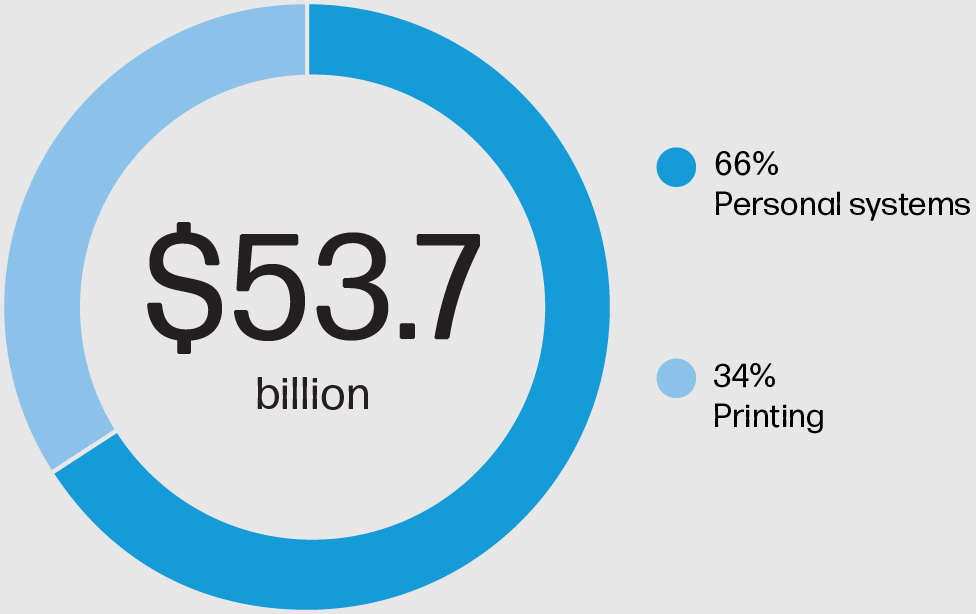














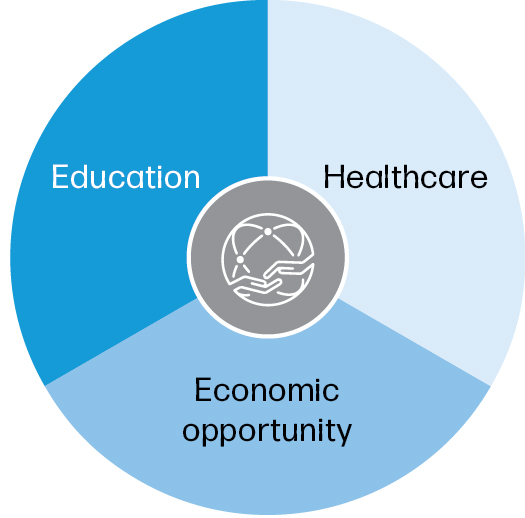




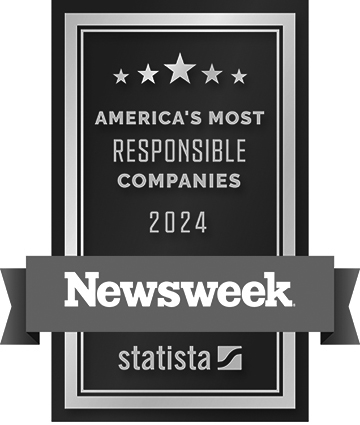




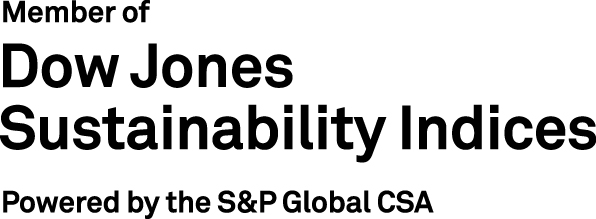



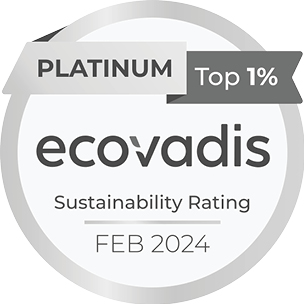

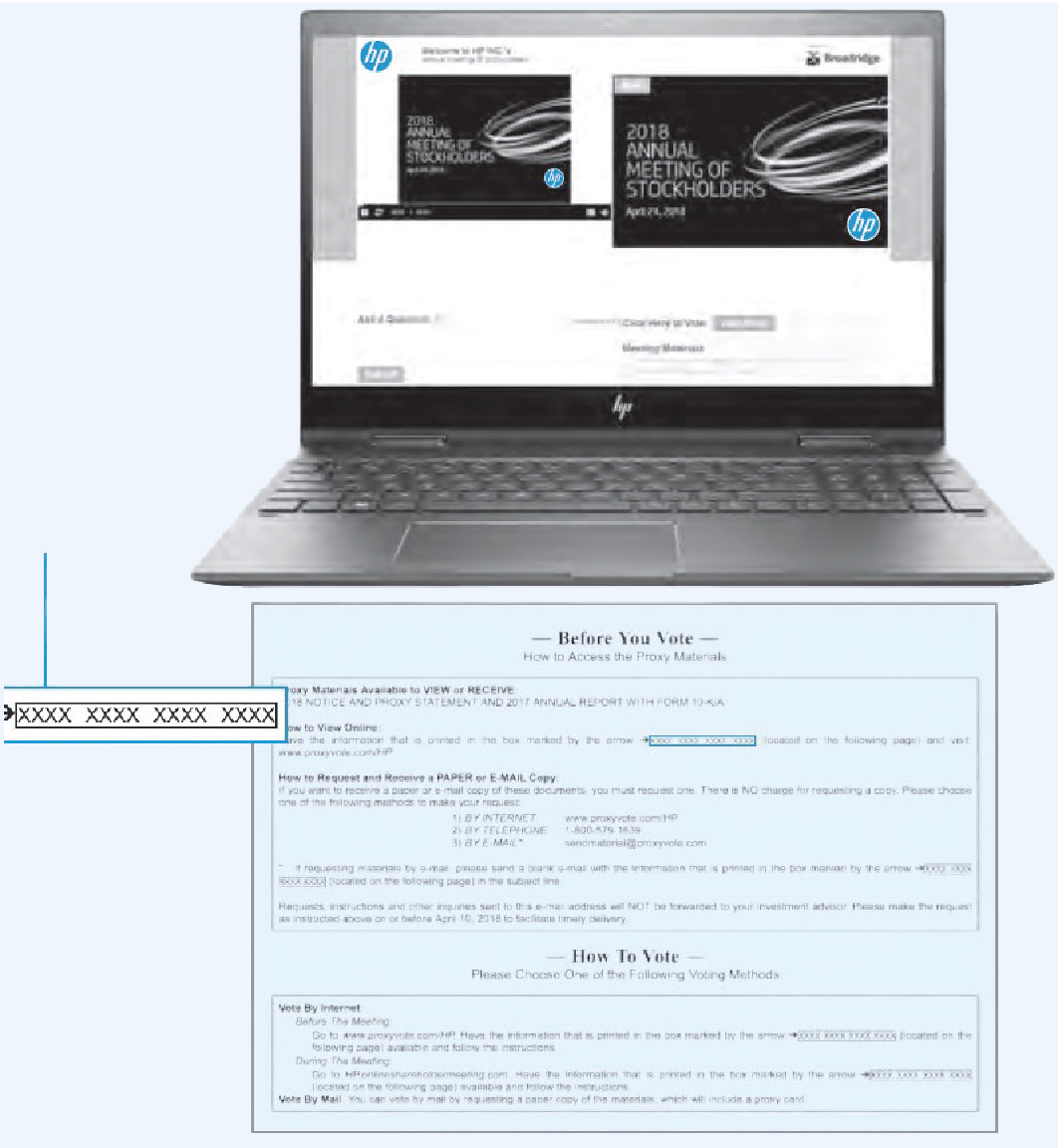















 Independent
Independent

























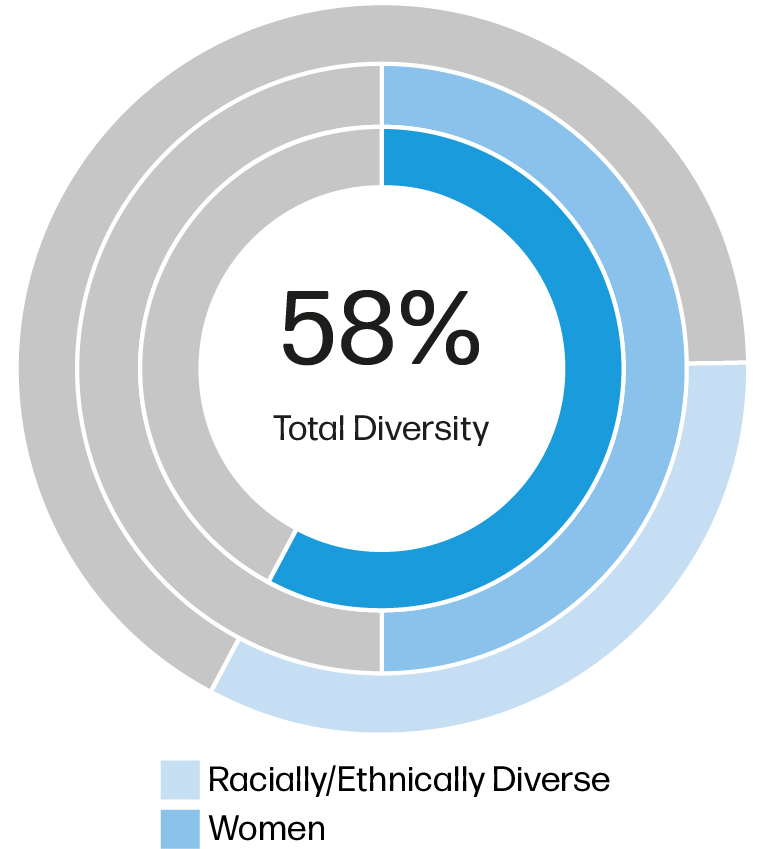















































































































































































































































































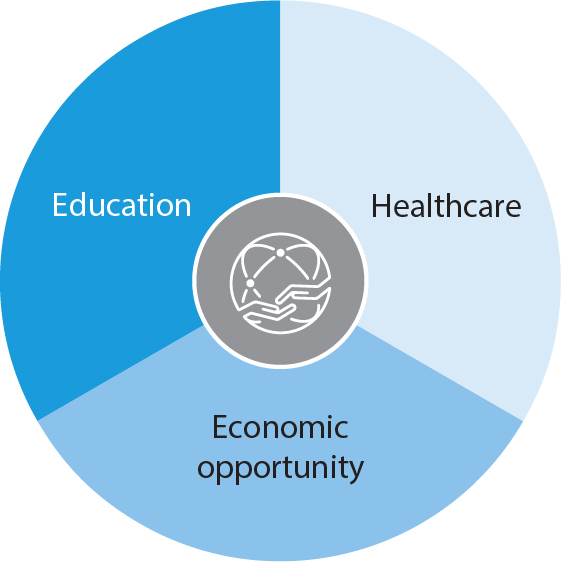

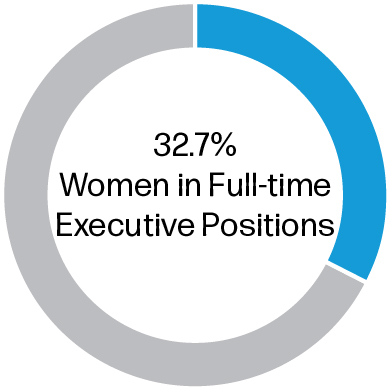
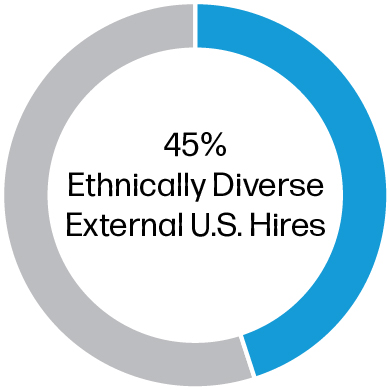







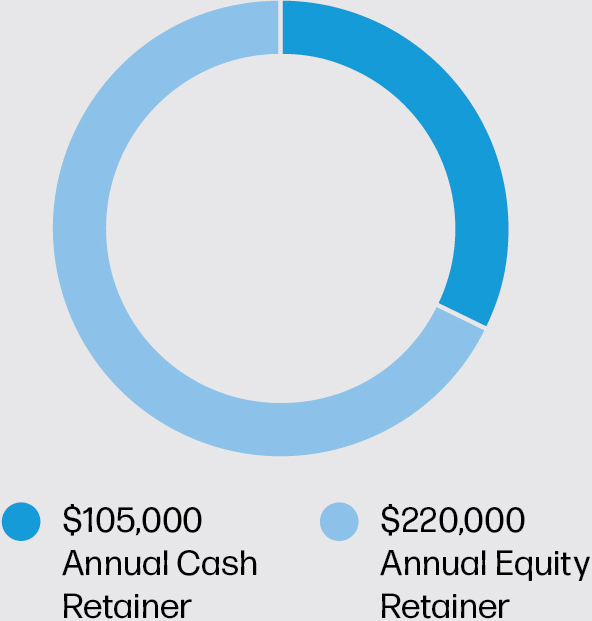












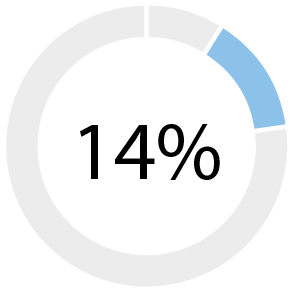

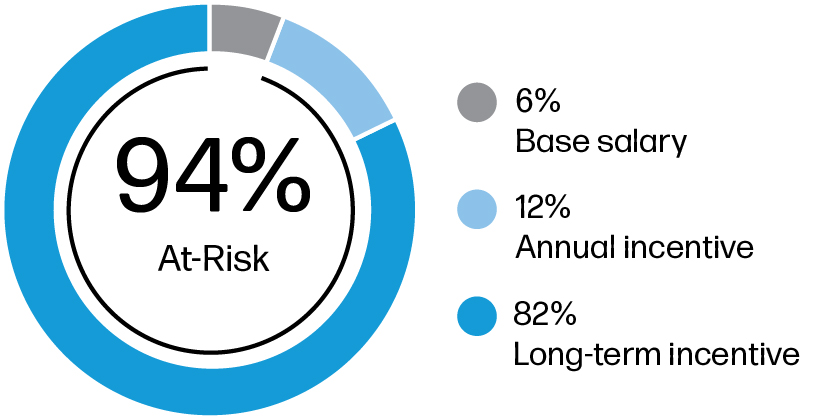
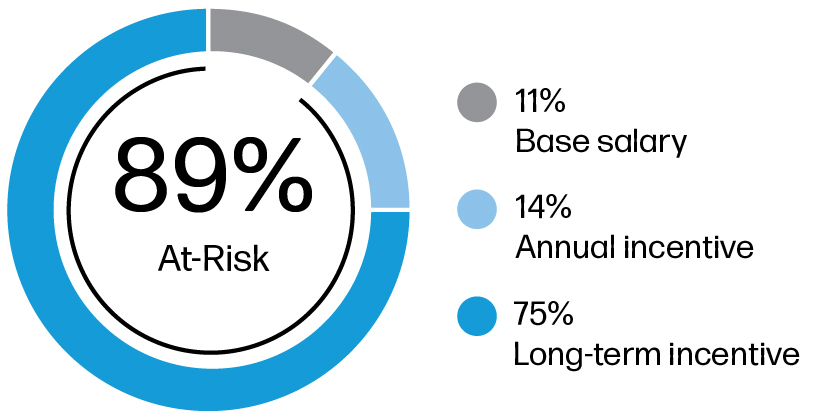



 The majority of target total direct compensation for executives is performance-based as well as equity-based to align executives’ rewards with sustained stockholder value creation.
The majority of target total direct compensation for executives is performance-based as well as equity-based to align executives’ rewards with sustained stockholder value creation.  Total direct compensation is set within a competitive range of our peer group to ensure that it is appropriate and is aligned with the level of position, experience, skills and performance of the executive.
Total direct compensation is set within a competitive range of our peer group to ensure that it is appropriate and is aligned with the level of position, experience, skills and performance of the executive.  Actual realized total direct compensation and pay positioning are designed to fluctuate with, and be commensurate with, actual annual and long-term performance, recognizing company-wide and individual results.
Actual realized total direct compensation and pay positioning are designed to fluctuate with, and be commensurate with, actual annual and long-term performance, recognizing company-wide and individual results.  Incentive awards are heavily dependent upon our stock performance and are measured against objective financial metrics that we believe link either directly or indirectly to the creation of value for our stockholders. In addition, 25% of our target annual incentives are contingent upon the achievement of qualitative objectives that we believe will contribute to our long-term success, including Growth, People and Sustainable Impact.
Incentive awards are heavily dependent upon our stock performance and are measured against objective financial metrics that we believe link either directly or indirectly to the creation of value for our stockholders. In addition, 25% of our target annual incentives are contingent upon the achievement of qualitative objectives that we believe will contribute to our long-term success, including Growth, People and Sustainable Impact.  We balance cash flow, revenue and profit objectives, as well as short- and long-term objectives to reward for overall performance that does not over-emphasize a singular focus on a particular metric or time period. Also, we have payout governors on key financial metric outcomes designed to avoid significantly overachieving based on one metric without taking into consideration our performance on other plan metrics (as explained in more detail starting on page 55).
We balance cash flow, revenue and profit objectives, as well as short- and long-term objectives to reward for overall performance that does not over-emphasize a singular focus on a particular metric or time period. Also, we have payout governors on key financial metric outcomes designed to avoid significantly overachieving based on one metric without taking into consideration our performance on other plan metrics (as explained in more detail starting on page 55).  A significant portion of our long-term incentives are delivered in the form of performance-contingent stock options, referred to as “PCSOs”, which vest only if sustained stock price appreciation is achieved, and performance-adjusted restricted stock units, referred to as “PARSUs”, which vest upon the achievement of EPS objectives and which can be modified by relative total shareholder return (“TSR”) performance.
A significant portion of our long-term incentives are delivered in the form of performance-contingent stock options, referred to as “PCSOs”, which vest only if sustained stock price appreciation is achieved, and performance-adjusted restricted stock units, referred to as “PARSUs”, which vest upon the achievement of EPS objectives and which can be modified by relative total shareholder return (“TSR”) performance.  For fiscal 2023, the payouts under annual incentive awards and under PARSUs are capped at 200% of bonus target and 3x target shares, respectively.
For fiscal 2023, the payouts under annual incentive awards and under PARSUs are capped at 200% of bonus target and 3x target shares, respectively.  We validate the pay-for-performance relationship on an annual basis and our HRC Committee reviews and approves performance goals under our incentive plans.
We validate the pay-for-performance relationship on an annual basis and our HRC Committee reviews and approves performance goals under our incentive plans. The compensation of objectively identified peer companies based on industry and size criteria is considered to ensure that pay levels and program design for the NEOs are appropriate and competitive.
The compensation of objectively identified peer companies based on industry and size criteria is considered to ensure that pay levels and program design for the NEOs are appropriate and competitive. We conduct an ongoing, proactive stockholder outreach program throughout the year and use that input to inform our program decisions and pay practices.
We conduct an ongoing, proactive stockholder outreach program throughout the year and use that input to inform our program decisions and pay practices.  We disclose our corporate performance goals and achievements relative to these goals.
We disclose our corporate performance goals and achievements relative to these goals.  We do not utilize fixed-term executive employment contracts for senior executives.
We do not utilize fixed-term executive employment contracts for senior executives.  We devote significant time to management succession planning and leadership development efforts.
We devote significant time to management succession planning and leadership development efforts.  We maintain a consistent market-aligned severance policy for executives and a conservative change in control policy which requires a double trigger for execution.
We maintain a consistent market-aligned severance policy for executives and a conservative change in control policy which requires a double trigger for execution.  The HRC Committee engages an independent compensation consultant.
The HRC Committee engages an independent compensation consultant.  We have clawback policies that enable the Board to recoup compensation in the event of a financial restatement or misconduct, which mitigates compensation-related risk and complies with applicable SEC rules and NYSE listing standards. Details are provided in the “Policies for Recoupment of Compensation” section on page 64.
We have clawback policies that enable the Board to recoup compensation in the event of a financial restatement or misconduct, which mitigates compensation-related risk and complies with applicable SEC rules and NYSE listing standards. Details are provided in the “Policies for Recoupment of Compensation” section on page 64.  We maintain strong stock ownership guidelines for executive officers and non-employee Directors.
We maintain strong stock ownership guidelines for executive officers and non-employee Directors.  We prohibit all employees, including our executive officers, and also non-employee Directors, from engaging in any form of hedging transaction involving HP securities, holding HP securities in margin accounts and pledging stock as collateral for loans in a manner that could create compensation-related risk for the Company.
We prohibit all employees, including our executive officers, and also non-employee Directors, from engaging in any form of hedging transaction involving HP securities, holding HP securities in margin accounts and pledging stock as collateral for loans in a manner that could create compensation-related risk for the Company.  We do not provide excessive perquisites to our executive officers.
We do not provide excessive perquisites to our executive officers.  We do not allow our executives to participate in the determination of their own compensation.
We do not allow our executives to participate in the determination of their own compensation.  We do not provide 280G tax gross ups in the event of a change in control.
We do not provide 280G tax gross ups in the event of a change in control. We do not reprice underwater stock options without prior stockholder approval.
We do not reprice underwater stock options without prior stockholder approval.
